5 of the best hiking routes in Spain: find magic on the trail
Sep 27, 2022 • 5 min read
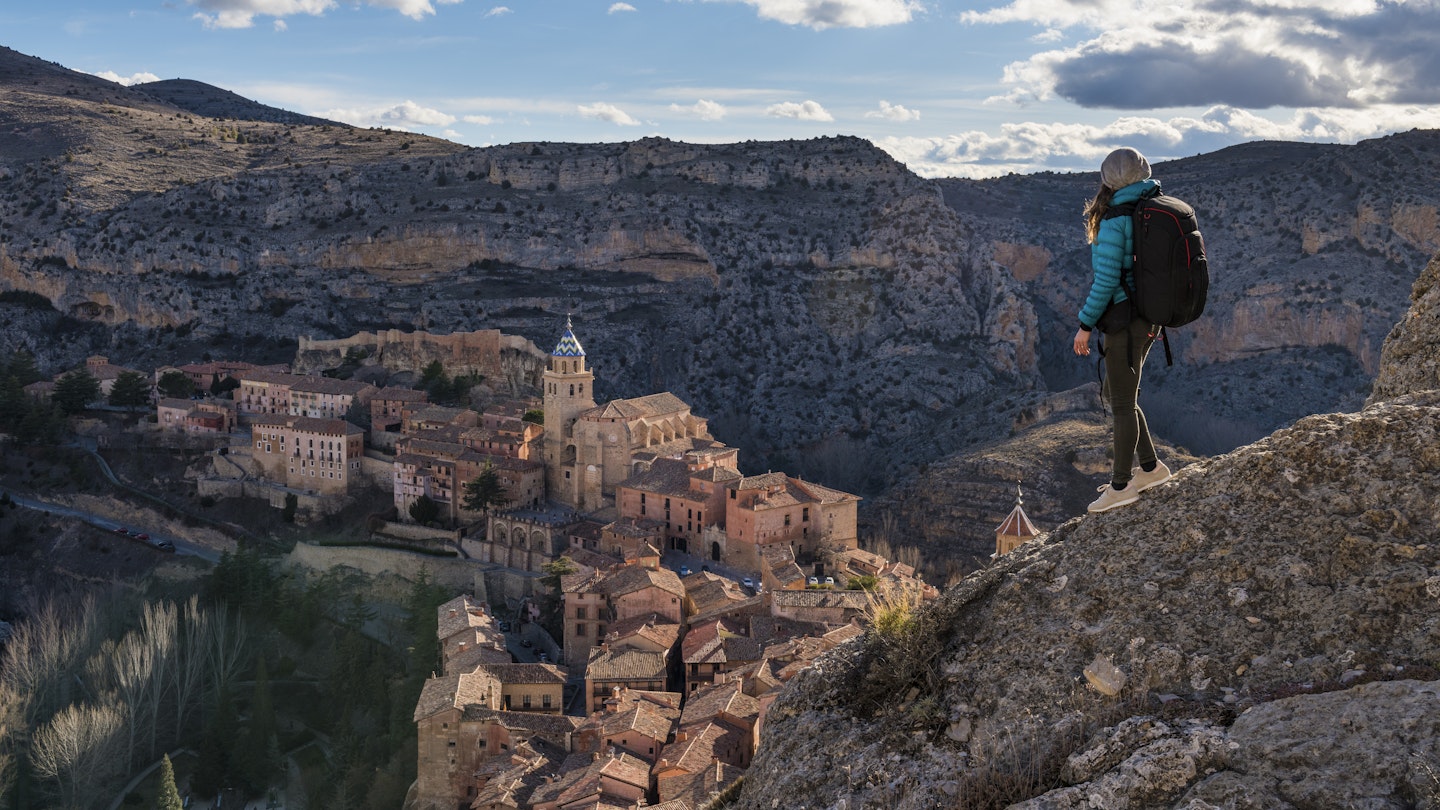
Here are some of the very best hiking routes in Spain © Andrea Comi / Getty Images
Spain is sculpted by extensive mountain ranges surrounding a high inland plateau and has nearly 6000km (3728 miles) of coastline. This extraordinary geographic interplay means that hikers can enjoy staggering natural tableaus along their routes, featuring rugged cliff edges, granite rock formations, snowcapped mountains, rushing rivers, glacial lakes, deep canyons and turquoise-colored waters fringed by white sand beaches .
Spain’s rich cultural heritage also means that hikers are treated to ancient ruins, historical towns, old churches and even random castles along the way. Here is a rundown of emblematic hiking routes that show off the incredibly diverse beauty of this Iberian destination.
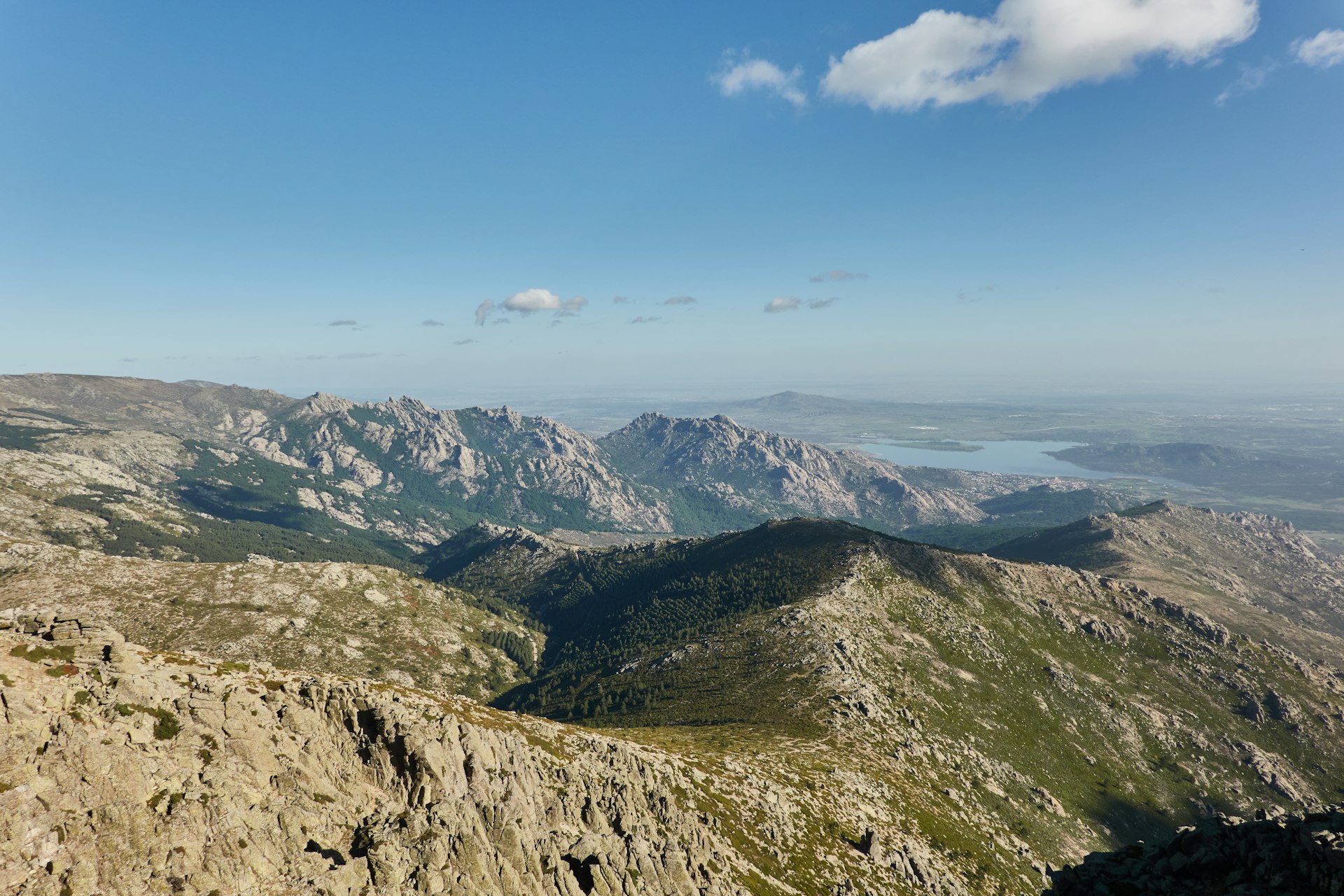

Best hike for viewing glacial lakes
14km (8.7 miles), 4 hours, intermediate
Just about an hour’s drive from Madrid is the Sierra de Guadarrama mountain range, which forms the spectacular backdrop of the Spanish capital’s most popular hiking routes . One of the most well-loved trails is the Peñalara circular route, which is accessed via the Puerto de Cotos pass in the mountain town of Rascafría.
This intermediate-level trek will take you to the peak of Peñalara, Madrid’s highest summit at 2428m (7966ft), and will slowly reveal its wondrous natural landmarks — amphitheater-like valleys and glacial lakes, formed by millions of years of glacial erosion. Laguna Grande (Big Lagoon), Lagunas de los Claveles (Lagoons of the Carnations) and Laguna Chica (Small Lagoon) are the trail’s three prominent lakes, which make up part of the Sierra de Guadarrama National Park.
El Caminito del Rey
Best steep trail with archaeological highlights.
8km (1.9 miles), 2.5 hours, easy
Translated to “The King’s Little Path” after King Alfonso XIII’s visit in 1921, this top tourist attraction in the southern Spanish city of Málaga is not for the vertigo-challenged. The trek takes you on a long, wooden bridge affixed on the jagged steep walls of the Gaitanes Gorge. Historically, this was used as a service route for the upkeep of the El Chorro hydroelectric plant and was once dubbed “the scariest walk in the world.” Thankfully, recent renovations have reinforced the walkway with protective steel fencing.
This is an easy, non-ascending trek that nevertheless rewards with spellbinding views of the emerald green waters of the Guadalhorce River below. Along the way, you’ll encounter archeological marvels like Neolithic caves dating back 7000 years and Jurassic-era fossils embedded on the gorge walls. Its official website offers general visit tickets for hikers who wish to do the trek independently, but for an extra cost, you could avail of a guide who could share about the Caminito’s unique history and geological story.
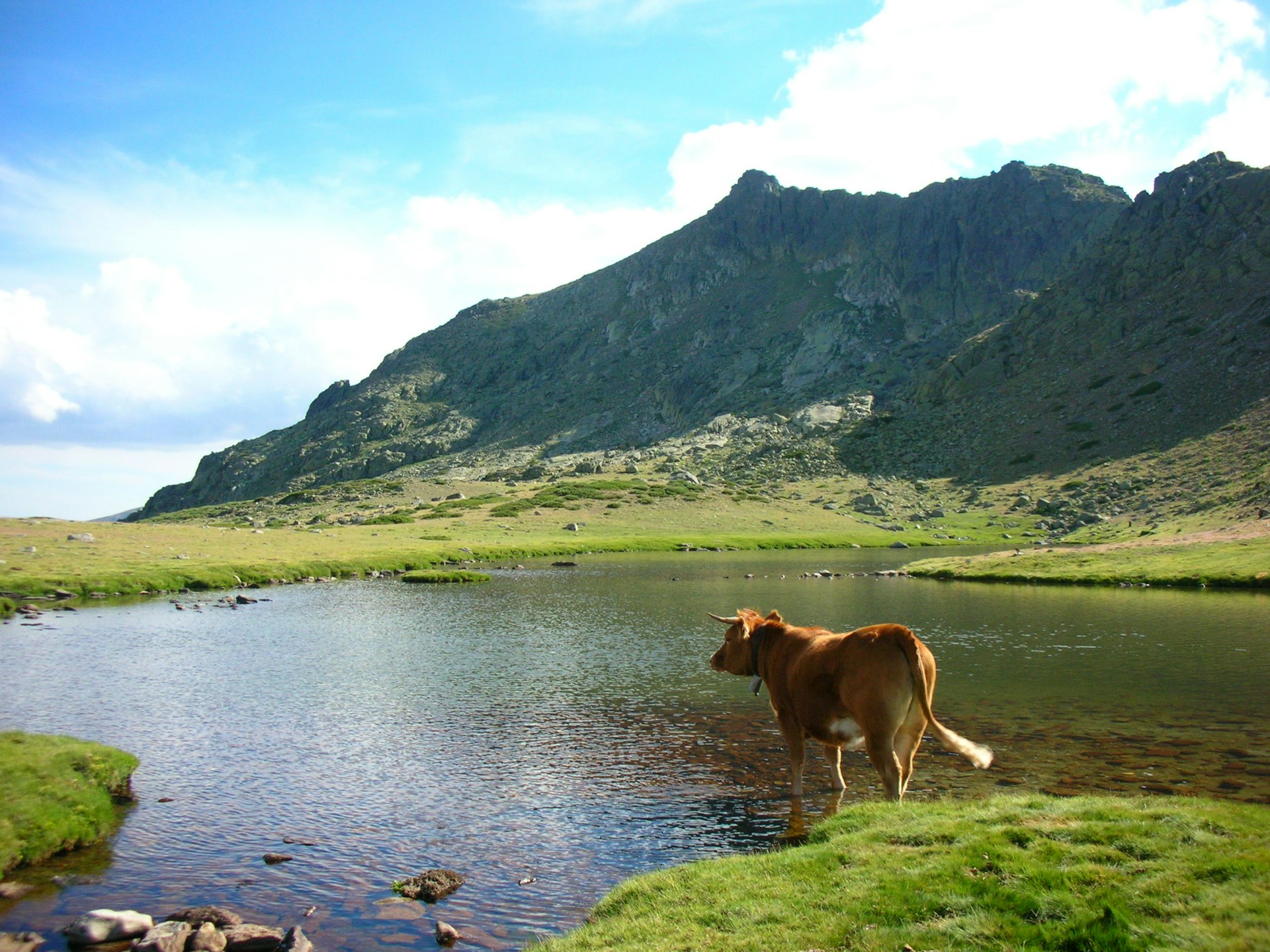
Best hike for rugged mountains
12km (7.5 miles), 3 hours, intermediate
The La Pedriza trail starts right at the town of Manzanares El Real, about 50km (31 miles) from central Madrid, situated close to the Manzanares upper river basin and on the southern edge of the Sierra de Guadarrama. This is part of a Unesco Biosphere Reserve that is characterized by rugged granite formations grazed by gentle streams and churning waterfalls. The most famous pool, Charca Verde (“Green Pool”) is so named for its deep emerald hue. Rising over 1700m (5577ft), the peak of El Yelmo ("The Helmet") is La Pedriza’s highest summit and dominant landmark. While you're here, you should take time to visit the Castillo de los Mendoza , a 15th-century stone castle.
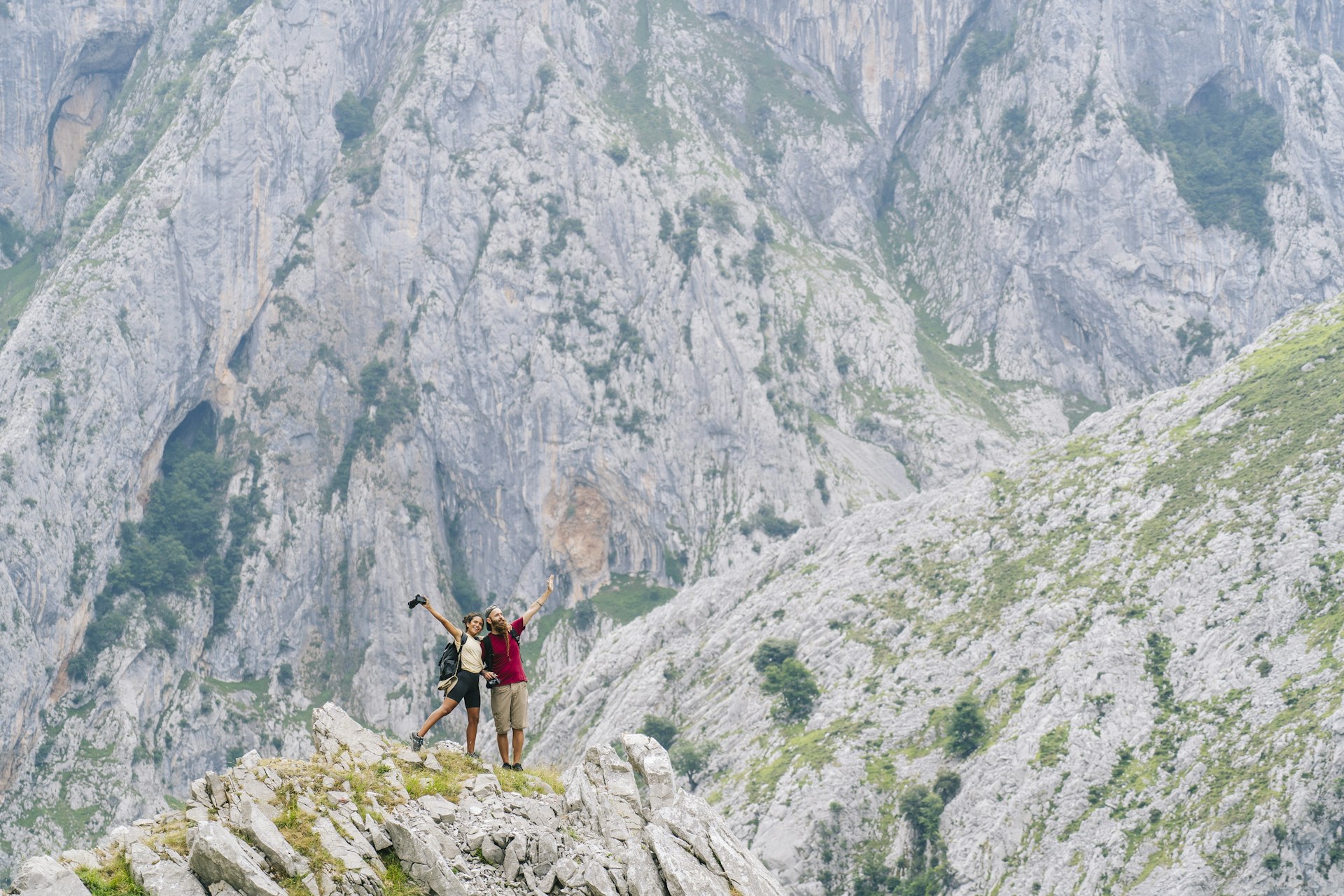
Cares Trail (Picos de Europa National Park)
Best hike for dramatic scenery.
21.9 km, 6.5 hours, intermediate
Towering high above northern Spain are the iconic, cloud-grazing Picos de Europa (“Peaks of Europe”) that encompass Asturias, Cantabria and Castilla y León, offering some of Europe’s most breathtaking mountain views. These limestone summits form the dramatic setting of the Cares Trail, the most popular and emblematic route in the Picos de Europa National Park.
Also known as La Garganta Divina (“The Divine Gorge”), the Cares Trail is a moderate route that was initially carved into the limestone in 1916 to make way for workers maintaining a water canal that powered the Camarmeña Power Plant in Asturias. Presently, this route is considered to be one of the most beautiful in Spain, as you zigzag along plunging ravines (again, this not for people afraid of heights), caged bridges and walkways connecting the jagged mountain faces, with spectacular views of the Cares River below and mountains rising 2000m (6562ft). Even non-advanced hikers can enjoy this leisurely experience if they start in the quaint mountain village of Caín de Valdeón in the province of León, which eventually progresses downhill.
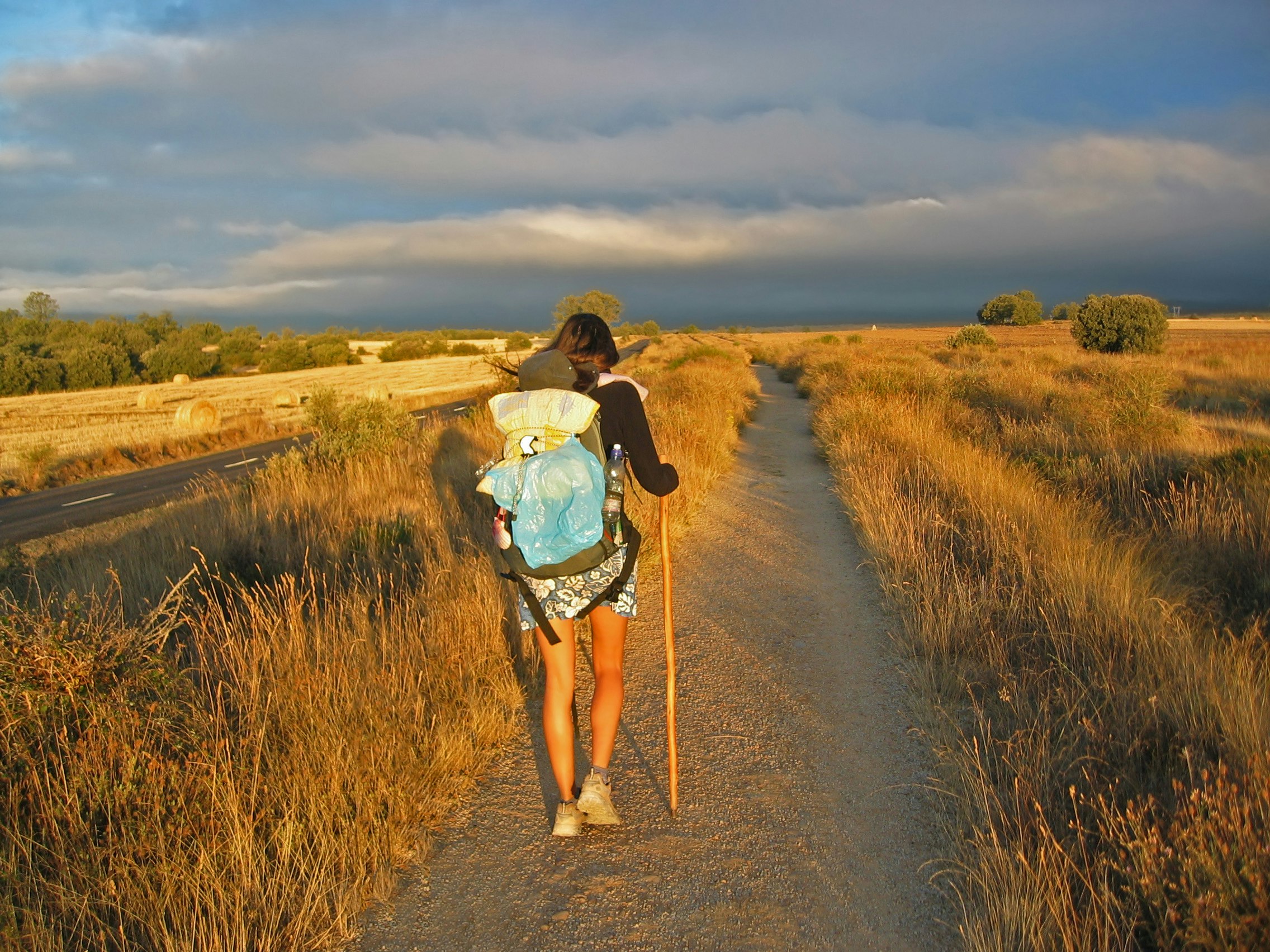
Camino de Santiago (French Way)
Best historic hike to retrace pilgrims’ footsteps.
100km (62 miles), 7 days, intermediate to difficult
Follow in the footsteps of 8th-century pilgrims who have walked this 500-mile stretch of northern Spain . For ten centuries, this tradition has attracted not only spiritual trekkers but nature lovers and sports enthusiasts of all levels because of its majestic scenery. The route takes you from the Pyrenees mountains straddling the border between Spain and France, across rugged coastlines, lush forests, traditional villages and vineyards, and finally to the Basilica of Santiago de Compostela in the capital of Galicia , where Saint James the Apostle is believed to be buried.
Traditionally, the Camino de Santiago starts in the town of Saint Jean Pied de Port in the Pyrenees in southwest France , which is the most popular route, but many pilgrims also choose to begin in the Galician town of Sarria to be able to walk the final 100km (62 miles) stretch of the French Way and get their pilgrim passports stamped. This multiple-day trail will take you through the small towns of Portomarín, Melide, and Arzúa, across the Miño River — Galicia’s longest river — picturesque woods and Romanesque churches. After accomplishing a day’s hike, it is a longstanding tradition to mingle with fellow pilgrims, most likely while drinking albariño (traditional Galician wine) before getting a good night’s rest.
This article was first published Sep 2, 2021 and updated Sep 27, 2022.
Explore related stories
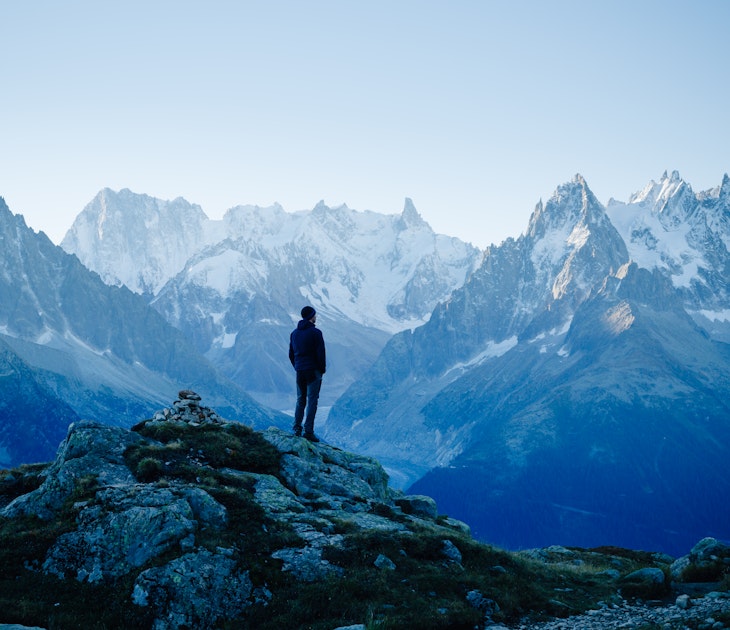
May 20, 2023 • 8 min read
From soaring alpine peaks to billowing lavender fields and azure rivers, France has hikes to match every ability. These are the best.

Nov 14, 2022 • 10 min read
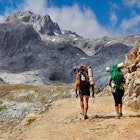
Jul 17, 2022 • 6 min read
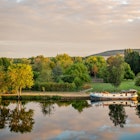
Jun 29, 2022 • 5 min read

May 24, 2024 • 9 min read

May 23, 2024 • 7 min read

May 20, 2024 • 5 min read

Apr 19, 2024 • 10 min read

Apr 19, 2024 • 8 min read

Apr 16, 2024 • 7 min read

The Ultimate Guide To Hiking In Spain In 2024
- Last Updated: February 5, 2024
If you’re interested in hiking in Spain, our ultimate trekking guide has everything you need to know to enjoy your time!
When you think of Spain you probably think of beaches, Barcelona Football Club, and awesome food. But there are so many more amazing reasons to visit Spain, including hiking.
Hiking in Spain is quickly becoming a popular activity in Europe and rightly so! Spain has a wide variety of landscapes and trails, making it a unique and beautiful place to explore.
From coastal walks along the Mediterranean to volcano treks in the Canary Islands, to high-altitude hikes in the Pyrenees Mountains, there are so many cool places to hike in Spain.
Most of the trails in Spain are listed as easy to moderate, so there are suitable trails for people of all fitness levels. Also, you’ll most likely enjoy pleasant weather year-round.
Walking holidays in Spain are becoming more popular among Europeans, and even among those coming to the continent for a holiday.
This ultimate guide to hiking and trekking in Spain is designed to inspire and educate readers about the trails and tips you may need for your journey. All that’s left is investing in some good hiking shoes and booking a flight to Spain!
Table of Contents
The Best Time To Go Hiking In Spain
Ruta del cares, chillar river, el caminito del rey, barceloneta beach, masca gorge trek, igueste de san andres to chamorga, el teide caldera, lago de la ercina, breche de roland, cap de creus national park loop, san adrian tunnel, gr221 drystone route, la senda del oso, route of the monasteries of valencia, sierra de aitana, beas de granada to granada, via verde de la sierra, camino de santiago, tips to know before hiking in spain, accommodation in spain, hiking in spain packing list, the ultimate guide to hiking in spain.
This travel guide will cover all the best hiking trails in Spain so you have some idea of which trails you’d like to tackle.
From hiking the tallest mountain in Spain to trekking past volcanic lakes and odd rock formations to strolling along other hiking trails through the countryside and monasteries, there are so many options for the best hikes in Spain.
This article will also include tips about when to go hiking, what to pack, and other useful information.
Always respect the land, local culture, and trails while hiking. Check out our guide to Sustainable Tourism for 2022 !
Spain is one of those countries that literally doesn’t have a bad season, so it just comes down to how many people you want to be hiking next to.
June to September are the warmest months, so you’ll have better weather and more crowds. The higher altitude hikes in the mountains will be pleasant, and there will b less snow. Hiking along the coast can be quite hot in summer, but you’ll get cool ocean breezes and the chance to go for a dip after hiking.
The summer months also tend to be slightly more humid so it’s better to hit the trails earlier in the morning and finish by lunch to avoid losing all of your fluids via sweat. Always pack plenty of water for the best hikes in Spain, regardless of the weather forecast.
March to April is the best time to head to the high mountains like the Sierra Nevada or the Pyrenees. Wildflower season begins and the spring season means cooler temperatures which are nice for longer multi-day treks. Spring also sees fewer crowds than summer.
Winter in Spain is from December to February. Snow is rare in most of Spain, with the exception of the high mountains. The weather will be pretty cold and snowy at high altitudes in winter, so if you plan on hiking then just pack plenty of warm clothes and proper gear.
Spain has just so many options for hiking and the weather never gets too unfavorable. So it just comes down to a matter of where and when you would like to visit.
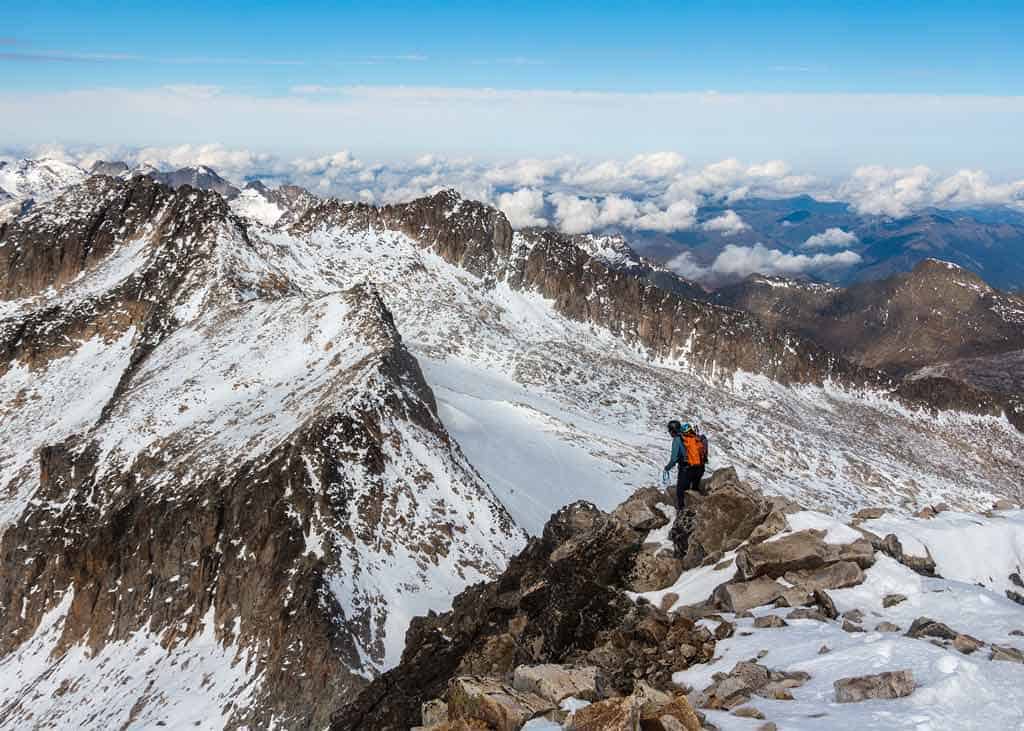
The Best Day Hikes in Spain
If you are looking for day hikes in Spain you’ll be spoilt for choice. There are so many different landscapes to check out, and the trails vary from easy to hard.
Here’s my list of the best hiking trails in Spain that can be done in one day. You’ll find volcano hikes, ancient pilgrim routes, beach trails, and much more.
- Distance – 24 kilometres
- Start/ Finish – Poncebos to Cain de Valdeon and back
- Time – 8 hours
- Difficulty – Moderate
Ruta del Cares is often described as one of the best hikes in the Picos de Europa (Picos translates to peaks). You get to trek through a breathtaking mountain range of limestone peaks along the Cares River.
While trekking through the mountains, you will see dramatic gorges, stone huts and ruins, and plenty of animals. Mountain goats often make an appearance on this trail.
Some parts of the trail are steep, but overall it is fairly easy. The first part of the trail is rocky and rugged, but as you near the Cares River the scenery becomes more lush and green. The views are jaw-dropping, and many would call Ruta Del Cares the best hike in Spain.
- Distance – Various
- Start/ Finish – Municipal Sports Centre at Nerja
- Time – 1 day
- Difficulty – Easy
For this day hike, we head to Southern Spain for an adventure near the Chillar River. There’s a pretty high chance you are going to get wet shoes no matter how waterproof they are during this hike.
Towards the end of the river, there are a few narrow sections that eventually lead to stunning views of the Chillar Valley. Trekking in Spain doesn’t get much cooler than the Chillar River!
The suggested time for hiking along the Chillar River is one day, however you can shorten or lengthen your trip accordingly. If you decide to pitch your tent along the Chillar River, make sure it is well above the water line in case there are any unexpected river rises.
- Distance – 4 kilometres
- Start/ Finish – Gaitanes Gorge
- Time – 1 hour
El Caminito Del Rey was once known as one of the most dangerous hiking trails in the world, but don’t let this scare you too much!
It’s also one of the most popular hikes in Spain, and the trail was closed for many years of renovations. Nowadays it is perfectly safe and secure, but it’s definitely not recommended for those who are afraid of heights.
The entire trail consists of a walkway through a rugged gorge. Part of it is pinned against the wall of the gorge, and part of it is suspended about 100 metres above the floor of the valley. It was originally built to give access to workers who would need to manage and work on a hydroelectric power plant.
Caminito Del Rey may still be called one of Spain’s most dangerous hikes, but it is an incredible adventure for daredevils who love to live life on the edge (literally).
You can also hire a local guide on Get Your Guide for this famous trail. A guided hike is a great way to learn about the history and construction of the trail.
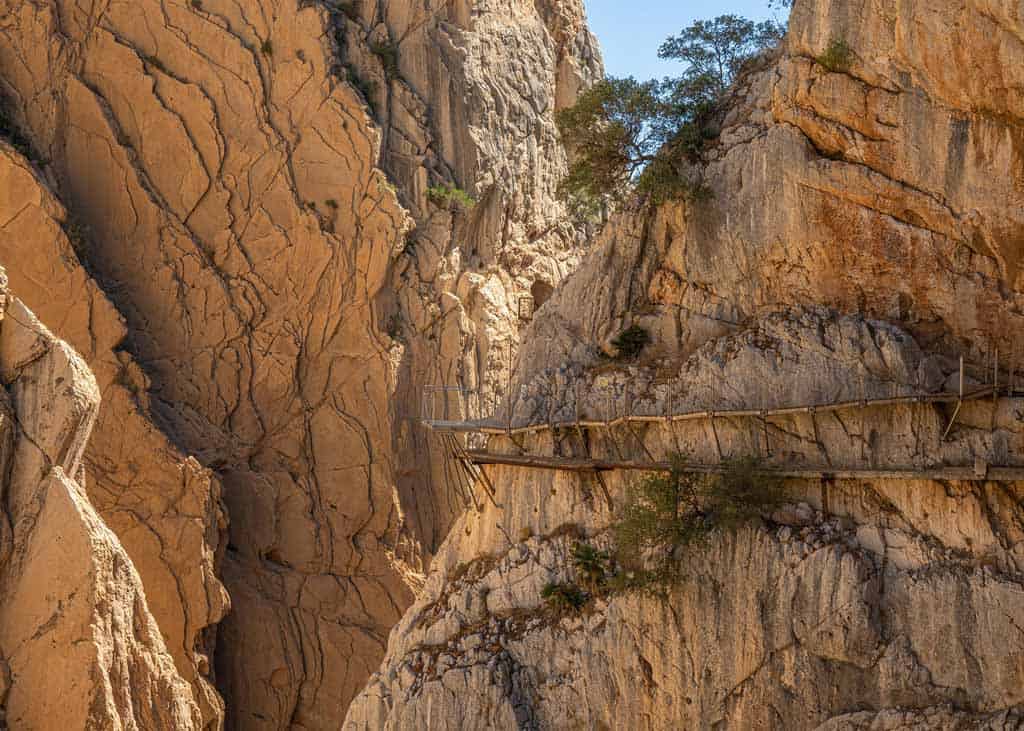
- Distance – 1.1 kilometres
- Start/ Finish – Optional start and finish points
Beach hiking is a thing? Barcelona is known for its stunning beaches so if you have a bit of time to chill before heading out to the mountains of Spain, head down to Barceloneta Beach for a short shoes-off walk.
Barceloneta Beach used to be the old fisherman’s quarter, but nowadays it is a popular tourist spot. It is a long stretch of sand that is fun for having a beach picnic or going for a swim.
Anyone looking for an easy and relaxing walk in Spain will enjoy a sunset stroll along the soft sand of Barcelona’s best beach.
- Distance – 8 kilometres
- Start/ Finish – Masca to Bay of Masca
- Time – 3 hours
Spain is home to some stunning islands that have their own mountain ranges and walking trails. The Masca Gorge Trek is one of the most beautiful hikes in the Canary Islands which are found off the northwest coast of Africa.
Situated on Santa Cruz de Tenerife which is the largest of the Canary Islands, Masca Gorge Trek is a relatively easy 8 kilometre hike through an alien-like world.
What’s quite amazing about this trek is where you finish it. After rock-hopping through a divine gorge for a good 3 hours, you will find yourself at the Bay of Masca which is stunning.
Getting back to Masca or Los Gigantes can be done by boat which you will need to organise before heading out on this beautiful Spanish trek.
- Distance – 13 kilometres
- Start/ Finish – Iguesta de San Andres to Chamorga
- Time – 4 hours
Located north of the tourist hot spots on Tenerife in the Canary Islands, the Igueste de San Andreas trek is the perfect opportunity to get out and explore the more mountainous side of this beautiful landscape.
The trail begins in the quiet village of Iguesta de San Andres and takes you through the amazing scenery of the Anaga Peninsula. The trek ends in Chamorga which is a rather small town nestled into the surrounding Anaga mountain range.
Trekking in Spain doesn’t get much more beautiful than the Igueste de San Andreas to Chamorga.
- Distance – 10.5 kilometres
- Start/ Finish – Parador Hotel
- Time – 2 to 3 hours
- Difficulty – Easy to Moderate
Another one of the best hikes in Spain is El Teide Caldera, a volcano hike in Teide National Park in Tenerife, Canary Islands.
The El Teide Caldera is the highest mountain in Spain and the highest point in the Atlantic, which has been placed as a UNESCO World Heritage site. The landscapes along the El Teide are just as strange as they are beautiful, with a dazzling display of multicolored rocks and the unique shapes of old lava fields.
El Teide can be quite spectacular to climb, but be prepared for pretty gnarly conditions at the summit as weather can change almost instantly due to its altitude.
This would have to be one of the most adventurous hikes you can do in Spain hands down.
Other fun things to do in Teide National Park after your hike include a dolphin or whale watching tour , a stargazing experience in the park, or a quad bike adventure tour .
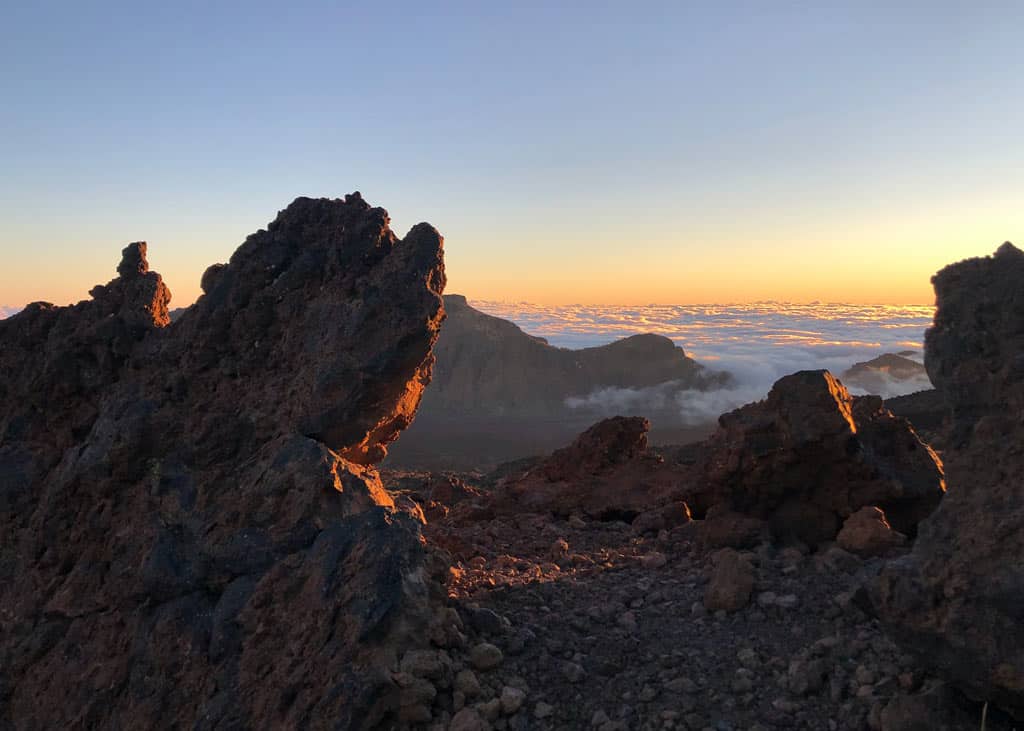
- Distance – 7.5 kilometres
- Start/ Finish – Lago de la Ercina
The Lago de la Ercina hike is a moderate 3-hour hike through a beautiful, untouched alpine zone. You will see gorgeous fields of wildflowers and rocky stretches of land with patches of beech trees at the lower altitudes.
If you prefer a longer hike, there is an option to do so via the Refugio Vega de Ario which overlooks the mountains and lakes below.
Lago de la Ercina is a highland lake in the Cantabrian Mountains, near Asturias, Spain.
- Distance – 5.5 kilometres
- Start/ Finish – Col de Tentes
- Time – 2.5 hours
- Difficulty – Moderate to Hard
The Pyrenees Mountains act as a natural border between Spain and France. Right in between the mountains is the Breche de Roland, a 5.5 kilometre trail that is one of the best hikes in Spain.
The famous trail follows around a limestone ridge around a natural gap in the earth. Local legens state that Roland, the nephew of Charlemagne, threw his sword down which created the gap in the cliffs.
Anything you see in The Pyrenees Mountains is bound to be amazing, especially that of the Cirque de Gavarnie. This is a massive amphitheatre of mountains that are all over 3,000 metres in height. It’s an absolutely stunning place.
- Distance – 16 kilometres
- Start/ Finish – Cadaques in Catalonia
- Time – 7.5 hours
- Difficulty – Hard
The Cap de Creus Peninsula and National Park is a gorgeous area of eastern Spain, right next to the French border. For an amazing day of hiking, take on this circular route which starts and ends in the sleepy coastal town of Cadaques.
The hike begins next to the Salvador Dali Museum and House, which you can check out before you begin exploring nature.
From town, you’ll head through the national park towards Cap De Creus Lighthouse. Enjoy the rugged coastal views, and bring a bathing suit so you can go for a dip. This hike isn’t very steep, but it’s considered difficult because the path is quite rocky and you will have to do some scrambling.
Just make sure you have good shoes and be careful with your footing. Otherwise, it’s a serene place in Spain on the Costa Brava.
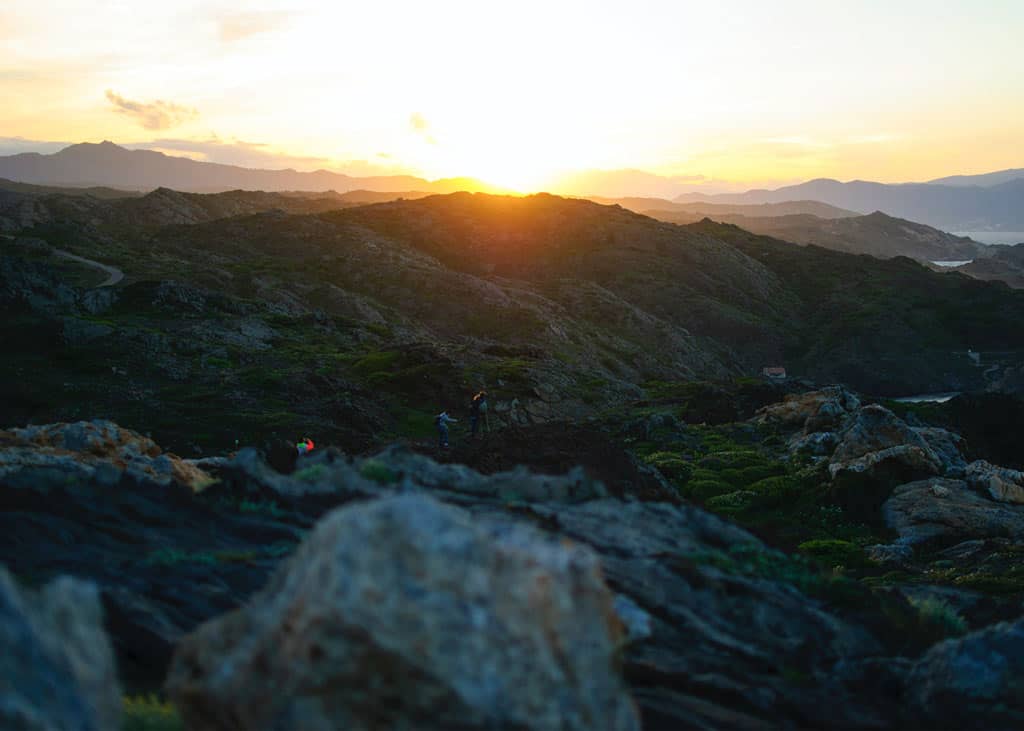
- Distance – 15 kilometres
- Start/ Finish – Zegama on the Gipuzkoa Province side to Zalduondo
San Adrian Tunnel is an intricate natural cave in the Aizkorri-Aratz Natural Park near Basque Country. This fascinating tunnel was formed through water erosion, and has a rich history as part of the pilgrimage network: the Way of Saint James.
The tunnel served as an important milestone during pilgrimage routes from Alava province to the Gipuzkoa province during thirteenth century disputes.
Within a section of San Adrian Tunnel, a small stone church offers breathtaking views of the plains of the Alava which provides a unique and special opportunity to capture on camera.
Looking for more epic hikes in Europe? Check out our article about Hiking the Monasteries of Meteora in Greece!
The Best Multi-day Trekking in Spain
Continuing on with our list of the best hikes in Spain, here are several trails that can last for multiple days.
These are more challenging hikes than the one-day hikes, simply because you have to take your accommodation into consideration. You can camp, or spend the night at any lodges that reside along the hiking routes.
You’ll have to trek with more gear, so make sure you have everything you need for your multi-day trek. We have a packing list at the end of this article to help you plan!
- Distance – 140 kilometres
- Start/ Finish – Port d’Andratx to Port de Pollenca
- Time – 8 days
This trek was designed to get people off the beaches of Mallorca and into the mountains to truly take in the wonders of this awesome area. Maybe you can go lay on the beach when you have completed this 140-kilometre-long walking trail. You will definitely deserve it!
Off the coast of Spain is the island of Mallorca (Majorca) which has spectacular beaches and mountains. The Drystone Route allows you to see all the best views in Mallorca, and it is easily one of the best hikes in Spain.
The Drystone Route begins near the village of Port d’Andratx and takes you through a combination of rough scrub and native pine forest until you arrive at the seaside port of Port de Pollenca. The Drystone Route is a great option for a walking holiday in Spain.
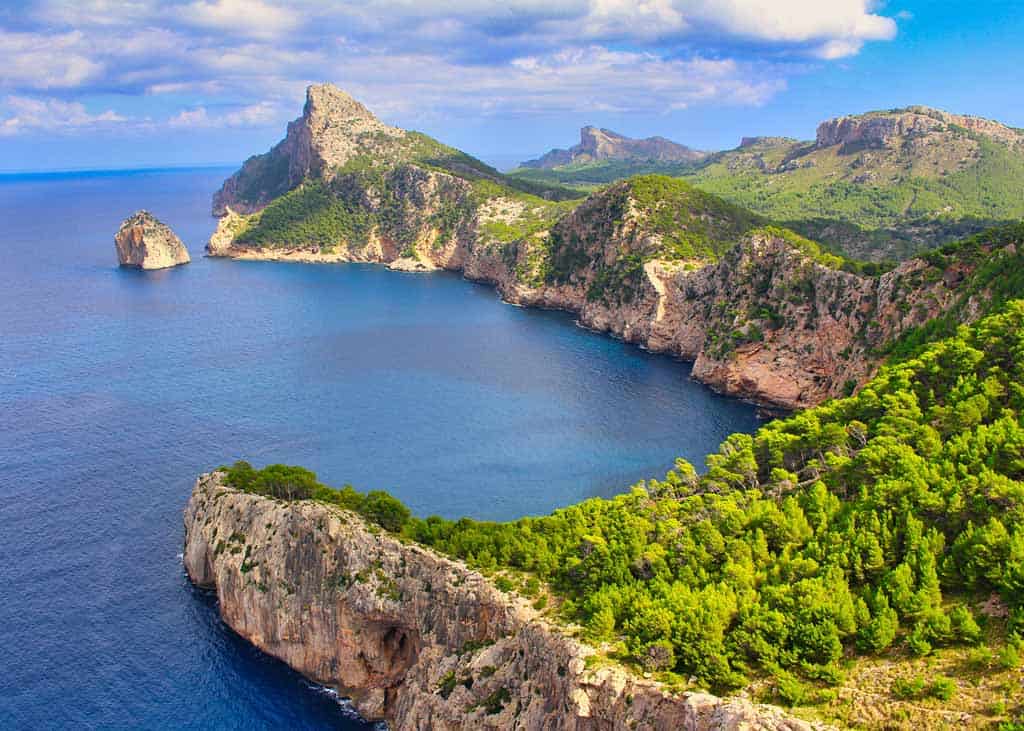
- Distance – 21 kilometres
- Start/ Finish – Tunon to Entrago (optional endpoint)
- Time – 2 days
La Senda Del Oso is an old rail line converted to a hiking trail in northwestern Spain, in the region of Asturias. Oso means “bear” in Spanish, so there is a small chance you may catch a glimpse of one on this trail.
This particular trail is mostly forested from the time you leave Tunon to the time you end at Entrago.
Most of the trail is very straightforward apart from a Y intersection that leads to two completely different places but either way you choose, you won’t be disappointed. The left route takes you through a series of bridges and tunnels, while the right route provides more stunning trails through forests that ‘may’ have a bear or two.
This 2-day trek is quite peaceful, and it’s an easy walk without many tourists.
- Distance – 90 kilometres
- Start/ Finish – Gandia to Alzira
- Time – 3 to 4 days
Famously used as a pilgrimage trail for Roman Catholics, the Route of the Monasteries is becoming more popular with those non-religious folk who just want to complete some of the best hikes in Spain.
Non-religious hikers are drawn to this trail for the breathtaking views of the Spanish countryside as you pass from monastery to monastery.
As for the monasteries themselves, this trail presents a unique opportunity to get an understanding of the architecture and Roman influence upon Spain.
The trail runs through many small towns and municipalities of central Spain, and you get to admire the natural beauty and learn about the cultural and religious significance of the monasteries along the way.
- Distance – 96.5 kilometres
- Start/ Finish – Benimantell to Sella
- Time – 4 days
Full of dramatic cliffs and spectacular views, Sierra de Aitana is another one of the best hikes in Spain. Full of limestone rock formations and groves of olive trees, this hike certainly makes it feel as if you are immersed in a true Mediterranean lifestyle.
This mountainous part of western Spain is idyllic and popular for rock climbing and trekking with 4 fantastic, not overly challenging peaks of the Sierra de Aitana.
These 4 peaks are quite unique and steep, and it is possible to tackle just one at a time as a day hike. But those looking for a really challenging hike can conquer all 4 peaks over the span of a few days.
- Start/ Finish – Beas de Granada to Granada
Beas de Granada provides hikers with amazing views of the Sierra Nevada’s snow-capped mountains. ‘Beas’ translates to ‘path’, and this path takes you to the historic and beautiful town of Granada which has one of the best backdrops in all of mainland Spain.
Getting to Granada will require a traverse of a relatively easy ridge with a few narrow spots to watch out for. Other than that this is one of the best hikes in Spain. At 16 kilometres long, you can do this hike in one day, or break it up into two days.
However you choose to do it, you can follow the ancient tracks of shepherds who walked this path daily while moving stock from one region to another. Beas de Granada is truly one of the best hikes in Spain.
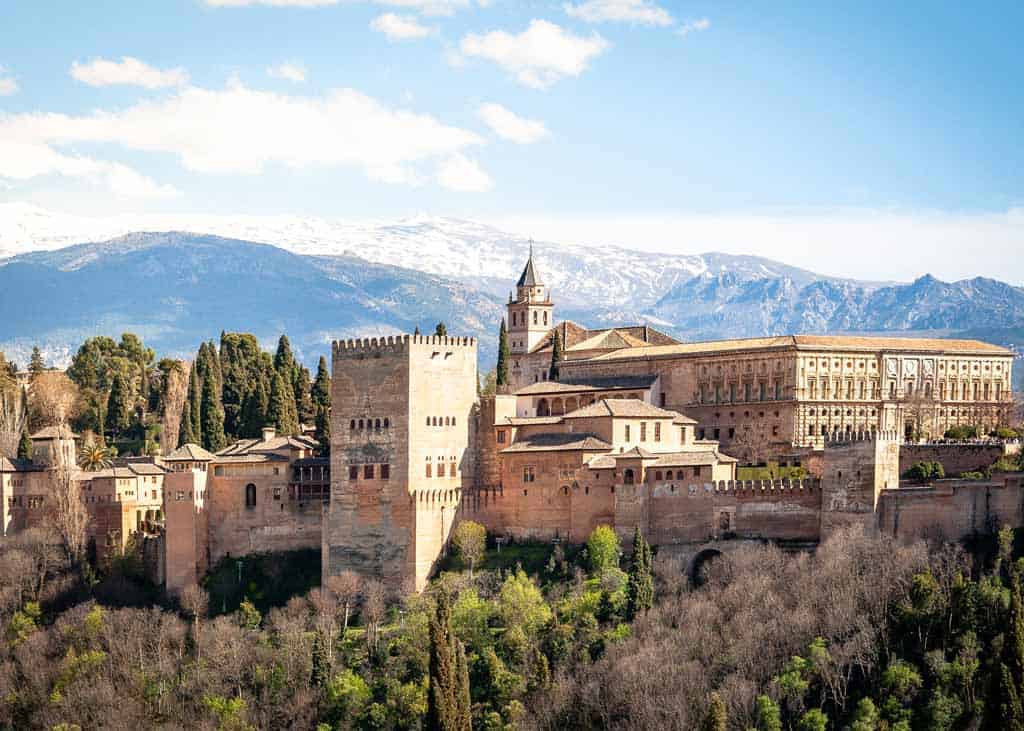
- Distance – 35 kilometres
- Start/ Finish – Puerto Serrano to Olvera
- Time – 2 to 3 days
A change of pace from the mountain and forest trails of Spain, the Via Verde de la Sierra is an easy multi-day trekking option.
The trail consists of compact earth and asphalt, so it’s not too challenging and it takes you to some pretty special places along the Via Verde del la Sierra.
What to expect? Most of the hiking along this trail will be pristine countryside, so expect to see fields of green backed by the Sierra Nevada. One place to look out for is the Rock of Zaframagon which is home to a rare species of vultures.
- Distance – 780 kilometres
- Start/ Finish – St. Jean-Pied-du-Port (France) to Santiago de Compostela
- Time – 1 month
- Difficulty – Easy to moderate
Camino de Santiago, also known as the Way of Saint James, is by far the longest trek you can do in Spain stretching over a massive 780 kilometres. It is also possibly the most famous trail in Spain, as travelers come from all over the world to complete this epic trek.
Camino de Santiago is known to most as the ‘pilgrim’s way’ which can be trekked all year around. Despite the length of the Camino, it is said to be fairly easy as it avoids places like the Sierra Nevada and the Pyrenees although some places are often quite hard on the feet.
If you are considering doing this hike you will need to allocate at least a month in order to complete it.
The trail finishes at Santiago de Compostela, where the apostle Saint James is supposedly buried. You can book a guided tour of the cathedral to learn more about its history and religious significance.

Hiking in Spain varies because you can hike along sandy coastal tracks, lush national parks, rugged volcanoes, or snowy mountains. From the Mediterranean Sea, to the far-off islands, to the majestic Pyrenees or Sierra Nevada mountains, there is a wide range of hikes in Spain.
Once you decide where you want to hike, take the time to really do some research. Decide what equipment you will need, how long will the trek take, and when you are going on the trek. Check the local weather reports as well.
Remember when out hiking especially on multi-day treks, less is more. If you think you won’t need it, don’t take it as it will take up more space in your hiking bag and also create extra weight which you won’t need. I’ll discuss packing in greater detail in the next section.
As for accommodation while hiking in Spain, there are plenty of options for travelers of all budgets.
However, it does depend on where you are going. Some of these hikes leave from popular tourist spots like Granada, Barcelona, or Valencia. There will be plenty of hotels and hostels to choose from.
We recommend checking Hostelworld for budget accommodation in Spain.
For all other hotels, bed and breakfasts, and local lodges, Booking.com or Agoda are great websites to use. Airbnb also has amazing options!
If you’re looking for an awesome place to stay in the area, we personally love using Airbnb. If you’ve never used the platform before, sign up using this link to get USD$35 off your first booking .
If you are doing some of the more remote hikes on this list, or you’re tackling a multi-day trek, you may have to do extra research about where to stay. Pack appropriate gear for camping, or check if there are local guesthouses or lodges available.
Read next: Hiking and Canyoning in Montenegro
We’ll wrap up this Spain Hiking Travel Guide with a basic packing list.
Though the climate consists of mostly warm weather year-round, remember that the landscape can vary around the country.
If you’re heading into the mountains, the weather is cooler and more unpredictable. If you’re hiking a coastal track you may not need to pack as much as the temperatures will be more humid and hot.
The list below will focus on those packing for a hike in the high mountains of the Pyrenees or the Sierra Nevada. Because the environments are more extreme in these areas, packing is a bit trickier. If you’re doing an easy walk by the coast, just remove the stuff you don’t need from this list.
Also, if you’re just doing a day hike, of course, you won’t need to pack all the camping gear listed!
- Lightweight and compact tent
- A decent water supply – 4 to 5 litres is necessary
- Portable gas burner
- Pots, pans and cutlery
- Food supply big enough to support yourself for the duration of the trail
- Quality sleeping bag with silk liner
- Thermal gear for higher altitudes
- Waterproof hiking boots
- Plenty of socks
- Breathable clothes
- Rain jacket
- Hiking pants or hiking shorts
- Down jacket for cold nights
- Hiking pole – even using one pole can help you along tricky sections and save your knees
- Sun protection – hat, sunscreen and sunglasses
- Emergency beacon
- Portable power packs and a portable solar panel
- Emergency blanket
- Spanish dictionary (The chances of coming across a small town or village in a remote part of your trek is likely and not everyone speaks English)
- Camera gear with extra batteries and SD cards. (Don’t forget to take your batteries out of your camera at night in order to stop the cold from draining their charge)
DISCLAIMER: Some of the links in this article are affiliate links, which means if you book accommodation, tours or buy a product, we will receive a small commission at no extra cost to you. These commissions help us keep creating more free travel content to help people plan their holidays and adventures. We only recommend the best accommodations, tours and products that ourselves or our fantastic editorial team have personally experienced, and regularly review these. Thanks for your support, kind friend!
Calumn Hockey
Hi, We’re Alesha and Jarryd!

We’ve been traveling the world together since 2008, searching for the planet’s best destinations and adventures.
Love Travel?
Sign up for our free weekly newsletter for the best travel tips, ideas and deals!
We respect your privacy. Unsubscribe at any time.
READ MORE...
The Land of Spears and Smiles – Wogasia Spear Festival on the Solomon Islands
Sony zv-1f review – the best entry-level vlogging camera, how to get a sak yant in chiang mai (hygienically and safely in 2024), related posts, the perfect 3 days in seoul itinerary (2024 guide), leave a comment cancel reply.
Save my name, email, and website in this browser for the next time I comment.
Deals of the Week Unforgettable Asia Up to 50% OFF
Hiking & Trekking Tours & Trips in Spain
- Mallorca Hiking & Trekking
- Camino de Santiago Hiking & Trekking
- Canary Islands Hiking & Trekking
142 Hiking & Trekking tour packages in Spain with 562 reviews
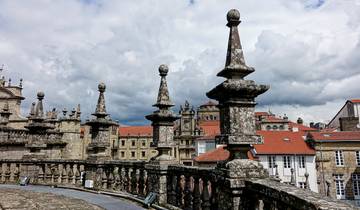
- Hiking & Trekking
Walk the Camino de Santiago
all went smoothly and our CEO was delightful
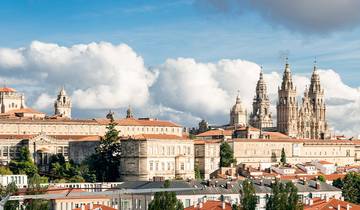
- Mountain Hikes
Walking the Picos de Europa
Excellent trip, food and transport was great. Everything was very timely.

Trekking in Spain - Picos de Europa
- 10% deposit on some dates Some departure dates offer you the chance to book this tour with a lower deposit.

Camino de Santiago Trek
Our trip on the Camino De Santiago was great! And a good value too. Everyone in our group enjoyed their journey on the Camino.
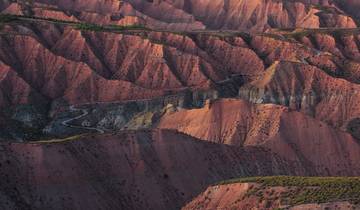
Hiking Southern Spain: Authentic Andalusia
Andalusia is a unique place. Beautiful nature, friendly people and delicious food.

- Walking Adventure
- Spiritual Walks
- In-depth Cultural
Walking the Camino de Santiago
Had a great time met some lovely people. Our guide was fantastic, very supportive and helpful.
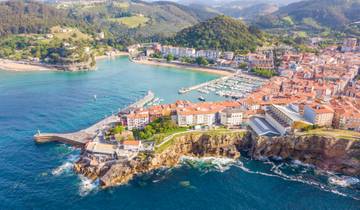
Camino de Santiago Adventure

- Christmas & New Year
"Camino de Santiago" (Way of St James): Fisterra Epilogue
- €70 deposit on some dates Some departure dates offer you the chance to book this tour with a lower deposit.
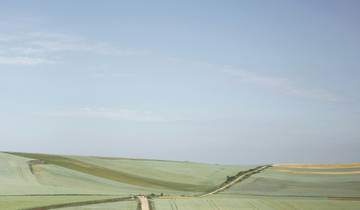
Camino de Santiago Walking Experience 7D/6N (from Sarria)
They did everything they said they would do and baggage and rooms were handled very well.

Hiking the High Trails of the Picos de Europa

"Camino de Santiago" (Way of St James): Original Way
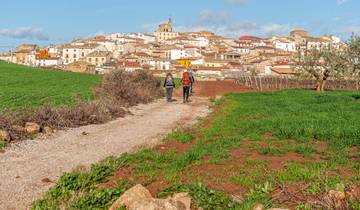
Camino De Santiago - The Way to Santiago (The last 115KM)
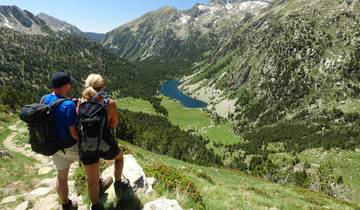
Gran Bucle-Trek Nationalpark Aigüestortes
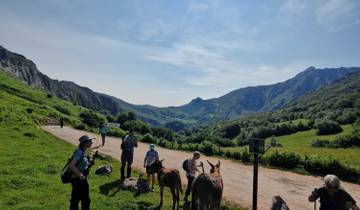
Guided Picos De Europa
- 7.5% deposit on some dates Some departure dates offer you the chance to book this tour with a lower deposit.
What people love about Hiking & Trekking Tours in Spain
Our guide got us safely to Santiago which was a big part of his job. We had a nice group of people on our tour. The leader had good recommendations for restaurants and city tours. However, the guide was very impatient with me when my backpack was missing, and I only found my pack due to my air tags. Gadventures was responsible for moving my pack during the day so I am not sure about the reason for the impatience.
I had a great time on this tour, but there are some treks more difficult than I expected. One guy in our group feel down and broke a rib. Maybe the treks should be graduate again. Apart that, everything else was wonderful. Good hotel , Torrecerredo, with great food and very nice people.Totally recommend. Gustavo
What a wonderful way to enjoy the Spanish country's and some of its religious history that walk the last 130km of the Camino. It will not always be easy (hot humid days increase the risk of blisters) but the experience is worth every ouchie.The towns, accommodation and people are generally amazing even if the quality of food is a bit uneven until you get to Santiago. But food and drink incredibly cheap. Brilliantly organised and led by our Spanish guide David who went above and beyond to ensure we all had a memento experience. Definitely to be recommended to everyone with the capacity to have a decent walk
Hiking & Trekking Tours
- Mountain Hikes (13)
- Self Guided Walking Holidays (10)
- Attraction-Based Hikes (7)
- Coastal Walks (6)
- Pyrenees (16)
Regions in Spain
- Northern Spain (44)
- Galicia (30)
- Canary Islands (29)
- Balearic Islands (25)
- Mallorca (20)
- Andalucia (15)
- Southern Spain (14)
- Costa Brava (14)
- Tenerife (11)
- Catalonia (8)
- La Gomera (8)
- Cantabria & Asturias (5)
Travel Styles
- 10 Best Hiking & Trekking Companies
- Your Guide to Planning a Private Hike 2024/2025
- Best Hiking Tours in The World 2024/2025
- Spain Travel Guide | All You Need to Know
- 10 Days in Spain: Best Itineraries 2024/2025
Discover TourRadar
- See All Tour Operators in Europe
- See All Tour Operators in Spain
- Trips to Florida
- Australia Tours
- Transylvania Castle tours
- Private Kathmandu Sightseeing Tour - UNESCO 4 World Heritage Sites
- 6 Day Sri Lanka Itinerary
- Deep Snow Course for Beginners in the Tyrolean Pitztal (4 days)
- 10 Best Backpacking Tours Europe
- Privacy Policy
- Get To Know Me
23 Best hikes in Spain: Hiking trails and Epic Routes

Sharing is caring!
Table of Contents
Get Ready to Explore The Best Hikes in Spain!
Spain is a land of diverse landscapes and breathtaking beauty. Here you’ll find some of the best hiking trails in Europe.
As a keen hiker, I am always on the lookout for new routes and great hiking destinations, and Spain did not disappoint!
From rugged mountain ranges to coastal cliffs and lush forests, as a hiker, you are treated to an array of scenic wonders – the perfect destination for a hiking adventure.
Picture yourself surrounded by Spain’s awe-inspiring natural wonders and breathtaking landscapes. Whether you’re a seasoned adventurer or a novice explorer, get ready to discover the best hiking trails and epic routes Spain offers.
From pilgrimage routes boasting panoramic vistas to hidden coastal trails with pristine coves, this article will guide you through a journey of discovery. Get ready to immerse yourself in the beauty of Spain.
So, lace up your hiking boots and let’s embark on an unforgettable adventure across the best hikes in Spain.
1. Camino de Santiago: The Way Of Saint James
Distance: 500 miles or about 800 kilometres
Difficulty: To complete the whole route is challenging. But you can break up the trail into shorter sections to make it easier.
Best For: Pilgrimage and Panoramic Vistas on Spain’s most popular hikes
Are you ready to take on Spain’s most famous trail? Spain is blessed with some of the best ancient pilgrim routes, and the Camino de Santiago ending in the city of Santiago de Compostela will not disappoint.
As you journey through the wondrous hiking trails of Spain, prepare yourself for a path that goes beyond physical exploration. The Camino de Santiago, a renowned pilgrimage route, offers not only breathtaking panoramic vistas but also a spiritual journey like no other.
Each step you take along this ancient path will bring you closer to the heart of Spain’s rich cultural heritage and provide you with a unique perspective on faith, history, and self-discovery. Plus, you’ll get to enjoy the beautiful Cathedral of Santiago de Compostela. After all, this is Spain’s most popular route for a reason.
Whether you choose to walk the entire route or opt for a shorter section, the Camino really is one of the best trails and most incredible hikes in Spain.

2. Montserrat: Sacred Mountain and Spiritual Hiking
Distance: From 2 miles to 5.8 miles (3.2km to 9.3km)
Difficulty: Choose from 3 levels of walks
Best For: A perfect day trip from Barcelona

As Spanish hiking trails go, a hike up to Montserrat, the sacred mountain in Catalonia, offers a unique blend of natural beauty and profound spiritual significance.
With its jagged rock formations and revered Benedictine abbey, Montserrat is a place where hikers can embark on both a physical and spiritual exploration.
The sheer presence of Montserrat’s towering peaks creates an atmosphere that humbling. As you ascend the trails, surrounded by rugged cliffs and lush vegetation, the energy of this sacred mountain envelops you.
Whether you choose the popular route to Sant Jeroni, the highest peak of Montserrat, or opt for a more secluded path, every step reveals a new facet of this majestic mountain. There’s no doubt a trip up this sacred mountain is one of the best hikes in Spain
3. Ruta del Cares: Spectacular Gorge and Dramatic Cliffs
Distance: From 7.4 miles or 12km
Difficulty: Moderate
Best For: Continuing your adventure from Montserrat
Enjoyed your visit to Montserrat’? Then why not also hike the Ruta del Cares?
This divine gorge, known for its dramatic cliffs and awe-inspiring vistas, can be found just beyond Montserrat.
Stretching for 12 kilometres between the villages of Poncebos and Cain, the Ruta del Cares winds its way through the heart of the Picos de Europa National Park.
As you step onto the trail, the sheer magnitude of the surrounding cliffs will leave you in awe.
Navigating the narrow walkway carved into the cliffside is thrilling.
But the Ruta del Cares isn’t just a trail for the daring.
Its well-maintained path and moderate difficulty level make it accessible to hikers of various skill levels.
Whether you’re an experienced trekker or a novice adventurer, this route offers a chance to immerse yourself in the splendour of the Picos de Europa without feeling too overwhelmed. Are you ready to take on one of the best hikes in Spain for the daring and the brave?

4. Teide National Park: Volcanic Marvels and Moon-like Landscapes
Distance: Around 9km or 5.5 miles for the Mt Teide Summit Hike
Difficulty: Difficult
Best For: Volcanic landscapes and Spain’s highest peak
Teide National Park awaits, with its extraordinary volcanic wonders and landscapes reminiscent of a lunar setting.
Situated on the island of Tenerife, Teide National Park encompasses the majestic Mount Teide, Spain’s tallest peak and the world’s third-largest volcano.
The park is one of the best places for volcano fans! Here you’ll find hiking trails that lead you through an otherworldly environment, where ancient lava flows and unique rock formations create a surreal atmosphere.
One of the most popular routes in Teide National Park is the Sendero de los Roques de García, a well-marked path that takes you on a journey around Teide’s crater.
Standing on the summit of this ancient volcano, it’s impossible not to feel a sense of accomplishment and wonder at the raw power of nature.

Like this post? Make sure to share it on Pinterest!

5. Mulhacen: Conquering the Roof of Mainland Spain
Distance: 11.5 km or 7.1 miles
Difficulty: Medium
Best For: Feeling on top of the world
Rising majestically in the Sierra Nevada mountain range, Mulhacen proudly claims the title of mainland Spain’s tallest mountain, reaching a breathtaking elevation of 3,479 meters (11,414 feet).
Are you an intrepid hiker looking for a thrilling challenge, and a lover of hiking in high altitudes? Then summiting Mulhacen may just be the perfect adventure for you and one of best hikes in Spain for the super adventurous.
Make no mistake, hiking Mulhacen is not for the faint of heart. The trails can be steep and demanding, especially as you approach the summit.
The final stretch may require some scrambling over loose scree, adding an extra layer of difficulty to the ascent. However, the sense of accomplishment you’ll feel when standing atop this towering peak makes it all worth it.
If you’re short on time or prefer a challenging day hike to enjoy Spains highest mountain, a good option is starting your journey from the Hoya del Portillo trailhead. The hike typically takes around 6 to 8 hours, depending on your pace and fitness level.
Looking for the opportunity to witness a spectacular sunrise from the summit? Then opt for a two-day hike with an overnight stay at the Mulhacen Refugio. The refuge provides basic accommodations and is the perfect spot to rest before conquering the peak.
If you’re not an experienced hiker or prefer to have expert guidance, many local companies offer guided tours to Mulhacen.
A guide can enhance your experience, provide valuable insights, and ensure your safety throughout the hike.

6. El Caminito del Rey: A Thrilling Journey Along the King's Path
Distance: Around 7.7km or 4.7 miles for the Mt Teide Summit Hike
Difficulty: Easy to Moderate
Best For: Adrenaline junkies wanting to take on ‘the most dangerous walk in the world.’
Nestled in the stunning landscapes of Malaga, El Caminito del Rey is a world-renowned narrow walkway that promises an adrenaline-inducing experience like no other.
Good news! This Spanish trail is considered an easy walk, as long as you don’t mind heights. It’s also a relatively short hike, taking on average around 3 – 4 hours.
One of best hikes in Spain for thrillseekers
The route, also known as the King’s Path, is famed for its heart-pounding and exhilarating nature, and is one of the best things to do in Andalucia.
Originally built in the early 20th century to facilitate the transportation of materials and personnel between two hydroelectric power plants, the walkway soon gained a reputation for its perilous condition and spectacular views.
Although it earned a dangerous reputation in the past, recent renovations have transformed it into a safe yet thrilling hiking experience.
The walkway clings to the sheer walls of the El Chorro Gorge suspended hundreds of meters above the Guadalhorce River.
As you traverse the narrow path, the transparent glass floor beneath your feet offers a jaw-dropping view of the dizzying heights below.
This hike is one of the best easy day hikes in Spain and a perfect day trip from towns and cities in Southern Spain such as Granada and Malaga.

7. El Saltillo: A Scenic Mountain Path in Almeria
Distance: 11.3 km or 7 miles
Best For: Canyons and waterfalls
Nestled in the enchanting landscapes of Almeria, El Saltillo is a hidden gem that beckons hikers with its picturesque beauty and unique wooden boardwalk.
El Saltillo is a feast for the senses, leading hikers through a rugged terrain adorned with stunning cliffs, deep gorges, and rolling hills.
The trail is a paradise for nature photographers, offering countless opportunities to capture the beauty of the rugged Almerian landscape.
What sets El Saltillo apart from other hiking trails is its distinctive wooden boardwalk, locally known as “pasarelas” or “saltas.” These wooden walkways snake through narrow and vertigo-inducing sections of the path, making the journey not only visually impressive but also an adrenaline-pumping adventure.
Visit El Saltillo during the spring or autumn when the weather is mild and the landscapes are vibrant with wildflowers or autumn foliage.

8. Siete Lagunas: Discovering Stunning Lakes in the Sierra de Gredos
Distance: 16.9 km or 10 miles
Best For: A wild adventure
Nestled within the scenic Sierra de Gredos mountain range, the Siete Lagunas (Seven Lakes) hike is a paradise for nature lovers and adventurers.
This challenging yet rewarding trail takes hikers through a landscape adorned with crystal-clear alpine lakes, rugged peaks, and lush meadows.
The Siete Lagunas trail lives up to its name by leading hikers to seven picturesque glacial lakes scattered across the high-altitude valleys of Sierra de Gredos.
Siete Lagunas is considered a demanding hike, suitable for experienced hikers with a good level of fitness.
The trail involves steep ascents and descents, as well as uneven terrain, making sturdy hiking boots and trekking poles highly recommended for stability.
You can also spot local wildlife, such as the Iberian ibex and Griffon vultures, adding to the allure of this wild and untamed landscape.
If you wish to extend your hiking experience, camping is permitted near the lakes.

9. El Chullo: Scaling the Highest Peak in the Province of Almeria
Distance: About 15km
Difficulty: Easy
Best For: A great beginner hike
El Chullo proudly stands as the crowning glory of Almeria, soaring to an elevation of 2,610 meters (8,563 feet).
This impressive mountain offers hikers not only the opportunity to conquer the highest peak in the province but also a chance to immerse themselves in a rich tapestry of flora and fauna along the trail.
El Chullo is nestled within the Sierra de Los Filabres mountain range, boasting an impressive array of biodiversity.
Summer can be scorching in this region, so it’s best to avoid hiking during the peak heat.
In winter, the peak may be covered in snow, making the trail more challenging and requiring additional precautions
Begin your hike early in the day to allow sufficient time to reach the summit and descend safely before dark.
El Chullo is perfect for beginners as it has a relatively easy ascent and slow ascent, making it a great way to start trying out high peaks.

10. Via Verde, Sierra Norte de Sevilla: A Scenic Greenway Through Seville's Countryside
Distance: 19.44 km
Best For: Enjoying the Sierra Norte Nature Reserve
For those seeking a leisurely and family-friendly hiking experience, the Via Verde in Sierra Norte de Sevilla is an excellent choice.
This scenic greenway follows the path of an old railway line, providing a picturesque journey through the charming countryside of Seville.
The Via Verde offers hikers a chance to bask in the beauty of Seville’s rural landscapes, dotted with olive groves, cork oak forests, and rolling hills.
The route is relatively flat and well-paved, making it accessible for walkers of all ages and skill levels. This means it’s great for families!
The greenway has amenities, including picnic areas, restrooms, and even cafes or small shops in certain sections. Take advantage of the designated picnic spots to enjoy a leisurely lunch amid the serene surroundings.
if you want to extend your adventure in the area, consider exploring nearby attractions such as the charming white villages of Sierra Norte de Sevilla or visiting the beautiful Cazalla de la Sierra, known for its traditional architecture and cultural heritage.

11. Pico Lucero: Unveiling a Hidden Peak in the Sierra de Almijara
Distance: 15km
Difficulty: Moderate/challenging
Best For: An off-the-beaten-track adventure
Tucked away in the Sierra de Almijara mountain range, Pico Lucero remains a lesser-known gem awaiting exploration.
This hidden peak promises hikers an invigorating and rewarding experience, with panoramic views that extend across the rugged landscape of Andalusia.
Pico Lucero’s off-the-beaten-path status makes it an ideal choice for those seeking a more secluded and peaceful hiking experience.
While Pico Lucero is not as high as some of the better-known peaks in the region, it still offers a challenging hike.
For hikers looking to fully immerse themselves in the natural surroundings, camping is an option near Pico Lucero.
There are no official campsites on the peak, so ensure you follow responsible camping practices to minimize your impact on the environment.
Nearby towns, such as Frigiliana or Nerja, offer a variety of accommodations to suit different preferences and budgets.
These picturesque villages provide a perfect setting to relax and unwind after an adventurous day on the trail.
Pico Lucero’s hidden allure and rewarding views make it a must-visit destination for hikers seeking to connect with the rugged beauty of the Sierra de Almijara.

12. Rio Chillar: A Refreshing River Hike in Nerja
Distance: 16km
Difficulty: Medium difficulty
Best For: A wet and wild hiking trail
This river hike is a delightful escape from the summer heat, offering an invigorating journey through the cool waters of Rio Chillar amid stunning natural surroundings.
The Rio Chillar hike offers something fun and different from typical mountain trails, as much of the journey is spent wading through the riverbed.
The hike takes you through narrow gorges, lush vegetation, and natural pools, providing opportunities to take refreshing dips and splash around in the crystalline waters.
As you follow the river upstream, you’ll be greeted by cascading waterfalls and scenic spots ideal for picnicking and relaxation.

13. Rio Verde (Granada): Exploring a Secluded River Hike in the Alpujarras
Distance: 7.3km
Difficulty: Moderate
Best For: Escaping into nature
The Rio Verde hike offers a secluded and magical experience amid the pristine beauty of nature.
This river hike takes you through lush forests, tranquil meadows, and a series of natural pools and waterfalls that beckon you to take a refreshing dip in the crystal-clear waters.
Rio Verde, translating to “Green River,” derives its name from the vibrant hues of the river water that contrast with the surrounding landscapes.
The hike takes you through a green oasis, where the sound of flowing water and the songs of birds create a serene ambience.
The Rio Verde hike is most enjoyable during the spring and early summer when the weather is mild, and the river water is at its cleanest and most inviting.
14. El Pinsapar trail
Distance: 10.5km
Difficulty: Easy to moderate
Best For: An easy to follow half day hike
This remote hike unveils the beauty of the endemic pinsapo forests and the diverse wildlife that thrives in this protected natural area.
As you trek through the dense forest, you’ll be surrounded by towering pinsapo trees, their branches adorned with a delicate layer of snow-like needles, creating a magical and otherworldly atmosphere.
The Sierra de las Nieves is a protected area and a UNESCO Biosphere Reserve, home to a diverse range of flora and fauna.
El Pinsapo’s beauty provides an exclusive experience for hikers seeking to explore the endemic forests and diverse wildlife of the Sierra de las Nieves.
For more information about hiking the El Pinsapar Trail, check out this great blog post by Anywhere We Roam.

15.La Concha: Reaching the Iconic Mountain near Marbella
Distance: 10.3km
Best For: Breathtaking views across the Costa del Sol
La Concha, the iconic mountain that towers over Marbella, presents an enticing challenge for hikers seeking panoramic views of the Costa del Sol and the vast Mediterranean Sea.
This moderate hike will lead you through diverse landscapes to the highest point in Marbella.
La Concha, which translates to “The Shell,” earned its name due to its unique shape resembling a sea shell.
The trail starts from the Refugio de Juanar, a picturesque spot surrounded by pine forests, before ascending through the rocky terrain.
As you climb, the panoramic views of the coastline and the surrounding countryside become increasingly impressive, rewarding your efforts with vistas that stretch as far as the eye can see.
The Refugio de Juanar can be reached by car or by taking a taxi from Marbella. From there, the ascent to the summit takes around 3 to 4 hours, depending on your pace and the time you spend savouring the views.
The La Concha hike is an out-and-back trail, meaning you will retrace your steps to return to the starting point.

16. El Torcal de Antequera: Unveiling the Unique Karst Landscape in Andalusia
Distance: 7km
Best For: One of the most amazing examples of karstic landscape in Europe
This unique karst landscape, characterized by its surreal limestone formations, offers a journey into a realm of natural sculptures and breathtaking vistas that seem straight out of a fantasy novel.
El Torcal de Antequera is a protected natural park and a UNESCO World Heritage Site, making it a treasure trove of geological marvels.
The limestone rocks have been eroded over millennia by wind and water, resulting in an extraordinary ensemble of natural sculptures that come alive with every twist and turn of the trail.
This prehistoric-looking landscape is a photographer’s dream, offering countless opportunities to capture its unique and mesmerizing features.
The El Torcal de Antequera is open year-round, but the best time to visit is during the spring and autumn months when the weather is mild.
Summer can be scorching in this region, so plan your hike early in the morning or late in the afternoon to avoid the midday heat.
In winter, the park may experience occasional snowfall, which adds an enchanting touch to the already magical landscape. However, be prepared for colder temperatures and potentially slippery trails if hiking during the winter months.

17. Masca, Tenerife: Unveiling the Dramatic Gorge Hike in the Canary Islands
Distance: 10km return journey
Difficulty: Challenging
Best For: Explore one of the best beaches in Tenerife
Tenerife, the largest of the Canary Islands, is a treasure trove of natural wonders, and the Masca Gorge hike is undoubtedly one of its crown jewels.
This dramatic gorge hike takes hikers through rugged terrain, revealing awe-inspiring landscapes that showcase the island’s volcanic origins.
The trail starts in the charming village of Masca, perched high in the Teno Mountains, and descends through a gorge that was carved by ancient volcanic activity.
To access the Masca Gorge trailhead, you can either take a public bus or drive to the village of Masca.
However, the descent into the gorge is only the first part of the journey. For lovers of coastal walks, the hike concludes at the beach of Masca, where you have the option to return by boat or walk back to the village.
Some hikers choose to join guided tours that offer transportation to the trailhead, expert guidance along the way, and arrangements for the boat return journey.

18. Camí dels Ganxos: Embarking on a Coastal Trail in Costa Brava
Distance: 14.5km
Difficulty: Moderate to challenging
Best For: Exploring Costa Brava
The Camí dels Ganxos, or the Path of Hooks, is a hidden gem in the Costa Brava region, promising hikers a picturesque journey along the rugged coastline.
This coastal trail offers breathtaking views of cliffs, hidden coves, and the shimmering waters of the Mediterranean, making it a perfect adventure for nature enthusiasts and landscape photographers alike.
The trail follows ancient paths once used by fishermen to access their fishing grounds, and it remains relatively less crowded than other popular routes in the region, offering a more tranquil and intimate hiking experience.
Along the way, you’ll discover hidden coves and small beaches, inviting you to take a break and bask in the tranquillity of these secluded spots. The opportunity to explore the unspoiled coastline and witness the raw power of the Mediterranean waves crashing against the rocks is a highlight of this coastal trail.

19. Ruta del Agua: Unveiling the Beautiful Waterfall Trail in Huesca
Distance: 9km
Difficulty: Medium
Best For: Water lovers
The Ruta del Agua is a nature lover’s dream, taking hikers through a landscape dotted with waterfalls and surrounded by verdant forests.
The trail follows a meandering river, revealing a series of cascades and small waterfalls that tumble down moss-covered rocks.
The best time to experience the waterfalls at their most impressive is during the spring or after heavy rainfall. During these times, the water flow is at its strongest, and the waterfalls are at their most magnificent. Keep in mind that some parts of the trail may become slippery after rain, so wear appropriate hiking shoes and exercise caution.

20. Cumbre Vieja, La Palma: Exploring the Volcanic Landscape and Summit Hike in the Canary Islands
Distance: 17.5km
Difficulty: Moderate to difficult
Best For: Volcano fans
Cumbre Vieja is a volcanic ridge that extends along the southern part of La Palma, offering a glimpse into the island’s fiery side.
The hike takes you through a landscape shaped by volcanic eruptions, featuring rugged lava fields, volcanic cones, and ancient craters.
The summit hike in Cumbre Vieja leads adventurers to the highest point on the ridge, providing stunning panoramic views of the island’s coastline and neighbouring volcanic peaks.
The ascent involves a steady climb, but the rewards at the summit are well worth the effort.
From the top, you’ll have a bird’s-eye view of the dramatic landscapes below, with the sparkling waters of the Atlantic Ocean extending to the horizon.
Cumbre Vieja’s volcanic landscape and summit hike offer a glimpse into the powerful forces of nature that have shaped La Palma over millennia.

21. Los Cahorros Monachil: Embarking on a Stunning Gorge Hike near Granada
Distance: 7.6km
Best For: Beautiful Gorges
Los Cahorros Monachil, located just a short drive from Granada, offers hikers a thrilling adventure through a stunning gorge.
Los Cahorros Monachil is a nature lover’s paradise, taking hikers through a gorge that has been sculpted by the passage of the Monachil River.
The trail leads you through narrow passages and along rocky cliffs, with the sound of flowing water as your constant companion.
The highlight of the hike is crossing the hanging bridges that span the gorge, providing a unique and exhilarating perspective of the landscape below.
The Los Cahorros Monachil trail is easily accessible from Granada, making it a popular day trip for both locals and tourists.
There are parking facilities near the trailhead, and the hike can be completed in a few hours, leaving you with plenty of time to explore the charming town of Monachil.

22. Cami dels Bons Homes: Embarking on a Historical Trail in the Pyrenees
Distance: The whole route from France is 224 km
Best For: A long-distance hike from France that can be broken up into shorter sections
The Cami dels Bons Homes, also known as the Path of the Good Men, takes hikers on a historical journey through the Pyrenees, on the French border.
This trail follows the footsteps of medieval heretics who sought refuge in this mountainous area offering hikers a unique blend of natural beauty and cultural heritage.
Along the Cami dels Bons Homes, you’ll encounter small villages, ancient churches, and other historical landmarks that tell the story of the Cathars’ journey through these Pyrenees peaks of Europe.
The Cami dels Bons Homes is divided into various sections, each with its unique charm and attractions. Hikers can choose to explore specific sections of the trail or undertake the entire journey, depending on their preferences and time constraints. Perfect if you love a long hike and visiting lots of different places.
The route is well-marked and maintained, making it accessible to hikers of all levels. Along the way, you’ll find accommodations, such as albergues and guesthouses, that provide comfortable lodging for weary travellers.
The Cami dels Bons Homes offers a unique opportunity to combine history, culture, and nature in a single hiking adventure through the Pyrenees.
23. Cala Galdana to Santo Tomas: Exploring the Cami de Cavalls in Menorca
Distance: 10 km
Best For: Magnificent Balearic beaches
It time to explore the beauty of the Balearic Islands. Nestled in the azure beauty of Menorca, the Cami de Cavalls beckons hikers to embark on a mesmerizing journey along its ancient coastal trail. The stretch from Cala Galdana to Santo Tomas is a highlight of this historic path, offering a unique blend of pristine beaches, dramatic cliffs, and unspoiled nature.
One of the highlights of this stretch is the plethora of beautiful beaches that dot the coastline. From secluded coves with powdery white sand to larger bays framed by limestone cliffs, each beach offers a unique and idyllic setting. Don’t miss the opportunity to take a refreshing dip in the crystal-clear waters or bask in the sun’s warm embrace.
The Cami de Cavalls treats hikers to striking geological wonders along the way. Towering cliffs sculpted by the sea create a dramatic backdrop, while hidden caves invite exploration and spark the imagination. Keep an eye out for natural arches and rock formations that add to the trail’s allure.

Conclusion: Embracing the Diversity and Beauty of Spain's Best Hikes
Spain’s hiking trails offer a diverse range of stunning landscapes, from snow-capped peaks to sun-kissed coastlines. Each trail has a unique story to tell, revealing the rich history, culture, and geology that have shaped Spain over centuries.
Exploring these 23 best hikes in Spain provides an opportunity to connect with the country’s breathtaking scenery and immerse oneself in its cultural and natural heritage.
Spain is known for its vibrant culture and rich history; however, its natural wonders are often overlooked. But for those willing to put on their hiking boots and explore, a world of breathtaking landscapes and epic trails await. From the pilgrimage-like experience of Camino de Santiago to the moon-like landscapes of Teide National Park, Spain has something to offer every adventurer.
Want more Spain content? Make sure to read my complete 2-day Barcelona Itinerary.

Ultimate Summer Camp Counselor Packing List: The Only Guide You’ll Need
You may also like, how to plan a microadventure: the ultimate guide, microadventure kit list: packing light and exploring the..., 60 microadventure ideas you need to try, unlock the adventure within: discover the meaning of..., your complete 2-day barcelona itinerary: gaudi masterpieces and..., sant jordi barcelona: the best music hostel in..., danebury hill fort walk: amazing history in hampshire, hiking the menengai crater: amazing adventures in kenya’s..., leave a comment cancel reply.
Save my name, email, and website in this browser for the next time I comment.
- Visiting Every Country In The World
- Work With Me
- Work with me – looking for a writer and journalist?
This website uses cookies to improve your experience. We'll assume you're ok with this, but you can opt-out if you wish. Accept Read More
Spain Hiking Trails | 15 Most Epic Day & Multi-Day Walks
- Updated on: May 21, 2021
This article may contain affiliate. For more information, please see our disclaimer here.
Table of Contents
Spain is a wonderful country to explore, home to extremely varied landscapes that range from snow-capped mountains to black sand deserts and volcanoes. With a fantastic climate throughout much of the country, amazing beaches, a fascinating culture, and a warm welcome in every village, Spain hiking trails are an incredible experience.
Spanish hiking trails come in all shapes and sizes, ranging from easy-going strolls to knee-trembling climbs along narrow mountain tracks! In this guide, we’ll take a look at some of Spain’s best hiking trails.
So, lace up your boots, grab your backpack, and let’s hit the trail!
Things to Keep In Mind When Hiking In Spain
Most major Spanish hiking trails are well-signed, with amenities along the way. However, some smaller, lesser-traveled paths can soon become quite confusing. As such, be sure to check your routes in advance, and use maps and apps to ensure you don’t get lost!
If you’re planning a multi-day hike, be advised that wild camping is tolerated in some parts of Spain, but illegal in others, so be sure to check in advance. You can find out more about wild camping in our handy guide.
The Best Time to hit Spain hiking Trails
Spain offers a good climate for hiking, with many routes open year round. However, it’s worth remembering that parts of the country, particularly mountainous areas, do experience snow and adverse weather in the winter. But, for the most part, you’ll need to make sure that you have decent sunglasses and plenty of water, snacks, and sunscreen.
In areas that do see bad weather, some routes may be closed from around October until April. On the flip side, the height of summer isn’t always the best time to hike in Spain. Temperatures rise quickly in the middle of the day, and the sun can become oppressive.
This can be a problem on hiking routes that don’t offer a lot of shade. If you do travel in summer, aim to hike in the early morning or late afternoon, and perhaps avoid the midday sun by taking a siesta!
Packing List: The Essentials
When you’re hiking in Spain, you’ll need all the usual gear, such as a decent backpacking backpack , sturdy boots, and comfortable hiking clothes that suit the conditions you expect to face. In addition, there are a few other essentials that you’ll probably need on Spanish hiking trails.
- Good sunglasses;
- A good daypack for day-hikes;
- Wide brimmed hat;
- Reusable water bottle;
- GPS tracker for emergencies
We’ve only mentioned the bare bones here, but check out our multi-day hiking packing list for a more comprehensive guide.
Incredible Spain hiking trails to walk in a day
Spain is full of incredible hikes that you can complete in a day. Here are some top picks.
1. Caminito del Rey

- Location: 60 km (37 miles) from Málaga
- Distance: 10.3 km (6.5 miles)
- Elevation gain: 526 m (1,725 ft)
- Difficulty: Moderate
- Type: Out and back
Known as the ‘Walkway of Death’, this iconic trek is one of the most well-known Spanish hiking trails. Winding through absolutely stunning scenery, the path follows a series of narrow boardwalks, fixed to the edge of the canyon, with sheer drops below! Recent renovations make the trail much safer than it used to be, but it’s still an exhilarating hike. Check out my full comprehensive guide: What to expect of the Caminito del Rey? Once the Most Dangerous Hike in Spain to get all the information you need to know!
Map not loading? Click here or on the title of the trail on the right corner of the map, to get more information.
Tour Recommendations Caminito Del Rey:
2. ruta del cares.
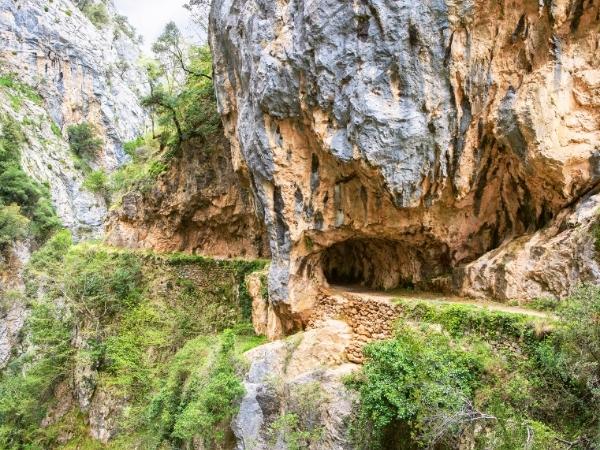
- Location: 110 km (68 miles) from Santander
- Distance: 21.4 km (13 miles)
- Elevation gain: 2,047 m (6,715 ft)
- Difficulty: Difficult
This trail is one of the best in the Picos de Europa National Park, boasting amazing scenery at every turn. The rugged path becomes narrow at times, as it clings to the side of the mountains, and proper hiking gear is recommended. Despite being a pretty tricky Spain hiking trail, it’s immensely popular, largely because of the incredible views of mountains, waterfalls, and vistas, along the way.
Check out: The Best Guide Mountains in Spain: 9 Memorable Mountain Ranges You Need to Know
3. Peak of Mount Teide

- Location: Tenerife, Canary Islands
- Distance: 16.3 km (10 miles)
- Elevation gain: 1,362 m (4,470 ft)
- Difficulty: Moderate/difficult
This is a fantastic hike up to the summit of Mount Teide, Spain’s highest peak, and an active volcano! The scenery is out of this world, and while the going can be tough at times, especially in the hot sun, the views from the top are well worth the effort. On a warm day, it’s an amazing trail to tackle in time for sunrise from the summit!
Tour Recommendations El Teide:
4. pico sobarcal.

- Location: 410 km (255 miles) from Barcelona
- Distance: 14.6 km (9 miles)
- Elevation gain: 1,090 m (3,576 ft)
An incredible hike on the edge of the Pyrenees, the trail takes you right up into the mountains, eventually leading to the summit of Mount Sobarcal. Along the way, you’ll take in wildflowers, green sierras, and craggy mountains. The loop also crests the summit of mount d’Ansabere, before looping back on the other side of the valley, and eventually returning to the start point at Refugio de Linza.
5. Via Ferrata de la Cala del Moli
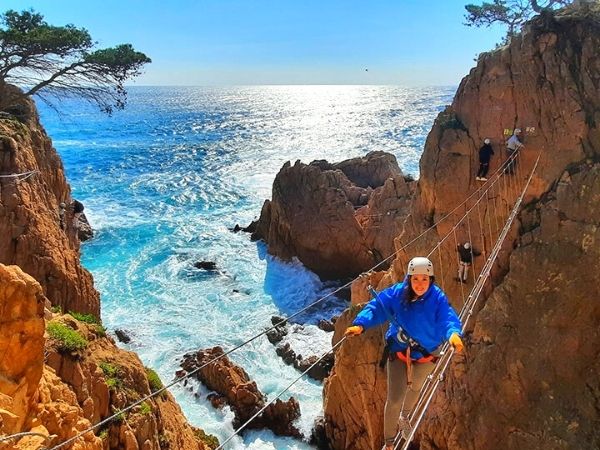
- Location: 110 km (68 miles) from Barcelona
- Distance: 2.74 km (1.7 miles)
- Elevation gain: 72 m (236 ft)
Via Ferrata more or less translates to ‘Iron Path’, and typically describes a protected climbing route. Strong, metal cables, rungs, and footholds make traversing tricky sections safe. This is one of the few Via Ferrata’s that is located on the coast, and it boasts magnificent views over the crystal clear waters below as you climb the orange granite cliffs of Sant Feliu de Guíxols. It’s definitely worth checking out and is definitely one of the most adventurous things to do in Spain .
6. Barranco de Santiago

- Location: La Gomera – Canary Island 38 km (23 miles) from San Sebastian
- Distance: 9.5 km (6 miles)
- Elevation gain: 678m (2,224 feet)
- Difficulty: Hard
This is one of La Gomera’s most popular hikes and also know as Barranco de Benchijigua and if you like ravines and canyons this is the hike for you. The deep canyon has a great depth but is really small what makes it unique. The walls on both sides are around 300 meters high. Make sure to download the trail on your phone as it is not always really clear where to go. You will spot a lot of birds and unique species of trees. Enjoy your hike.
Must Read: 30 most incredible hiking trails of Europe
7. Simancón y El Reloj

- Location: 130 km (80 miles) from Málaga
- Distance: 9.7 km (6 miles)
- Elevation gain: 767 m (2,515 ft)
This is one of the Spain hiking trails that is not for the faint-hearted. Although the trail isn’t too long, it’s a tough one. You can approach it clockwise or counterclockwise, but either way, there’s a lot of steep climbing. It’s a great test of endurance, with amazing views to reward your efforts, especially when you reach the peak of Simancón. Expect rocky climbs and stunning wildflowers along the way!
8. Rio Chillar

- Distance: 12.4 km (8 miles)
- Elevation gain: 413 m (1,355 ft)
Following the Chillar River, this trail takes you through the Sierras de Tejeda and Almara National Park, eventually arriving at the fabulous Chillar waterfall. The trail gets a little soggy in places, with occasional ankle deep river crossings, and towards the end, there’s a bit of a climb, but nothing too steep. All in all, it’s a pleasant hike with excellent scenery.
9. Ruta Laguna Grande de Peñalara

- Location: 65 km (40 miles) from Madrid
- Distance: 10.5 km (6.5 miles)
- Elevation gain: 625 m (2,050 ft)
This is a brilliant Spain hiking trail for a moderate hike that takes in epic views of the Sierra de Guadarrama National Park. It starts off fairly easy, winding through a gorgeous pine forest, before opening up to amazing panoramic views of the mountains. Look up to catch a glimpse of the famous Black Vultures. The route climbs up, eventually leading you to the stunning Peñalara Lake. In winter, the route is covered in snow, but it’s still accessible, and looks magical!
Tour Recommendations Hiking in Ruta Laguna Grande de Peñalara :
10. beas de granada — granada.

- Location: Granada
- Distance: 15.8 km (10 miles)
- Elevation gain: 378 m (1,240 ft)
- Type: Linear
This is a superb hike that takes you out of Granada and into the peaks that separate the city from the smaller town of Beas de Granada. It’s a one-way trail, but it’s easy to take a bus back to the start point. Accessible throughout the year, the views are fantastic, with snow capped peaks visible in winter, and rolling green vistas during the summer.
Tour Recommendations Hiking in Granada:
Amazing multi-day spanish hiking trails.
If you’d like to sink your teeth into a longer, more challenging adventure, there are some really awesome multi-day Spanish hiking trails to explore.
11. Camino de Santiago

- Location: North Spain
- Distance: 892 km (555 miles)
- Elevation gain: 20,227 m (66,360 ft)
This is arguably one of the most famous hiking trails in Spain, although the official starting point is actually in France. Beginning in Saint-Jean-Pied-de-Port, France, the route soon leads into Spain, crossing forests, mountain passes, medieval villages, and stunning landscapes that sprawl for miles. This ancient Pilgrim walk through Spain is a real adventure, and a challenge that will generally take at least 30 days to complete.
12. GR131 — Canary Islands

- Location: Canary Islands
- Distance: 650 km (404 miles)
- Elevation gain: 20,000 m (65,620 ft)
The GR131 crosses all 7 of the Spanish Canary Islands, taking in amazingly diverse scenery, such as black sand deserts, tranquil beaches, volcanic mountain ridges, pine forests, and culturally rich villages and towns. You can choose in which order you want to do the 7 individual hikes in, and can of course split them up over the course of a few years. We’ve done our fair part of this trail already and so far these trails have definitely been among the best hikes we’ve done in Europe.
Click on one of the islands below to get access to the trail map in AllTrails:
- Fuerteventura
- Gran Canaria
13. GR92 — Costa Brava (via the Camí de Ronda)

- Location: Northeast coast of Spain
- Distance: 582 km (362 miles)
- Elevation gain: 632 m (2,075 ft)
- Duration: 10 days
Spain’s Costa Brava (the wild coast) is a superb place to explore and stretch your legs on a moderate, mid-length multi-day hike. Along the way you’ll hug the beautiful Mediterranean coast, home to a myriad of secluded bays, and cool, inviting waters. This Spain hiking trail typically takes around 10 days, normally starting in the town of Portbou on the border with France, and ending in Pont de l’Olivar. About mid-way, you’ll pass through Barcelona.
Map not loading? Click here or on the title of the trail on the right corner of the map, to get more information.
14. Cami dels Bons Homes (GR107)

- Location: The Pyrenees
- Distance: 222 km (140 miles)
- Elevation gain: 10,254 m (33,640 ft)
- Duration : 13 days
This wonderful route follows the path taken by the last French Cathars, who fled to Spain to escape the inquisition. Starting in the French town of Foix, the trail leads through beautiful woodlands, before climbing into the Pyrenees mountains. Along the way, you’ll pass through medieval Cathar towns and villages, such as the legendary Montségur, immense mountain passes, rivers, and forests. The trail eventually ends in the historic town of Berga, and will typically take around 13 days to complete.
15. Pyrenees High Route (HRP) (Senderismo en el Alto Pirineo)
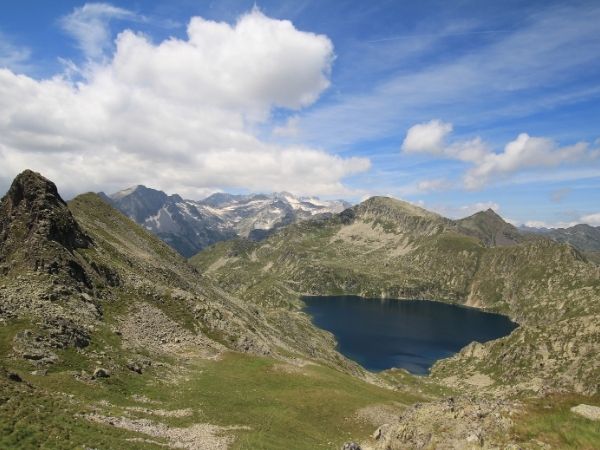
- Location: West to east coast of Spain/France via the Pyrenees
- Distance: 766 km (475 miles)
- Elevation gain: 45,872 m (150,500 ft)
- Difficulty: Very difficult
This epic trail is perhaps the best way to cross the Pyrenees in their entirety. Starting in the French town of Hendaye, on the west coast and on the Spanish border, the route winds in and out of Spain, France, and Andorra, before arriving in Banyuls-sur-Mer, on the French Mediterranean coast. Throughout this immense coast-to-coast hike, you’ll climb up into the Pyrenees, taking in spectacular views at every turn.
Pin for Later

Do you have experience hiking in Spain?
I hope you enjoyed reading through these 15 Spain hiking trails! If you have a question or want to recommend another epic hike in Spain, please let us know in the comments below!
All spain posts
Deals spain, activities & tours, travel insurance, accommodations, 1 thought on “spain hiking trails | 15 most epic day & multi-day walks”.
Good to have seek for a helpful post that could answer the questions you have, exactly like you have published here. Excellent work! Keep publishing essential issues.
Leave a Comment Cancel Reply
Your email address will not be published. Required fields are marked *
Related Posts

What To Expect of the Caminito del Rey? Once the Most Dangerous Hike in Spain

Mountains in Spain: 9 Memorable Mountain Ranges

13 Best Canary Island Hiking Trails If You’re Up For A Challenge
Destinations, travel tips.
Travel Safe
Charming paths
Paths for getting to know a country
Do you want to go on a route and need some inspiration? In Spain there are more than 60,000 kilometres of official footpaths. Here you can find some of the most spectacular hiking paths for taking in the scenery while you enjoy your favourite sport. Along the way you can see glacial lakes, volcanoes, marshes brimming with birdlife, cliffs with centuries of history, forests where you can listen to the bellowing of the deer… you can step inside 15 national parks or follow the trail of old reconditioned railway tracks. Lace up your boots and head to our trails.
Find out where you can go hiking
NATIONAL PARKS
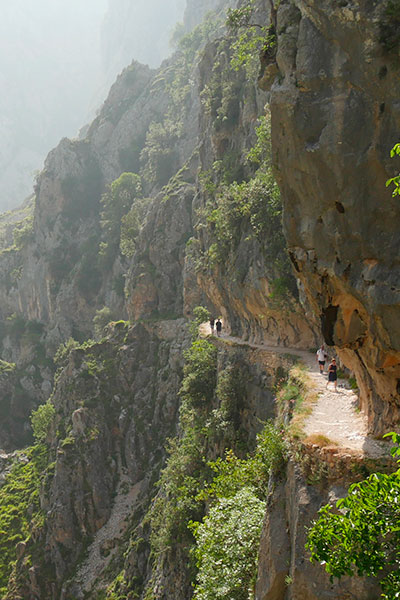
THE CARES TRAIL
The most famous trail in Picos de Europa National Park
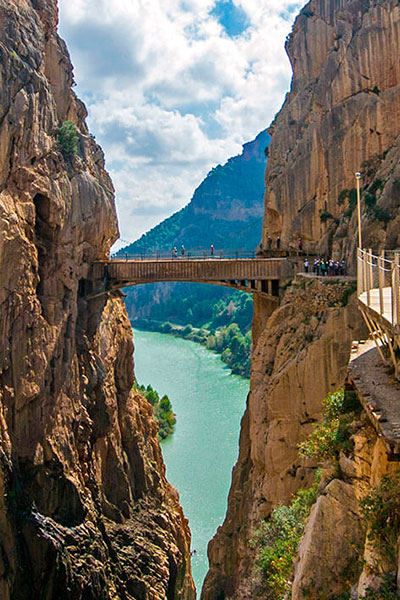
CAMINITO DEL REY TRAIL
Once the world's most hazardous footpath
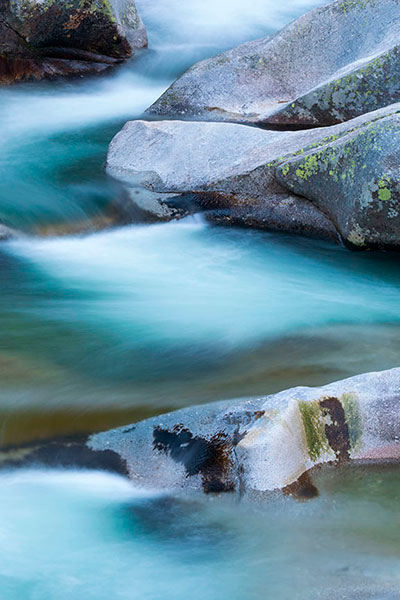
THE GARGANTA DE LOS INFIERNOS TRAIL
Walking through the Jerte Valley
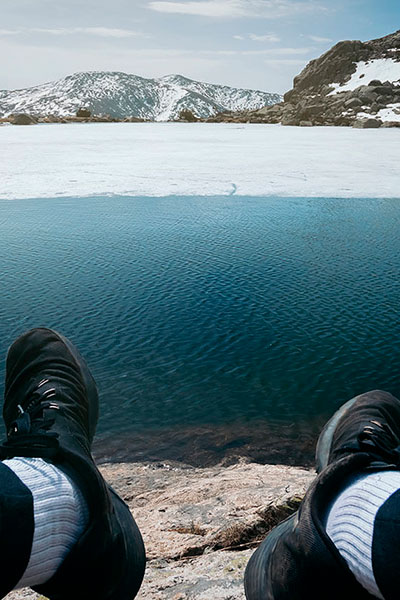
PEÑALARA CIRCULAR ROUTE
The summits of Madrid
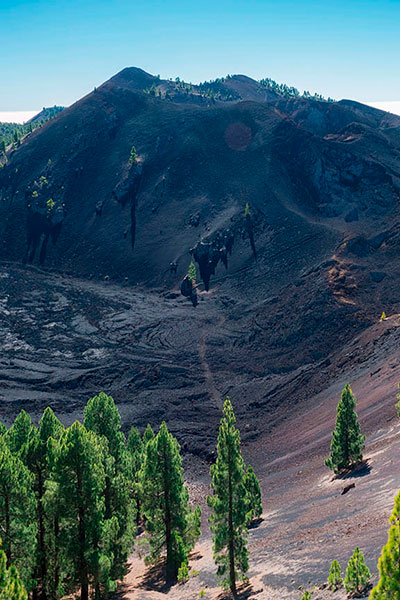
THE VOLCANO TRAIL
Trekking among volcanoes on the island of La Palma
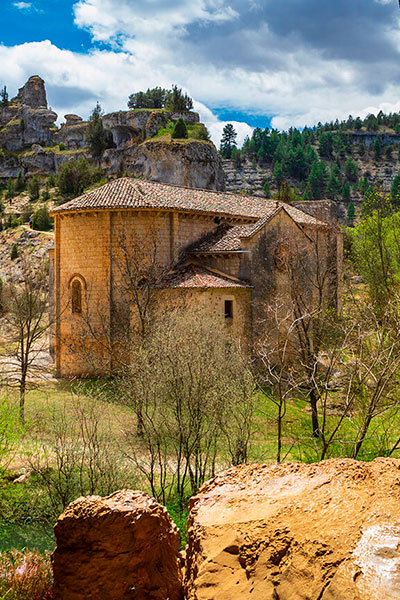
SENDA DEL RÍO TRAIL
A hiking trail in the heart of Cañón del Río Lobos
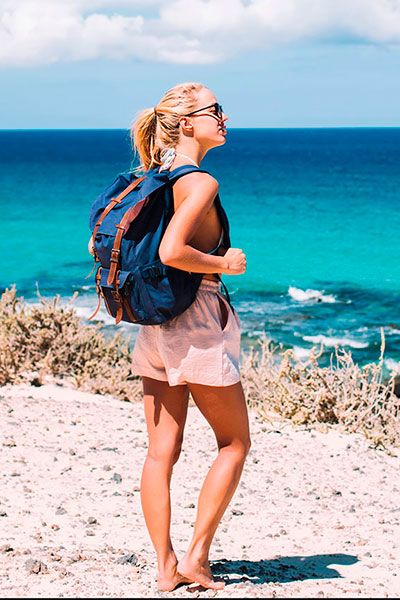
CAMÍ DE CAVALLS TRAIL
Around Menorca by the coast
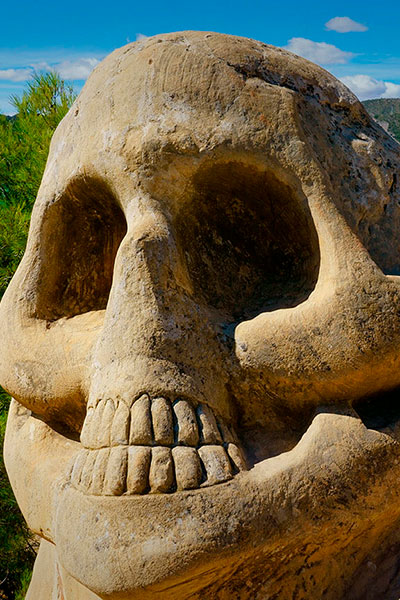
LAS CARAS TRAIL
Discovering sculptures hidden in nature
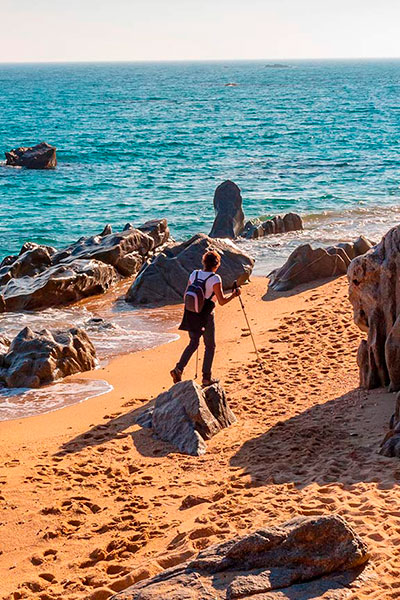
CAMÍ DE RONDA HIKING TRAIL
The experience of walking the Costa Brava shoreline
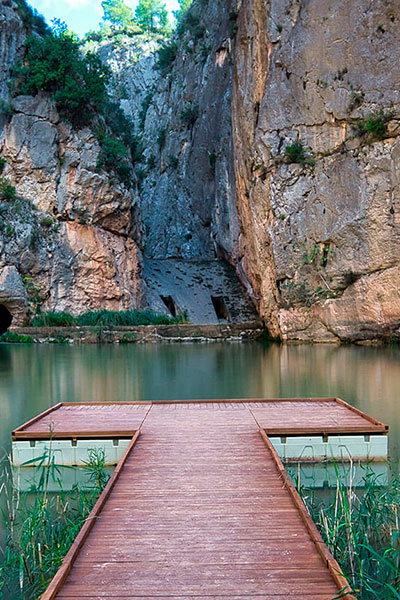
LOS PANTANEROS DE CHULILLA TRAIL
Hanging bridges over the gorges of the river Turia
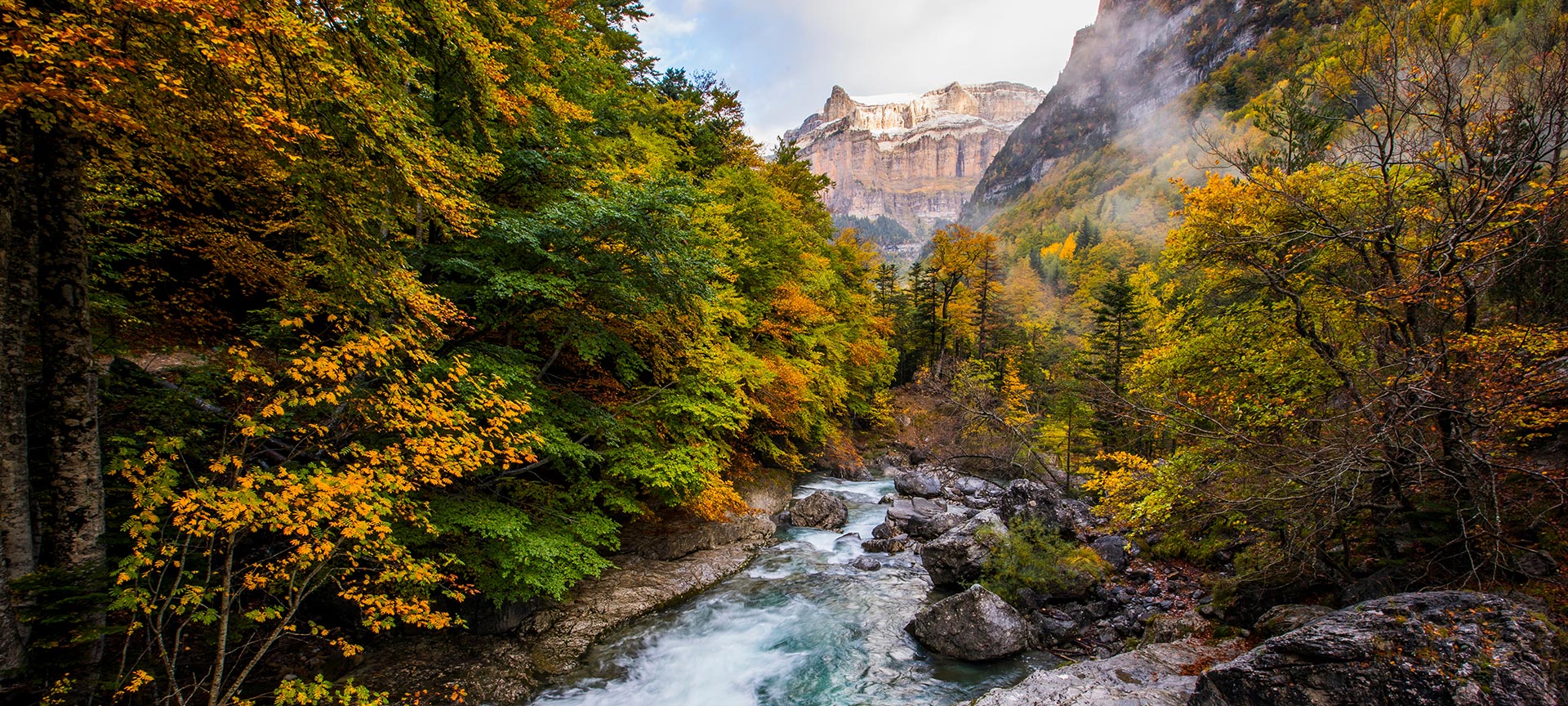
THE COLA DE CABALLO VIA THE GRADAS DE SOASO
The classic Ordesa y Monte Perdido National Park route
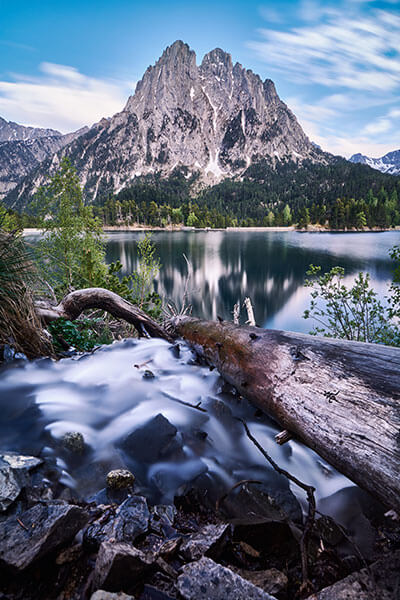
AIGÜESTORTES I ESTANY DE SANT MAURICI NATIONAL PARK
A haven of rivers, streams and more than 200 lakes
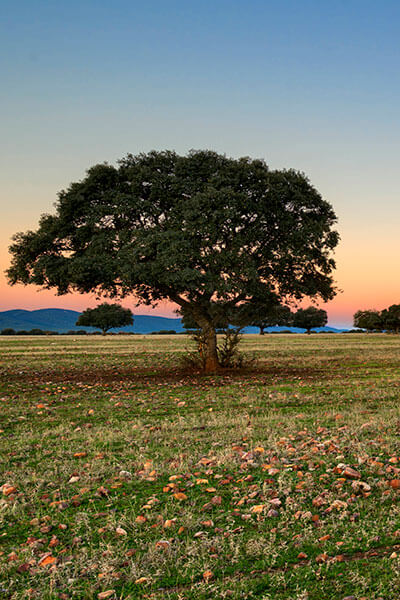
CABAÑEROS NATIONAL PARK
The best example of Mediterranean forests
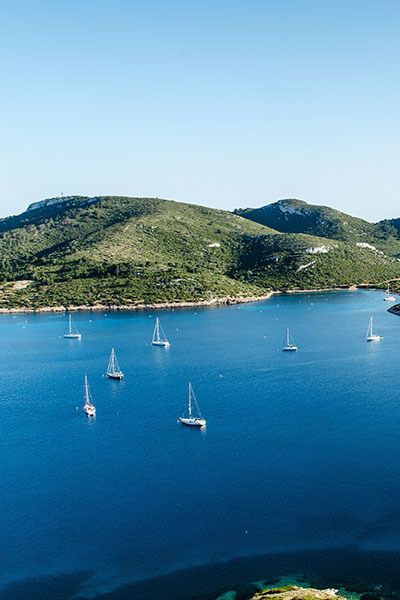
CABRERA MARITIME-TERRESTRIAL NATIONAL PARK
Poseidon's blue oasis
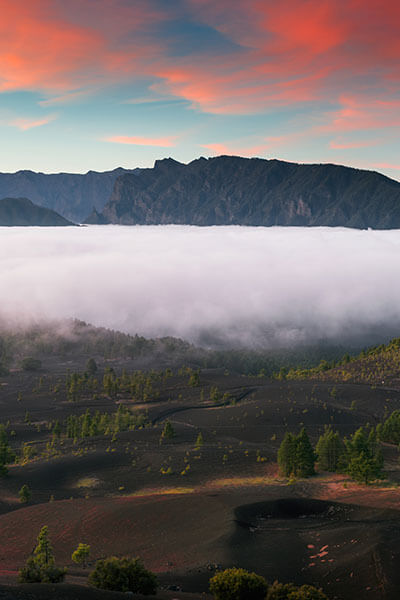
CALDERA DE TABURIENTE NATIONAL PARK
A huge "garden" under the stars
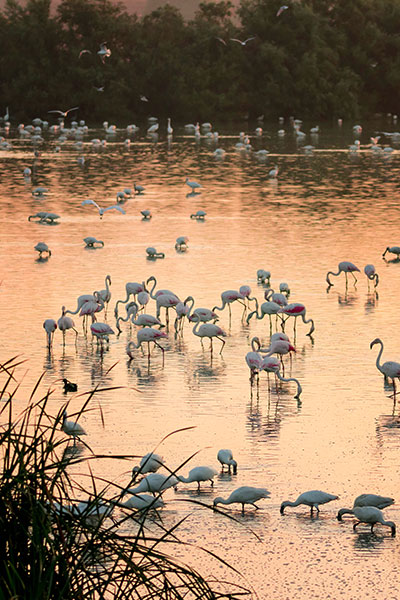
DOÑANA NATIONAL PARK
Changing scenery with thousands of birds
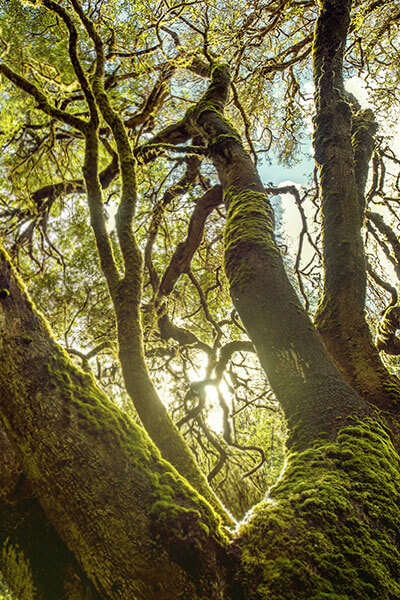
GARAJONAY NATIONAL PARK
Bewitching Canary Island forests
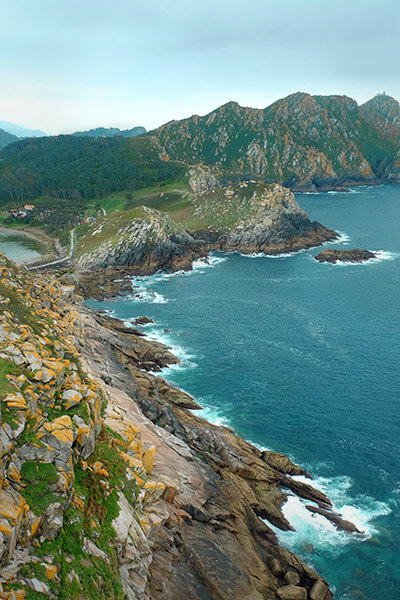
ATLANTIC ISLANDS OF GALICIA MARITIME-TERRESTRIAL NATIONAL PARK
A delight formed by water
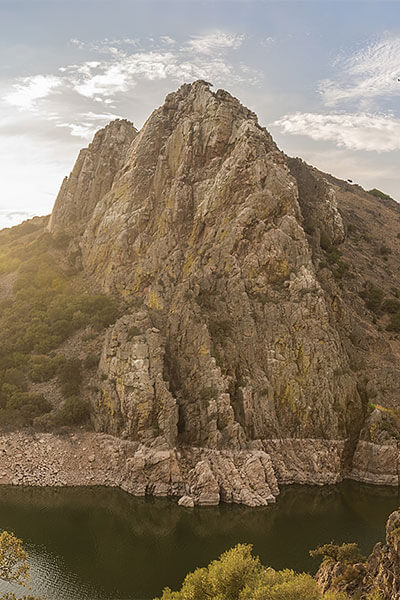
MONFRAGÜE NATIONAL PARK
One of Europe's last unspoiled ecosystems
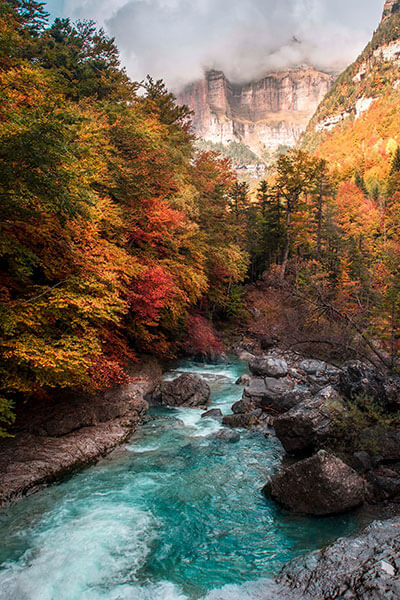
ORDESA Y MONTE PERDIDO NATIONAL PARK
The call of the wild at 3,000 metres
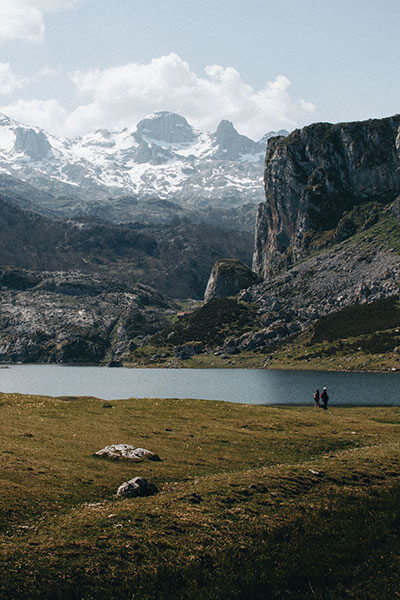
PICOS DE EUROPA NATIONAL PARK
The mountains and forests of the brown bear
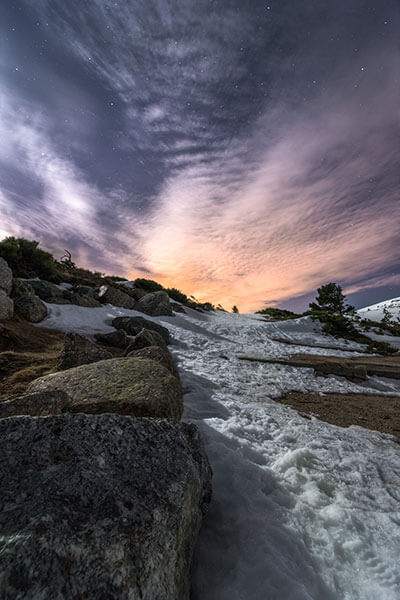
SIERRA DE GUADARRAMA NATIONAL PARK
Wild nature in the centre of Spain
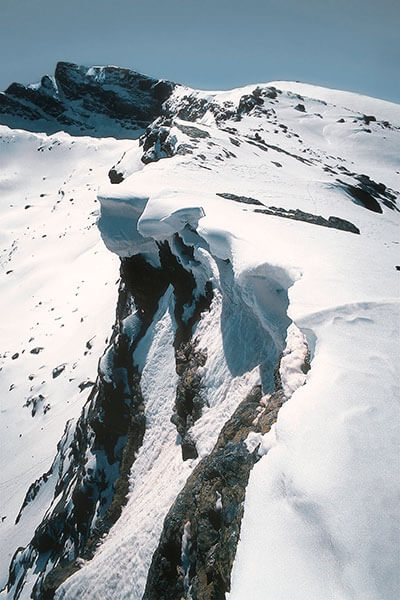
SIERRA NEVADA NATIONAL PARK
High mountains in the heart of Andalusia
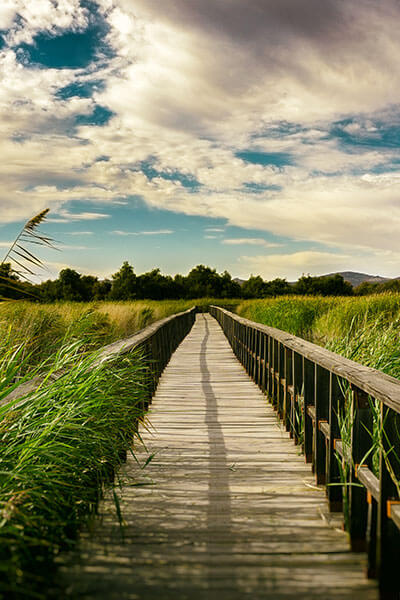
LAS TABLAS DE DAIMIEL NATIONAL PARK
A wetland that is virtually unique in Europe
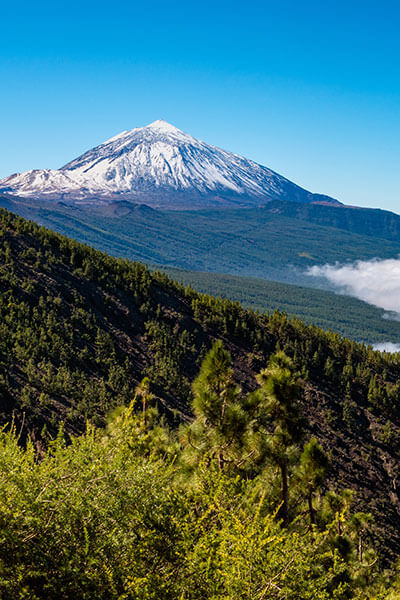
TEIDE NATIONAL PARK
Life around the tallest peak in Spain
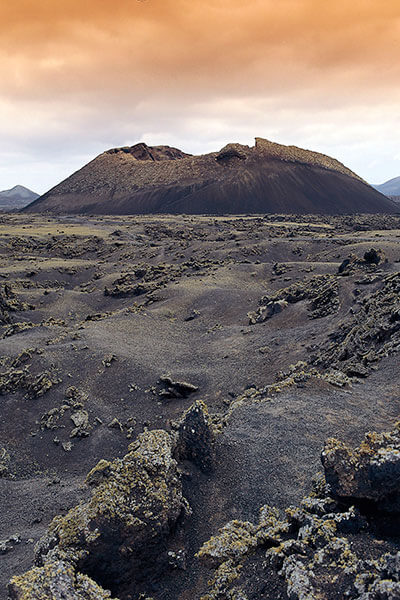
TIMANFAYA NATIONAL PARK
The land of fire and volcanoes
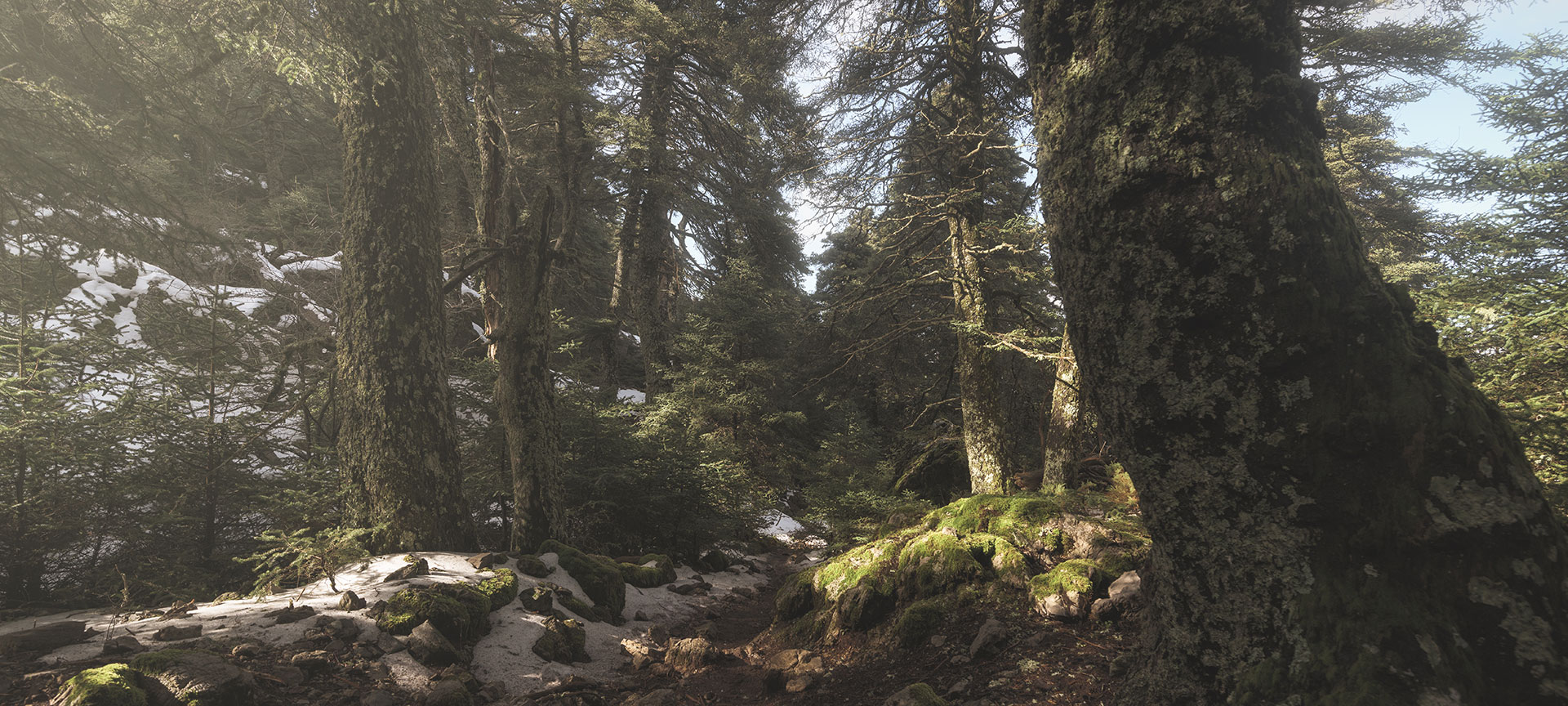
SIERRA DE LAS NIEVES NATIONAL PARK
White villages, against a natural background full of contrasts
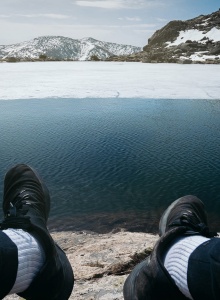
Peñalara circular route

The Cares Trail
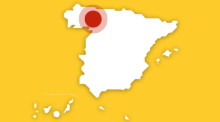
The Cola de Caballo via the Gradas de Soaso

The Volcano Trail

Senda del Río Trail

Camí de Cavalls trail

Camí de Ronda hiking trail

Caminito del Rey Trail
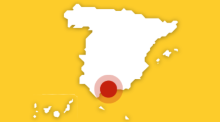
The Garganta de los Infiernos Trail
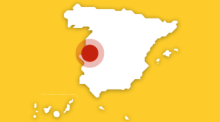
Las Caras Trail

Los Pantaneros de Chulilla Trail

Aigüestortes i Estany de Sant Maurici National Park

Cabañeros National Park
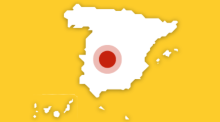
Cabrera Maritime-Terrestrial National Park

Caldera de Taburiente National Park

Doñana National Park
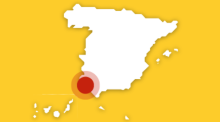
Garajonay National Park

Atlantic Islands of Galicia Maritime-Terrestrial National Park

Monfragüe National Park

Ordesa y Monte Perdido National Park

Picos de Europa National Park

Sierra Nevada National Park
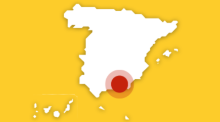
Las Tablas de Daimiel National Park
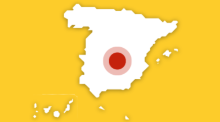
Teide National Park

Timanfaya National Park
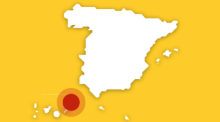
Sierra de las Nieves National Park
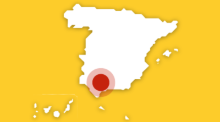
Sierra de Guadarrama National Park

Itineraries not to be missed
Do you want to know why Spain is so special for hiking or learn more about specific activities? Below are several ideas you’re going to love:
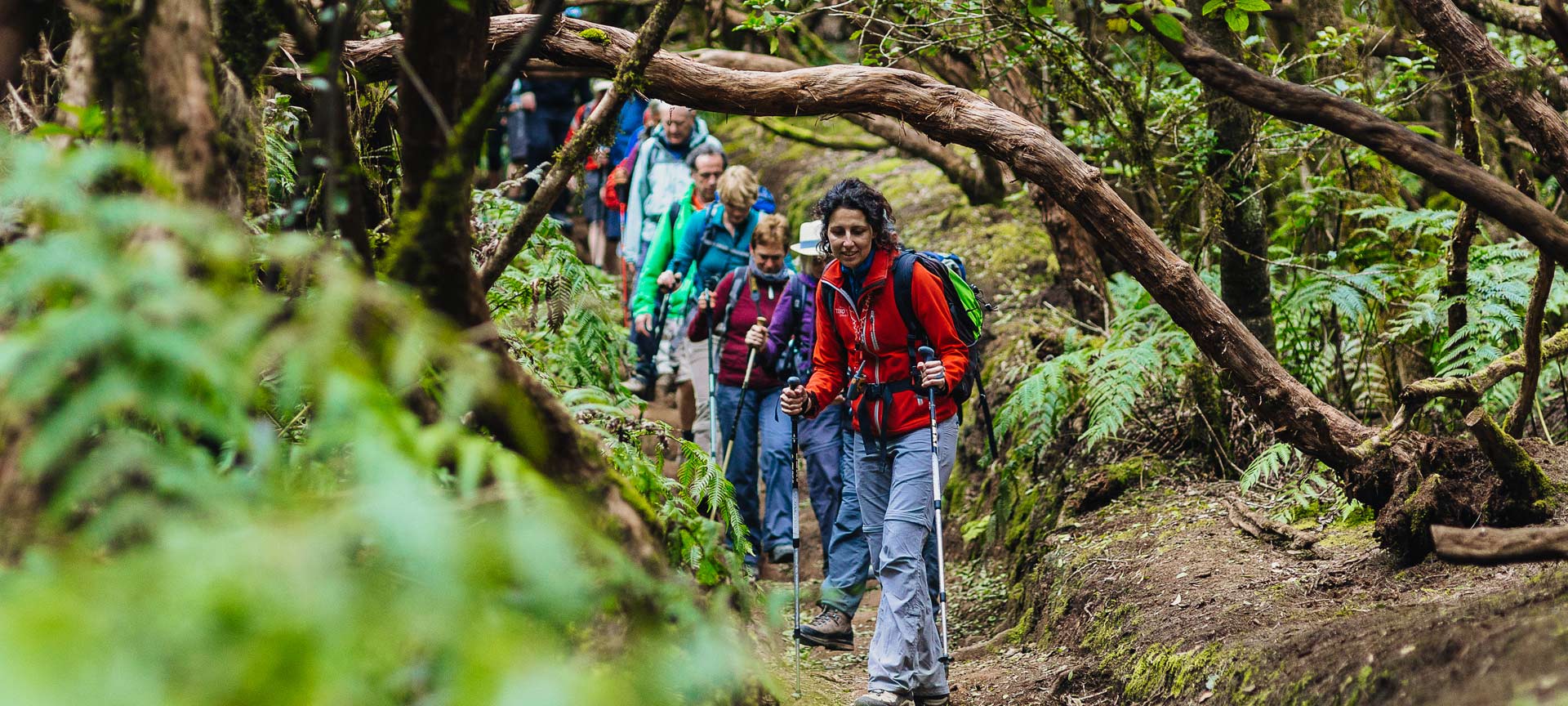
Sport and adventure
Hikers, 10 reasons to travel to Spain
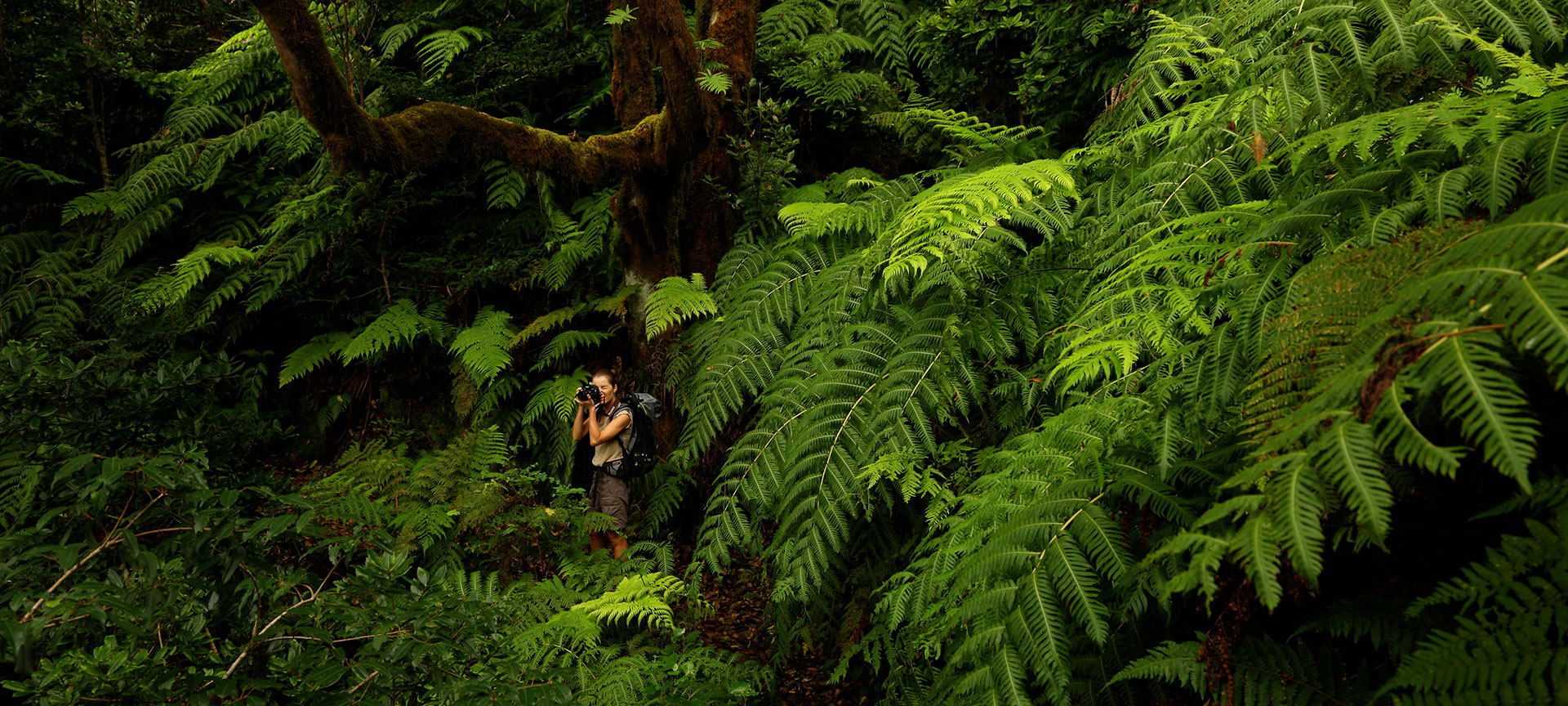
Some of the best hiking routes on the Canary Islands
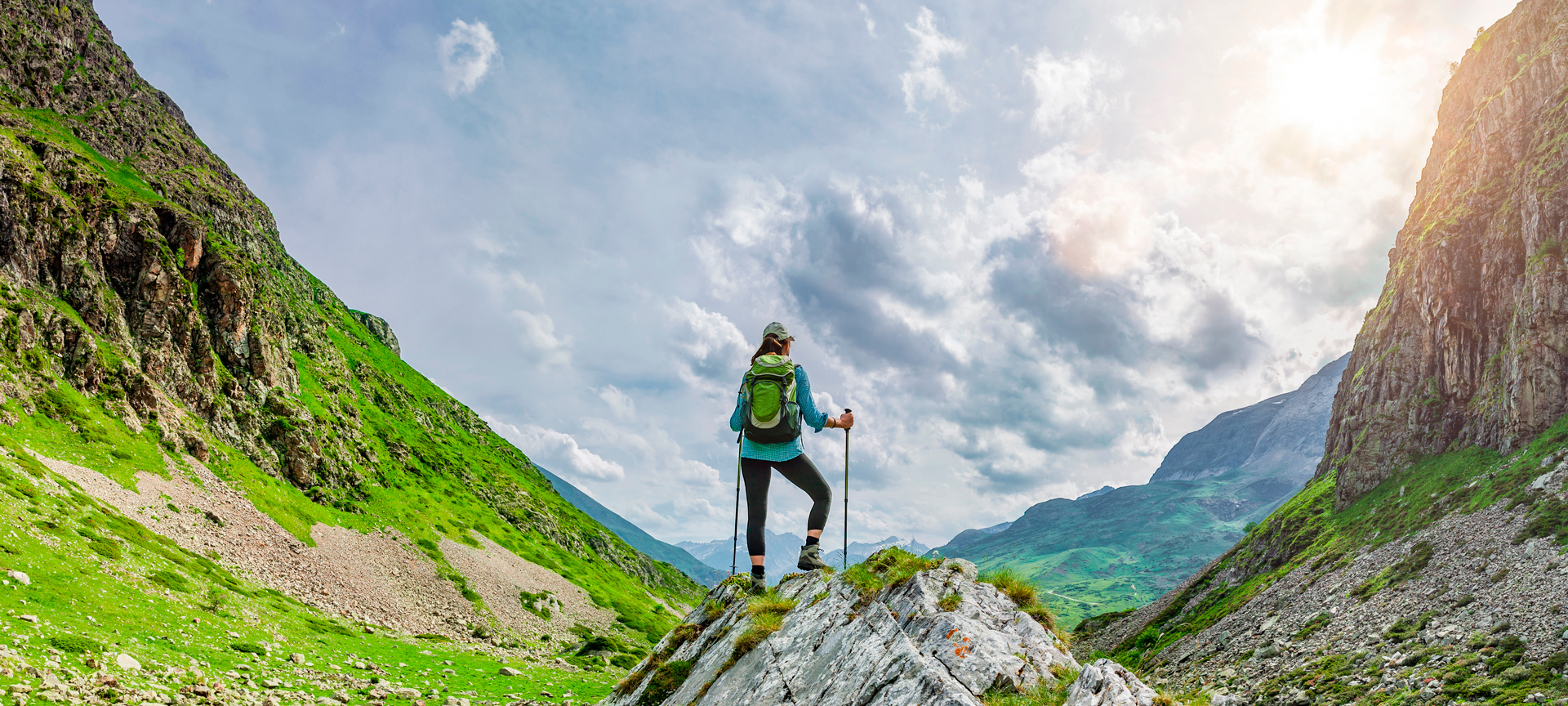
Long-distance walking routes in Spain
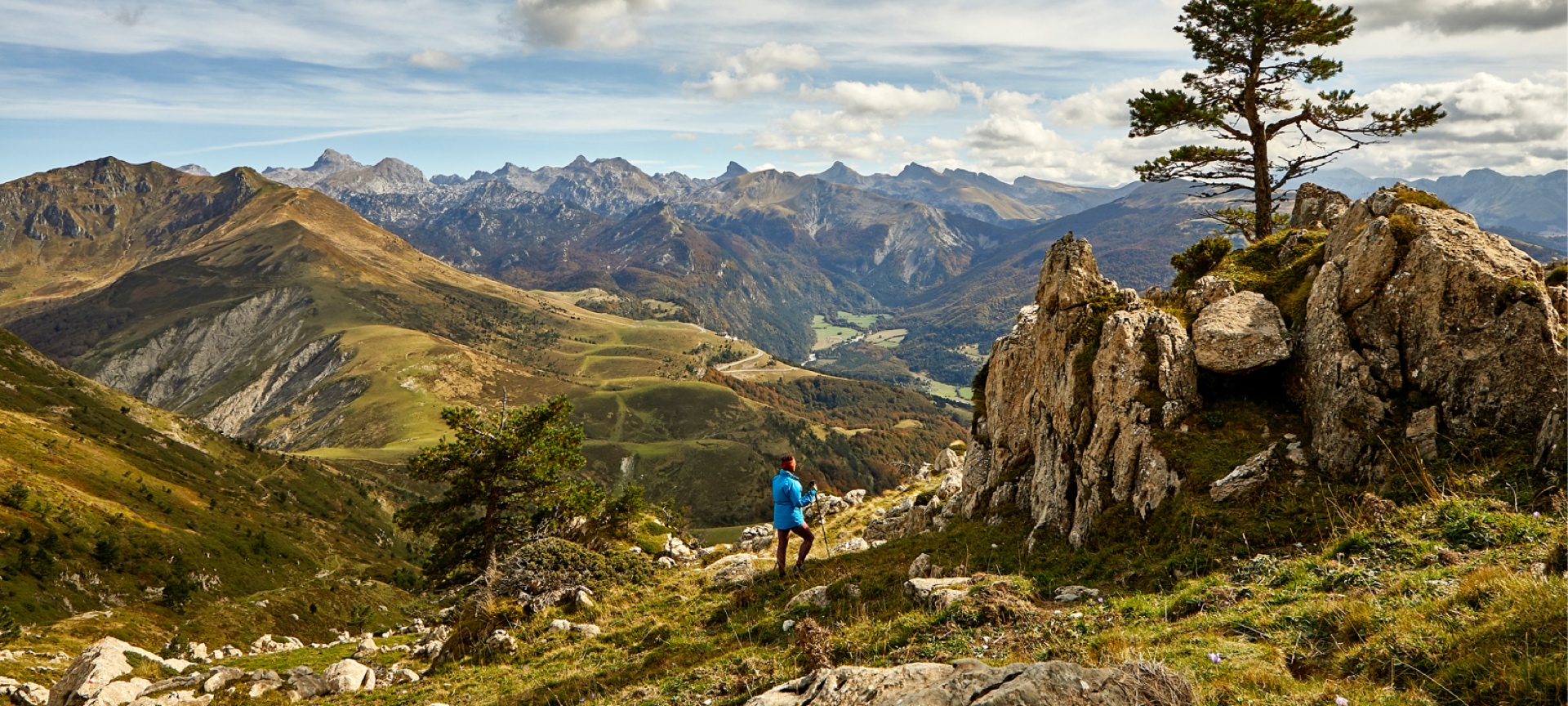
What to do in Navarre: hiking in the Irati Forest
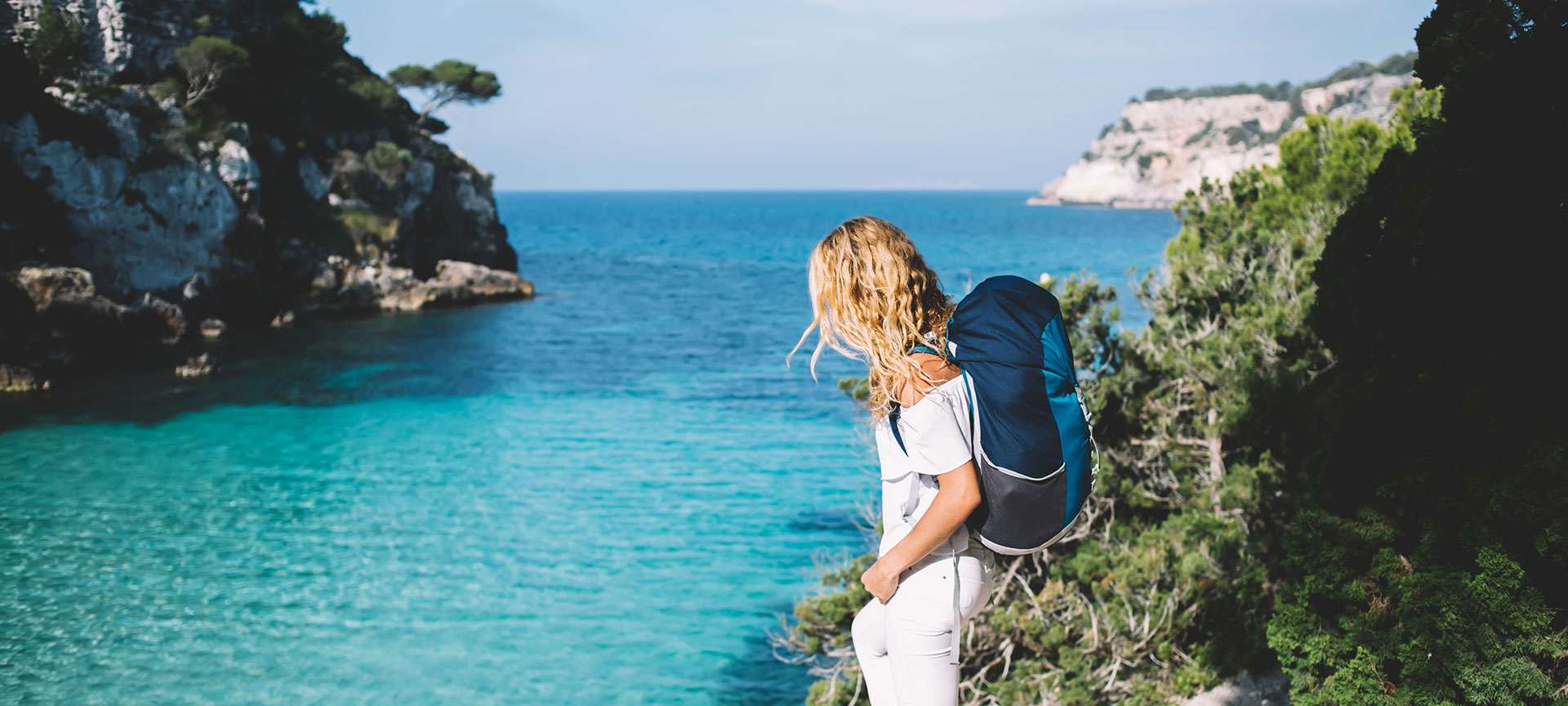
Travelling alone: the best trails in Spain for reconnecting with yourself.
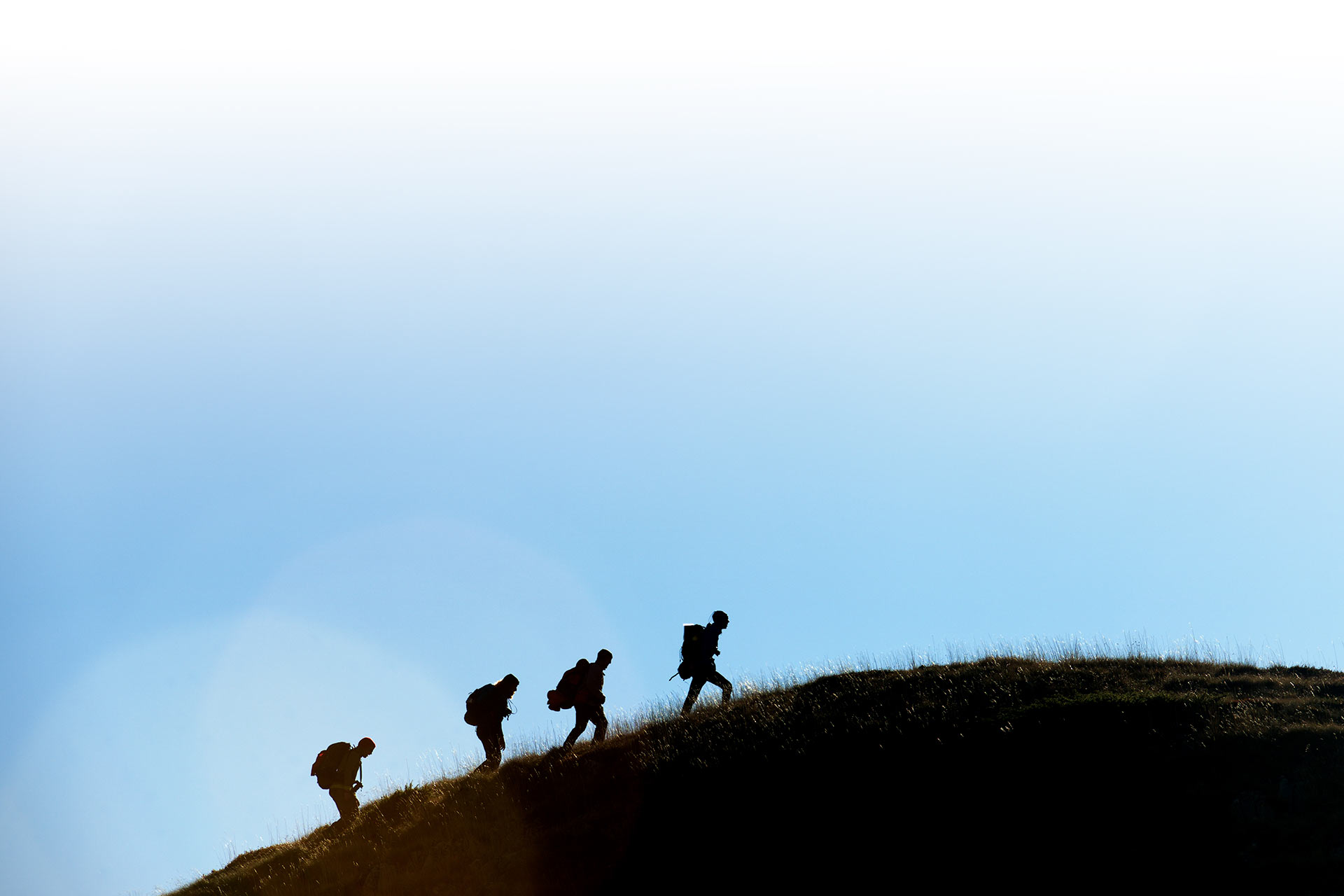
Tips and information on hiking
What type of hiking paths are there in Spain?
The Gran Recorrido (GR) long-distance footpaths cover distances of over 50 kilometres and therefore require several days to do. These routes are marked with red signs. These long-distance GR trails also include European footpaths, which link various countries. Specifically, the European E3 (from Turkey to Santiago de Compostela), E4 (from Cyprus to Ceuta), E7 (from Serbia to El Hierro Island), E9 (from Estonia to Tarifa) and the E12 (from Slovenia to Tarifa via the Mediterranean) all pass through Spain.
The Pequeño Recorrido (PR) (short hiking routes) are between 10 and 50 kilometres long, and can be done in one or two days. They are marked with yellow signs.
The local footpaths (SL) are the shortest, covering distances of under 10 kilometres. They are marked with green signs, and are the most highly recommended (as they have a very low level of difficulty) for doing with children, or for people with low levels of physical fitness.
More information: FEDME (the Spanish Federation for Mountain and Climbing Sports).
However, not all the trails run along official footpaths, meaning that some of the signposting may be different.
What are the Nature Trails?
They are trails covering more than 10,000 kilometres built on former infrastructures (railways tracks, canals, waterways, livestock trails, etc.) and are intended for use by hikers, cyclists and horse riders. Apart from doing sport, going on these routes gives people an opportunity to discover places associated with old professions or local culture. You can find information, maps and GPS downloads of the Nature Trails here .
What are the Greenways (Vías Verdes)?
More than 3,100 kilometres of old disused railway tracks that have been reconditioned into paths for cyclists and hikers. You can choose from more than 120 itineraries distributed throughout Spain.
What are the Blue Trails?
These are routes that connect the beaches and ports awarded Blue Flag status and which, apart from being beautiful walks, contribute to caring for the coastline and the environment. You can find maps of the routes, distances, times and difficulty levels here .
What is the best time of the year to enjoy hiking in Spain?
Spain boasts over 3,000 hours of sunshine a year and, depending on the area, you can go hiking all year round. Nevertheless, the best times are springtime (the days are longer and it is the flowering season ) and autumn , to avoid the winter snow in certain areas of the mountains, and potentially high summer temperatures.
Do you need to be a member of a federation to go hiking in Spain?
You don't need to be a federation member to go hiking in Spain. However, if you want to take part in any of the competitions that are organised –like mountain races–, you must obtain a licence from the federation in your country, and show you have civil liability and accident insurance with coverage in Spain. It's always a good idea to take out insurance to cover any incident in the setting where you are planning to go hiking. You should seek advice beforehand to make sure you choose your insurance based on the actual activity (its difficulty, among other aspects) you're planning to do.
Are the National Parks free to enter?
Spain’s National Parks are free of charge and are open all year round. They all have visitor centres where you can find information about the characteristics of the routes. If you need advice, check with a club, association or a professional guide.
Can you camp along the routes?
Spain has tight restrictions in this respect, therefore it would be wise to check which permits are necessary in controlled camping areas before embarking on any route. Remember that it is usually prohibited to light fires and leave litter.
Where can you stay along the routes?
Spain has a wide range of rural accommodation (both classic and modern design, or original locations like tree houses perched high in the trees), campsites and mountain shelters in direct contact with the natural environment.
If you're planning on taking a long-distance GR route, ask beforehand in the tourist office or visitor centre about its level of difficulty and about nearby shelters.
Where should I call in the event of an emergency?
In case of need, call the emergency telephone number 112. There is an app for Android and iOS .
What other activities can I do on a hike?
You can take advantage of other activities along the routes, such as birdwatching. Many of these hiking paths are associated with important cultural attractions, such as the famous Camino de Santiago, the Romanesque route in the Boí valley, and the Silver Route.
If you are travelling with children, there are some interesting routes such as the ones in Teruel following the trail of the dinosaurs.
There are even stargazing tours at night in places that are world-famous for their clear skies, such as those on the Canary Island of La Palma.

Choose between thousands of activities to have your best holiday.
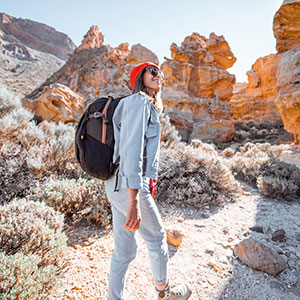
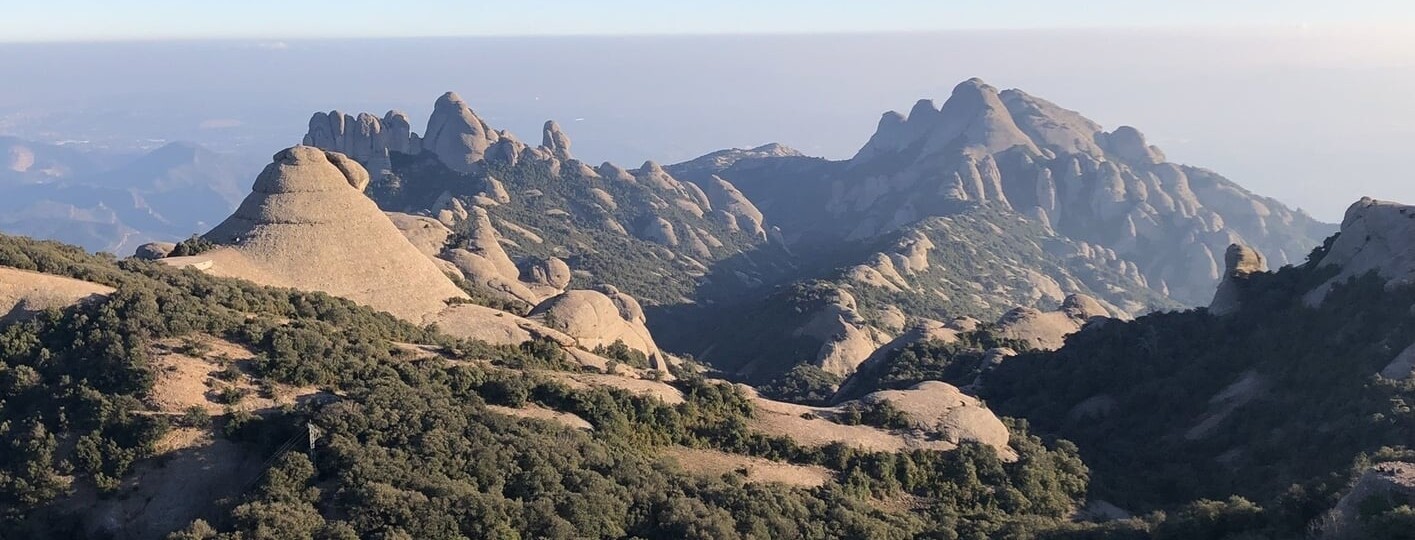
15 Best Hikes in Spain + Trail Map
Home | Travel | Europe | Spain | 15 Best Hikes in Spain + Trail Map
There are thousands of miles to hike in Spain , with routes passing through the various natural landscapes of this beautiful country. Some of the trails in Spain run along cliffs, so they’re not suitable if you’re afraid of heights, but others go past coves with crystal clear waters, providing an amazing backdrop for your hiking adventure.
Not only is Spain the second most mountainous country in Europe, but its temperatures are usually moderate all year round, allowing you to go hiking in Spain at almost any time of year. You have many options, but if you want to hike the cream of the crop, I’ve prepared a list of the 15 best hikes in Spain that will leave you breathless.
Don’t worry if you aren’t an experienced hiker because these Spanish trails vary in terms of difficulty and duration. So, if you’re ready to discover the best trails in Spain , let’s get into it!
1. The Cares Trail, Asturias, the best hike in Spain
The Cares Trail , which starts from the Asturian town of Poncebos, is undoubtedly one of the most beautiful hikes in Spain . The route runs within the limits of the Picos de Europa National Park, one of the best national parks in Spain , so you can’t miss it.
Known as La Garganta Divina (Divine Throat), the Cares Trail takes your breath away with its landscape and the depth of its green valley, which contrasts with the crystal clear waters of the Cares River. The path is carved into the rock, so you’ll go through tunnels and gorges, and over a few bridges.
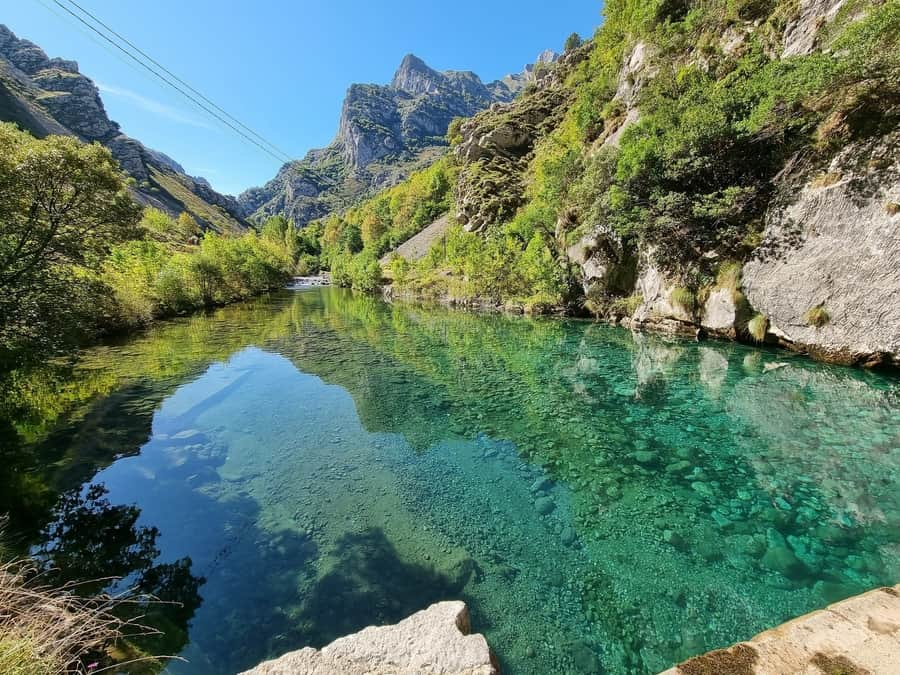
Initially, the route was created to connect the towns of Poncebos in Asturias, and Caín in León, but it ended up being one of the best hiking trails in Spain . If you start from the Asturian part, the beginning is uphill, and then you’ll go through a narrow gorge with a sandstone floor. You’ll have to stay close to the wall of the mountain, although it’s not that difficult (as long as you aren’t afraid of heights, of course).
The gorge narrows as you advance through the Leonese section, and at the end of this Spanish trail , the Caín dam and waterfall await you. While the entire route is worth it, the views along the way are just gorgeous.
Another option, if you’re traveling without a car, is to take this jeep tour (in Spanish), which takes you on an all-terrain vehicle from Cangas de Onís to Caín de Valdeón, followed by a hike on the Cares Trail.
- Duration : 7-8 hours
- Distance : 13.3 miles
- Difficulty : Hard
- When to do it : Year-round, but avoid rainy days
- Type : Out & Back
- Obstacles : Steeper slopes at the beginning, stones, goats
- Elevation : 985 ft
- Recommended accommodation : Hostal Pancebos is located at the beginning of the Cares trail
2. Camí de Cavalls, Menorca, one of the best hiking trails in Spain
The Camí de Cavalls is one of the longest hiking trails in Spain , and one of the prettiest. Its original trail, which was used to defend the coast, is 115 miles long and by going through it, you’ll get to see Menorca’s lovely natural environment.
If you want to go hiking in the Balearic Islands, the Camí de Cavalls is the best option, even if you don’t do the entire route. That said, if you’re physically fit and want to hike it in its entirety, you’ll go around Menorca’s coastline, passing through ravines, valleys, wetlands, farmland, lighthouses, trenches, and coves with pristine turquoise water.
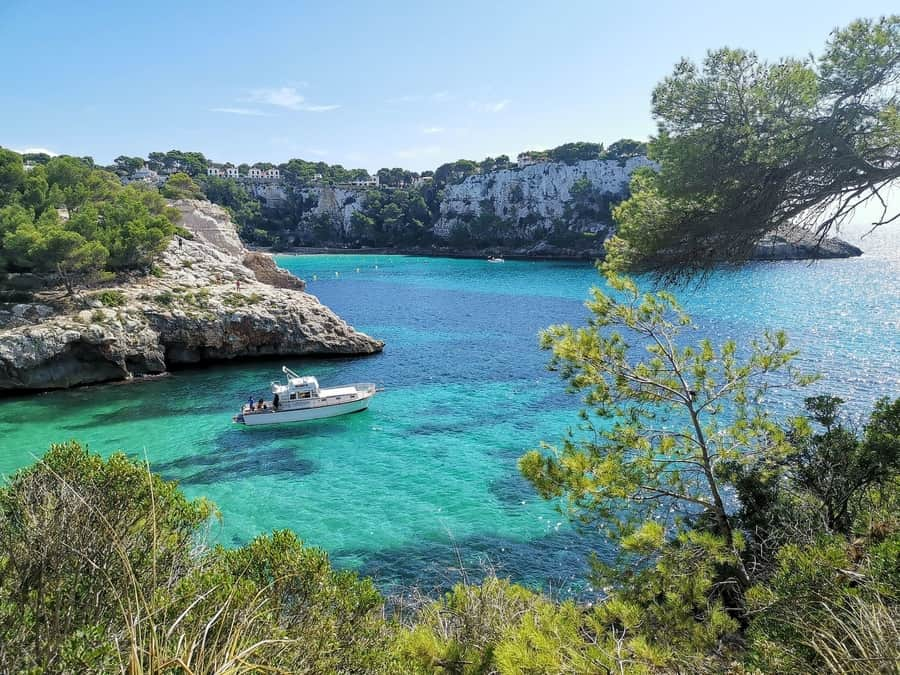
Moreover, by doing this multi-day hike in Spain , you’ll get to know first-hand the great heritage and natural wealth of this beautiful island, declared a UNESCO Biosphere Reserve.
Whether you do the whole trail or just part of it, remember to wear good shoes since most of the route is rocky. Also, keep in mind that there are parts of the path where you won’t find any lodging options for quite a few miles. As long as you plan accordingly, I can assure you that this hike in Spain is totally worth it!
- Duration : Several days
- Distance : 115 miles
- When to do it : Year-round
- Type : Loop
- Obstacles : Duration, rocky trail
- Elevation : 460 ft
- Recommended accommodation : To start the route, I recommend the spectacular Can Alberti 1740 Boutique Hotel
3. Caminito del Rey, Málaga, one of the most famous hikes in Spain
The Caminito del Rey is one of the best hiking trails in Spain due to its uniqueness, and hiking it is one of the top things to do in Spain .
Located in the province of Málaga, this path is a pedestrian walkway built into the canyon’s rock wall. There are some very narrow sections, where the width of the trail barely extends beyond one foot. Moreover, the route is nearly 330 feet above the river, so it’s not recommended for people afraid of heights.
Today, the Caminito del Rey is one of the best hikes in southern Spain . Originally, it was built because the Chorro Hydroelectric Company needed to access the area between the waterfalls for maintenance, material, and surveillance operators to pass through.

Also, King Alfonso XIII traveled to the area in 1921 to inaugurate the work. He made the trek from the Conde del Guadalhorce dam, so he had no choice but to go through this path. From that moment, people began to call it the Caminito del Rey (The King’s Path), and they still do today.
In 1989, the environment was declared a Natural Area by the Junta de Andalucía. The significance of the Desfiladero de los Gaitanes Natural Park, the footbridges over the hydroelectric dam, and the Paleolithic cave of Ardales makes this one of the best trails in Spain .
General admission, which costs about €10, includes all safety gear and must be booked in advance here . However, if you prefer to do a guided version of this trail, I recommend this half-day excursion , which includes admission to the footbridge, stunning views of the Gaitanes Gorge, and a visit to the King’s Armchair. You’ll also learn more about the route’s history and geological value from a knowledgeable guide.
- Duration : 3-4 hours
- Distance : 4.2 miles
- Difficulty : Moderate
- When to do it : Avoid days with inclement weather because it usually closes
- Type : One-way
- Obstacles : You must wear a helmet
- Elevation : 899 ft
- Recommended accommodation : La Posada del Conde is close to the beginning of this route
4. Congost de Mont-Rebei, Lleida, an amazing hike in Spain
The Congost de Mont-Rebei is one of the most spectacular hiking trails in Spain . Its vertical walls, which are 1,640 feet tall, separate the provinces of Lleida and Huesca.
If you want to do the complete route that starts from La Masieta in Lleida and ends in Montfalcó in Huesca, you’re looking at a total trip of about 10 miles. Most hikers do the shorter version, which turns back after three miles, once you reach the Congost de Seguer suspension bridge, which joins the two provinces.

If you do continue on this Spanish trail , don’t worry because you’ll have several rest stops where you can take a break and admire the stunning surroundings. Just be aware that towards the end of the hike, there is a steeper slope.
Overall, this is one of the best hikes in northern Spain , thanks to the Noguera Ribagorçana River, which crosses the Montsec mountain range. This creates the Mont-Rebei gorge, which is known for its huge vertical walls, so it’s worth seeing.
- Duration : 2 hours (if you turn around the Congost de Seguer suspension bridge)
- Distance : 3.1 miles (if you turn around on the Congost de Seguer suspension bridge)
- Obstacles : Stairs, bridges, rocky terrain
- Elevation : 715 ft
- Recommended accommodation : La Casa de Piedra , in front of the Congost de Mont-Rebei, is the ideal place to start the hike
5. Camino de Santiago, the most impressive hike in Spain
The Camino de Santiago is one of the most famous hiking trails in Spain , not only nationally, but throughout the world.
It’s true that there are many routes that end in Santiago de Compostela , one of the most beautiful cities in Spain . You have the Camino Francés (the French Way), which is the traditional Jacobean route that most international pilgrims do. There is also the Vía de la Plata , which comes out of Andalusia and Extremadura and goes through Galicia, the Portelas do Padornelo, and A Canda.

Another Spanish trail that leads to Santiago de Compostela is the Camino Primitivo (the Original Way), which was followed by the first pilgrims who arrived from the Kingdom of Asturias. There is also the Camino Portugués (the Portuguese Way), which became popular with the independence of Portugal. Yet another path is the Camino del Norte (the Northern Way), which goes along the Asturian-Galician coast and dates back to the time when the tomb of the apostle Santiago was discovered.
All of these paths are multi-day hikes in Spain , so you should be in good shape if you plan on doing it. Again, this is one of the best trails in Spain , thanks to its atmosphere, its significance, the landscape, and the people you’ll meet along the way. So, I recommend doing at least one of these caminos if you can!
- Distance : Depends on the path you choose
- When to do it : It’s better to do it when it’s not as cold
- Obstacles : Duration
- Elevation : Depends on the path you choose
- Recommended accommodation : When you arrive, the magnificent Hostal Reis Catolicos , one of the best paradores in Spain , will be waiting for you
6. Barranco de Masca, Tenerife, the best hike in Spain’s Canary Islands
The Barranco de Masca is one of the best hikes in Spain and one of the most spectacular things to do in Tenerife . It’s the second most-visited natural enclave on the island, surpassed only by Mt.Teide.
This hiking route in the Canary Islands begins in the Caserío de Masca, a remote village raised between mountains. The trail is most well-known for its ascent and descent along the Masca ravine, which leads to the beach of the same name.

When we did this hiking route in Tenerife , it was possible to take a boat from Masca Beach to Los Gigantes. Unfortunately, the pier isn’t operational now, so you have to do the return on foot, which makes this one of the most challenging treks in Spain .
If you decide to do this route, I recommend you read our guide to the Barranco de Masca . There, you’ll find more information about the permit, schedules, requirements, and other useful tips about this hike.
Finally, this is one of the best routes for winter hiking in Spain , thanks to the mild climate that Tenerife boasts all year round.
- Duration : 3 hours for the descent, 4 hours for the ascent
- Distance : 3.1 miles one-way (6.2 miles round-trip)
- Difficulty : The descent is moderate, the ascent is hard
- When to do it : Year-round, but avoid weekends if possible
- Obstacles : Unevenness during ascent, slippery terrain
- Elevation : 2,460 ft
- Recommended accommodation : The Sweet Home Masca is the perfect rural getaway in Tenerife
7. Camí de Ronda, one of the best hikes in Spain along the Costa Brava
One of the best places for hiking in Spain is the Costa Brava, particularly along the Camí de Ronda . If you do the entire route (260 miles), you’ll probably leave from Blanes and end in Portbou, although you can modify the route to shorten it or make it a circular route. In any case, this trail stands out for its charming towns, beaches, and coves that you’ll find along the way.
Moreover, the name of this hiking trail in Spain became popular in the 19 th and 20 th centuries when it was used by the carabineros and the civil guard to carry out ‘the rounds’ and check for smugglers along the coast.
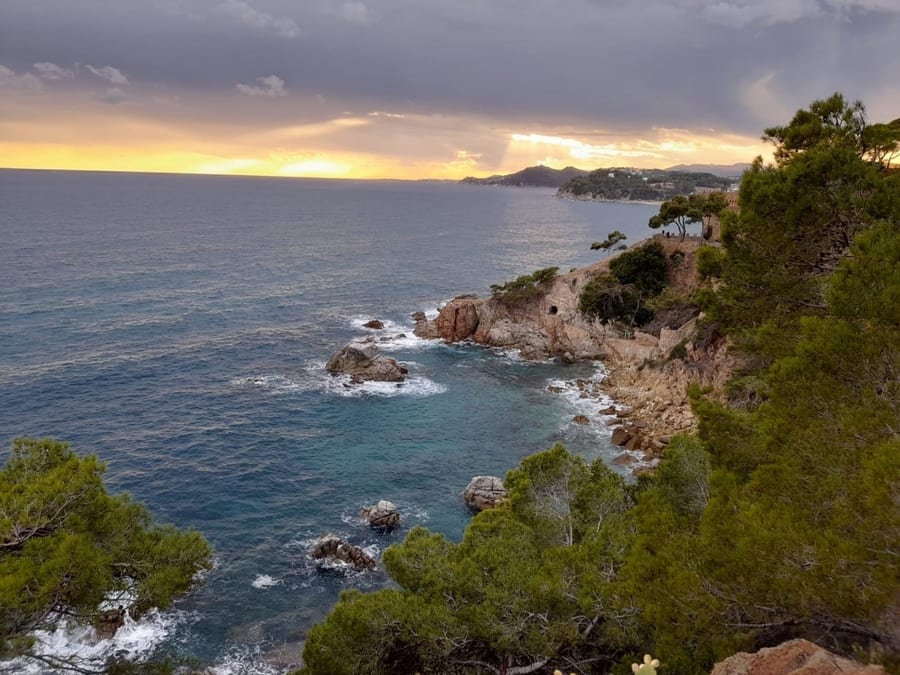
Something to keep in mind if you want to do this hike is that you must have insurance that covers hiking and similar activities. When we did it, we bought a policy with Heymondo travel insurance , and I highly recommend it.
5% OFF your travel insurance
Whether you do the entire route or just a section, this path will allow you to see the sea and even take a dip along the way. The key thing to remember is good mountain/hiking shoes and trekking poles and, depending on the time of year, a hat to block out the sun. Also, you’ll want to bring a swimsuit so you can quickly jump into the water to cool off!
- Distance : Depends on which route/section you do
- Difficulty : Depends on the section, but generally moderate
- Obstacles : Slopes, continuous ups and downs
- Elevation : Depends on the section, but the path is general even
- Recommended accommodation : If you do the section that passes through Cadaqués, don’t miss the Hotel Playa Sol
8. Garganta de los Infiernos, Cáceres, another one of the best hikes in Spain
One of the most beautiful trails to go backpacking in Spain is the Garganta de los Infiernos trail . It’s in the Garganta de los Infiernos Nature Reserve in the Valle del Jerte of Cáceres, which is known for its springtime cherry blossoms.
I highly recommend this hiking trail in Spain since it has plenty of shade and natural pools. Besides being good for taking a refreshing swim, the route offers lovely views of the entire valley and gorge.
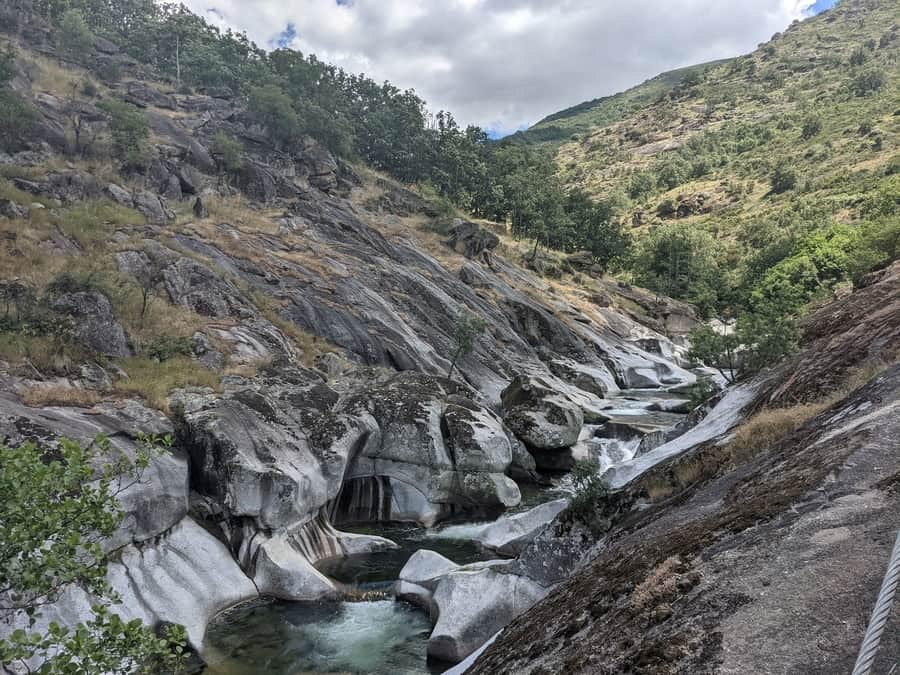
As you can imagine, the surroundings are very pretty, especially the waterfalls. Moreover, part of the route passes through the Carlos V Trail, which is named after Emperor Carlos V, who used the path as a shortcut on his way to Laredo.
Also, the area of Los Pilones , with its giant kettles, and the Chorreo de la Virgen , which has a tremendous waterfall that can be seen from the Chorreo viewpoint (in summer may be dried), are two of the most attractive parts of the trail.
- Duration : 5 hours
- Distance : 9.3 miles
- When to do it : Year-round, although it is prettier in spring thanks to its cherry blossoms, and in the summer, so you can swim. It’s best to avoid winter when ice sheets form along the path.
- Obstacles : Narrow trails and stretches of uneven terrain
- Elevation : 2,260 ft
- Recommended accommodation : La Hospedería Valle del Jerte , in the middle of the valley, is a lovely hotel with a pool and solarium
9. Cola de Caballo through the Gradas de Soaso waterfalls in Ordesa, Spain
The Cola de Caballo path is the most famous hike in Spain ’s Ordesa Valley, and one of the best-known routes in the Pyrenees.
By doing this trek, you’ll be able to go into the long glacial valley of Ordesa, which was declared a UNESCO World Heritage Site in 1997 and is considered one of the most popular national parks in Spain .
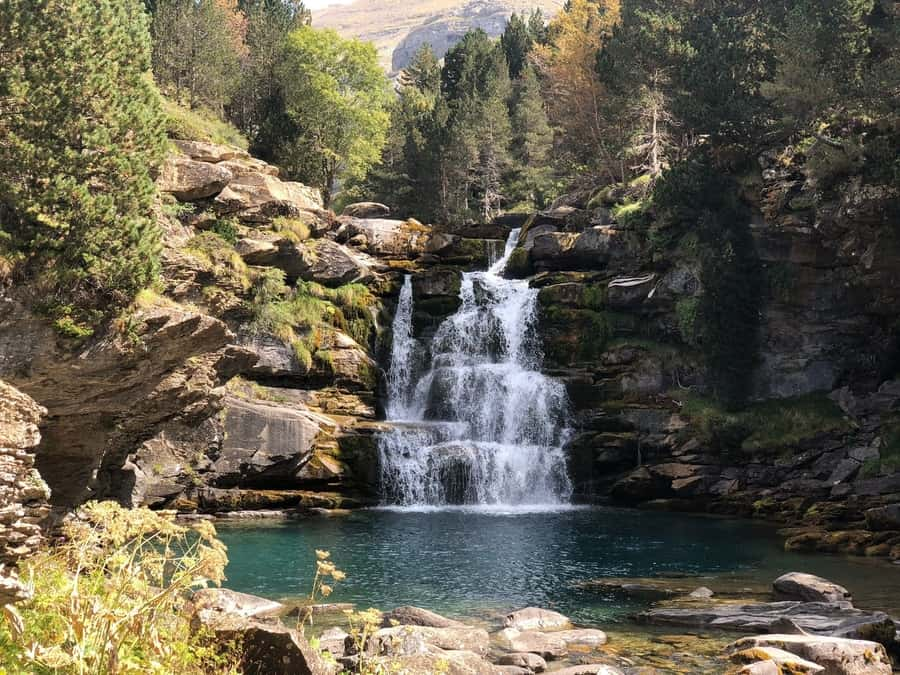
This hike in Spain’s Pyrenees mountains begins in the Pradera de Ordesa and follows the Arazas River through the valley until it reaches the Soaso waterfalls. During the hike, you’ll be able to admire the walls of the valley, which have been excavated by the erosion of the ancient glacier. You can also enjoy the various waterfalls of the Arazas River, such as the Arripa and Estrecho falls.
As one of the best hikes in Spain , this route is super popular, so there are usually a lot of people here, especially in the summer.
- Duration : 5-6 hours
- Distance : 10.9 miles
- When to do it : Spring, summer, or fall
- Obstacles : The length
- Elevation : 1,640 ft
- Recommended accommodation : The Edelwesiss Hotel , in the town of Torla, is the best place to stay along this route
10. La Pedriza, Madrid, a great place to go hiking in Spain
There are many hiking trails to do in the Sierra de Guadarrama, but if you’re looking for one of the best hikes in Spain that you can do from Madrid, I recommend the La Pedriza-Canto Cochino-Charca Verde route near Manzanares el Real.

This is a gorgeous path through the mountains of Madrid, and a hike that you can do as a family. The first section, from Pedriza to Canto Cochino, takes about 30-40 minutes, with the Manzanares River on your left. You’ll arrive at a lookout point offering beautiful views of La Pedriza.
Along the path to Charca Verde, you’ll pass two other lookouts with views of the highest peaks of the Sierra de Guadarrama. You’ll love the entire route, so if you’re in central Spain and want to enjoy fresh air and nature, this is an awesome hike in Madrid you should do.
- Duration : 4 hours
- Distance : 7.5 miles
- When to do it : Year-round, although there can be slippery rocks when it rains
- Obstacles : Small waterfalls
- Elevation : 1,653.5 ft
- Recommended accommodation : Don’t hesitate to stay at the Hotel Rural La Pedriza Original , which has elegant rooms, a library and TV room, a rustic garden, and a playground.
11. Saliencia Lakes, Asturias, one of the best hikes in Spain in the north
The Saliencia Lakes are in the beautiful Somiedo Natural Park and boast one of the best hikes in northern Spain .
The trail is in southern Asturias, near the border with Castilla y León. Its four glacial lakes (Cueva, Calabazosa, Cerveriz, and Almagrera) are part of the Somiedo Biosphere Reserve and have been declared a Natural Monument .

The route starts from Alto de la Farrapona in Somiedo, and while you should be in good shape, you don’t need to be an experienced hiker to do it.
The foliage in the area takes on a lovely color from September to December, which is why I think it’s one of the best Spanish hikes to do in autumn. I suggest staying here for at least one day so you can see this impressive park, including its brown bears, chamois, and other native species.
- Duration : 6-8 hours
- Distance : 8.7 miles
- Obstacles : Long path
- Elevation : 1,312 ft
- Recommended accommodation : The Apartamentos Lagos de Saliencia are right in Saliencia, and they’re very nice
12. Monte Pindo, Galicia, among the most famous hikes in Spain
The climb to Mount Pindo , also known as the Celtic Olympus, is one of the best places to hike in Spain during the summer.
This route starts from the San Clemente do Pindo church, in front of San Pedro Beach. Along the trail, and as you go up, you’ll be able to enjoy spectacular views of the Costa da Morte. The vantage point is even better at the peak of A Moa, which is nearly 1,970 feet high.
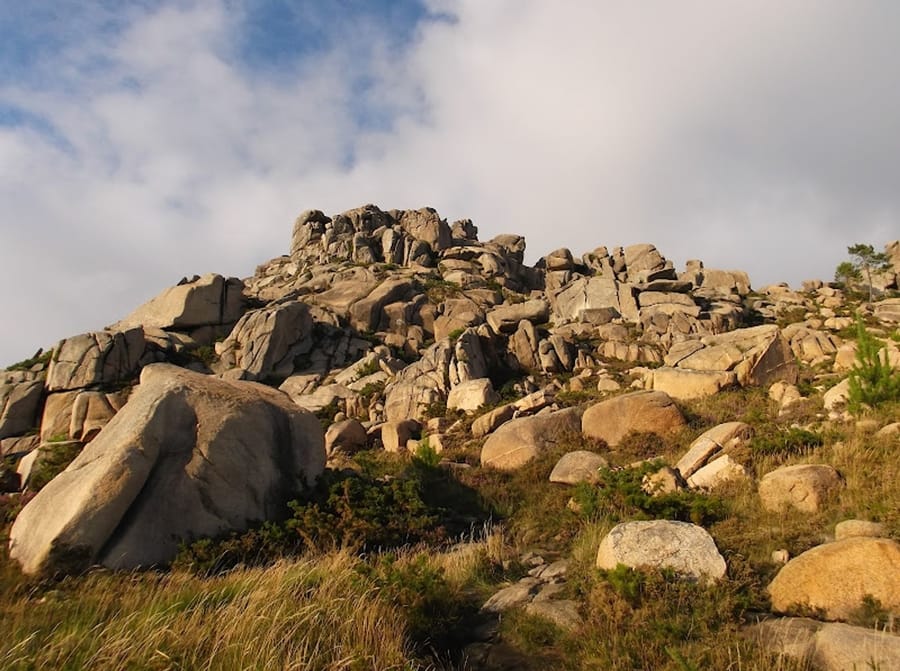
As you do this Spanish hike , you’ll go between rocks, granite cliffs, pine trees, and ferns, and you’ll pass through the remnants of the medieval castle of San Xurxo, which once defended the coast against pirates. Also, don’t forget to look at O Guerreiro, a famous rock formation that looks like a giant human.
Finally, you can also do this hiking trail in a circular manner, and with less unevenness, if you start from O Fieiro.
- Distance : 6.2 miles
- When to do it : Year-round, although it’s best to avoid rainy days
- Obstacles : Formations can make it difficult to navigate the terrain
- Elevation : 2,058 ft
- Recommended accommodation : Stay in O Pindo, in the Hospedium Morada da Moa
13. Ruta del Agua Buñol, Valencia, the best hike in Spain to do in spring
The Hoya de Buñol water route is one of the best hikes in Spain and one of the natural treasures of Valencia. Plus, it’s only 25 miles from the capital city.
The trail starts at the Parque de San Luis, in Buñol , and continues along the Paseo del Parque Fluvial , next to the Buñol riverbed. Along the route, you’ll pass by the Molino Galán , next to a large chimney that dates back to the town’s significant paper industry. Today, it’s a multi-purpose cultural center.
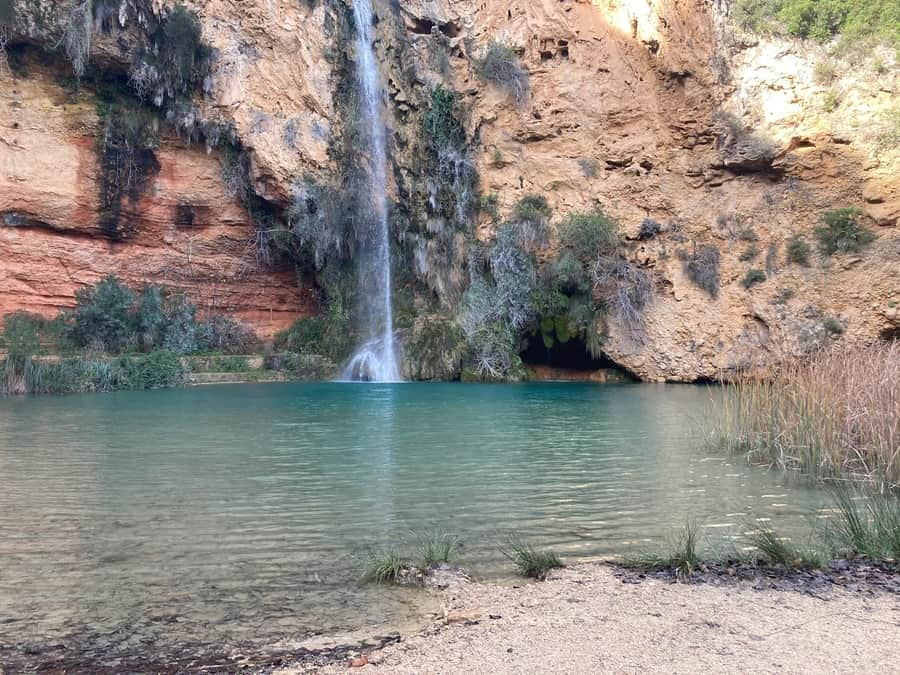
This circular route will allow you to see the Cueva del Turche, and if you visit after heavy rainfall, you can see a waterfall. You’ll also get beautiful views at the Mirador de la Cueva del Turche, and you can take a dip in the Charco Mañán, which you’ll be grateful for if you do this hike on a hot day.
This trail also passes through the Cueva de las Palomas, which is known for its beautiful waterfall. While this route is quite easy, you should pay careful attention to the trail markings. I recommend going after the coldest weather of winter has passed since it’s one of the prettiest trails in Spain during springtime.
- Duration : 3 hours
- Distance : 5.9 miles
- When to do it : It’s prettiest in the spring
- Obstacles : You’ll pass through some rocks
- Elevation : 860 ft
- Recommended accommodation : The Molino Galán in Alborache is a very nice place with a garden, outdoor pool, and barbecue area
14. Pasarelas del Vero, Huesca, a little-known hike in Spain you should do
The Pasarelas del Vero trail begins in the Plaza Rafael Ayerbe de Alquézar , one of the most beautiful small towns in Spain , so it’s the perfect option if you’re there for tourism.
Keep in mind that, before you do this hike in Spain , you must get a permit through this website . It costs about €4 for hikers over 12 years old and will specify the assigned time when you can enter the trail. With the purchase of your permit, you’ll also get a helmet and insurance coverage.
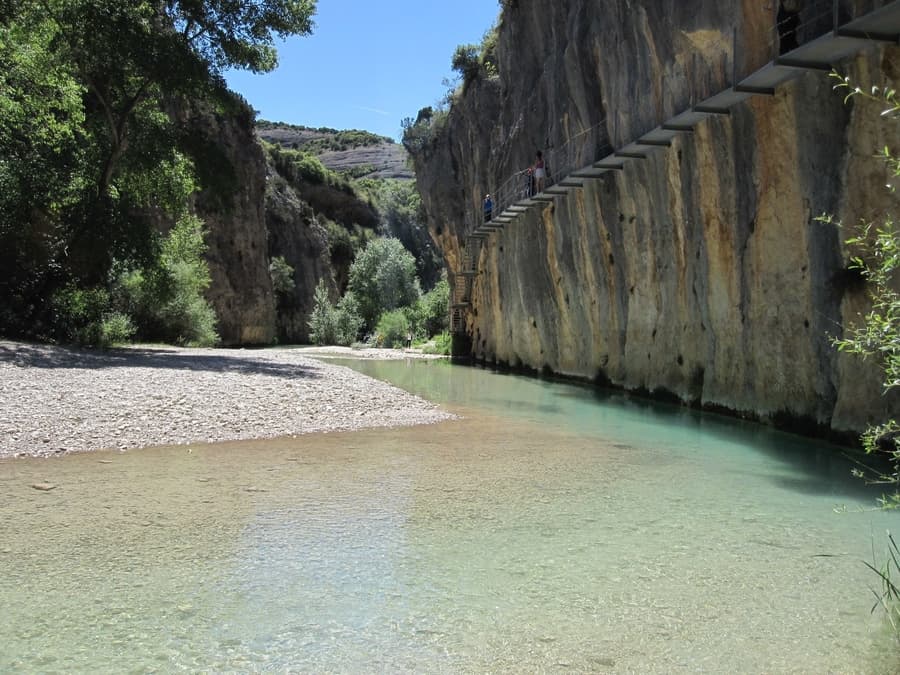
At the start of this hiking trail in Spain , you’ll descend from Alquézar to the Vero River through the Barranco de la Fuente. It’s boxed in between limestone walls, with the Collegiate Church of Alquézar at the top, near the right, and the Peña Castibián to the left.
Once you reach the riverbed, visit the Picamartillo Cave if you can. Then, continue through the suspended walkways to see the infrastructure of the old Hydroelectric powerplant. Keep ascending and go through the last section to the Mirador del Vero, where you can enjoy the spectacular views.
To return to Alquézar, you’ll pass through orchards as well as almond and olive trees, so it’s one of the best trails in Spain to hike through in the fall.
- Duration : 1.5 hours
- Distance : 1.9 miles
- Difficulty : Easy
- When to do it : Year-round, but fall is best. Try to avoid doing it on rainy days or just after, since the ground will be more slippery
- Obstacles : Irregular and narrow path areas
- Elevation : 590 ft
- Recommended accommodation : Stay at the Hotel Villa de Alquézar in Alquézar, one of the best-preserved medieval towns in Spain.
15. Sant Jeroni Summit Loop, Barcelona, another famous hike in Spain you can’t miss
Another town with some amazing hikes in Spain is Monistrol de Montserrat in Barcelona. Here, you can find the start of the Sant Jeroni Summit Loop , which takes you through the forest before becoming stone peaks as you ascend.
The trail starts at the Montserrat monastery, which you can access by cable car, from the Montserrat-Aéreo train station of the FFCC de la Generalitat. You can also get there via the Monistrol railway.
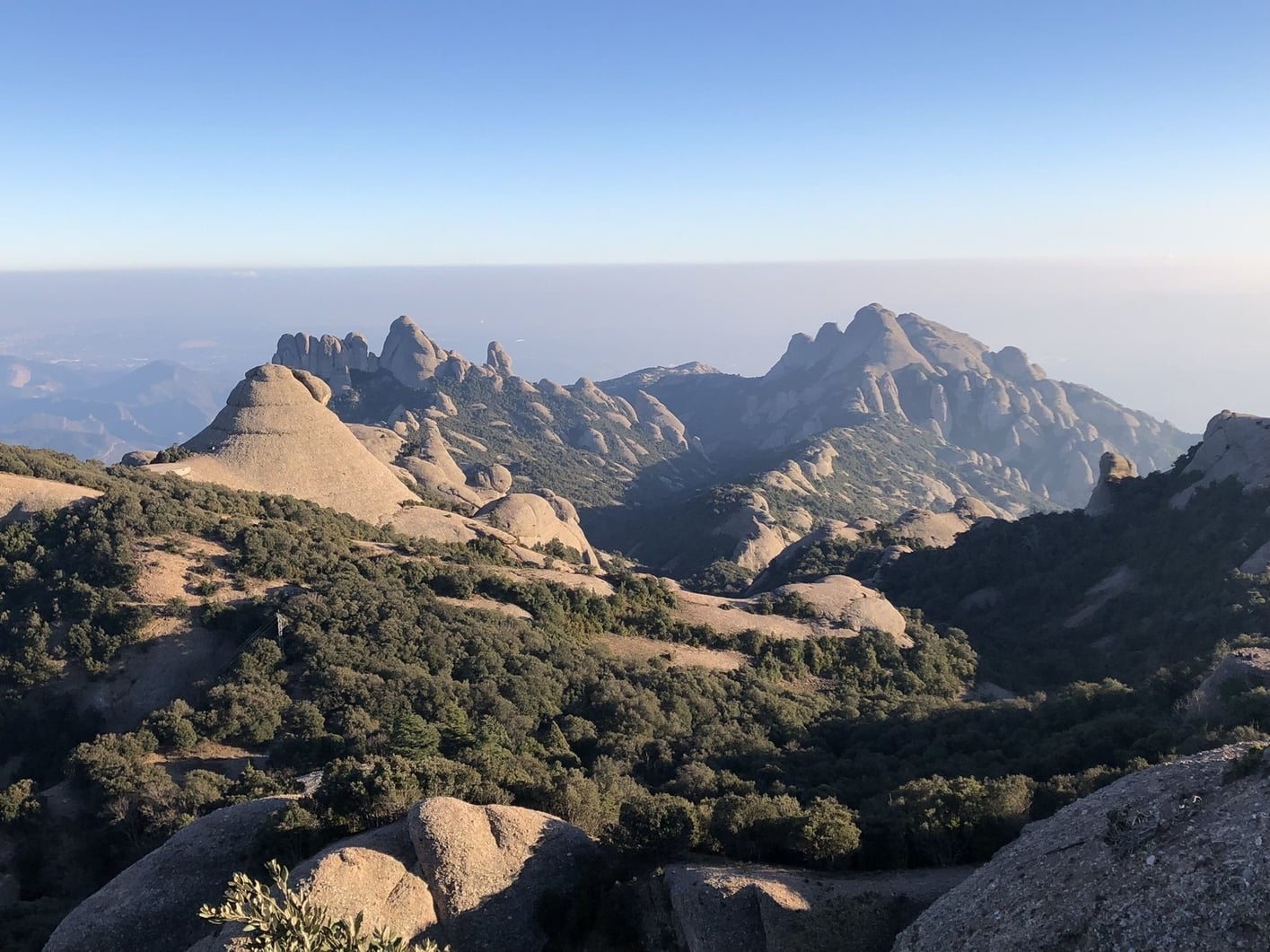
From there, you can take the Sant Joan funicular to the top or walk up. I recommend checking out the exhibit at the Parque Natural de la Montaña, in the upper station’s building. Afterward, continue walking along one of the best hiking trails in Spain to the summit of Sant Jeroni. It’s more or less flat, except for the end, and from there, you can see the towns that surround the massif.
- Duration : 2-4 hours
- Distance : 4.5 miles (5.8 if done in full)
- Obstacles : Stairs at the end
- Elevation : 1,978 ft
- Recommended accommodation : Stay at the Hotel Abat Cisneros Montserrat , next to the Montserrat Monastery, which dates back to 1563
To end this guide, I’m sharing a map with the most important hikes in Spain , so you can clearly see where each trail is located.
If you have any questions or you’d like to share your experience hiking in Spain , leave me a comment below. I’ll be happy to answer you. Until then, have a nice hike!
Ascen Aynat
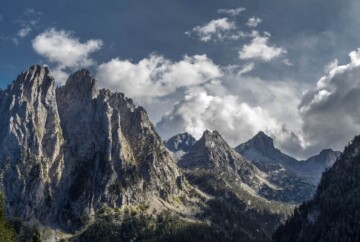
Leave a Reply Cancel reply
Your email address will not be published. Required fields are marked *
This site is protected by reCAPTCHA and the Google Privacy Policy and Terms of Service apply.

- Top 10 Spots For Hiking...
The Top Spots for Hiking and Trekking in Spain

Thanks to a varied landscapes, rugged mountain ranges, coastal routes, well-marked trails and great weather, finding the best hiking in Spain is no uphill struggle. From the famous Camino de Santiago to the Picos de Europa National Park and the Vías Verdes, there’s a trail in Spain for everyone.
Did you know you can now travel with Culture Trip? Book now and join one of our premium small-group tours to discover the world like never before.
Ruta del Cares, Picos de Europa

Right up in the north of Spain, a 2.5-hour drive from Bilbao, the Ruta del Cares is one of the most popular and most beautiful routes through the Picos de Europa National Park . Known as the Divine Gorge, the 12km (7.5mi) route follows the Cares River south from Poncebos in Asturias to Caín in León. Hikers stick to a thrilling trail that’s carved into the side of the rocks – and often through them – featuring sheer drops aplenty and caged walkways that zigzag over the thunderous current below. Expect to encounter caves, mountain goats and turquoise streams of water.

This gentle walk in Spain won’t leave you in pain – and being just over an hour’s drive into the mountains north of the Spanish capital, it’s the best place for hiking near Madrid . At a height of 2,428m (7,965ft), Peñalara is the highest point in the mountainous Sierra de Guadarrama National Park – which straddles the provinces of both Madrid and Segovia – but it’s low enough to be suitable for less hardcore ramblers. The hike takes around 3.5 hours for a round-trip, and the route takes you through the Parque Natural de Peñalara, where you can spot many types of reptiles and amphibians. Look out for black vultures (and try not to view them as a bad omen). If you’re lucky, you’ll witness a white-and-brown flecked Spanish imperial eagle – a threatened species.
Camino de Santiago

The most famous Spanish walking route is, of course, the Camino de Santiago , also known as the Way of St James. A series of ancient pilgrim routes, the trail starts in few different places along the French border and ends up at Cathedral of Santiago de Compostela in Galicia. One of the oldest routes starts at the town of Oviedo in Asturias, but the most popular trail starts at Saint-Jean-Pied-de-Port, just across into France. There is also another path, the Cami Catala, which starts at Montserrat monastery, or in Barcelona, and joins up with the Camino de Santiago to finish up at the in the same place.
Cumbre Vieja, La Palma
The Cumbre Vieja (meaning “Old Summit”) is the ridge of the dormant volcano that dominates La Palma , one of the Canary Islands. Running from north to south, it is approximately 150km (93mi) long and takes between eight and 10 days to complete. If you don’t want to walk the whole way, you could opt between two shorter walks: the Ruta de la Crestería, which follows the rim of the Caldeira de Taburiente, a massive collapsed volcano surrounded by crenellated peaks; or the Ruta de los Volcanes, a walk that snakes its way between the long scar of ancient craters in the dagger-shaped south of the island. Expect Martian-like volcanic landscapes.
Caminito del Rey, Málaga

The Caminito del Rey is one of the best hikes in Spain for thrill-seekers, featuring hanging footbridges, wooden walkways fixed against sheer rock faces, and a glass balcony that helpfully lets you see just how far an unlucky hiker might fall. Once named one of the most dangerous hikes in the world because of its missing sections of pathway and sheer cliffside drops, the Caminito del Rey is about an hour’s drive from Málaga . The route was closed for many years due to safety issues; however, extensive renovations took place, and it reopened again at the start of 2015. Today, the path has been repaired, handrails have been added, as well as bridges and stairs, to create a spectacular – and safe – experience. The trail is approximately 8km (5mi) long and takes around three to four hours to complete.
Pico Sobarcal, Pyrenees
Situated in the province of Huesca in northern Aragon, close to the French border, the Pico Sobarcal stands at 2,259m (7,411ft). Hiking up can be a rewarding experience, with awe-inspiring views of the Pyrenees in the distance and over into France. The total hike takes around seven hours. It’s a moderate climb, but gets very difficult towards the peak due to the rocky terrain, so reaching the top is really only for advanced hikers and mountaineers.
GR92, Costa Brava

Running along the Catalan coast, the GR92 begins at Portbou, just on the Spanish side of the French border, and runs all the way to Ulldecona, approximately 200km (120mi) south of Barcelona. Divided into 20 different stages, you can choose which parts of the path to walk, from hikes lasting just a few hours to those lasting a couple of days. Some of the most spectacular parts of the route are right at the top near the Natural Park of Aiguamolls de l’Empordà and further down into the Costa Brava – the sections between Begur and Palafrugell.
Vías Verdes
Not one particular walk, but a set of trails running more than 7,000km (4,350mi) throughout the country, the Vías Verdes are literally translated as Green Ways. Comprised of hiking paths and cycling routes that have been converted from old disused railway lines, there are around 77 different Vías Verdes running from north to south, all throughout Spain. Along the way, hikers will find old railway stations that have been converted into services such as restaurants, hotels, museums, bike rental stores and information offices.
Las Cañadas

Located on the island of Tenerife in the Canary Islands, Las Cañadas del Teide National Park is another great hiking destination through volcanic landscapes. Home to Mount Teide, the highest mountain in Spain at 3,718m (12,198ft), the park is home to several walking trails and mountainous peaks. Mount Teide itself can also be hiked, from where you can see the 80m (262ft) crater at the top, although a free permit must be applied for in advance if you visit during summer, and you must be accompanied by a guide near the peak.
The Mulhacén, Sierra Nevada
The highest mountain on the Iberian Peninsula, the Mulhacén is located in the Sierra Nevada mountain range near the Moorish city of Granada and stands at 3,479m (11,414ft). It is best climbed in summer and can be done in a day. There are several trails to reach the peak ranging in difficulty levels. The hardest way to reach the summit is via the northern face, which is really only for mountaineers, and the easiest and most popular is the southern face, which from the Mirador de Trevélez in the Alpujarras takes only around two hours.
Culture Trips launched in 2011 with a simple yet passionate mission: to inspire people to go beyond their boundaries and experience what makes a place, its people and its culture special and meaningful. We are proud that, for more than a decade, millions like you have trusted our award-winning recommendations by people who deeply understand what makes places and communities so special.
Our immersive trips , led by Local Insiders, are once-in-a-lifetime experiences and an invitation to travel the world with like-minded explorers. Our Travel Experts are on hand to help you make perfect memories. All our Trips are suitable for both solo travelers, couples and friends who want to explore the world together.?>
All our travel guides are curated by the Culture Trip team working in tandem with local experts. From unique experiences to essential tips on how to make the most of your future travels, we’ve got you covered.

Guides & Tips
The best places to travel in june.

Top Tips for Travelling in Spain

The Most Beautiful Train Stations in the World

The Best Private Trips to Book for a Foodie Adventure

See & Do
Getting a taste of picasso in malaga.

Reasons Why You Should Visit Andalucia, Spain

Bars & Cafes
The best wine bars in la rioja, spain.

The Most Unique Temples and Churches in the World

Places to Stay
The best hotels to book in salou, catalonia.

The Best Private Trips to Book for Your Spanish Class

The Best Hotels to Book in Catalonia

Reasons Why You Should Visit La Rioja, Spain
Culture trip spring sale, save up to $1,656 on our unique small-group trips limited spots..

- Post ID: 963445
- Sponsored? No
- View Payload

- Best Hikes In The World
- Appalachian Trail
- European Hikes
- Nepal Hikes
- Patagonia Hikes
- See All Hikes
- Mount Kenya
- Mount Kilimanjaro
- Mount Toubkal
- See All Mountains
- South Africa
- New Zealand
- Switzerland
- United Kingdom
- Packing Lists
Hiking In Spain: The Ultimate Guide To Planning Your Next Adventure
Spain provides some of the best hiking trails in the world with its varied landscapes, mountain ranges, and well-maintained trails. Whether you are a highly skilled hiker or just looking for a new experience, there is definitely a beautiful trail to be experienced while hiking in Spain.
For the best hikes in Europe, including France, Germany, Swiss Alps and Italy see our detailed article .
5 Epic Trails For Hiking In Spain
Here is a list of the best hiking trails in Spain:
- Camino de Santiago
- Picos de Europa
- Pico Sobarcal, Pyrenees
- Sierra Nevada
- Caminito del Rey
1. Camino de Santiago Trail
Camino de Santiago is arguably the most famous Spanish walking route, it is about 500 miles long. It is a series of ancient pilgrim routes that have been in use for a thousand years or more.
It starts in a few different places along the French border and all the routes end at Cathedral de Santiago de Compostela in Galicia. The most popular trail starts at Saint-Jean-Pied-de-Port .
The trails are flat and easy with many of the tracks being paved and well-maintained. The main routes require very little technical walking so you do not need a lot of hiking experience.
This wasn’t always the case, at one time, the walkways were literally falling to pieces. Back then there was a high risk of falling down the cliff, it was likely the most dangerous hike in the world !
The routes are also well-marked, so you don’t have to worry about getting lost.
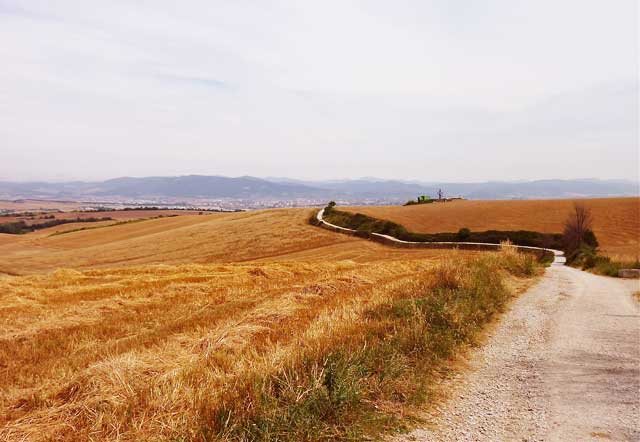
Many consider this hike to be more of a pilgrimage and it is incredibly social. You can also expect to walk through a number of rustic villages and enjoy landscapes with abundant views.
The best time to go would be during April, May, June or September. These months supply warm weather, everything will be open, and you can escape the crowds that would be there in the summer.
Due to the historic nature of the route it is less about experiencing nature and more about embracing history and its people, so if you are looking for a wilderness adventure, the Camino de Santiago may not be for you.
2. Picos de Europa Trail
The Picos de Europa National Park is Spain’s oldest national park. It displays incredible vistas, such as dramatic limestone peaks and lush valleys, as well as rich wildlife.
One of the most beautiful and popular routes is the Ruta del Cares known as the “Divine Gorge”, it is carved out of the side of rocks and goes over bridges and through streams.
It is a 12km trail of moderate difficulty with a reasonable fitness level being required, it is mostly flat so the only issue you could face would be the distance. This trail provides beautiful views of the cliffs and the Cares river below.
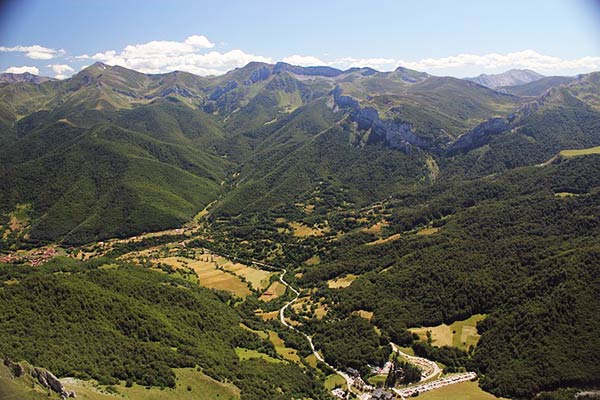
Although the Ruta del Cares is the most popular route, it is certainly not the only option when hiking through Picos de Europa. There are a number of trails with varying distances and degrees of difficulty to suit every hiker’s needs.
The best time to hike in the Picos de Europa would be June and September; when the weather is milder, the days are longer and there are less crowds. Although if you are interested in birdwatching or viewing the flower the best time to visit would be April, May and October.
3. Pico Sobarcal Trail In The Pyrenees
The Pyrenees is a mountain range that forms a natural border between Spain and France. If you’re looking for a physical challenge along with cultural experiences, then hiking Pico Sobarcal is just what you need.
Pico Sobarcal stands at 2259m and its summit awe inspiring views of the Pyrenees. Reaching the summit takes a total of 7 hours. The majority of the hike is moderate, but it does get very difficult as you approach the summit due to the rocky terrain.
Reaching the peak is reserved for advanced and experienced mountaineers and it is not wise to tackle the climb if you do not have the skills to do so.
Experience the variable lush, forested and rocky landscapes and get take in the spectacular views from its peak.
The Pyrenees provides plenty of mountain torrents and beautiful waterfalls to enjoy.
The best time to hike the Pico Sobarcal is late spring and the summer months when the weather is at its most pleasant.
For a great multi-day hike in the Spanish Pyrenees, we recommend this hut-to-hut hike through the Aiguestortes and Estany de Sant Maurici National Park.
4. Sierra Nevada Trail
The Sierra Nevada mountain range is located in Andalucia and has several hiking trails that can all be walked within a day.
There are some very easy trails as well as some more challenging ones, providing you with many options depending on your fitness level and hiking experience.
The Mulhacen, which is the highest mountain on the Iberian Peninsula, stands at 3479m and has multiple trails leading to its peak. The hardest route is via the northern face and is only for more advanced mountaineers.
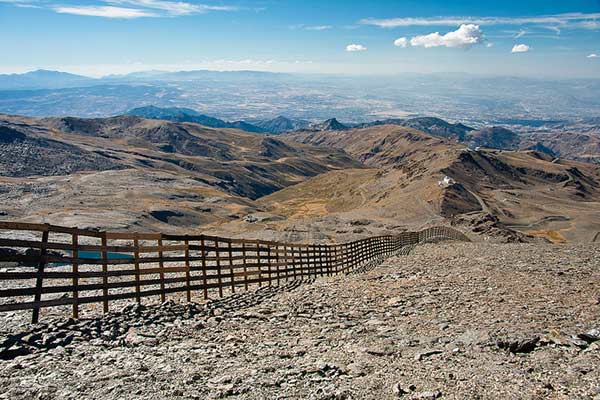
The easiest route is via the southern face and takes only 2 hours, this is the most popular route. The trails are best done in summer but can be done in any season.
If scaling the mountains isn’t your thing, the foothills provide pleasant weather and beautiful views.
5. Caminito Del Rey Trail
The Caminito del Rey trail located in the region of Malaga was once known as one of the most dangerous hiking trails in the world, reserved for only the bravest adrenaline junkies due to its deteriorating pathways and steep cliffside drops.
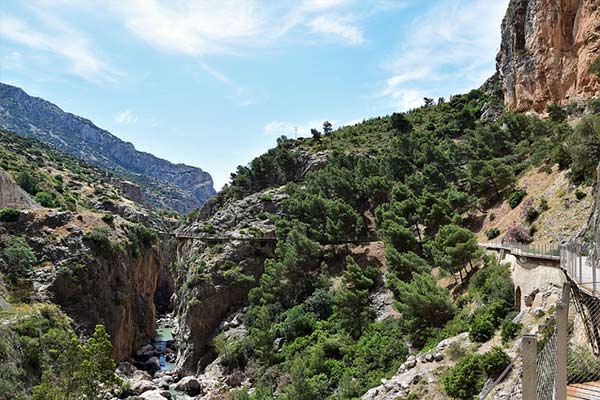
You’ll be happy to know the trail has since been renovated. The pathways have been repaired, handrails have been added as well as stairs and bridges making it completely safe but still spectacular.
The trail is 5 miles long (7.7km) and runs from Ardales to Alora. You should be able to complete the hike in about 4 hours.
Although it is no longer a place for thrill seekers it still boasts incredible views and landscapes.
About the author
Mila Whitman
Mila has been to 5 continents, visited over 40 countries and hiked across some of the most famous mountain ranges including the Andes and the Atlas Mountains. As an AMS sufferer she learned a few techniques to reduce the symptoms and the effects on her hiking adventures.
Leave a Reply
Your email address will not be published. Required fields are marked
Hi loved your article but still unsure which one and this probably one time opportunity I want the rustic vibe with interesting scenery I live in Nz but not a mt goat and 60+
We work with local guides to offer great value adventures at unbeatable prices.
Popular Searches
- Portugal Bike Tours
- Family Trips
- National Parks
- River Cruises
- Women's Adventures
Spain Walking & Hiking Tours
Destinations
More Filters
E-bike Availability
Collections
Accommodations
Premiere Hotels - From lavish luxury to on-trend boutique, offering experiences as unique as the regions we explore.
Casual Plus Hotels - A step above Casual but not quite Premiere.
Casual Hotels - Known for their character, charm and proximity to outdoor adventures and Backroads activities.
Small Luxury Ships - Unpack once and cover more distance on an intimate ship with spacious staterooms and superb amenities.
Activity Levels

Walking & Hiking
Couples, Friends & Solos
A Taste of Camino de Santiago Walking & Hiking Tour
Premiere Hotels
From $4,999 /person

Pyrenees Lodge-to-Lodge Hiking Tour
Casual Hotels
From $3,699 /person

Provence to Costa Brava Walking & Hiking Tour
Casual & Casual Plus Hotels
From $4,099 /person

Spain's Mallorca & Menorca Walking & Hiking Tour
From $5,699 /person
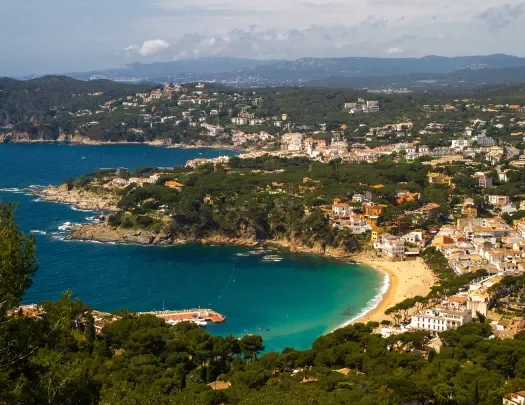
Costa Brava to Spanish Pyrenees Walking & Hiking Tour
From $5,899 /person

A Taste of Camino de Santiago Easygoing Walking Tour

French Pyrenees to Basque Country Walking & Hiking Tour
From $5,499 /person

Women's Adventures
A Taste of Camino de Santiago Women's Walking & Hiking Tour

French Pyrenees to Basque Country Women's Walking & Hiking Tour
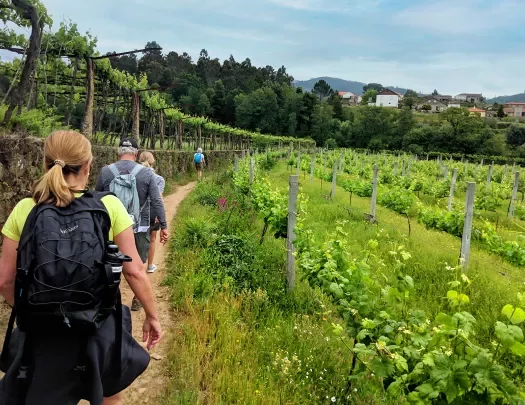
Families with 20s & Beyond
A Taste of Camino de Santiago Family Walking & Hiking Tour
From $5,299 /person
Join us to experience the very best of España on these Spain walking trips. Enjoy stellar hiking in Catalonia's Pyrenees & Costa Brava, where majestic peaks and dramatic coastline serve up some of Spain’s most awe-inspiring scenery. Or walk sections of the historic Camino de Santiago. Each walk is highlighted by luxurious hotels, superb cuisine and superlative route support. Backroads’ Spain Walking & Hiking Tours are unforgettable adventures in this land of year-round sun.
Discover Your Next Adventure
By sharing your email address, you agree to the practices described in our Privacy Policy .

Spain Tours
Hiking & walking journeys across spain.
From the high mountain passes of the Pyrenees to medieval pilgrim trails along the famed Camino de Santiago, exploring the pueblos blancos of Andalusia to tasting the pintxos of the Basque Country—Spain sets the scene for perfect hikes, cultural adventures, and a superb array of regional wines and cuisine.
All Trips to Spain
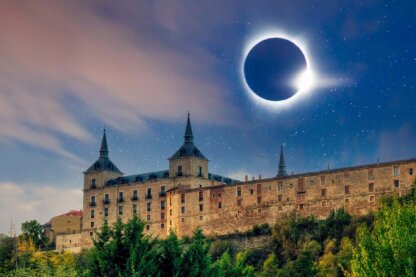
Special Event
Total Solar Eclipse of 2026: Northern Spain
From $9,495
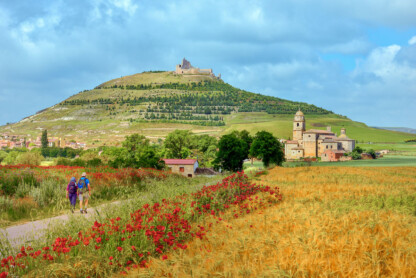
Small Group Adventure
Pilgrim’s Way: El Camino de Santiago
From $5,195

Southern Spain to Morocco
Spain, Morocco
From $6,895
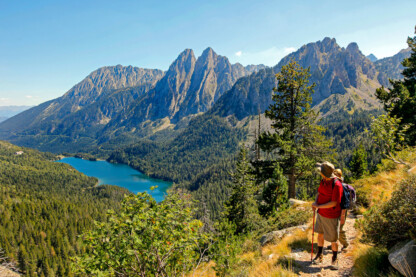
Hiking the Spanish Pyrenees
From $6,295
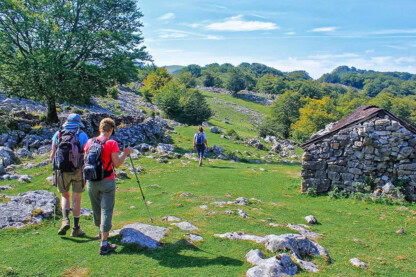
From France to Spain: Hiking in the Basque Country
Spain, France
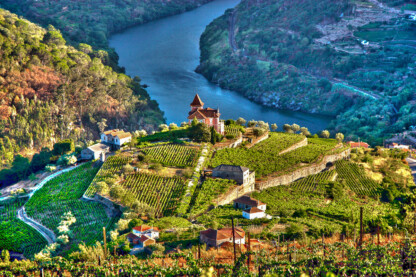
Private Journey
Spain to Portugal Private Journey
Spain, Portugal
From $7,995
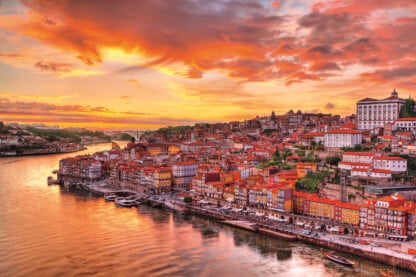
Cruise Collection
Enticing Douro
From $3,599
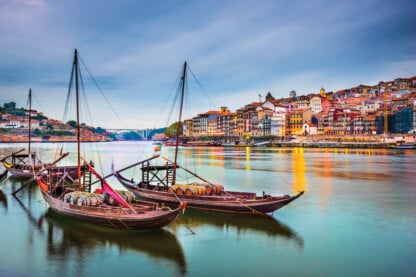
Flavors of Portugal and Spain
From $3,999
Everything You Need to Know
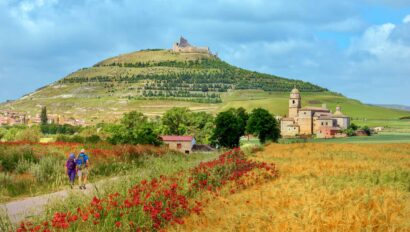
The Camino de Santiago can be done any time of year, however, the months of April-June and September-October are the best months to experience the trail. Read more about the differences between each month below.
Most pilgrim trails funnel into a few main routes within Spain on their way to Santiago de Compostela, with the classic “Camino Frances” (French Way) being the most popular. This is the route that we recommend, and have selected the most beautiful hiking sections for our journey.
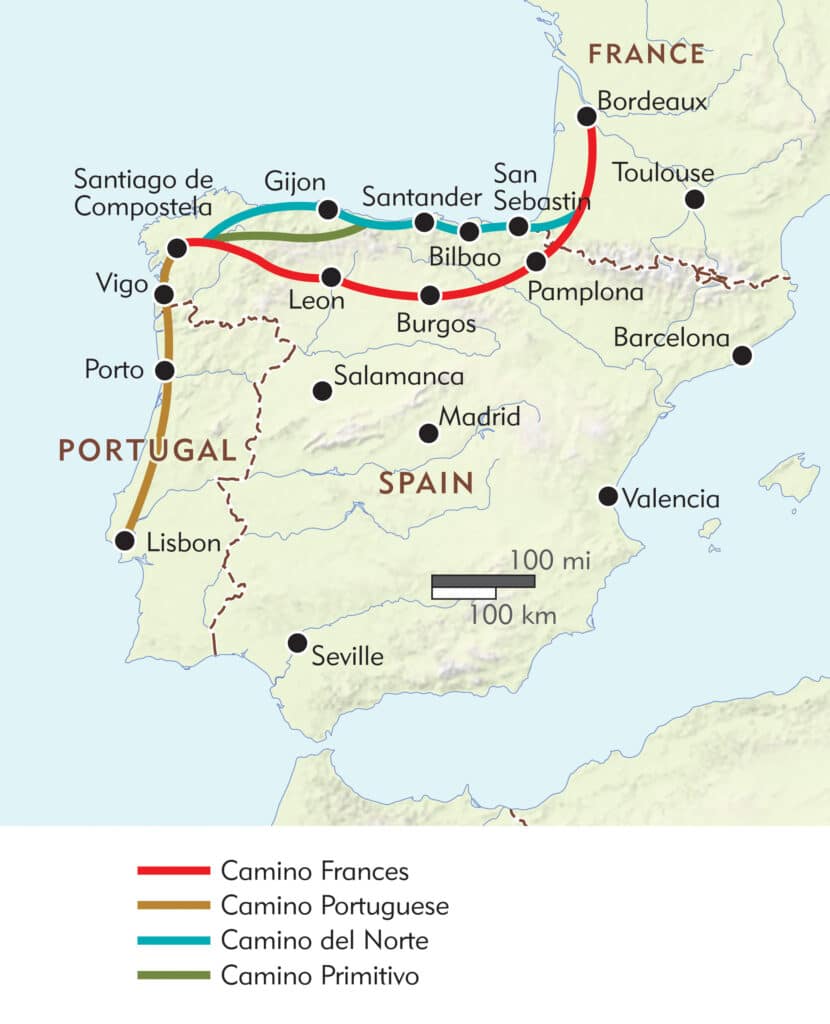
El Camino de Santiago—the Way of St. James—is the name for the hundreds of miles of collective pathways that have guided pilgrims to the holy city of Santiago de Compostela for more than 1,000 years. The reason for the great pilgrimage was (and still is, for many) a matter of faith in the miraculous power of St. James.
The trail follows everything from country roads to cow paths as we travel through rural regions that see few outsiders aside from pilgrims. Of course, all hiking days are a bit different, and the weather always has the final say, but the following is a sense of a typical day on the trail.
- We have handcrafted a journey that in just nine days brings you to the best of the landscapes and villages, skipping areas that parallel highways or developed areas.
- Our expert Trip Leaders share phenomenal knowledge of the culture and history of the region and bring El Camino and its traditions to life.
- Our support van is available several times a day to provide refreshments or to give you a lift if you’d like to shorten the hiking day.
- You’ll be welcomed each night in our carefully selected hotels and paradors, including two nights at the extraordinary Parador Dos Reis Católicos. No barebones hostels, we want you to rest in comfort as you make this historic pilgrimage!
- We bring you all the way to legendary Finisterre, with a grand finale at “the end of the earth,” mythical Kilometer 0 on the pilgrim trail.
Experience Spain
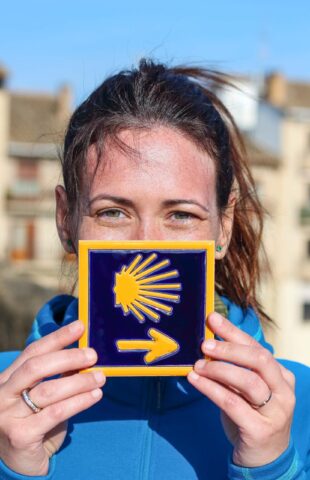
REVIEWS FROM OUR CLIENTS
Such a wonderful trip! We have recommended it to many friends already!! The attention to detail, the provision of wonderful food, wines, snacks and even happy hours at the end of most days hiking were just the best. The guides that appeared at just the appointed hour in some cathedrals, cities we visited, and the clear relationships they had established with vendors and people along the way was great for our experience.
This was another great adventure for us. The trip was constructed very well, with great locations, food, and experiences. A great combination of trip leaders. A beautiful part of the world to explore with wonderful hikes to get to really appreciate the beautiful countryside and hidden treasures. This experience is exactly why we keep returning to Wilderness Travel.
A well-organized trip with moderate to challenging hikes in the majestically beautiful Spanish and Andorran Pyrenees. Our guides couldn’t have been any better! They were extremely familiar with all our routes, and they had a plethora of knowledge about the customs, culture, cuisine, geology, fauna, and history of all the areas we visited.
The trip was a perfect combination of natural and man-made wonders—of environment, history, culture, and dining experiences. The hikes were amazing and varied, and took us to places and sites that I’ll remember always.
Our trip’s unexpected highlights were the variety of accommodations—they really showcased the area and let us relate to real pilgrims—and because our support van met us at regular intervals, all hikers could start out each morning, then if they were tired, stop if they chose!
This was just what I like in a trip—being out and about in the countryside and towns. The Trip Leaders were exceptional in having local cuisine and wines arranged at our meals. I really enjoyed the variety of hotel accommodations.
I loved this trip, from the guides to the hikes, to the food and wine, all among beautiful landscapes and an enriching culture. A spectacular trip!
Talk to an Expert
Our Europe Specialists know every detail about our Spain trips. They will be happy to answer any questions and help you choose the journey that’s right for you. Contact us to learn more or book your trip today!
- Meet the Team
- Work with Us
- Czech Republic
- Netherlands
- Switzerland
- Scandinavia
- Philippines
- South Korea
- New Zealand
- South Africa
- Budget Travel
- Work & Travel
- The Broke Backpacker Manifesto
- Travel Resources
- How to Travel on $10/day
Home » Europe » Spain » Backpacking Guide
Backpacking Spain Travel Guide (2024)
Backpacking Spain is no secret. It’s well established on the travel trail around Europe.
Adventures in Spain start with lazy days on the beach, afternoon tapas, evening espressos, and fiestas all through the night. Somehow, you get up the next day to seek out Mediaeval and Moorish architecture, narrow cobblestone alleyways, and quaint, whitewashed villages.
Over my years of travelling, I always find my way back to Spain. The forces of attraction and passion are too strong! It offers oodles of diversity, relaxation, and adrenaline.
Many travellers barely make it out of their little tourist hubs in Spain. They’re usually stuck in the two (mighty fine) major cities: Barcelona and Madrid. Or, perhaps they’re trapped in their all-inclusive hotel in Costa Del Sol.
Yet those that do venture out into Spain’s benevolent country are rewarded time and time again . The diversity is drastic and the country encapsulates high spirits. If you have more than 2 weeks for backpacking Spain, get yourself out there and see it with your own eyes.
Travelling in Spain is WAY better when you start making your own Spain itinerary and experiencing unique encounters. In this backpacking Spain travel guide, we’ll talk top travel tips for Spain, travel costs, and the lowdown on Spanish traditions to get your teeth into.
Vale , amigos. Vamos a España!
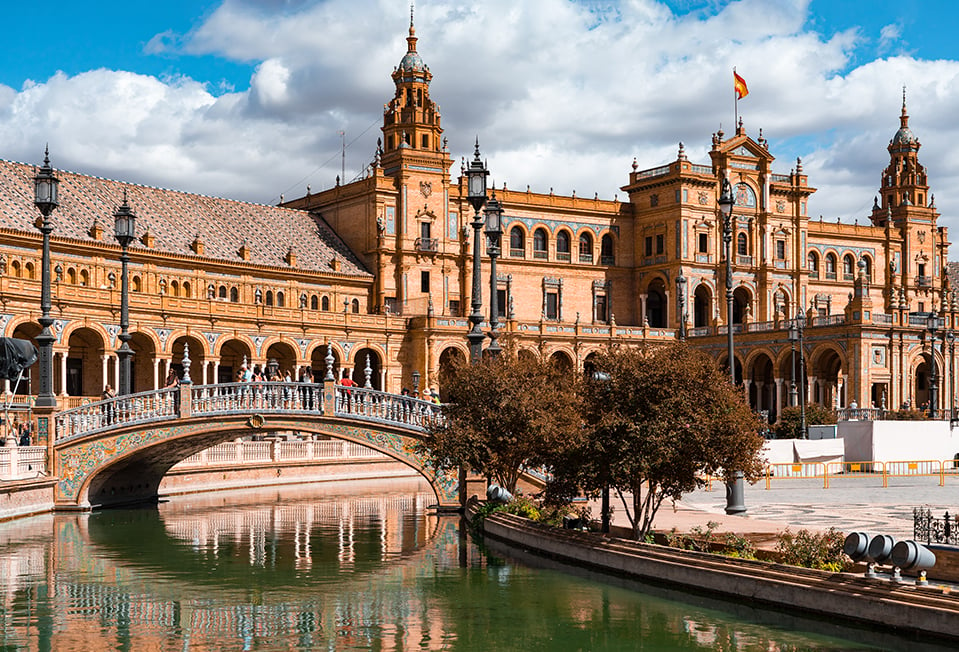
The Broke Backpacker is supported by you . Clicking through our links may earn us a small affiliate commission, and that's what allows us to keep producing free content 🙂 Learn more .
Why Go Backpacking in Spain?
If you’ve ever even considered travelling through Europe , Spain will almost certainly come up on your radar. This country has delight after delight for every kind of traveller.
If you want to laze on the beach, maybe dip your dedos in the warm Mediterranean Sea, you have it. You can bounce around big cities where the days and nights blend into one, or explore history that’s deeply ingrained in the country from tip to toe.
The food is mind-blowingly delicious. The wine is rich, free-flowing, and cheap .
Basically, this country is one of the best all-rounders in the world. It’s a perfect choice for newbie backpackers, solo travellers, families, and even the most experienced travellers have a lifetime of places to explore. It’s, quite frankly, a rarity.
Beyond the famous beaches of Costa Del Sol and major cities, you find charming villages and dazzling nature. The deeper you dive, the more you uncover.
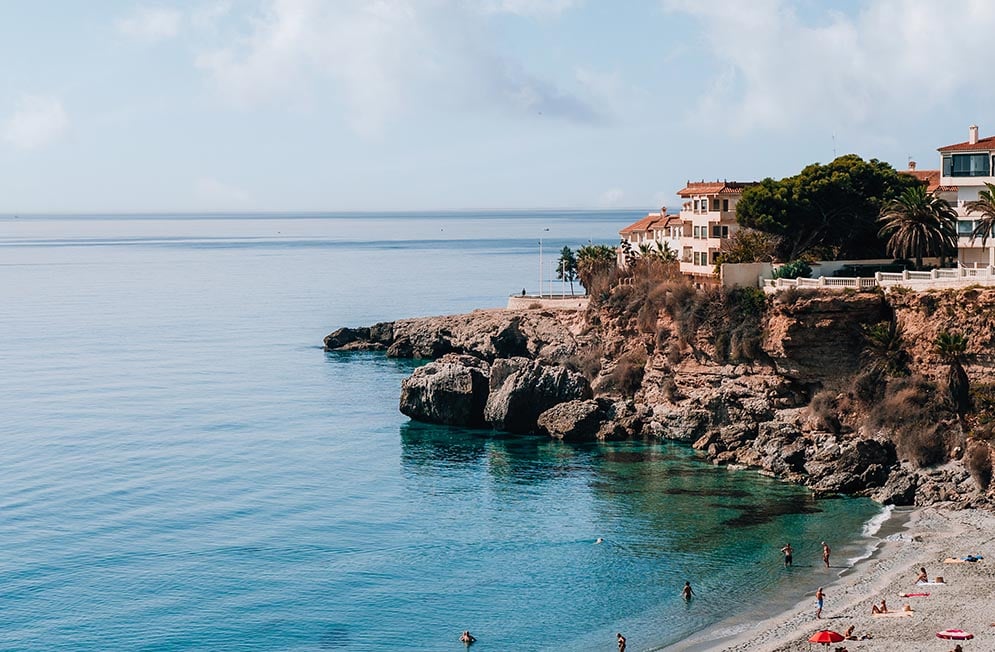
I spent a lot of time on both mainland Spain and – luckily for me – Spain’s beautiful islands too. One thing that backpacking Spain offers the most is the stunning diversity of the different regions. If you ask the Spanish too, many insist they are completely separate nations too, even speaking different languages.
I think the best part about backpacking Spain is experiencing Spain’s uniquely different regions: the rebellious Basque Country, laid-back Andalucía, lush-green Galicia, and more.
Isn’t that why we travel, after all? To experience something different, because we’re curious about the lives and landscapes of other terrains? When you visit Spain, you are gifted with variety, good weather, and welcoming people.
So let’s talk about regions in Spain. Damn, I hope this is going to give you some worthy inspiration for your routes and itinerary for Spain.
Best Travel Itineraries for Backpacking Spain
Best places to visit in spain, 9 top things to do in spain, backpacker accommodation in spain, spain backpacking costs, best time to travel to spain, staying safe in spain, how to get into spain, how to get around spain, working in spain, spanish culture, what to eat in spain, some unique experiences in spain, faqs about backpacking in spain, final advice before backpacking spain.
For travellers far and wide, it’s worth making the effort to visiting Spain’s varying regions . It’s a large country in comparison to other European countries. Yet, with reliable transport, you don’t need to stress much.
I have broken down some of the best backpacking routes for your Spain itinerary. If you’ve got less than 2 weeks, I recommend sticking to one area or a few cities and spending more time exploring it properly.
10-Day Travel Itinerary for Spain – Barcelona and Beaches
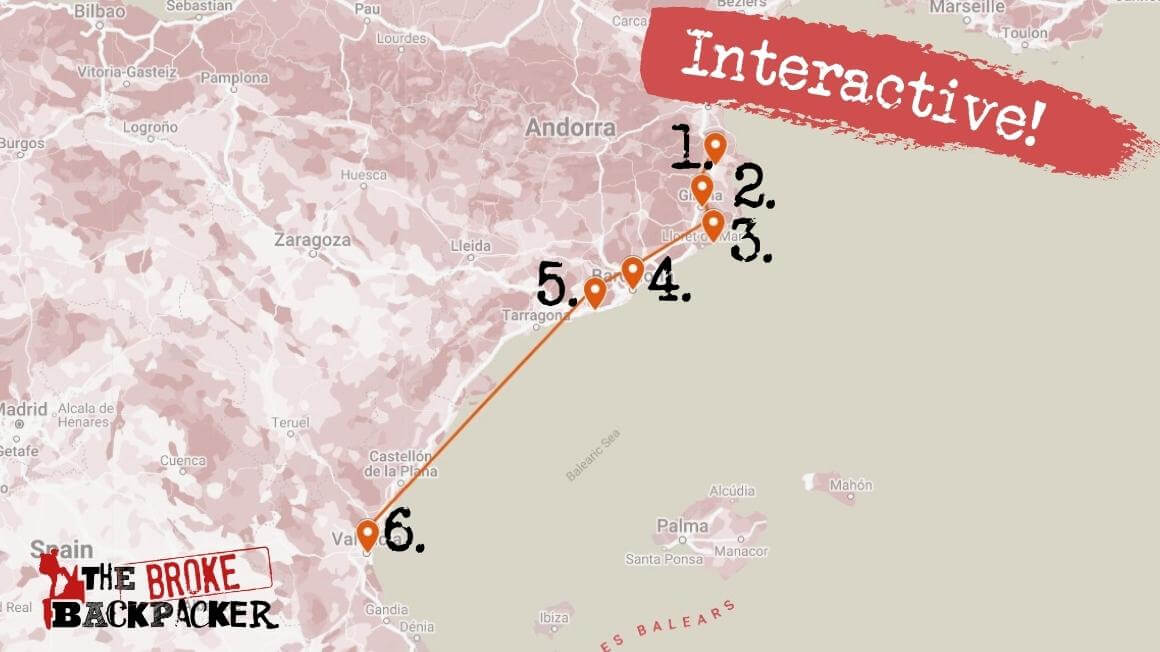
If you’re short on time, one of the most exciting regions to visit is Catalonia. Barcelona makes an easy landing spot if you’re arriving by air. From there, you can head into surrounding beaches and mountain towns on day trips – or stay a while and get to know them.
If you’re arriving from France, I suggest stopping by Figueres for the Salvador Dalí Museum. This was the Spanish icon’s home.
Then, head down to visit Girona , a city full of Gothic churches and cobblestone lanes. You can easily visit Girona as a day trip from Barcelona too, but it’s worth spending a couple of days. Plus, there is a sick nightlife scene.
Within an hour of Barcelona, you can visit Tossa de Mar – a beautiful bay with a towering castle, and Tamariu – a quaint coastal village. Make sure you leave yourself with plenty of time to explore Barcelona. There’s a lot to do here so plan your Barcelona itinerary well.
Barcelona is known for its beach, but they’re mediocre compared to the rest of Costa Brava, and the Mediterranean islands. So, I suggest concentrating your time on the more unique places to visit in Barcelona and save the beach for coastal towns.
If you have time on your itinerary, take the trip to Valencia . This jaw-droppingly beautiful city is worth making time for. You could stop by the fun beach town, Sitges , just 30 minutes south of Barcelona.
2-Week Travel Itinerary for Spain – Top to Bottom
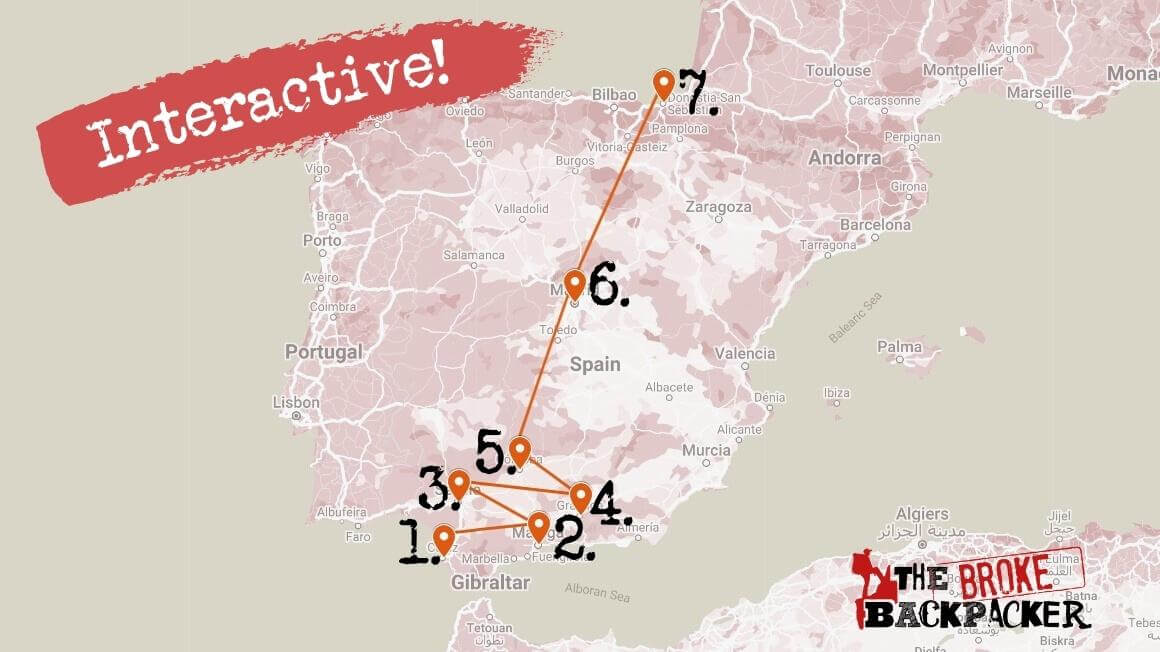
With 2 weeks, you’ve got enough time to quickly cross Spain from top to bottom, and stop in some insane travel destinations. One of the best 2-week backpacking routes kicks off in Southern Spain. This is ideal if you’re backpacking Spain and Portugal, or you’re arriving from Morocco.
Start in Spain’s amazing southern cities. Visiting Málaga , the white city by the Mediterranean Sea, is convenient. It has the biggest airport in Southern Spain, so this could be the easiest city to fly into.
If you’re arriving on a boat from Morocco, you’re probably going to start your route by staying in in Cádiz . We spontaneously visited this city by the beach and it was a great surprise. Tarifa is famous for its kite surfing and has some awesome backpacker hostels to stay in.
Or, if you’re heading in by land from Portugal, Seville could be your first stop. If your itinerary allows it, visit Ronda and the other whitewashed villages in this area.
Visiting Granada for a few days is really worth it. There is so much to do and see. Granada’s Alhambra and Córdoba’s Mezquita are two must-see attractions in Andalucía. Get ready for beautiful views and free tapas!
You could do a quick stop in Córdoba . One day is sufficient if you’re short on time.
Then, you’re ready to head to Madrid . You’ll want to set a few days aside for the capital city. From there, you’ve got one of the most well-connected airports in the world. So you can basically go wherever you want! If you’re heading onto France, San Sebastián will probably be your last stop for surf and sun.
2-Month Travel Itinerary for Spain – The Full Flamenco
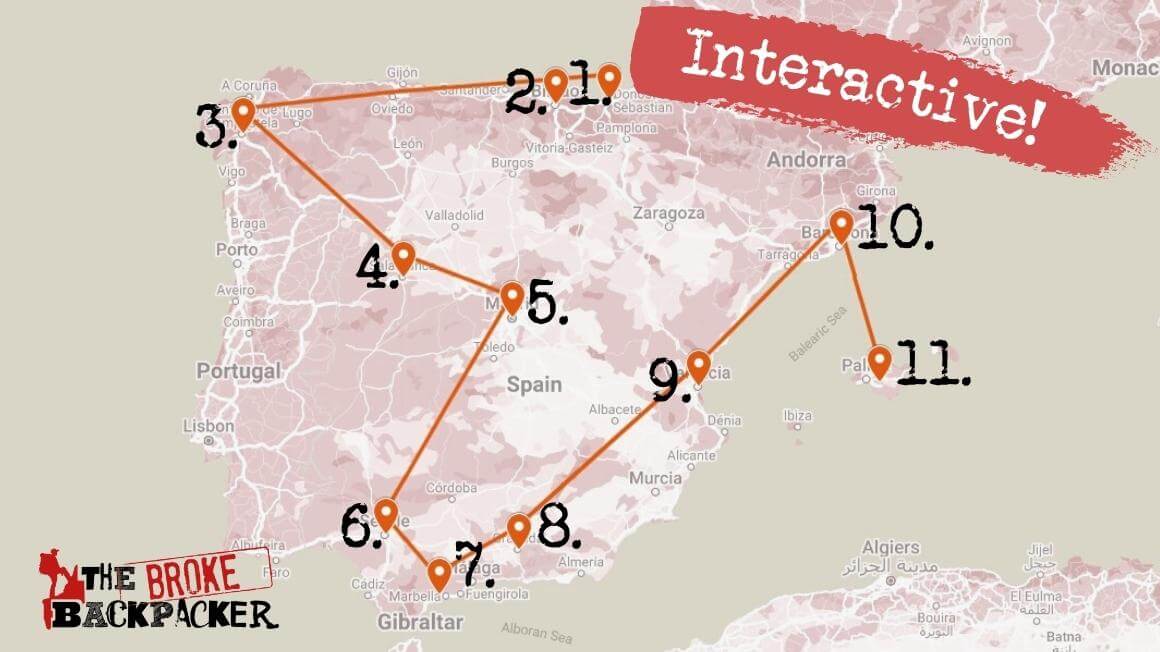
Now we’ve got some time on our hands, we can do a nice little circuit on this Spain itinerary. So it doesn’t matter where you start or which direction you go. You can pretty much combine the last two itineraries, and let’s throw in some other goodies too.
With more time, I highly recommend doing the Camino de Santiago – one of the most iconic hikes in the world . This is also great if you are backpacking Spain and Portugal or France. If you’re really serious, you could walk from Portugal or France!
So you could arrive in San Sebastían , walk through Bilbao , and arrive in the gorgeous Santiago de Compostela .
If you’re not walking from Bilbao, check out the beautiful town of Oviedo and stop by Santillana del Mar in Cantabria – a perfectly preserved mediaeval town. You can also take day trips and Spanish winery tours in La Rioja , Spain’s most famous wine region!
If you visit Spain in the summer, set some time aside for the coast of Galicia. Check out Coruña and Costa da Morte .
Stop in the magical city of Salamanca for a great vibe and nightlife, thanks to the university. It’s also a convenient stop on your way to Madrid .
Then, follow the last itinerary through Southern Spain, passing into Andalucía through Córdoba , Seville , and Granada . Spend some time on the golden beaches of Costa Del Sol .
Next, you can make your way up the Eastern coast to charming Valencia . Sample some paella for a few days. Then, take a train or bus to the energetic and bustling city of Barcelona .
If you have time, you can take a ferry to the Balearic Islands which are really closely connected to Barca, stay in Menorca for a while before you party hard in Ibiza.
Spain is an absolute treat of a country for backpackers. It’s one of the best places to travel alone , as well as with your family, as a couple, or with friends!
We’re talking major cities, major chill-out locations, and all-day, all-night parties. First off, let’s talk about some of the popular destinations and top spots that have been drawing people to visit Spain forever.
Backpacking Madrid
Spain’s capital, Madrid – obviously one of Spain’s bustling major cities. You’re going to need to set aside at least a few days to appreciate it properly.
Travelling in Madrid doesn’t have the immediate grandeur of Paris and Rome. But it does have the art scene, nightlife, and insane restaurants to easily compete. Puerta Del Sol is the plaza sitting proudly in the heart of the city centre.
Most of Spain’s best art museums are in Madrid, including Museo del Prado and El Centro de Arte Reina Sofía . Check out masterpieces by Pablo Picasso and Salvador Dalí.
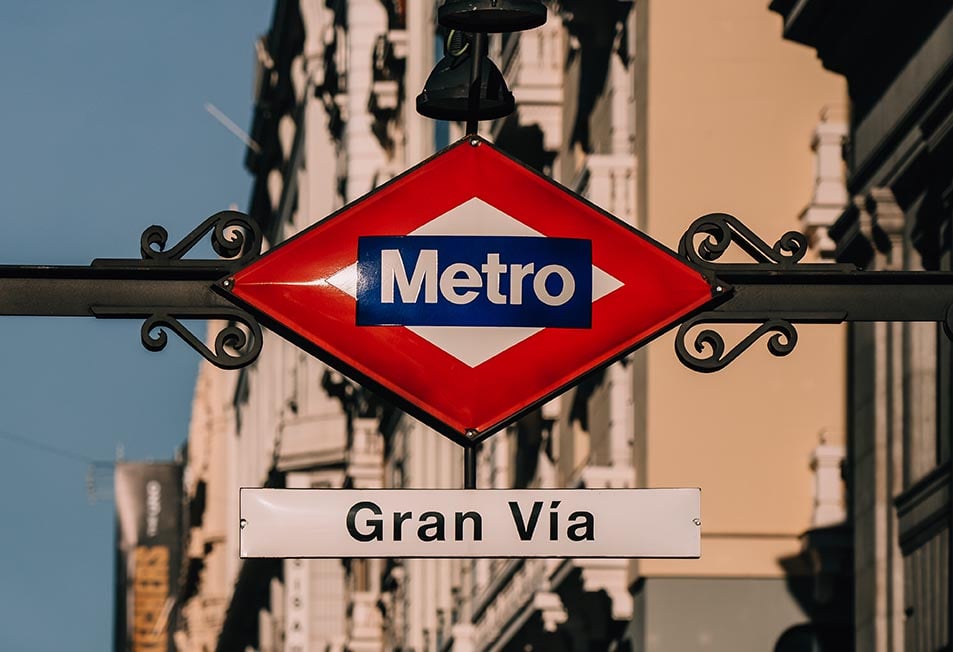
El Rastro is Madrid’s famous Sunday flea market; go if you are visiting Madrid on a weekend. El Retiro is a great park to spend a sunny afternoon. Just watch out for annoying rollerbladers – unless you wanna take part – it’s less annoying then.
Madrid’s nightlife doesn’t really start until 3 am. From live venues and wall-to-wall bars to multi-story clubs, there is always something going on. The best party districts in Madrid are Huertas , Chueca , and La Latina .
La Latina has restaurants and tapas bars galore. Malasaña is another neighbourhood with great cafés. Mercado de San Miguel is a fun market to taste different Spanish dishes and get wine drunk.
Sungate One hostel is one of my favourite places to stay in Madrid . This hostel draws me back again and again.
Backpacking Barcelona
I have a love/hate relationship with Barcelona. If you’re visiting Barcelona for a weekend, or you’re a city person, Barcelona is your jam. You’re gonna love this place.
You have a city with deep-rooted history and a modern mindset. Behind you are mountains and ahead, long golden beaches and Mediterranean Sea. How many other places have a claim like that?
There is an endless list of things to do in Barcelona . Even the most busy-minded traveller need never rest.
Cobblestone lanes of the Gothic quarter, world-class architecture, dancing from bar to club. Rave all night long. Hang out at a beach club.
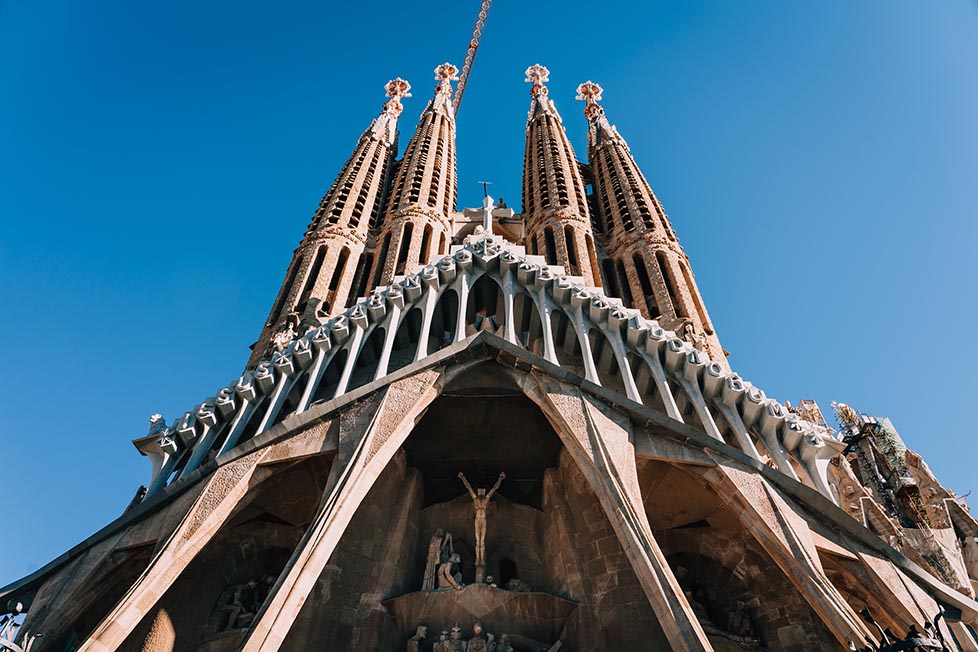
Watch a classical concert at the Palau de la Música Catalana . The Picasso Museum is supposed to be lovely, but I never made it for the queues. If you’re a footy head, watch a match or take a tour at Camp Nou .
Check out the viewpoints for the sunset over Barcelona. I highly recommend Bunkers . Bring food and wine!
And I have to mention Barcelona’s hero: Antoni Gaudi. His unique and inspiring creations are all across the city. Cast your eyes on the iconically ever-incomplete La Sagrada Familia.
Park Güell lives up to its reputation! Parc de la Ciutadella is a beautiful park but – in my experience – it’s one of the most unsafe areas of Barcelona : pickpockets are RIFE!
If you’re backpacking Spain on a budget, I recommend staying away from the famous La Rambla. It’s too touristy and overpriced.
My favourite neighbourhoods to stay in Barcelona are the Born , Gothic Quarters , and Gracía . Ravel is rough around the edges but has cool vibes.
Though, Barcelona is increasingly expensive, year after year. Now, when I visit, I Couchsurf to cut the insane accommodation costs. (Damn you, beautiful Airbnbs.)
If you are backpacking Spain during summer, it pays to plan ahead. It’s getting kinda mainstream and, therefore, expensive.
Barcelona has its own unique culture compared to other parts of Spain. If you’re interested in reading more about the history and culture of Barcelona, check out our list of the best books about Barcelona before you go.
Day Trips from Barcelona
There are plenty of day trips you can take from Barcelona. Montserrat is known for its “sacred mountain.” Maybe you’ve seen the stairway into heaven?
Girona is a quaint medieval town with an interesting history. Tarragona has Roman ruins.
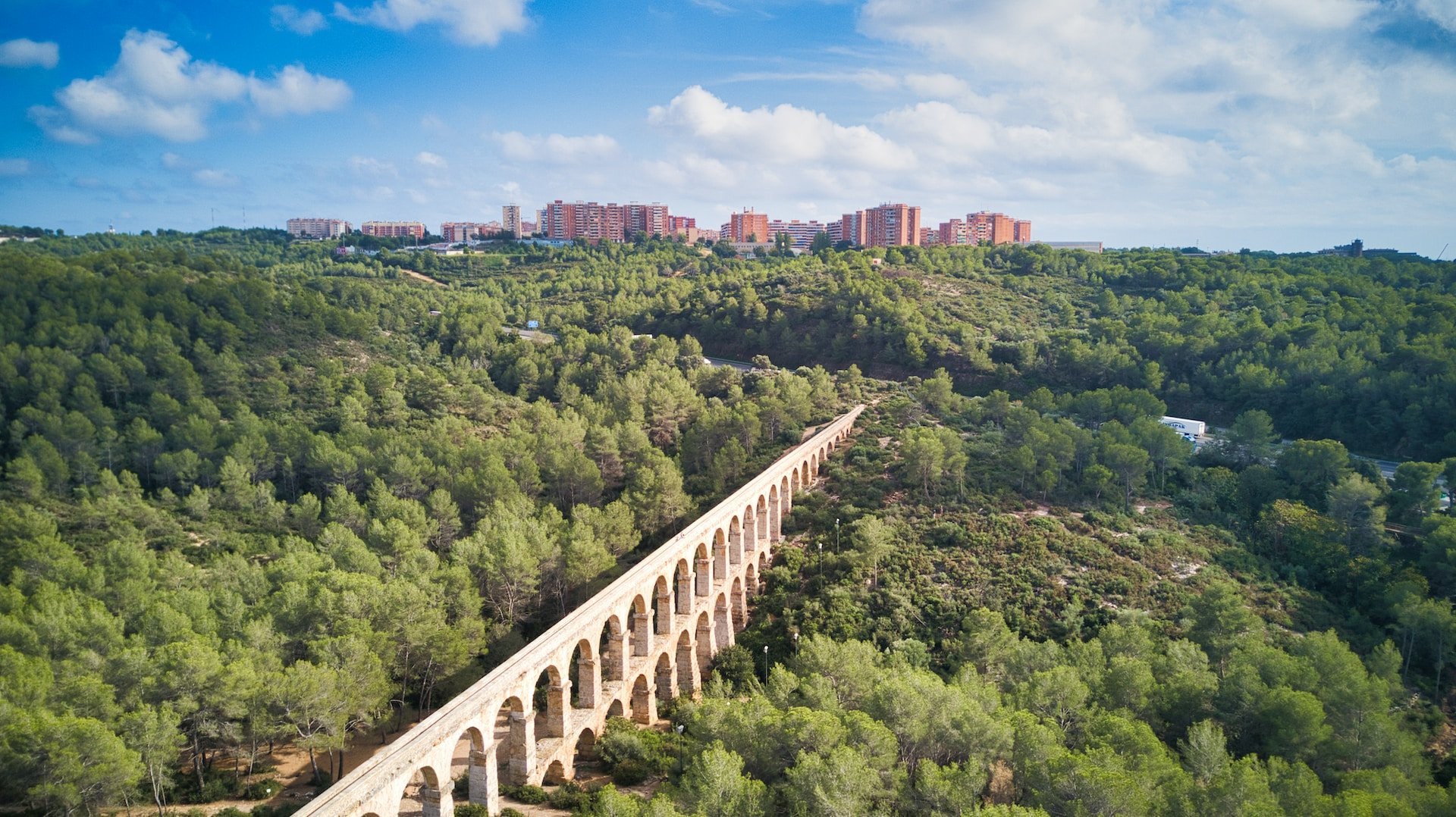
Costa Brava is lined with beaches, and reachable by bus or train. Sitges has some nice seaside parties. Tossa de Mar is a bay with a castle for a backdrop.
You can also make a trip to Figueres to see the Dalí Museum. (This guy’s a pure legend. Even if you’re not into surrealist art, you should go.)
Backpacking Córdoba
Córdoba is a city that is not usually very high on people’s backpacking Spain itinerary. But those that do visit are well rewarded. It is one of the nicest places to stay in Spain and Córdoba’s hostels are such a vibe!
One building alone should give you enough reason to travel to Córdoba. The mesmerizing Mezquita Catedral is a church that became a mosque before reverting back to a church. This building fuses both Gothic and Islamic architecture – two religions and two cultures under one roof.
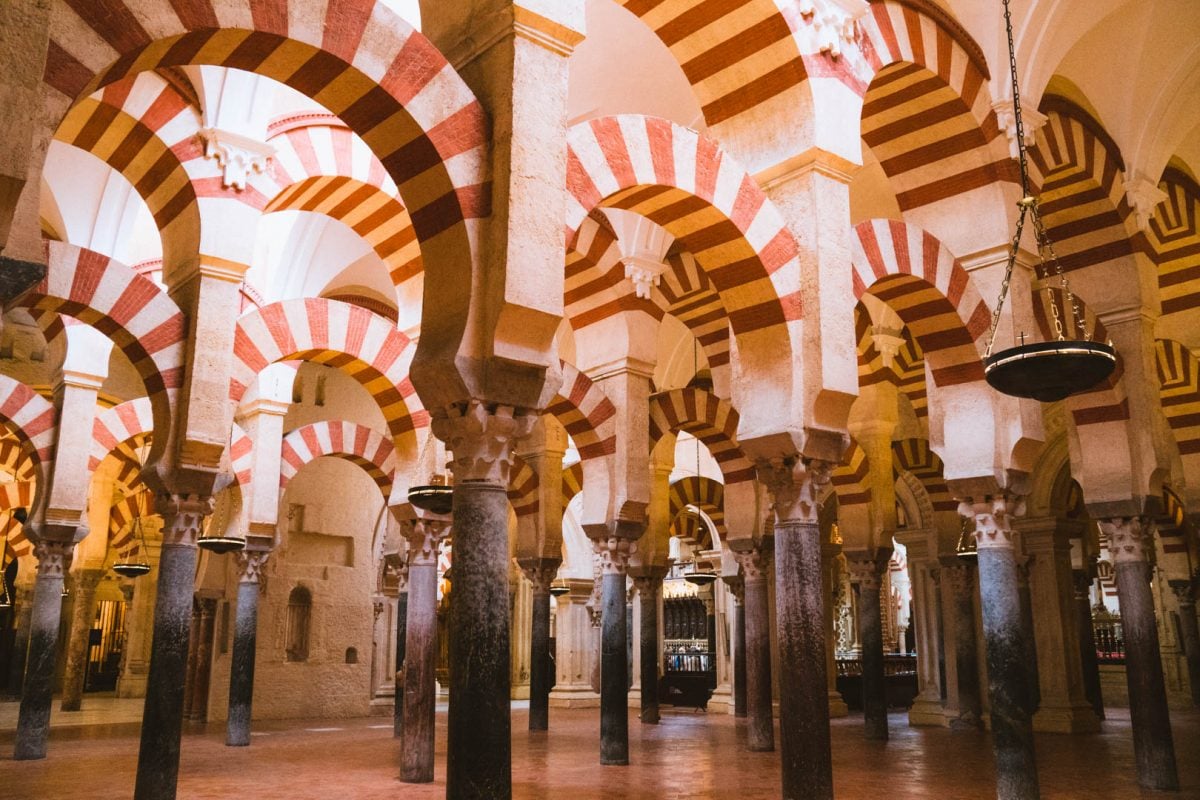
Aside from visiting the Mezquita, the city of Córdoba itself is beautiful (and photogenic) with plenty of shops, cafés, and winding foot streets. The neighbourhoods in Córdoba are really chill to stay in and get to know the locals. They even have a yearly festival in May where contestants compete for the prettiest courtyards.
Summers are scorching hot and crowded though. I much prefer planning a trip to Córdoba in spring or autumn.
Backpacking Seville
Seville encapsulates the essence of Southern Spain: narrow alleyways lined with small bars, large, open plazas and dramatic churches and palaces, and scorching hot summers… There are so many cafés and tapas bars to stop in.
Did I say that already? Oh, well, yeah: we’re in Spain.
I love the local vibe that staying in Seville gives you. Stroll around the Barrio (neighbourhood) Santa Cruz , and for an authentic tapas experience, eat at the Feria Market in the Macarena neighbourhood. Walk along Las Seta De Seville for spectacular views.
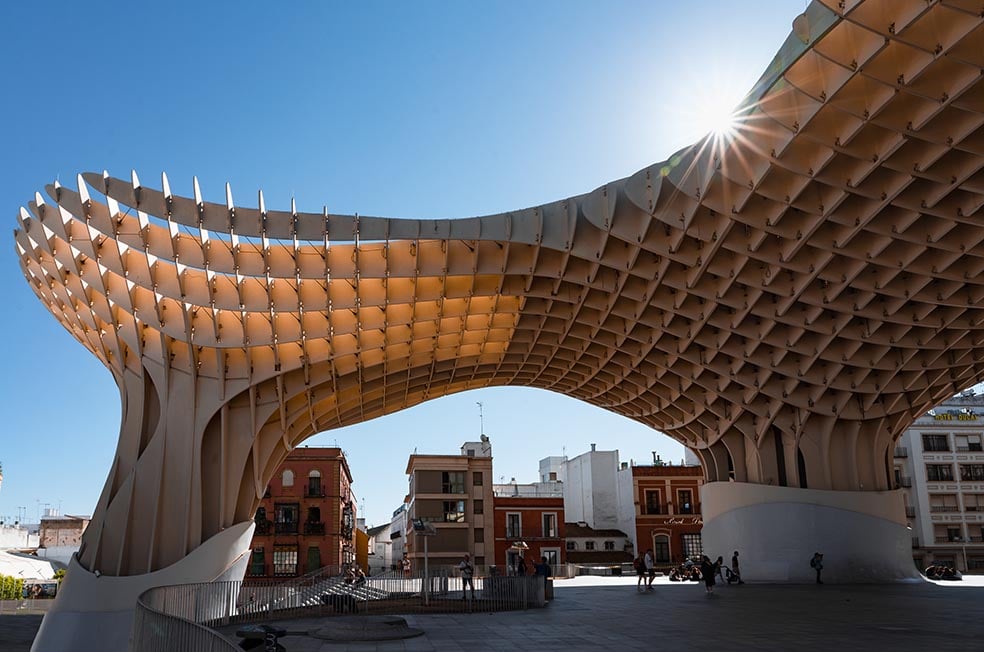
The ordinary really seems extraordinary here. Most of the bars aren’t extraordinary , they’re always full of Spaniards enjoying life with a cafecito or cerveza . It’s a vibe.
Seville has tons to see during the day as well. In terms of sights, Seville has an impressive cathedral, but nothing compares to Seville’s Alcázar, which was built in the 1300s.
(Have you seen this before? Maybe. Game of Thrones shot the Dorne palace scenes here.)
Seville is the place to watch an authentic flamenco performance, and you can’t go backpacking in Spain without seeing a flamenco show. La Carbonería is a local favourite and a popular spot to watch an authentic flamenco show.
Backpacking Málaga
Like most of the cities in the South of Spain, and especially along Costa Del Sol, staying in Málaga involves eating, drinking, and hanging out. These are all great things to do all day, every day. The plaza central (central plaza) is one of my favourite spots.
You have to spend some time in the old town of Málaga. I also love the fact that Málaga is right on the beach. So after a lovely day of exploring historic cathedrals and Roman ruins, you can go and drink some cold ones on the coast. There are loads of great Airbnbs in Malaga in this area too.
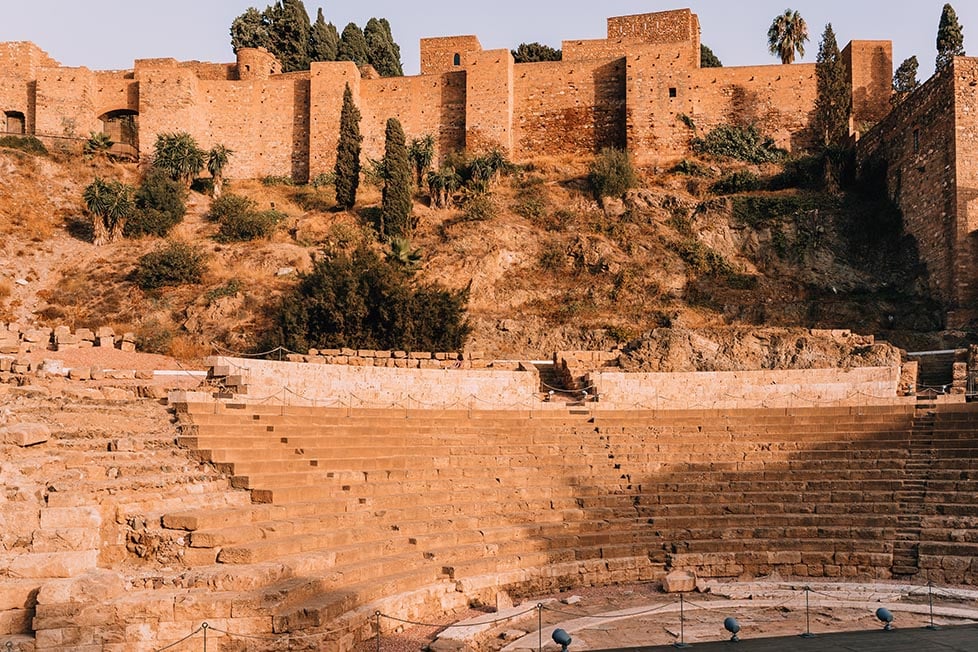
Buy food and shop around Mercado Merced for nice prices and nice quality. There are a few nice museums in Málaga, like the Picasso Museum , but overall, my favourite and most memorable part about Málaga was simply hanging out at the beach, cafés, and restaurants in the plaza.
If you’re planning to visit Spain as a solo traveller, check out the hostels in Málaga . They are so cool and a great place to meet people.
The majestic mountaintop town of Ronda is a great day trip from Málaga (or Seville). Here you’ll see the photogenic Puente Nuevo bridge with views of the Ronda Mountains above a deep gorge. This bridge separates the new town from the Moorish old town.
Backpacking Granada
To truly experience the charm of my favourite city in Southern Spain, you have to peel back its layers. Luckily, my sister studied in Granada and took me to all of her favourite spots.
You can’t stay in Granada without visiting Alhambra palace : one of the most impressive places to visit in all of Spain. By the time I arrived in Granada, I was sick of looking at churches but the Granada Catedral and Grand Chapel are something else! Every time I walked by the Granada Catedral there was new music echoing across the courtyard from new musicians.
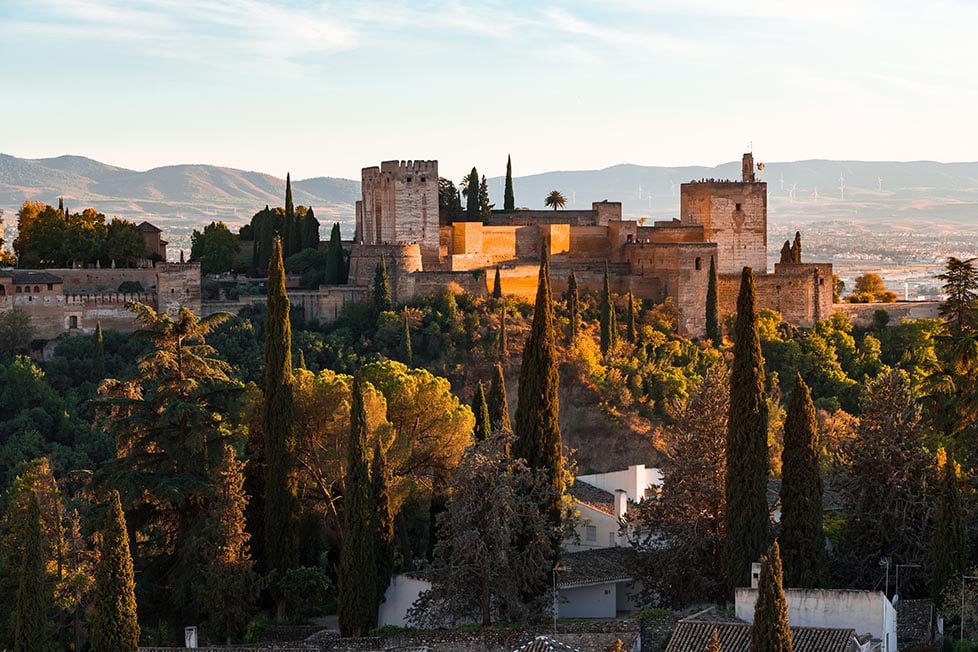
When you visit Granada, get lost among the ascending streets of el Barrio Albayzín , Granada’s prettiest neighbourhood. Barrio Sacromonte next door is great as well.
Granada is the only place left in Spain with free tapas . Free food with every drink you purchase! The more drinks you order, the bigger the dishes get.
Bar crawl in search of the best tapas and eat free dinner by drinking more beers. (Like a dream.)
Check out Calle Navas and Calle de Elvira for the best tapas bar hopping. Elvira and around the Bullring specifically have great cafés, bars, and tapas that touched my soul.
For great views of Granada, hike up to San Nicolás Mirador and Miguel . There are a lot of great parks sprinkled throughout the city as well.
If you are itching to spend some time outdoors and work off all of Andalucía’s tapas, the Sierra Nevada Mountains are right next door. Hiking is open for most of the year, although the height of summer is scorching. AND you can ski (quite affordably) during winter!
Backpacking Valencia
I went to visit Valencia on a whim and ended up having one of the best weekends of my life. It’s famous for paella and beaches and I quickly found out it’s much more than that.
The locals, for me, were the best part of Valencia. Choosing a private room in an Airbnb in Valencia is a great way to get to know them. Warm and inviting, we had the best parties and best paella with these cool ass people.
Grab desayuno (breakfast) at Plaza de la Virgen . Visit the Ancient Valencia Central Market for fresh fruit and produce; it’s a great way to immerse with the locals. Rent a bike and cruise around on the promenade by the beach.
Go ahead and try their local drink, Agua de Valencia (Valencia water). It’s anything but water: orange juice, cava, gin, and vodka… The best place to enjoy Valencia water is Café Madrid de Valencia , where the drink was invented!
I (completely coincidentally) ended up in the city for the Las Falles Festival . It was one of the most happy accidents of my travelling experiences.
If you are backpacking Spain in March, this is one of the festivals in Spain worth planning for. This is a week-long party with streets lined with people in beautiful traditional dresses and fireworks designed to be so loud and stimulating to give you an overwhelming sense of being here and present .
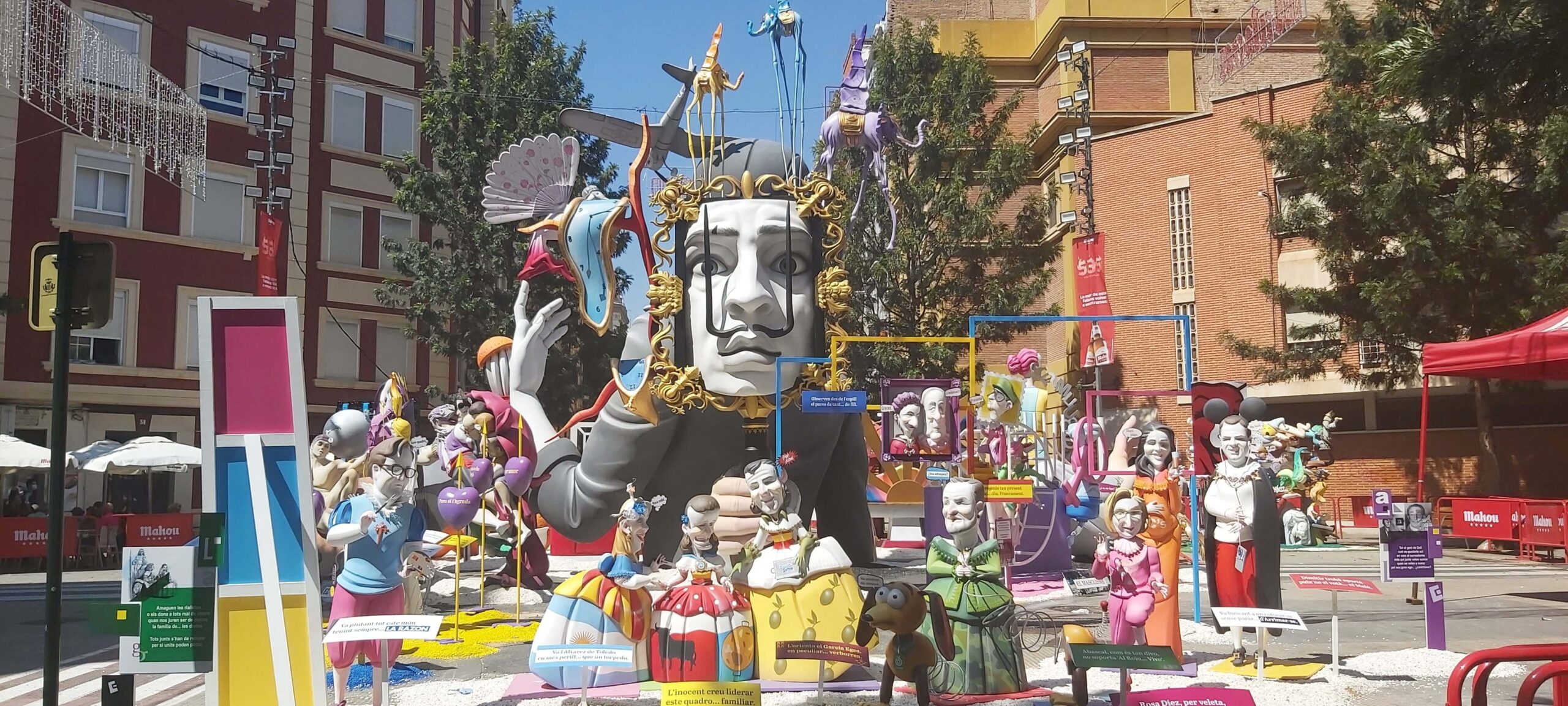
The central focus of the festival is each neighbourhood in Valencia spends a year creating a falla . These are insane works of art, incredibly beautiful, and some as big as buildings made completely out of paper mache. Then – here’s the kicker – at the end of the weekend, they set fire to all of them.
It’s one of the most breathtaking events you can see in Spain. The locals are really proud of it (rightly so) and really welcoming to visitors to get involved in the celebrations.

Backpacking San Sebastián
San Sebastián is a surfer town with a gorgeous crescent-shaped beach and lively nightlife. This is also a food lover paradise thanks to Basque ‘ Pinxos ’ the local speciality similar to tapas in the South.
Spend some time getting to know the different areas of San Sebastián . The locals here are really cool and you will be welcomed by making a little effort to get to know them.
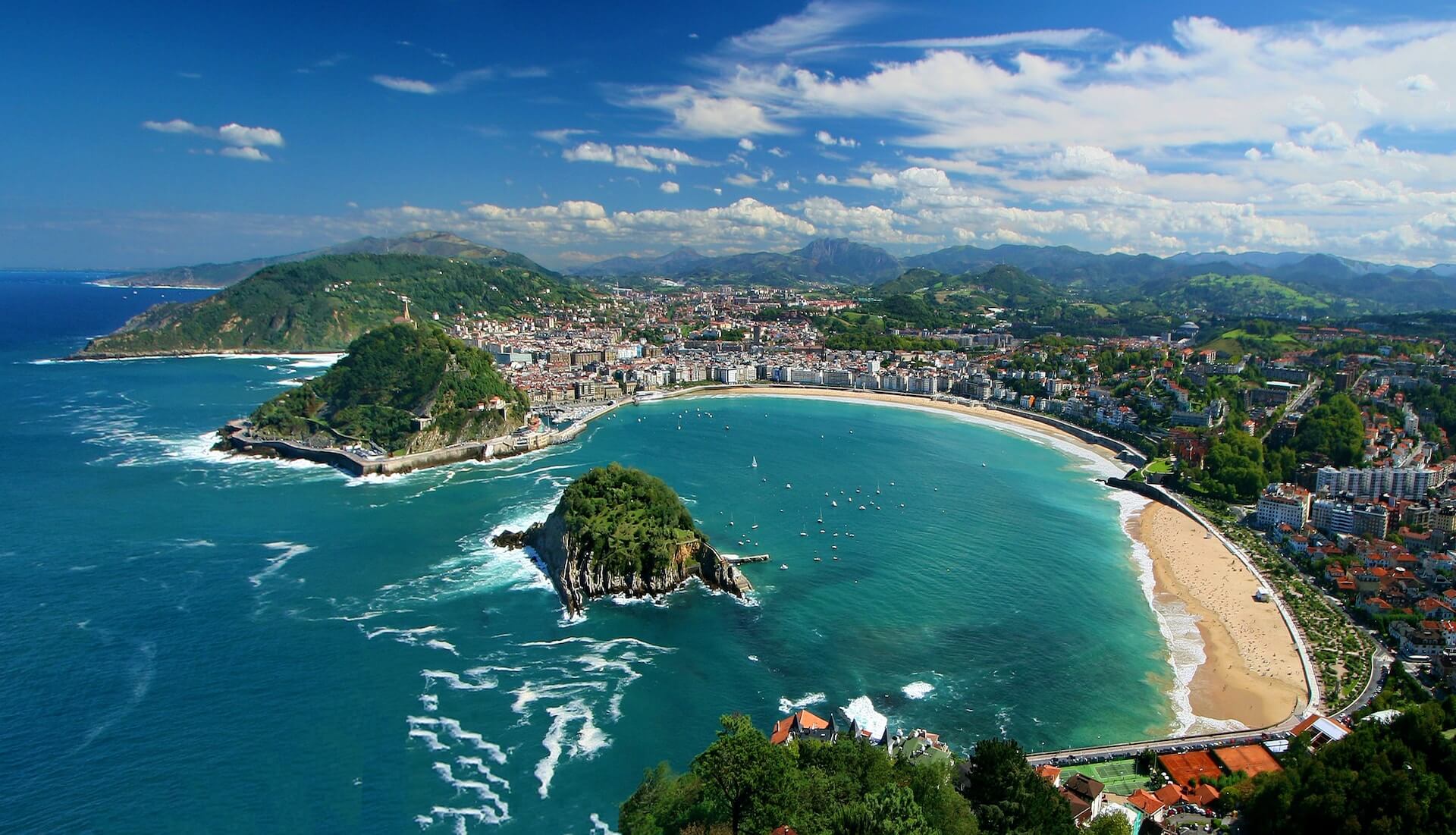
Go shopping (or window shopping) in Gros , a barrio lined with trees and stores stocked with creative local goods. La Playa de la Concha beach is great for sunbathing. Bar Zeruko and Bar Azkena are two of the top-rated pintxos bars in San Sebastián.
There are also a ton of cool hostels in San Sebastian here too. I met some cool travellers who were the best buddies to chill and appreciate with! Go bar hopping, take a stroll on the promenade along Zurriola Beach , or ride some waves on these sick surf beaches.
Backpacking Galicia
The region of Galicia is located on the far western end of the coastline of northern Spain. Mystical Celtic religion and a rugged coastline reveal its connections with the likes of Scotland, Wales, and Ireland.
Although all the locals speak Castillano (which we know as Spanish), their primary language is their regional Galician (Gallego). Many of them don’t even claim to be Spanish at all.
Though its reputation for being cold and wet is prominent across Spain, don’t let that deter you. I’m from the UK, so I can confirm, a little rain never hurt anyone. The best place to stay in Galicia – if you are interested in seeing the northern coast – is A Coruña .
You should also definitely stay in Santiago de Compostela , one of Spain’s major cities and most famous tourist attractions. It’s home to the Catedral de Santiago , the end-point of one of the most popular pilgrimages in the world, Camino de Santiago .
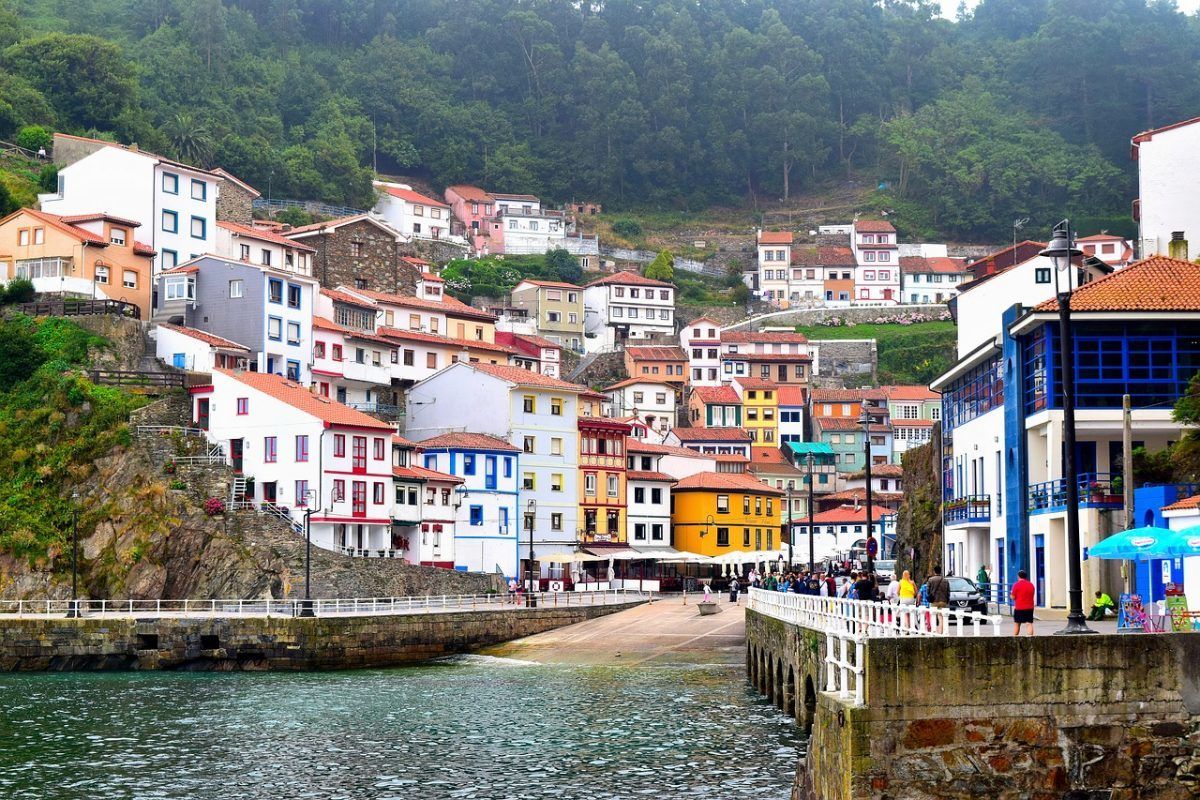
Along with admiring the architecture and art, be sure to walk around Rua del Franco (Franco Street) right off the main square. It’s bursting with seafood restaurants and bars that make you want to get your happy mode in full swing.
There are loads of beautiful places to stay in Santiago de Compostela including EPIC hostels , hotels and Airbnbs!
Backpacking Spain’s Islands
Spain’s beautiful islands are completely diverse, and full of natural wonder and sun-hungry Germans on holiday packages. Their reputation as a tourist trap is justified. Though don’t let that deter you.
Outside of the popular destinations, these pockets of goodness offer impressive landscapes, laid-back living, and pretty cheap travel. It’s a great idea to stretch your backpacking Spain budget.
Spain has two sets of islands: the Balearic Islands and the Canary Islands . I stayed in the Canary Islands for most of the pandemic. I felt damn lucky too; year-round nice weather, lower cost of living (tax-free alcohol!), and very laid-back atmospheres made lockdowns a breeze .
The Canary Islands are set off the northwestern coast of Africa. These little volcanic islands are drastically different from one another.
From dry deserts in Lanzarote to humid forests in La Gomera , active volcanoes in La Palma , and even snow in the winter in Tenerife , the Canary Islands are seriously impressive. If you stay in Tenerife , make the trip to El Teide to see Jurassic views.
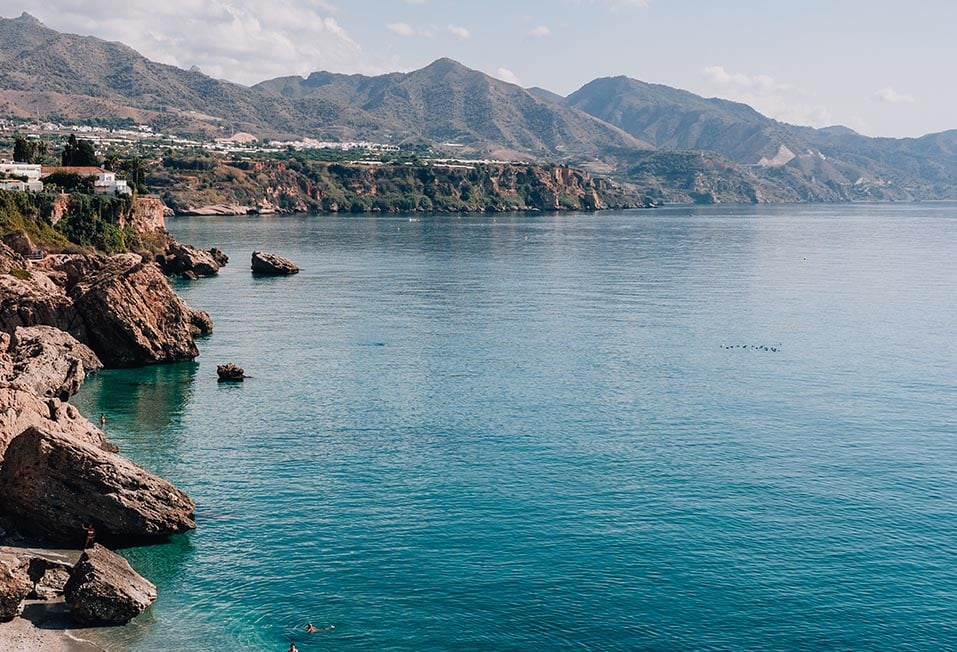
The Balearic Islands have infamous clubbing towns such as Magaluf and Palma Nova . Many people go when they are 16 to get pissed and try and lose their virginity. Then there’s the wild coke-heavy, techno summer parties of Ibiza.
But there are plenty of laid-back areas too, with striking views and adventure sports to get tucked into, hidden sandy beaches and some of the best yoga retreats in Spain . Menora and Formentera are the best alternatives in the Balearic Islands for white powdery beaches and turquoise blue waters
You can take the local ferry or fly between Spain’s islands. Budget airlines offer cheap flights.
Though, transport infrastructure isn’t great. Public transportation is inefficient and taxis are expensive. If you want to explore the islands properly it really helps to rent a car .
Getting Off the Beaten Path in Spain
Spain is one of the most popular countries to visit in Europe, and if you’re backpacking Spain in summer, it’ll be hard to get away from the crowds.
If you’re willing to venture off the beaten track though, I promise that you’ll find some incredible hidden European gems . You can visit some of Spain’s lesser-known regions, full of culture and beauty, like Galicia, Cantabria, and Asturias.
These regions offer sandy coves and beaches, sparkly green coastlines, and a stark, rugged contrast to the rest of Spain. They are best to visit in summer due to unpredictable rain and weather off-season.
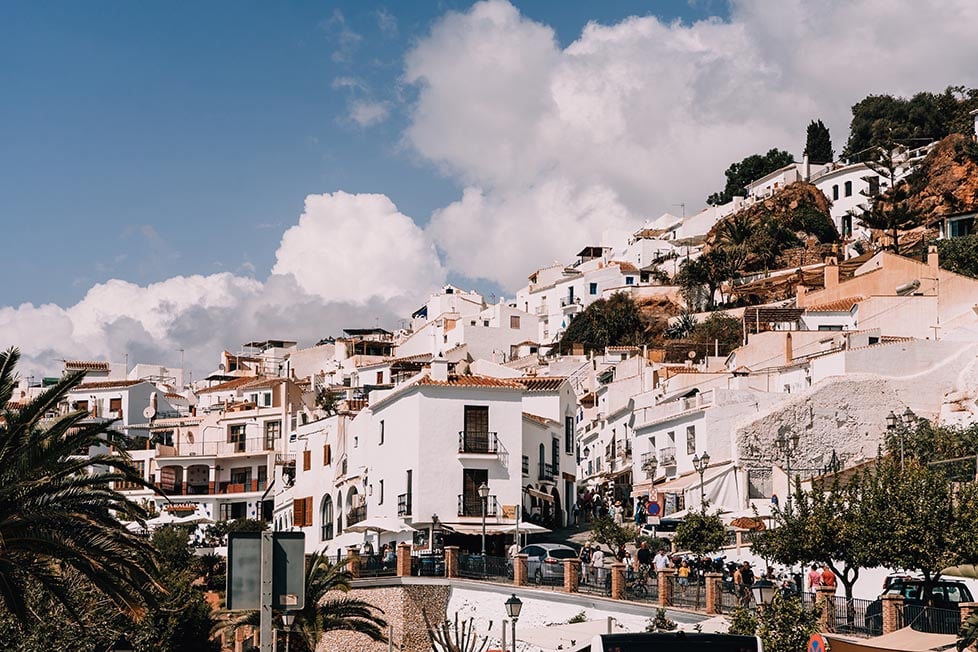
Picos de Europa has some of Spain’s best hiking and most dramatic scenery, as well as arguably the best food. I’m talking full food coma from seafood and cheese.
Many people visit the popular and beautiful town of Salamanca , but backpackers love other charming villages in Castilla and León . This Northwest region is rich in history and cathedrals. Aragón , just west of Catalonia, offers plenty of quaint villages amongst the Pyrenees Mountains.
If you are into Roman history, and especially if you’re backpacking Spain and Portugal, check out Emerita August . It’s got Spain’s best Roman site and some of Spain’s finest cured ham.

We’ve tested countless backpacks over the years, but there’s one that has always been the best and remains the best buy for adventurers: the broke backpacker-approved Osprey Aether and Ariel series.
Want more deetz on why these packs are so damn perfect? Then read our comprehensive review for the inside scoop!
On your way, you’re going to be greeted by many great places to visit in Spain . Below I have listed 8 things, uniquely Spanish, that you have to do when backpacking Spain.
1. Go to a fútbol game
Spain is home to two of the most famous teams (and rivals) in the world: Réal Madrid and FC Barcelona. Even if you just manage to score cheap(ish) nosebleeds, the energy in these massive stadiums is a truly unique experience while backpacking Spain. I went to a game at Camp Nou to watch FC Barcelona and had a blast.
If you can bag tickets to El Clásico (a derby), be prepared for a crazy night out. Watching the game from a bar is still a vibe.
Budget Tip: Real Madrid is the famous one, but half of the locals support Madrid’s other team, Atlético Madrid . Watching Atlético is just as good a cultural football experience – for half the cost!
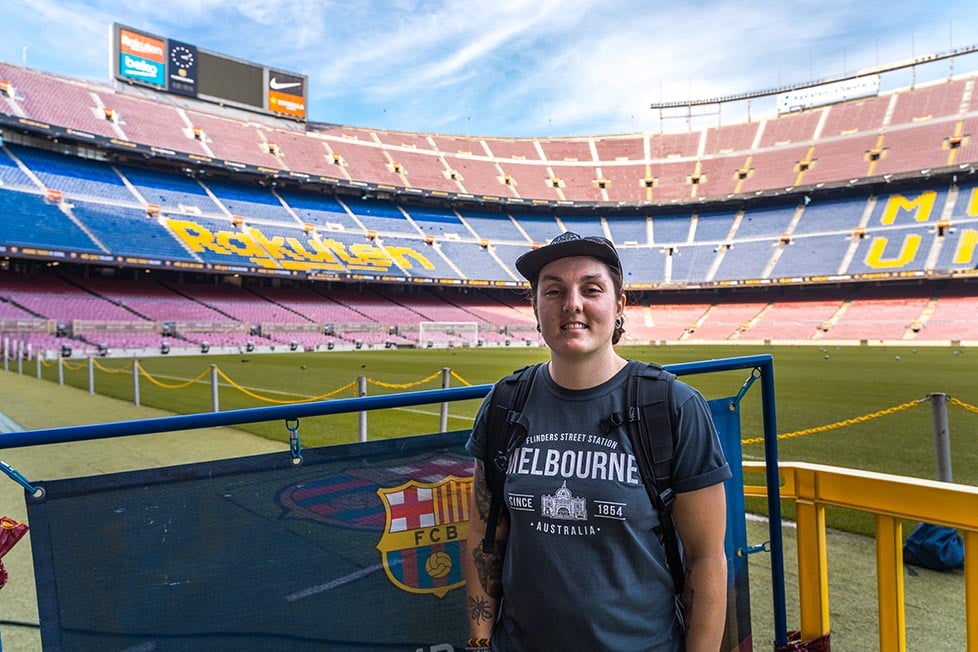
2. Hike El Camino de Santiago
I don’t like to plug things that is full of tourists however, this is an exception. El Camino de Santiago has history rooted in Mediaeval times and it’s really worth taking the trek yourself.
Follow in the footsteps of hundreds of thousands of pilgrims on this epic 500+ mile hike through charming villages and finishing in the cathedral in Santiago de Compostela. El Camino has many different starting points. The Pyrenees bordering France is the most popular one, but many people start this trek in Portugal.
This is not only a visually beautiful thing to experience, but the amount of people you get to meet is second to none. It’s a really special experience walking with so many people in the same direction, for the same goal. It opens up your heart.
3. Keep ordering drinks and eating Tapas
Yeah, you’re going to visit Spain. Surely you’re going to be eating tapas at some point.
But this is your free pass to go and eat your body weight. Say yes to all the olives, all the cheese, all the bread.
If you want a real tapas experience, visit Andalucía in the south of Spain. This is the real shit, not just tapas for tourists .
You can still get free tapas in Granada, Spain every time you order a drink. The tapas tend to get bigger with every round you order too.

4. Admire Gaudi’s beautiful architecture while visiting Barcelona
This genius is all over Barcelona to this day. Gaudi’s art and architecture spread right across the city and you’d really be missing out if you didn’t at least go out of your way to see a few of them.
Obviously, everyone knows La Sagrada Familia . I’ve seen a lot of churches in my time and this is easily the most beautiful. You’ve probably heard of Parc Güell too (or seen desperate photos on Instagram) but it is worth visiting.
Budget tip: If you’re on a really tight backpacking Spain budget, Sunday Mass gets you inside La Sagrada Familia for free. Get there early – no dilly-dallying – or you won’t get in. You’re not allowed to take pictures and you definitely won’t see the whole building but it’s a good way to cast your eyes inside in case you really can’t squeeze the tour into your budget.
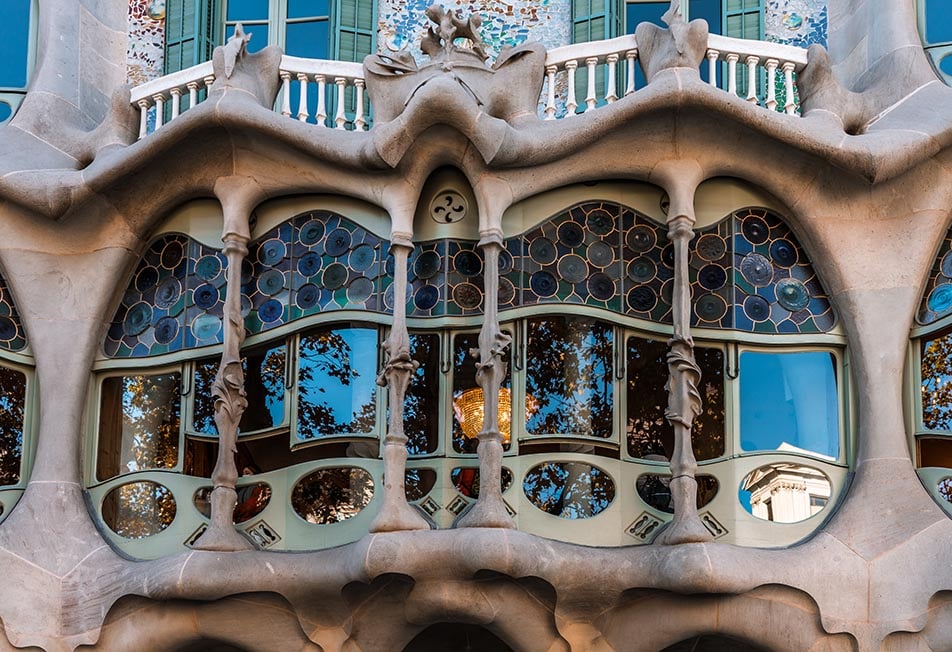
5. Island hopping
Spain has two chains of islands in the Mediterranean Sea: the Balearic and Canary Islands. They are super varied, and (some) are pretty budget-friendly. Either way, they are designed for visitors to have an absolute blast .
As well as Ibiza’s monster clubs and 24-hour parties, Gran Canaria has great outdoor activities, and Mallorca is simply paradise. However, staying on Fuerteventura , one of the lesser-known islands, is straight-up chill.
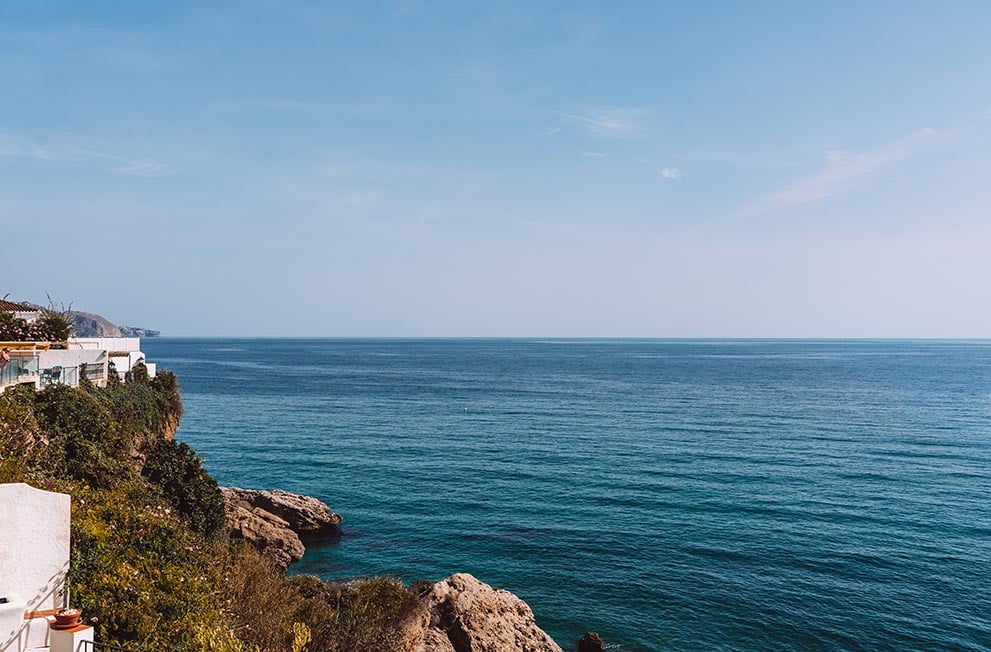
6. Do some hooking up
Yes, you read that right. You know those stories you hear of people going to Spain, falling in love with the waiter, and never wanting to leave? Yep.
That’s because this is a damn sexy place. It’s a no-regrets policy in Spain. Go and create some lovely, sexy memories .
7. Marvel at the Alhambra
This palace in Granada is perhaps the coolest Islamic building in the world! You can spend an entire day marvelling at the fortress and gardens. The view of Granada from the palace isn’t half bad either.
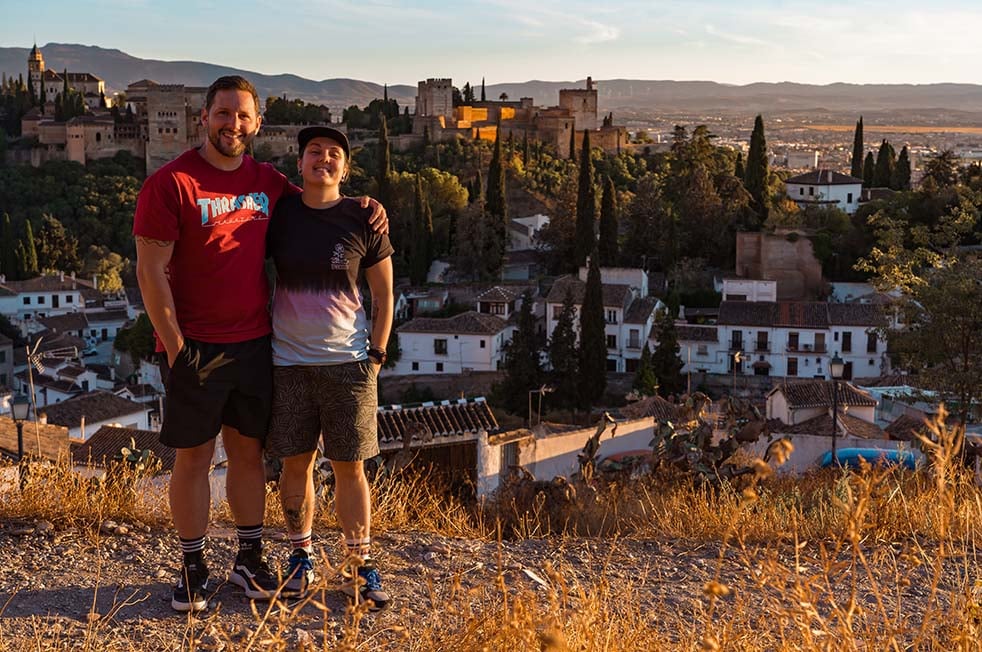
8. Go to a Flamenco Show
Flamenco is traditionally found in the South of Spain, most famously in Seville or Cádiz. Though they are scattered throughout the country too. Flamenco shows are passionate and full of culture.
While visiting Spain, you can peek into the souls of the Spanish a little bit through their flamenco dancing and music. Watch them pour their hearts out to you.
9. Party until the sun comes up
When it comes to parties in Spain, you aren’t limited with choices. Barcelona or Madrid ? Ibiza or Mallorca?
There’s no bad choice. You can find a party anywhere in Spain. From wall-to-wall bars to megaclubs, there is something for everyone… pretty much anywhere.
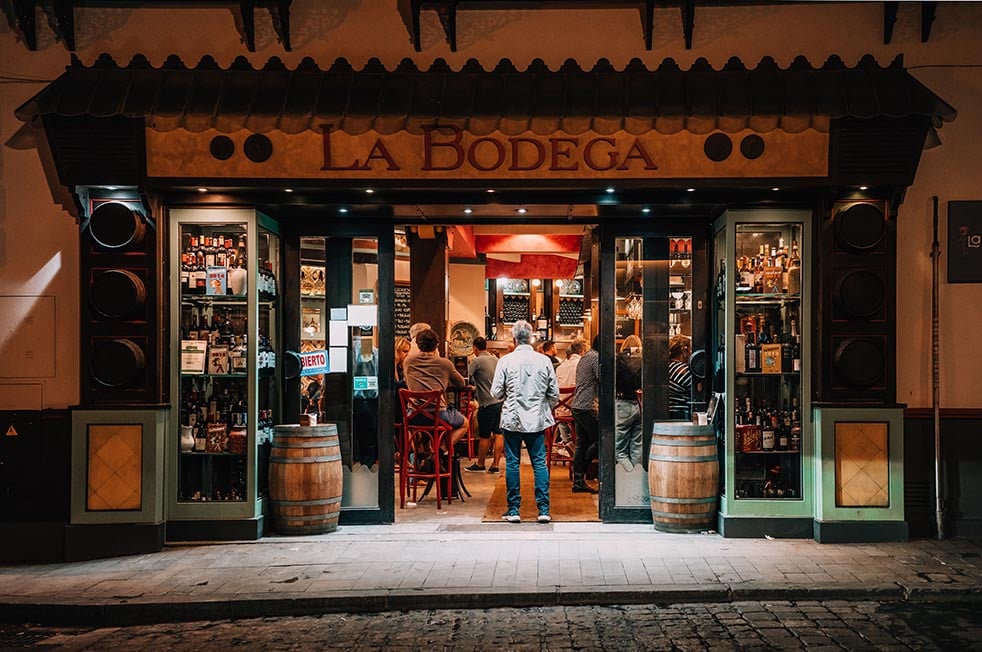
Wanna know how to pack like a pro? Well for a start you need the right gear….
These are packing cubes for the globetrotters and compression sacks for the real adventurers – these babies are a traveller’s best kept secret. They organise yo’ packing and minimise volume too so you can pack MORE.
Or, y’know… you can stick to just chucking it all in your backpack…
There are plenty of amazing hostels in Spain . The cities, towns, and villages are all no strangers to visitors. They know – as well as anyone – how to offer a homey and fun place to rest your head and meet cool people.
If you want to see the best hostel options in Spain, I suggest using HOSTELWORLD . You can even filter your personal travel needs and read reviews to find the perfect place for you.
If you’re walking the Camino de Santiago, make sure you book ahead in the summertime. This popular route books up fast.
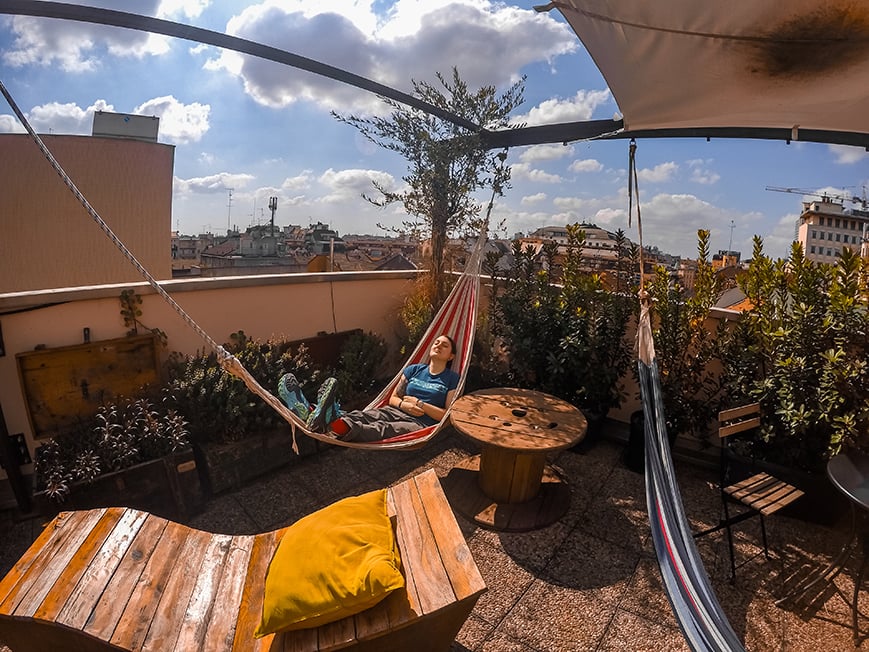
Accommodation prices increase dramatically from June to August pretty much across the whole country, so plan ahead to get the best deals. During the summer, Couchsurfing is the best way to save money and meet locals, though it’s competitive.
It’s always a good idea to ask a mate if they have a mate (of a mate?) if they have a place you can crash for a few nights. You’ll be surprised how often travellers want to help out other travellers. This could easily save you a few hundred dollars in peak season.
However, one of my favourite places to stay are the Airbnbs in Spain . I love the variety and having my own place to come back to after wearing myself out in the city centre or draining my energy after doing nothing at the beach all day. Especially if you’re in a group, a private room on Airbnb can be as affordable as a hostel.
Best Places to Stay in Spain
When you visit Spain, you’re going to need to stay somewhere. So here are some of the absolute best places to stay in Spain.
Especially compared to other Western European countries, Spain is pretty budget-friendly. Spain will help stretch your European travel budget a little further.
That being said, Spain is a notable tourist destination full of famous tourist attractions. During the festivals and the summer months, prices soar.
Towns that seem semi-abandoned in the winter become flooded by families and newbie backpackers when the sun comes out. So bear this in mind when you’re deciding when you want to visit Spain. Out of season, you can bag yourself some serious bargains with cheap flights and budget hotels for less than $25 a pop (or less) if you keep your eyes peeled.
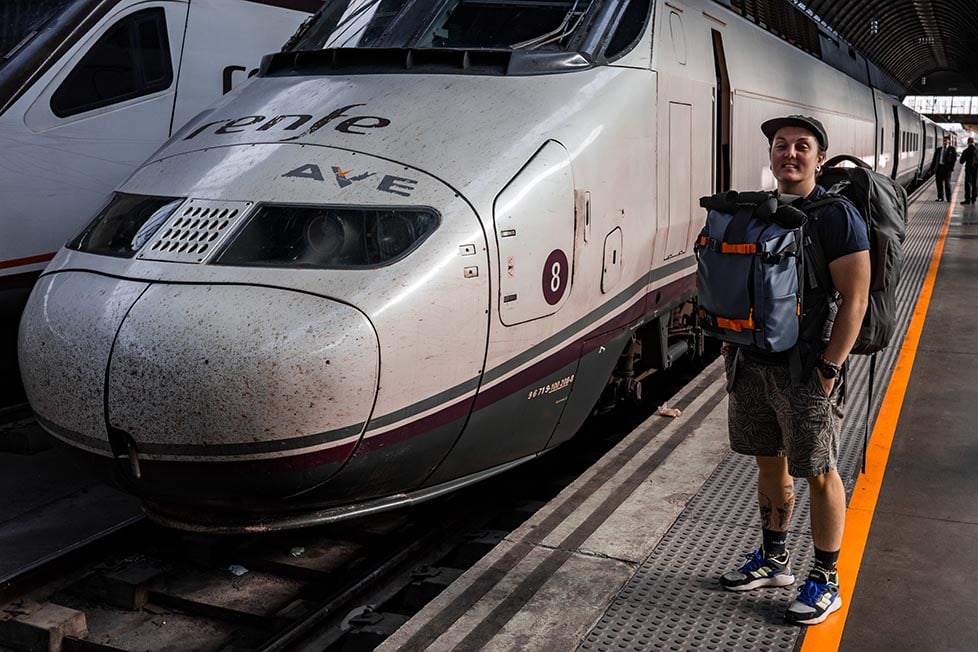
You can easily backpack Spain for less than 60 EUR a day, but if you want to spend half that, I suggest cooking your own food. Beer and wine are pretty cheap – you could get a pretty average bottle of wine for less than $5. So yeah, I don’t drink out too often.
Barcelona is the most expensive city in Spain, followed closely by Madrid. Accommodation prices are no joke, but you can bag yourself a reasonably priced drink and food. If you like your luxury villas, you’re going to pay for them here.
The other tourist towns aren’t that expensive if you stay away from the areas near the main attractions. University towns, like Cádiz, Granada, Seville, etc. are affordable for students (and, therefore, me too).
A Daily Budget in Spain
Your backpacking Spain budget doesn’t need to be anything crazy. The cost of living in Spain is pretty low compared to other countries in Western Europe. Here’s a little round-up of what to expect.
Money in Spain
Spain’s currency is the Euro . The current exchange rate is €1 Euro = $1.09 USD (March 2023).
ATMs are widely available everywhere in Spain, but you can expect a withdrawal fee for international bank cards, which is why I travel with a debit card that refunds me for transaction fees.
Visa and Mastercard are widely accepted in Spain. Always have cash on you when backpacking Spain and visiting smaller, family-run places!
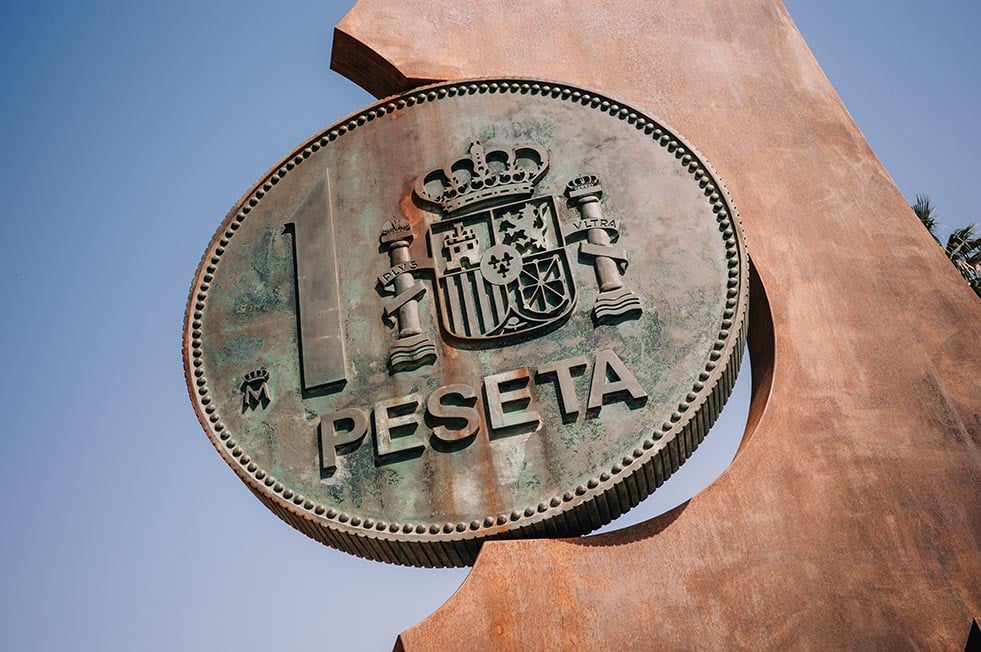
For all matters of finance and accounting on the road, The Broke Backpacker strongly recommends Wise – The Artist Formerly Known as Transferwise. Our favourite online platform for holding funds, transferring money, and even paying for goods, Wise is a 100% FREE platform with considerably lower fees than Paypal or traditional banks.
But the real question is… is it better than Western Union? Yes, it most certainly is.
Travel Tips – Spain on a Budget
If you are backpacking Spain on a budget, here are my top travel tips :
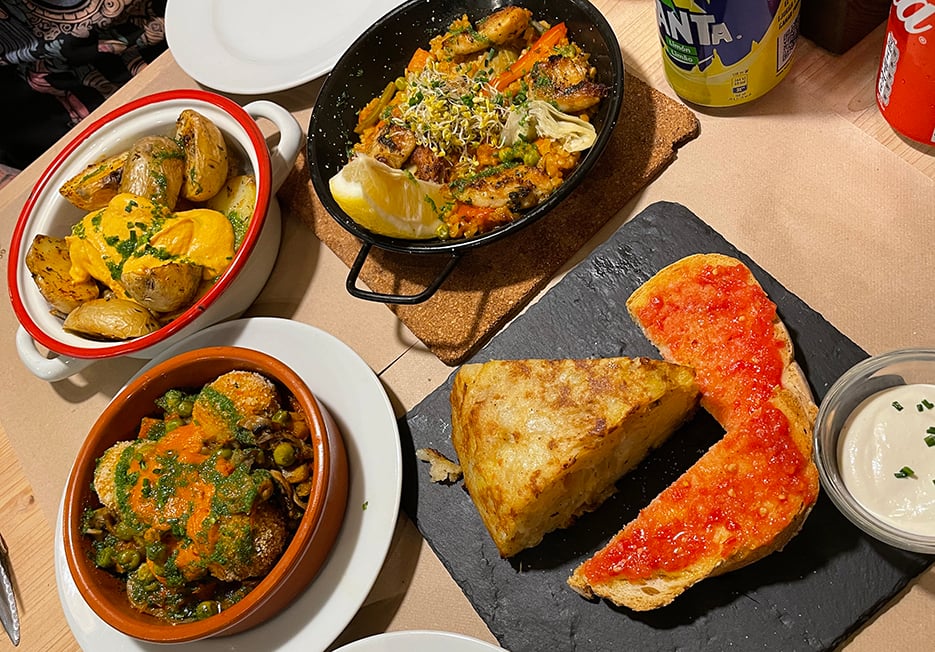
- Visit off-season: Aside from festivals like Las Fallas and Semana Santa , backpacking Spain during spring and autumn are the best times for lower prices.
- Camp : While wild camping is illegal in Spain, you can still find remote places to camp for free. You can also camp in Spain’s national parks! Bring your trusty backpacking tents and save some serious cash.
- Cook your own food: Many accommodations come with a kitchen and you’ll stretch your Spain backpacking budget a lot by making use of it! I love having a portable backpacking stove too.
- Eat free tapas: Sometimes eating out can save you even more money. This is mainly in Granada, where tapas comes free with your drinks.
- Book transportation early: Both plane and train tickets are much cheaper if you purchase them in advance.
- Take the bus: They’re cheaper than trains.
- Use Bla-Bla Car: This ridesharing app is even more affordable than the bus, and it’s easy to book a seat last minute.
- Couchsurf: The Spanish are awesome, and I am so grateful to explore its cities with local friends. Check out Couchsurfing to make some real friendships and see this country from their perspective.
- Pick and choose your popular destinations: If you tried to see all the famous tourist attractions in Spain, you would literally spend hundreds, if not thousands, on entry fees!
- Watch out for free days: Most museums and galleries have a free day, once or twice a month. Plan your trip around these windows.
- Pack a travel water bottle and save money every day!
Why Should You Travel to Spain with a Water Bottle?
Plastic washes up on even the most pristine beaches… So do your part and keep the Big Blue beautiful!
You aren’t going to save the world overnight, but you might as well be part of the solution and not the problem. I hope you become more inspired to continue being a responsible traveller. We’re on a mission to end single-use plastic.
Plus, now you won’t be buying overpriced bottles of water from the supermarkets either! Travel with a filtered water bottle instead and never waste a cent nor a turtle’s life again.

Drink water from ANYWHERE. The Grayl Geopress is the worlds leading filtered water bottle protecting you from all manner of waterborne nasties.
Single-use plastic bottles are a MASSIVE threat to marine life. Be a part of the solution and travel with a filter water bottle. Save money and the environment!
We’ve tested the Geopress rigorously from the icy heights of Pakistan to the tropical jungles of Bali, and can confirm: it’s the best water bottle you’ll ever buy!
The best time for backpacking Spain on a budget is shoulder season: March-May and September-November. Spain is more expensive during the summer and holiday season, and you have to book ahead and find creative ways to save cash.
Plus, aside from too many stinkin’ tourists, Central and Southern Spain are unbearably hot in the summer. That being said, if you are trying to travel to Spain during the height of the parties on the beaches, like Barcelona and Ibiza , then you’re going to want to visit Spain in June and July.
Many of the cities with thriving universities, like Granada , Seville , Cadíz , and Salamanca , have more parties during the school year as well. The best time to visit Madrid is spring and autumn. Prices are lower and the weather is more temperate.
Personally, I love the rain but Galicia and Asturias region are also best visited in the summer when the days are warmer and sunnier. I think the best time to visit Barcelona is in September or October. The heatwave has died off but it’s still beach weather.
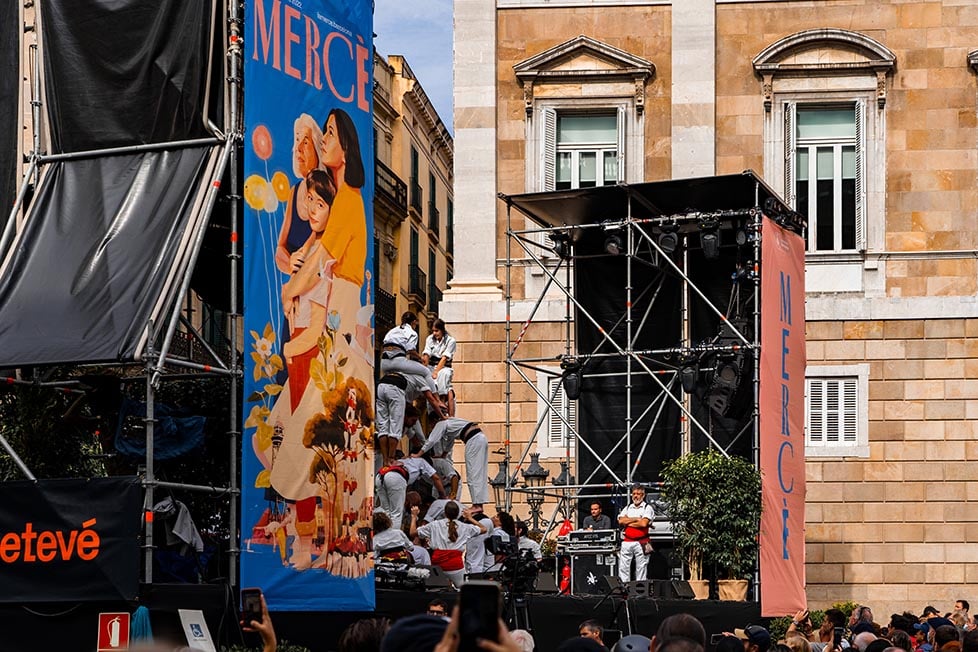
The parties are throwing their end-of-summer bashes, and September 11th is their “Independence” Day, where millions take to the street to celebrate. There are a ton of fun parties on this day, as well as political protests, so be cautious about riots.
Spain is one of the best countries to visit for festivals and cultural events. They are so fun and unique that it’s wise to plan your trip around a festival. There is something going on pretty much every month.
What to Pack for Spain
Packing for Spain isn’t particularly complex. But on every adventure, there are six things I never go travelling without:

Snoring dorm-mates can ruin your nights rest and seriously damage the hostel experience. This is why I always travel with a pack of decent ear plugs.

Hanging Laundry Bag
Trust us, this is an absolute game changer. Super compact, a hanging mesh laundry bag stops your dirty clothes from stinking, you don’t know how much you need one of these… so just get it, thank us later.

Sea To Summit Micro Towel
Hostel towels are scummy and take forever to dry. Microfibre towels dry quickly, are compact, lightweight, and can be used as a blanket or yoga mat if need be.

Monopoly Deal
Forget about Poker! Monopoly Deal is the single best travel card game that we have ever played. Works with 2-5 players and guarantees happy days.

Grayl Geopress Water Bottle
Always travel with a water bottle! They save you money and reduce your plastic footprint on our planet. The Grayl Geopress acts as a purifier AND temperature regulator. Boom!
Spain is a very safe country to visit. But, always bear in mind, nowhere is 100% safe all the time. Always follow standard safety protocol , as you would anywhere else, and you’ll be fine .
What you really need to be careful of is pick-pocketing and petty theft. Madrid and Barcelona are notorious for these muther f*kers.
After countless warnings from locals, I still had my phone stolen out of my hand in Barcelona. I swear, it was gone so fast it was like a magic trick.
I’m not the only member of The Broke Backpacker team to have valuables stolen here either. I heard worse stories from locals about Spain’s safety in the big cities – so please take plenty of caution.
There’s a reason why people shamelessly wear their backpacks on the front here. You can never be too careful – especially in heavily touristed areas.
Be aware of your surroundings, and don’t carry a wallet in your back pocket (dur!). Watch out for strangers coming up to you with petitions and/or maps; this is usually just a distraction to steal your stuff, especially if you’re sitting at a café with your phone out, or walking around a touristy area.
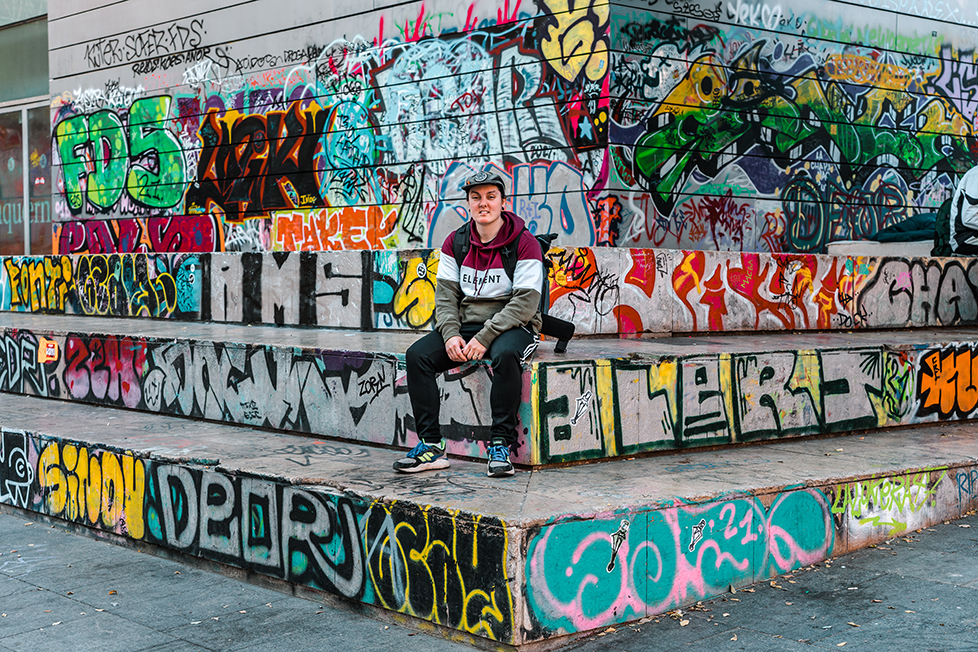
Use a backpack or purse that is hard to get into and bury your valuables within it. Thieves also use knives to cut bags open and take anything out they can grab quickly.
Other worse crimes are less common – but not impossible. If you are renting a car, don’t leave any valuables inside the car.
I don’t recommend walking around at night alone or in places you don’t know. Some places are okay but ask the locals first.
Sex, Drugs, and Rock ‘n’ Roll in Spain
All-night parties are a Spanish speciality. It’s easily one of the best party destinations in Europe with nightclubs, bars, and beach clubs stretching right across the country. Though there’s more going on in summer, there’s shit going down all year.
You won’t be disappointed by music festivals either. Two of my favourites are Primavera Sound and Benicàssim.
Funnily enough, with all the famous partying and socialising, travellers are dabbling in drugs in Spain. Have fun – though, be VERY mindful of your limits. That party week in Ibiza is a lot less fun with an overdose.
Weed is legal in Spain now. Getting into the dispensaries can be a little tricky though.
Many require you to be recommended by an existing member – though there are ways around it. Do a little digging in the local area you’re visiting in Spain. Be friendly, don’t make yourself look like a desperate tourist, and you’ll get a much better response.
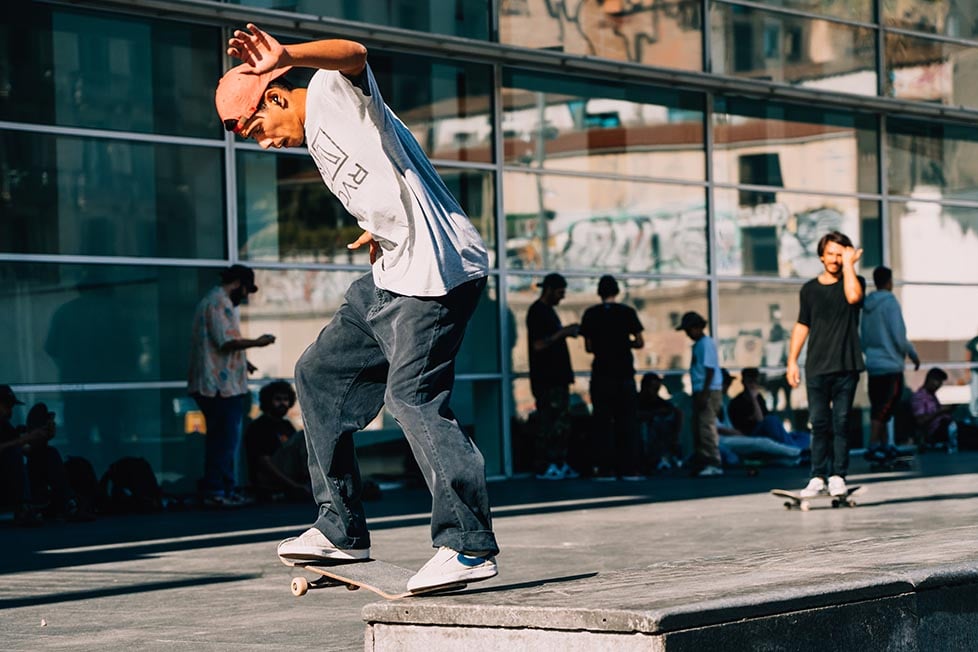
Other drugs are also easy enough to come by. It’s best to ask a trusty contact to help you out. Don’t go heading off into dark allies with wads of cash looking to score.
Now for the sex. I mean, how much do you need to know?
Be a whore. Do whatever you want. Just do it safely and don’t be obnoxious about it if you’re getting it on in the hostel .
If you are visiting Ibiza to party, keep in mind the best time to visit Ibiza is definitely between May and September. Plan ahead to make sure you don’t miss any of the top clubs’ big nights of the week.
I will warn you too: Ibiza is expensive as hell . Clubs literally put salt in the bathroom sink water, so you have to buy a EUR 10 bottle of water. Criminal.
Getting Insured BEFORE Visiting Spain
No ifs, ands, or buts, good travel insurance can be a lifesaver – literally. I know it feels like a waste of money for something you probably don’t use.
But believe me, if you need it, you’ll thank your lucky stars. I wouldn’t go anywhere without it.
ALWAYS sort out your backpacker insurance before your trip. There’s plenty to choose from in that department, but a good place to start is Safety Wing .
They offer month-to-month payments, no lock-in contracts, and require absolutely no itineraries: that’s the exact kind of insurance long-term travellers and digital nomads need.

SafetyWing is cheap, easy, and admin-free: just sign up lickety-split so you can get back to it!
Click the button below to learn more about SafetyWing’s setup or read our insider review for the full tasty scoop.
There are two main international airports with flights arriving from all over Europe, North America, and Asia. You can fly into Madrid International Airport (Adolfo Suárez) and Barcelona International Airport (El Prat).
I recommend checking both to find cheap flights into Spain. They also make great places to arrive into Europe.
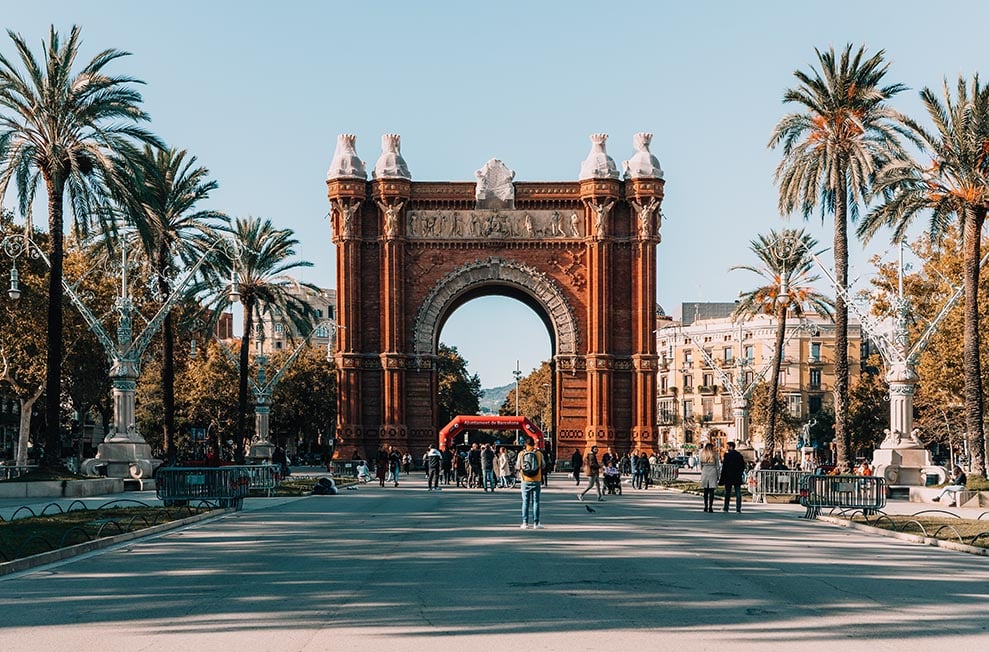
If you’re arriving from other European countries, you won’t need to go through the country’s immigration department as Spain is a Schengen country. There are several airports that connect you to the rest of Europe: Sevilla, Málaga, Granada, and Alicante are just a few of them.
If you use budget airlines, like RyanAir, make sure you check which airport they fly into! For example, Girona (90 minutes from Barcelona) has a small airport that airlines often list as “Barcelona.”
Entry Requirements for Spain
EU citizens get total free reign in Spain. Lucky you.
Many other nationalities need only arrive with their passport and it will be stamped on arrival. You don’t need to pre-apply.
You’re permitted 90 days in the Schengen Zone within 180 days. A lot of long-term travellers and Spanish gap year goers plan their travels around the Schengen visa accordingly.
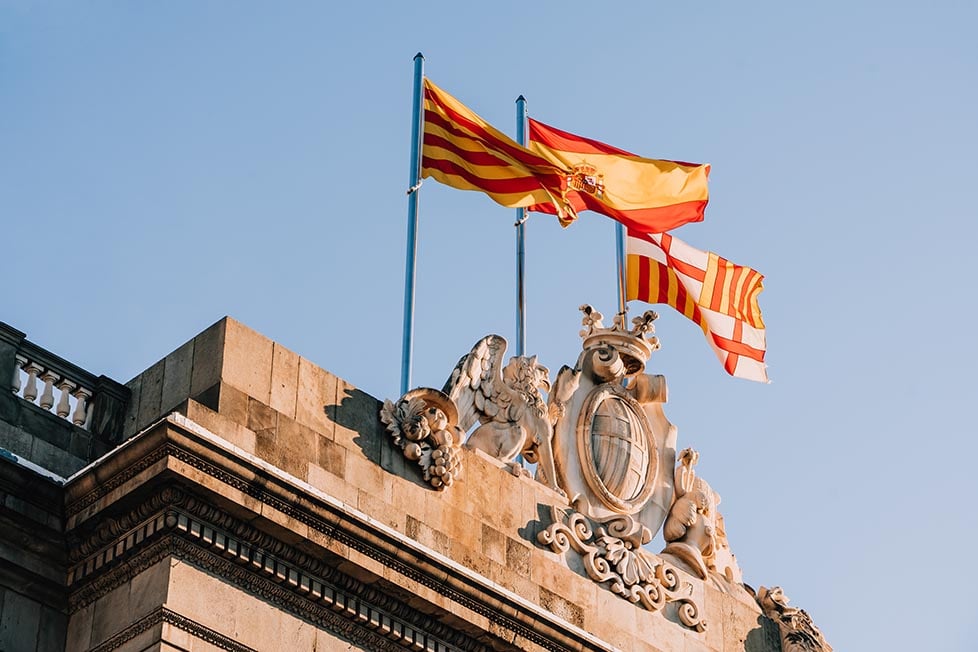
Once 6 months have passed from your original arrival date, the visa resets. Keep an eye on this to avoid trouble for overstaying.
For some countries, you will need to apply for a Schengen visa beforehand. Remember that the Schengen countries aren’t necessarily EU countries and vice versa. For example, you could backpack Spain for 90 days then head over to somewhere like Croatia, Albania, or Bosnia and Herzegovina for 3 months, and then travel back to Spain with a fresh 3-month visa.

Get 15% OFF when you book through our link — and support the site you love so dearly 😉
Booking.com is quickly becoming our go-to for accommodation. From cheap hostels to stylish homestays and nice hotels, they’ve got it all!
I absolutely love to backpack Spain by train. It’s fast, comfortable, and convenient. Plus, the views are spectacular.
The only downside is that it’s bloody expensive. It’s really worth getting a rail pass if you’re travelling around Europe by train . They have country passes too which are great to save money for Spain travel.

Spanish buses are your budget buddy here. For short or long-distance, your options stretch pretty far here. They are clean and comfortable, and they have reclining seats for a decent siesta.
If you book in advance, you’ll get some really solid deals. Travelling by Flixbus is generally a sure bet.
While backpacking Spain last year, I used BlaBlaCar as my main mode of transportation. This car-sharing app has taken the world by storm – and it’s a great way to get around Spain cheaply and conveniently. It’s usually cheaper and faster than the bus and easy to book last minute.
If you are staying in a city for a while, get the travel card. Weekly travel passes can save you quite a bit of money too and make your life easier.
Don’t bother with taxis. Uber is cheaper and safer.
Budget airlines sometimes offer cheap flights between big cities; though it’s not really necessary. If you’re heading out to the islands, flights are usually cheaper than ferries.
Renting a car is a great way to see Spain at your own pace. You can sort your car rental in just a few minutes.
Booking in advance is the best way to score the lowest price and your choice of vehicle. Often, the best car rental prices are a pick-up from the airport. Make sure you get travel insurance that covers this.
Travelling in Spain by Campervan
No country does romantic vanlife like Spain. You can make the best beaches on the Costa Del Sol into your backyard, make a delicious breakfast with views of the mountains, or travel to all the cities in Spain with ease.
You don’t really need to plan ahead. The weather is generally great. Have I convinced you yet?
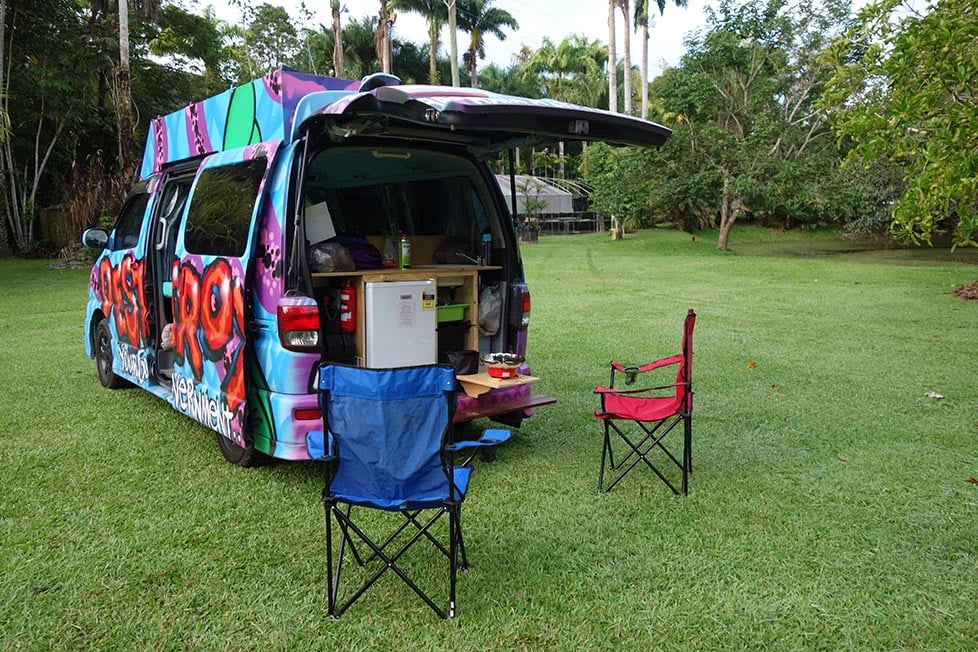
Travelling in Spain by campervan is a fantastic option. Renting a campervan certainly opens doors on your Spain backpacking routes. I can’t think of a better way to spend a few weeks cruising around Spain than in a campervan!
Hitchhiking in Spain
Hitchhiking is totally doable in Spain, though it’s not as common as in other European countries, like Germany or France. Don’t plan on covering more than 200-300km a day. Try to stick to service stations and get practising your Spanish!
Try to avoid hitchhiking during siesta hours (from 14:00 to 17:00) when there tends to be less traffic. In the summer, this time of day is way too hot to be waiting around anyway.
Onwards travels from Spain
Spain is so well connected within Europe and the world that you have everything at your fingertips. Flights are cheap, especially from Madrid or Barcelona. While you’re here though, backpacking Portugal alongside Spain is a really solid choice.
You can also cross to France in the Pyrenees, or from the Atlantic Coast. A lovely addition to a trip to San Sebastián would be a trip to France’s surf town, Biarritz.
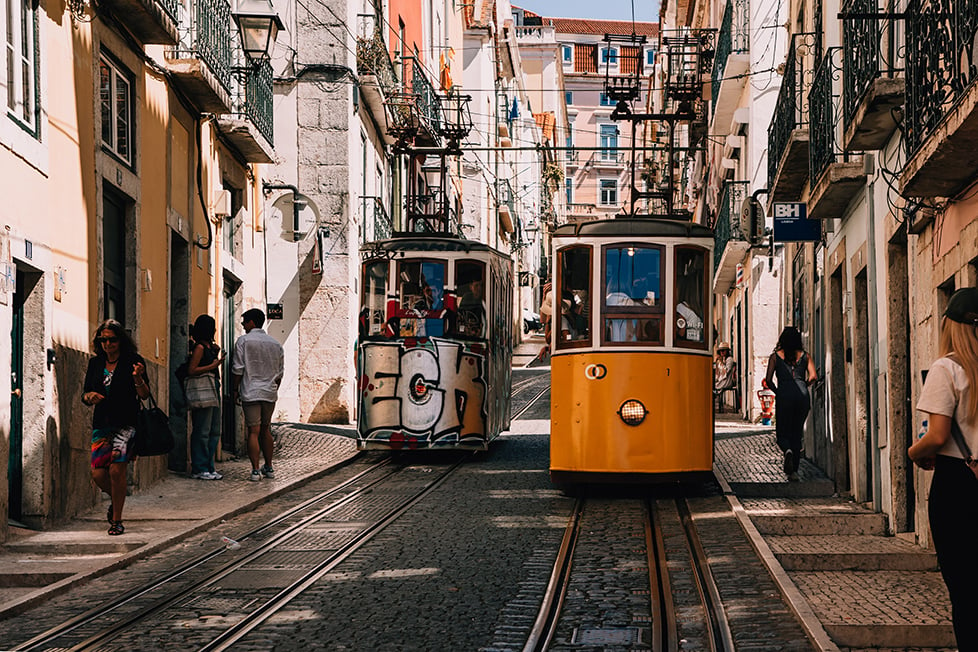
You’re also right next to Morocco here by a cheap flight or ferry. There are several ports that connect both countries.
I really recommend backpacking Morocco too. I was lucky enough to spend 5 months of the pandemic in lockdown there before hopping to backpacking in Spain.
Working in Spain has never been more popular. They generally offer a great work/life balance.
It is a very tempting place to live and work for travellers. Though, wages in Spain are not as high as other parts of Europe, yet living costs are pretty high in comparison.
If you have one of those lovely EU or EEA passports, working in Spain is as easy as showing up. If you don’t, it’s a little trickier.
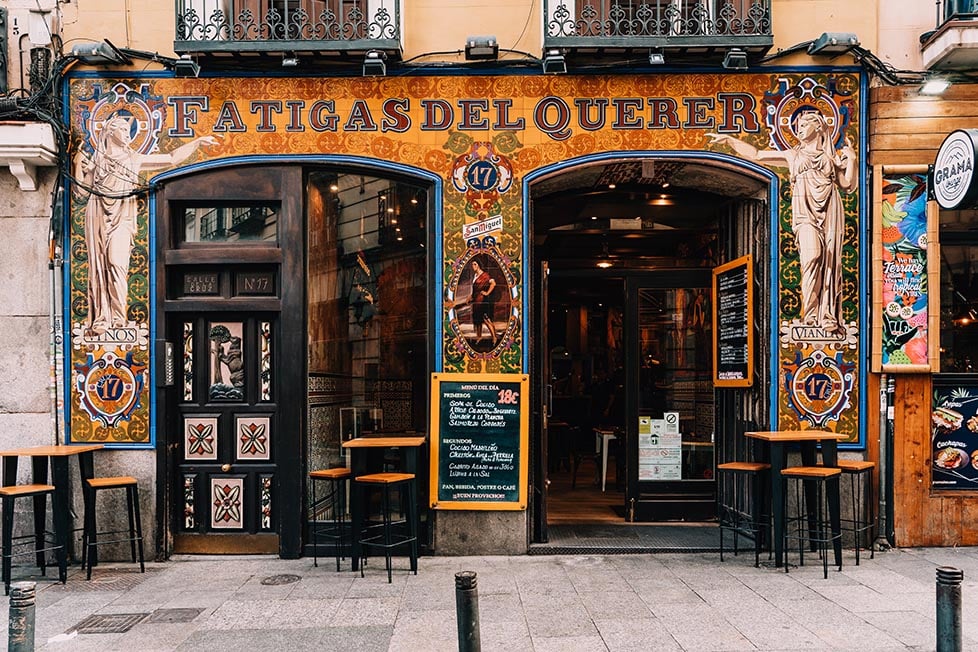
It’s not impossible, but you’ll have a few hoops to jump through. Citizens of Latin American countries often have an easier time obtaining visas on account of former colonial ties.
There are a number of different visa types available including seasonal, long-term, and Au Pair visas. If you’re looking for a shorter-term trip, the Spanish working holiday is a great offer.
There maaaaaay be some options to work without a visa in Spain. (You didn’t hear that from me.)
You’ll have considerably more options if you can speak Spanish too. Lucky for you Global Work and Travel offer the chance to study Spanish in Valencia. You can stay anywhere from 1 to 12 weeks and take your Spanish to the next level.

A new country, a new contract, a new piece of plastic – booooring. Instead, buy an eSIM!
An eSIM works just like an app: you buy it, you download it, and BOOM! You’re connected the minute you land. It’s that easy.
Is your phone eSIM ready? Read about how e-Sims work or click below to see one of the top eSIM providers on the market and ditch the plastic .
The Digital Nomad Scene in Spain
Spain is actually one of the best countries for digital nomads in Europe. The internet is trustworthy, it’s much cheaper than other countries in Western Europe, and the weather is just generally better.
Whether you’re a beach bum or a city person, you’ll have all your options open. Spain is even offering a digital nomad visa now , which means you can live in Spain as a digital nomad . There are great hostels for digital nomads too so you can meet cool people at your new office.
Teaching English in Spain
Teaching English abroad is probably the number one job for ex-pat English speakers in Spain. I spent a few years teaching in different areas and although it was quite hard work, it’s actually a good job for Spain with a big market.
You don’t need a degree. Arguably it may help you but I don’t have one and here I am.
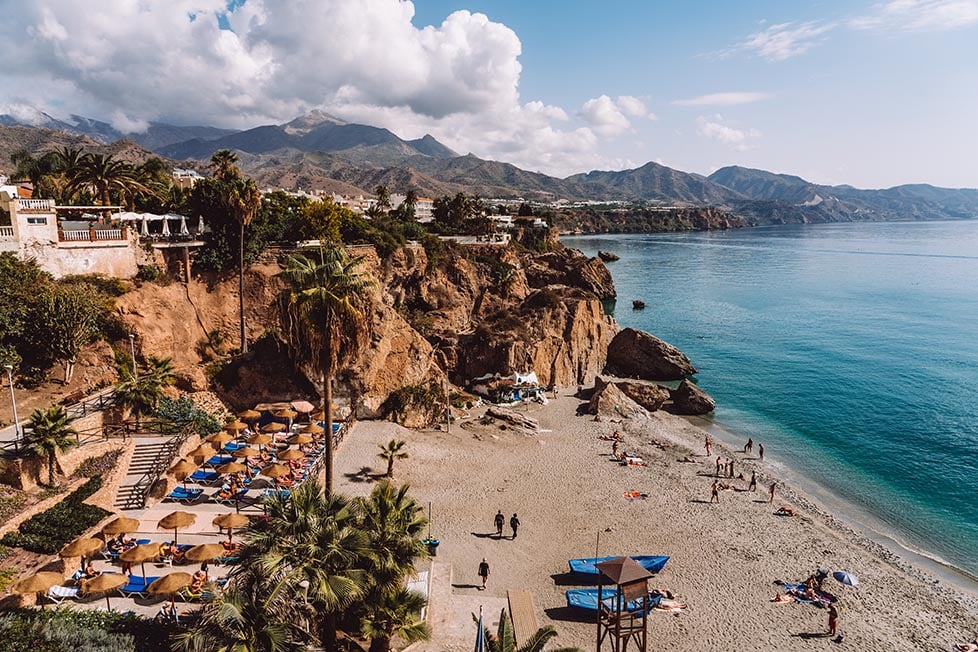
A TEFL definitely will help you but, again, it’s not essential. I didn’t have one when I started – I completely blagged it – but after I got one my teaching abilities improved a lot. So yeah, I highly recommend it.
The best course is with MyTEFL . You learn so much and it helps you get on the ladder. The Broke Backpacker readers also get a really decent discount.
Volunteering in Spain
Volunteering in Spain is a great way to experience the culture and do some good in the world. There are lots of different volunteer projects ranging from animal care to agriculture to restoring mediaeval castles.
Note that it’s sometimes necessary to have the right to work in Spain in order to volunteer. This depends on the place.
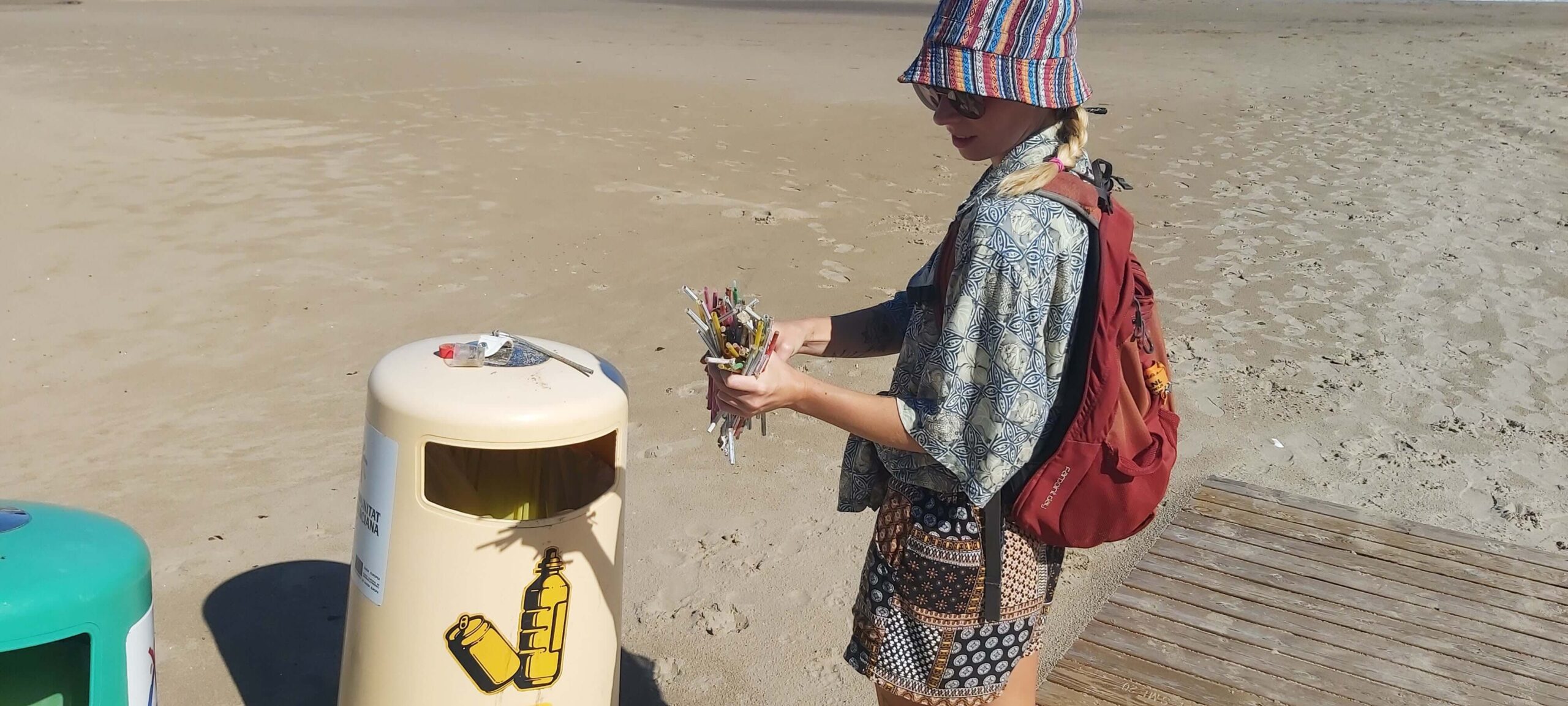
I recommend using programs run through reputable work exchange programs . As well as having more options it’s just generally safer.
We personally recommend that you signup for Worldpackers . As a Broke Backpacker reader, you’ll also get a discount of $10. Just use the discount code BROKEBACKPACKER and your membership is discounted.
Spaniards are passionate and full of energy. Just go to a flamenco show or a football game and see for yourself. Spanish people work to live, not live to work.
They are mostly night owls too; they eat dinner after 10 pm and parties don’t start until after midnight. Most clubs don’t get going until 3-4 am. It’s pretty common for them to go to work with just a couple of hours sleep.
One time, after spending a night out, my friend and I were waiting for a bus around 6 am. Everyone else was chatting on the steps, so we figured they were waiting too.
We eventually realised they were just hanging out and waiting for the next party to start. Welcome to Spain!
And speaking of sleep, many Spaniards don’t really sleep during the siesta. Businesses close down between 13-16:00 and schools usually break for a few hours too. Outside of the big cities in Spain, you’ll need to plan your visit so you don’t have to wait around for several hours for places to open up again.
Likewise, it’s pretty common that places close on Sundays too. Those lovely whitewashed villages are pretty boring on Sundays.

Although it’s becoming less prominent, Spain is still quite a religious country. As well as a church on every corner, you’ll see little reminders everywhere.
Spaniards are very family-oriented, and it’s common for kids (or young adults) to live with their parents well into their 20s, and even until marriage. Spanish people enjoy eating big family dinners with everyone chipping in.
In general, I wouldn’t say the Spanish are all that health-conscious either. Many are heavy smokers and heavy drinkers.
Useful Phrases For Travelling in Spain
In Spain, they speak Spanish (dur). But actually, much of Spain doesn’t speak Spanish as their first language.
There are 5 languages: Castellano (traditional Spanish), Catalan, Basque, Galician, and Occitan. Most schools teach both their regional language and Spanish, but many older people in these regions – especially in smaller towns and remote areas – may not speak Spanish.
That being said, you’ll get by everywhere with Spanish. Although you won’t have any trouble getting around Barcelona, Madrid, or other touristic areas with English – I strongly recommend that you practise your language skills . Their English isn’t the strongest, you shouldn’t expect people to speak English all the time, plus you’ll break a lot of barriers!
Hola – Hello
Buenos días – Good morning
Buenas tardes/noches – Good afternoon/night
Cómo estás? – How are you?
Qué onda? – What’s up?
Vale – okay
Una cerveza por favor – A beer please
Dos cervezas, señor – Two beers, sir
(Muchas) gracias – Thank you (very much)
Tienes un fuego? – Do you have a lighter?
Qué hora es? – What time is it?
Donde esta el baño? – Where’s the bathroom?
Perdón – Excuse me/sorry
Me puedes ayudar? – Can you help me?
Sin bolsa de plástico – No plastic bag
Buena onda – Basically translates to good vibes
Spanish food is famously meaty. Don’t be surprised to see pig legs hanging in shops, houses, petrol stations, garages, you name it. Their jamón (ham) is traditional – especially around the holidays.
Yes, it is possible to survive on jamón , olives, and tomatoes. They even claim (very boldly, I might add) that they have the best olive oil in the world . But there are many more culinary delights…
You already know the paella. You’re going to find the most traditional version in Valencia. If you’re in a notable tourist destination, you’re going to get the tourist version of Paella.

Across the whole country, but especially on the coast, the seafood is amazing and reasonably priced. While living in the Canary Islands, we had freshly caught seafood handed to us every day by local fisherpeople.
Must-Try Dishes in Spain
Paella – Spicey ricey dish.
Tapas – A little bit of everything.
Pinxtos – Like tapas, but only served in Basque Country and better .
Patatas Bravas – saucy potatoes.
Croquettas – hot, crunchy, delicious abuela food.
Churros con Chocolate – Deep fried deliciousness.
Tinto de Verano – The best way to get drunk in summer.
Rebujito – Another great way to get drunk.
Cured meats ( jamón, chorizo, salchichón) – Who doesn’t love a bit of dried pig leg?
Pulpo A La Gallega – Boiled octopus + sides.
While backpacking Spain, what you eat is almost as important as when you eat. Breakfast is eaten late and generally consists of a quick coffee and snack, tostada , or maybe even a churro with chocolate. Lunch is eaten between 2 pm and 3 pm, and dinner from 10 pm onward.
Between 2pm and 4pm, most shops in Spain shut down the siesta means people can have lunch at home with their families. Most of Spain is unbearably hot at this time, and who wants to work in the heat!?
Most people will stay up late into the night – even children. It’s common to have dinner at midnight, especially on weekends.
A Brief History of Spain
While backpacking Spain, it’s important to be aware of Spain’s complex history.
Ancient History
Iberians, the Phoenician Empire, and, later, the Celts came before Ancient Rome conquered Spain. Rome left four powerful elements: the Latin language, Roman law, the municipality, and the Christian religion. After the fall of the Roman Empire, at the beginning of the 8th century, the Arabs ruled for eight centuries.
Moorish Arrival
You can’t miss the imprint of Muslim rule while backpacking Spain. There are thousands of buildings in the South of Spain dating back to Moorish times.
The Golden Age ended with a civil war. The Christian Reconquest ended in 1492.
Christian Revival, the Spanish Inquisition, and the Decline
1469, the marriage of Catholic Monarchs, Isabella of Castile and Ferdinand of Aragon, marked the beginning of Catholicism’s success over Spain. They conquered the last of the Arabs.
In 1492, they sent Christopher Columbus to “conquer” the Americas. Over the next two centuries, the Spanish Empire became a world power – and massacred nations. The Spanish Inquisition focused on removing Islam’s policies and converting Jews to Christianity.
This is why pork and jamón have strong cultural connections in Spain. Hanging pig legs showed that you were not a Muslim or Jewish “traitor”. Fernando and Isabel eventually exiled all Jews who refused to convert – or killed them.
Their empire ended with a less-than-graceful fall from power in the 18th century. In the 19th century, Spain was divided between liberals and conservatives. Powers teetered with internal struggles and lost their colonies.
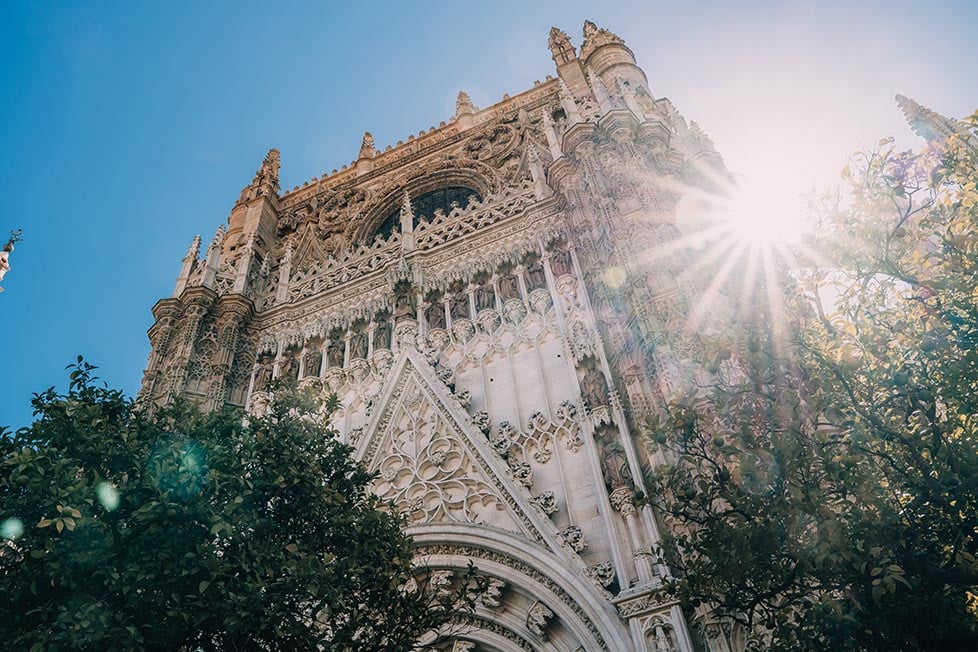
20th Century: Civil War, a Dictatorship, and Democracy
A never-ending power struggle caused growing violence and social conflicts – leading to a military uprising and civil war. Both sides committed massacres and reprisals.
1936, General Franco became Spain’s new dictator. Despite Franco’s support of Hitler, Spain remained on the sidelines during WWII. His forty-year dictatorship marks a time of oppression and conflict in Spain.
Franco’s death in 1975 ended the era of this dictatorship and the monarchy returned. King of Spain, Juan Carlos I de Borbon y Borbon established a western-style democracy with free elections and no official religion in 1977.
Between 1980 and 1982, the Catalonia, Basque Country, Galicia and Andalucía regions approved statuses for self-government. In 1986, Spain joined what is now the EU.
While you’re at it, you should know of some special experiences while you visit Spain.

Things go wrong on the road ALL THE TIME. Be prepared for what life throws at you.
Buy an AMK Travel Medical Kit before you head out on your next adventure – don’t be daft!
Trekking in Spain
With two main mountain ranges, hiking opportunities in Spain are strong! Trekking in Spain and walking the Camino de Santiago are life-changing experiences.
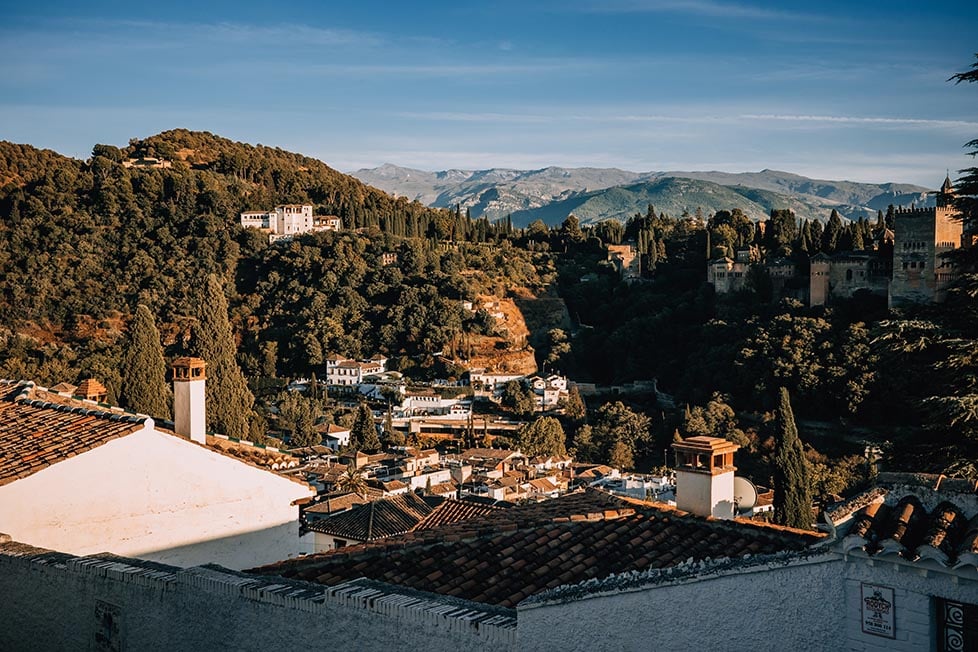
Walking El Camino de Santiago
What began as a pilgrimage trail hundreds of years ago is now also journeyed by travellers all over the world. It’s one of the world’s most famous walks. If you have the time, I highly suggest walking El Camino while backpacking Spain.
The best times to hike El Camino are May and September. July and August are crowded and hot.
There’s very little technical walking on the main Camino routes – you’ll mostly be on well-maintained tracks or pavement – so you don’t need much. The most important thing to bring is a good pair of hiking boots (well broken in), a refillable water bottle, and layers – especially if you are hiking during shoulder season.
Otherwise, rain is rare. Aim to pack for your hike light, as you will stay and eat in towns along the way.
El Camino Routes
- Camino Francés (the French Way): The Camino Francés starts in St Jean Pied-du-Port. It’s the most popular with varied scenery and good infrastructure.
- Camino Primitivo (the Original Route): The Camino Primitivo is the most direct route from Oveido to Santiago (passing through Lugo). It rejoins the Camino Francés about 40 miles from Santiago. The walk is about 180 miles long and is quite challenging with hill climbing and erratic weather.
- Camino del Norte (the Northern Way): The 510 miles of pathway will take about 35 days. Distances between towns are reasonable but accommodation is sparse so book ahead. This route starts in Irún on the border with France and travels west through Bilbao, Santander, and Oveido.
- Camino Portugués (the Portuguese Way): Starting in Lisbon and passing through Porto and Poneverdra. it is 380 miles long, and reasonably flat. However, you will walk alongside motorways.
- Camino de Finisterre (the Finisterre Way): Instead of finishing your walk in Santiago, continue on to Finisterre, whose name literally translates to “end of the world”. The route adds on 55 miles with an optional extra 18-mile walk to Muxia afterwards.
Hiking in the Picos de Europa
Picos de Europa translates to Peaks of Europe. This national park is located in the Asturias region, so you can expect lush green scenery.
Hiking and Skiing in the Sierra Nevadas in the South of Spain
No, I’m not talking about the American pale ale beer. The original Sierra Nevada mountain range is located in the South of Spain.
On a clear day, you can see this snow-capped mountain range from Granada. This is the largest of Spain’s national parks , with plenty of hiking and climbing options.
During winter you can also ski in the Sierra Nevadas for ridiculously affordable prices.
Hiking and Skiing in the Pyrenees of Spain
This mountain range is close to Barcelona and borders France. There are plenty of hiking and skiing opportunities here. Parque Nacional de Ordesa y Monte Perdido is full of limestone peaks and deep valleys.
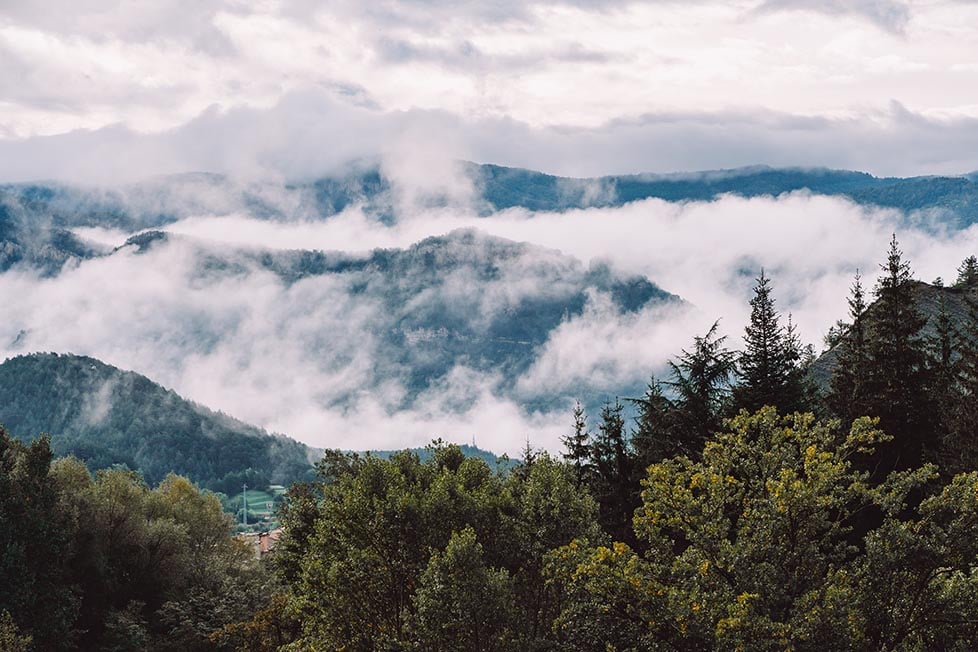
Top tip: Going off grid often means shitty internet connection. Be sure to find yourself a Sim Card in Spain with the best connection for where you’re heading.
Joining an Organised Tour in Spain
For most countries, Spain included, solo travel is absolutely sick. That said, if you are short on time, energy, or just want a little push to meet some other travellers, joining an organised tour is a good option.
The tours help you see a lot more of Spain quickly and without the effort that goes into planning a backpacking trip. However, not all tour operators are good – that is for sure.
But G Adventures is a solid down-to-earth tour company catering to backpackers just like you, and their prices and itineraries reflect the interests of the backpacker crowd. You can score some pretty sweet deals on epic trips in Spain for a fraction of the price of what other tour operators charge.
Can I go backpacking in Spain alone?
Absolutely! Not only can you but it’s amazing too. It’s a really top destination if you’re a solo traveler. You quickly find you’re very often not alone after all.
Which is the best time to visit Spain?
In my opinion, March – May or September – October. You have the best combination of low tourist season, good weather, and lower prices. That’s when you’re most likely to find me there.
Do I need to learn Spanish to travel in Spain?
Eh, you don’t neeeeeed to. But… 1) It will help you a lot – in Spain and just in life 2) You’ll get to know Spain much better 3) It’ll help you hook up with that sexy bartender …So why not?
How much does it cost to backpack in Spain?
€60 a day is a comfortable backpacking Spain budget. As well as covering a bed in a hostel dorm, transport, and food, you’ve got lots of wiggle room for fun with this. Of course, budget and long-term travellers can easily bring this down a few notches. Likewise, those luxury villas and 3-course meals bump it up a lot.
If you haven’t noticed by now, I love Spain! I’ve been so well received there over my travelling years – and I’m far from seeing the last of it.
I’m so happy to recommend it for every kind of traveller: old, young, newbie, solo, groups, lovers, you name it. Backpacking Spain allures anyone who appreciates history and rich culture, a hearty food and drinking scene, and year-round beautiful beaches and mountain ranges.
From my first experience in that all-inclusive hotel that I barely left to passing a pandemic to bouncing around charming villages and remote beaches with my backpack, I can safely say, you can make your Spain itinerary uniquely yours. There really is something to excite everyone. I urge anyone who travels to Spain to visit different regions (time permitting) and experience contrasting cultures.
After a few weeks of backpacking Spain, you’ll soon settle into the laid-back attitude. You’ll be staying out late on a school night, eating dinner at midnight, and appreciating that siesta.
Have fun but don’t lose yourself. Go easy with your physical and mental limits and stay aware of your surroundings.
Although serious crime poses little risk, petty crime isn’t uncommon – especially in the big cities. Plus, you’re still a guest in this country so treat it with respect and you’ll be equally rewarded.
Try your best to speak Spanish. It will make all the difference in your experience. You’ll get to know the people and it’ll help you get around.
Each region of Spain has its own subculture with different languages and traditions. No one expects foreigners to speak Basque or Catalán, but you’ll notice the light in the locals’ faces if you can even say a few words.
Vamos . You’re ready for backpacking in Spain!
- Backpacking France Travel Guide
- Essential Travel Tips you need for Spain
- How to Travel Alone as a Woman
- How to choose the BEST Travel Backpack
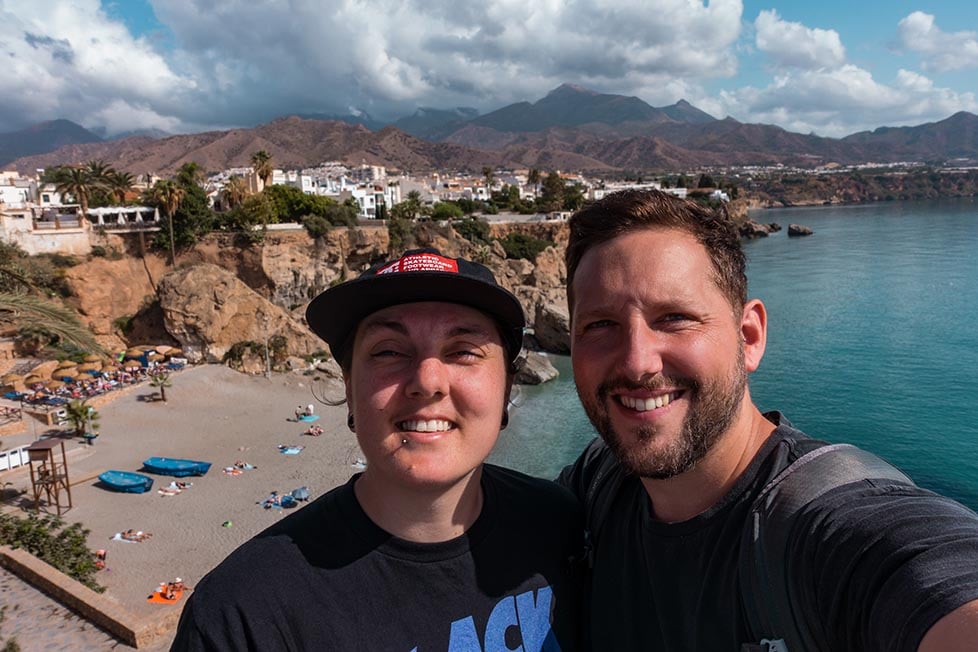
Share or save this post

12 Comments
So many great memories reading this. A few years ago we pretty much did the exact itinerary that you are suggesting for the North. Last year I also did another roadtrip down the west of the country following the Portugue boarder. I’ll be going back again soon I’m sure so will plan in your southern itinerary as it looks great!
Hot damn that’s a comprehensive guide! I only scratched the surface of what’s to explore in Spain, and definitely adding more destinations in my travel list after reading this meaty guide. Thanks for all the info!
Your blog has been extremely helpful and provides great details. Thank you for sharing all of this information with the readers.
I needed some opinion from you. I am confused if i should stay a night in Toledo or just do the day trip and head back to Madrid. By looking at the pictures, it looks magnificent at night and i would really want to witness that but also at the same time, i am not sure if staying back in Madrid at night and experiencing the nightlife there would be a better idea.
Also, i need to head to Cordoba and i could not find any direct trains or buses that leave directly from Toledo. I will have to head back to Madrid eventually to reach Cordoba. Since you mentioned use of BlaBla Cars, can you suggest if i will be able to easily get myself a rideshare if i stay back in Toledo for the night?
Thank you so much for your help. Cheers!!
Hi! I think you answered your question. Toledo will be beautiful at night and less touristy, but if it’s the raucous nightlife you’re after, then head back to Madrid. I’m not sure about the most recent schedules from Toledo to Cordoba. I took a bus to Cordoba from Granada. Blabla car has never failed me!
Good article, just a few corrections: Santillana del Mar isn’t in Asturias, and Oviedo isn’t in Galicia. Catalonia also doesn’t have an accent.
Thanks for the corrections! Though I am not sure where you see the tidbit about Catalonia. I only said that Spanish is not the first language spoken.
Great post about Spain, it really covered everything! I suggest, though, to warn that hitchhiking in Spain is illegal everywhere and you should keep your thumb down if you see the cops. Fortunately, only Traffic road police can fine you, but I had a lot of experiences with Guardias Civiles stopping me to check all my documentation and making me wait for around an hour. Probably you can get by if you are a foreigner and don’t speak Spanish because the cops won’t speak English either. Apart from Blablacar, you have Amovens.es. It’s the same idea but way cheaper because the fee that the company charges is maximum 1€. In the festival section, I would add the Nochevieja universitaria de Salamanca. They have a huge party 15 days earlier New Year’s Eve for students and the whole city is a big party, packed from people coming from all over the country.
Hi, I’m planning to visit Spain and Portugal this winter. Can you guide me about the weather during January and what to wear during that time!? I’ve never visited Europe so I don’t have any idea.
Hi there! Apologies I never saw this until now, but the weather in winter is actually pretty comfortable for visiting cities in Spain or Portugal. Spain is pretty big, so it kind of depends where you are traveling, but I would plan for crisp, sunny days as well as overcast rainy ones. (I wouldn’t go to Northern Spain — Asturias/Galicia etc. in winter, but the rest of the country will be great for sightseeing.) Pack layers so you are ready for anything, and gloves/scarf is always essential for winter, but neither country is going to be NEARLY as cold as the rest of Europe.
As you probably know, winter is not good beach weather in either country, but the coastal cities will probably be comfortable walk around with a jacket and boots. Have a great time!
In the north, along the coast bordering the Atlantic Ocean (Basque Country, Cantabria, Asturias and Galicia) winter is mild and humid. The interior of Spain , is largely occupied by a plateau, called Meseta, which has an average altitude of 700/800 meters (2,300/2,600 feet) and has colder winters.
I will be traveling to Spain and Morocco this summer! I found this information extremely valuable in trip planning! Thank you so much!
This article is awsome and full of great info. I’m not going to backpack, but visiting Spain is a life dream of mine. Thanks for all the good information. Greatly appreciated.
Leave a Reply Cancel reply
Your email address will not be published. Required fields are marked *
Save my name, email, and website in this browser for the next time I comment.
Notify me of followup comments via e-mail.
- ANDALUCIA HIKING
- PRIVACY POLICY
- HIKING GEAR
- HIKING TIPS
- GIFT GUIDES
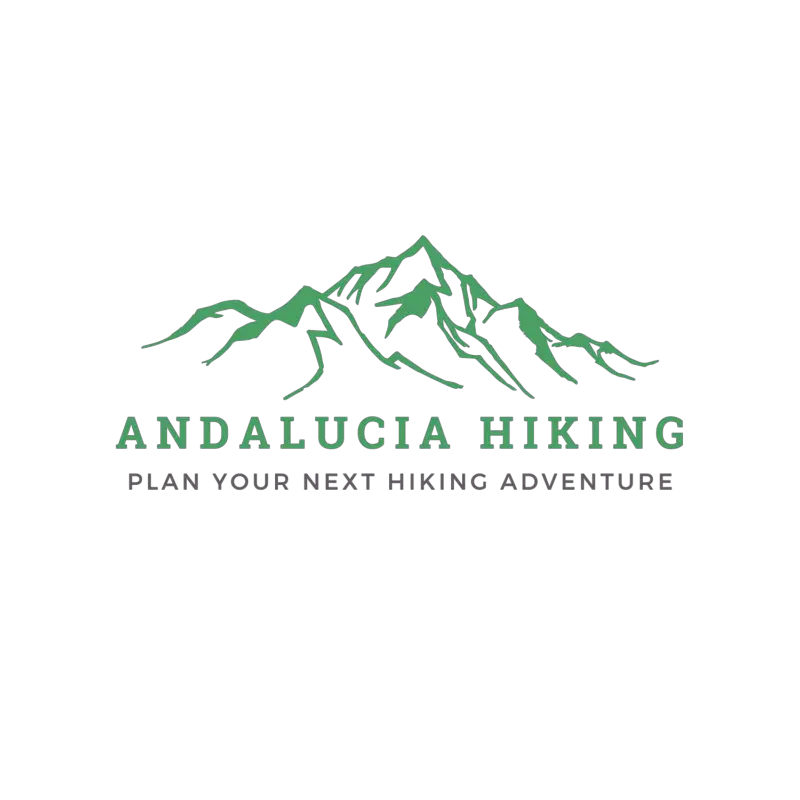
ALMERIA , CADIZ , CORDOBA , FEATURED HIKING POST , GRANADA , HIKES , HUELVA , JAEN , MALAGA , SEVILLE
21 best hikes in andalucia: southern spain bucket list hikes.
Sharing is caring!
Hiking in Andalucia is definitely worthy of your Spain bucket list! With a large variety of landscapes boasting coastal hikes like no other, rivers, ravines, waterfalls, and bare rugged 3000-meters peaks, it’s a wonderful destination for outdoor lovers!
Having lived in the region for over 10 years and hiked in all 8 provinces, here are my top pics for the best hikes in Andalucia that you should add to your bucket list.
I’ve divided them into hikes only for summer, hikes for the rest of the year (autumn, winter, spring), and finally, hikes that you can do all year round to make it easier for you to plan.
Disclosure: This post may contain affiliate links. That means that if you make a purchase through one of those links, I will get a small commission at no extra cost to you. As an Amazon Associate, I earn from qualifying purchases.
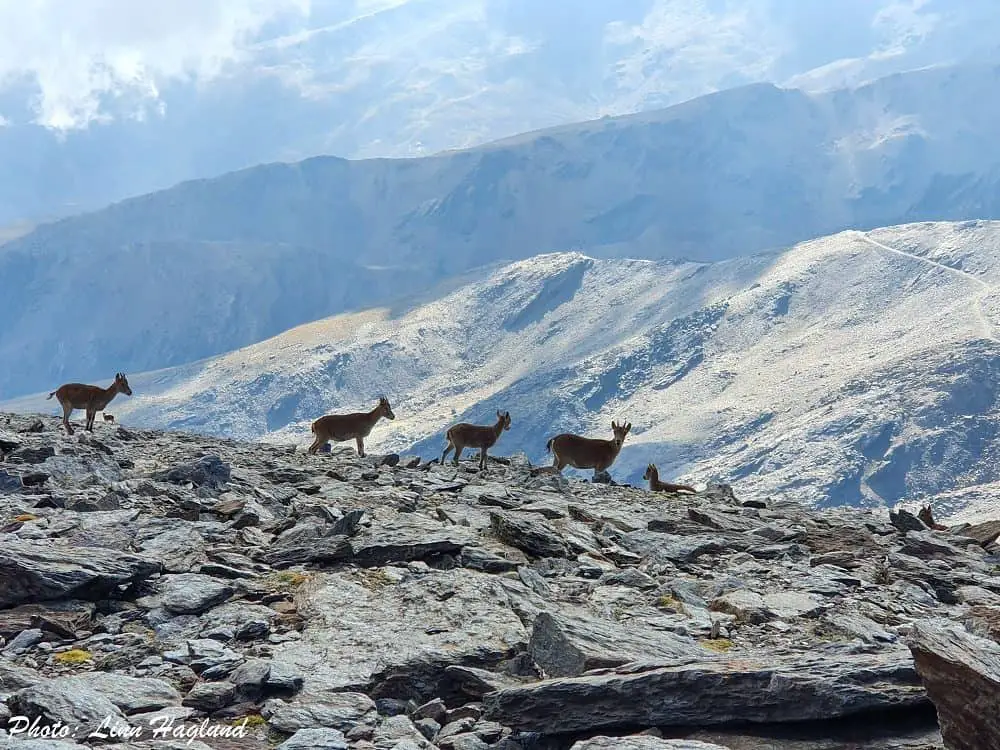
I’m Linn Haglund, the face behind Andalucia Hiking. I’m an avid hiker and after calling Andalucia home for over 10 years, I’ve covered my share of peaks, ravines, rivers, and valleys across all 8 provinces. Now, I’m here to help you navigate this incredible region with thorough hiking guides, hiking tips, and gear recommendations.
Table of Contents
What to know about hiking in Andalucia
With the large variety of trails and the enormous temperature changes you can experience between summer and winter, it’s important to make sure you’re well prepared and that you choose the right trail for the season. If you’re new to hiking, you can read my beginner hiking tips here and if you’re hitting the trails by yourself, check out this post .
Here are a few tips to keep in mind:
- In summer – only hike where you can walk in rivers and go swimming along the trail OR at high altitude in Sierra Nevada
- Avoid hiking in the higher Sierra Nevada in winter when it’s snow unless you go with someone that knows the mountains, eg. a guided hiking tour
- Always bring more water than you think you’ll need
- Always bring sun protection and wind protection on your hikes
- Hike in proper trainers/hiking shoes/boots (no flip flops!)
- Wild camping is not allowed in Spain, but you can set up a tent overnight on a through-hike with permission. ( Read how to do this here )
Even the winter months can be scorching hot in Andalucia, so you need to check the forecast. If you wear shorts, bring pants in your backpack and if you wear pants, bring shorts in your backpack. I can’t count the times I’ve had to change during a hike because I evaluated the temperature wrong.
If you hike with dogs or small children, you need to read up about the pine processionary caterpillars and avoid hikes with pine trees in the season.
A lot of the Andalucia hiking routes are hard to get to by public transport. You are better off renting a car or even see if you can get there by BlaBlaCar when you go hiking in Andalucia’s remote areas.
You should also familiarize yourself with the 7 Leave No Trace Principles before heading out hiking in Andalucia or anywhere else.
Finally, make sure you read my Expert tips on hiking in hot weather before hitting the trails!
Best hikes in Andalucia for summer
Mulhacen, granada.
Mulhacen (3479m) is the highest peak, not only in mainland Spain but in the entire Iberian Peninsula. And though there are many multi-day routes to reach the top of this southern Spain bucket list hike, you can actually reach it on an easy day trip during the summer months.
The Sierra Nevada National Park bus drives you all the way up from Capileira to Mirador de Trevelez where you have a 4-6 hour hike up and down where they pick you up for your return. This makes for a perfect Andalucia walking adventure even for less experienced hikers.
The peak of Mulhacen is an important Muslim destination as legend says that Abu l-Hasan Ali, one of the Moorish kings of Granada was buried there. He was known as Muley Hacén in Spanish, thereof the name of the peak.
You can read my complete hiking guide to Mulhacen here .

Pico de Veleta, Granada
Pico Veleta (3398m) is the second-highest peak in Sierra Nevada National Park and can easily be done in a day from Hoya de La Mora. Yet many hikers take on a two-day excursion hiking both Veleta and Mulhacen.
Pico Veleta is where the highest skiing slopes in Sierra Nevada are in winter and in summer, it’s actually possible to take the ski lift almost to the top. This is a great opportunity if you hike with kids, though the drop on the edge is unforgiving, so make sure they don’t walk on the edges.
Hiking Pico Veleta is one of the best hikes in Sierra Nevada , especially due to the easy accessibility to such incredible high sierra views.
Read my complete hiking guide to Pico Veleta here .
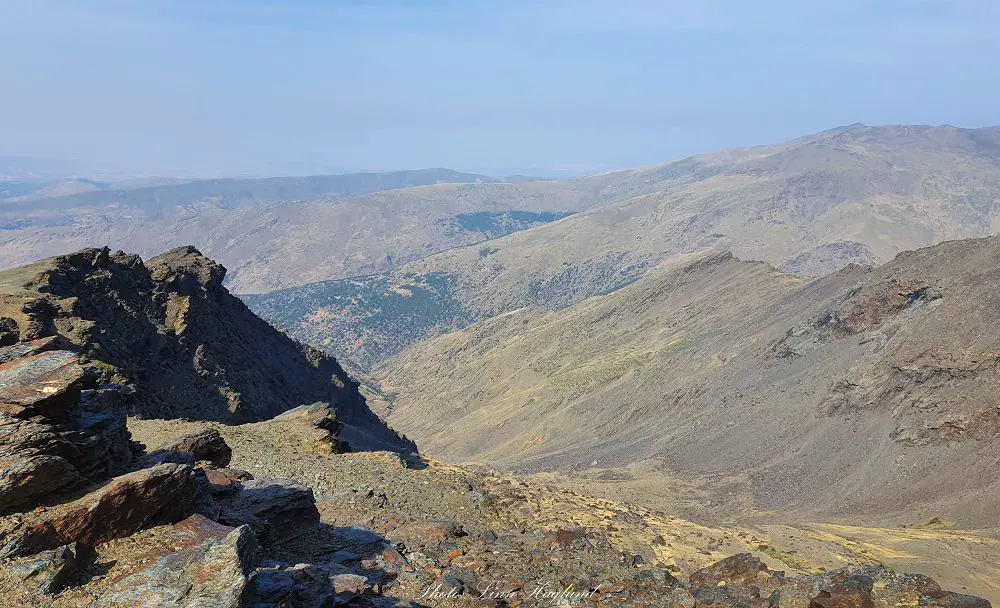
Siete Lagunas, Granada
The hike to Siete Lagunas (Seven Lagoons) in Sierra Nevada National Park is a wonderful but demanding hike that ascends 1500 meters over less than 9 kilometers from the village of Trevelez. You can expect to use at least 7-9 hours on this hike, depending on your fitness level and on the weight you carry.
The hike takes you through a small pine forest before it continues through green meadows, glittering rivers, and the final ascent to the lagoons goes along a mesmerizing waterfall. This is the only place where the trail is unclear, but you just need to aim for the top of the falls.
Siete Lagunas is a popular place to wild camp for hikers that take this route as a part of their trek to Mulhacen or Alcazaba. If you plan to do so, make sure you read the guidelines for wild camping in Sierra Nevada first, so you do it legally.
This is without a demanding but rewarding hike that you should take on if you’re fitness level allows it as it’s one of the most rewarding hiking trips in Granada’s Sierra Nevada .
Read my complete guide to hiking Siete Lagunas here .

Rio Chillar, Malaga
When it comes to river hikes, it’s hard to beat the popular Rio Chillar that winds through a narrow slot canyon forcing you to walk in the water for large parts of the hike. This is the ideal summer hike when other trails are too hot to even consider, and among the best walking in Andalucia.
You can swim in water holes, but you’re also walking mostly in the shade which is refreshing on a hot Andalusian summer day. There is no doubt, during summer in Andalucia, walking in water is the best way to explore trails.
As this is a heavily trafficked trail from Nerja, Malaga, in the warmest summer months, I recommend that you go early or late in the summer or hike on the weekdays if possible. The hike takes about 6-8 hours return including stops for food, snacks, and swimming.
Read my complete hiking guide to Rio Chillar here .
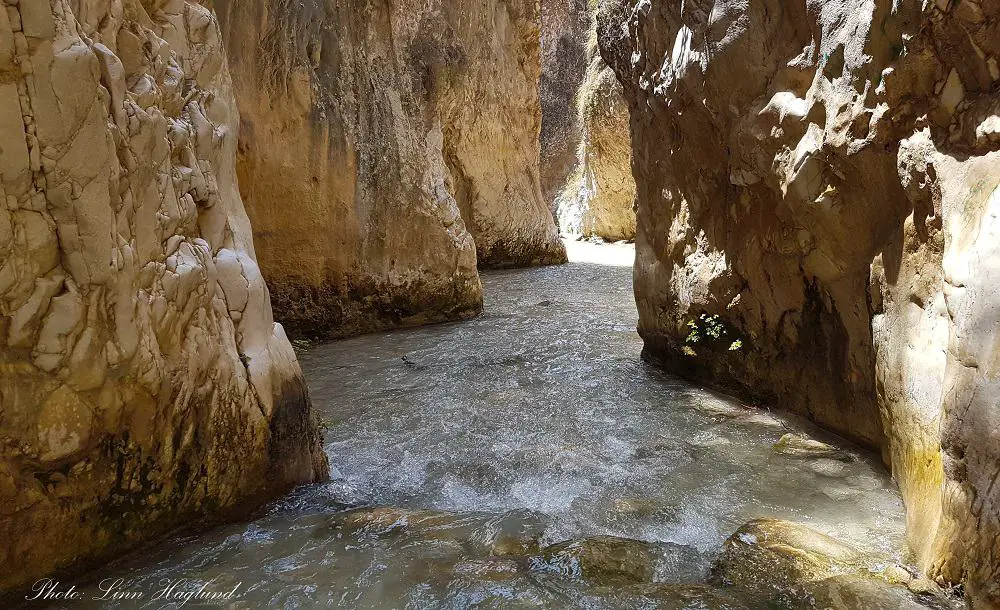
USEFUL GEAR FOR RIVER HIKING
- Waterproof backpack/dry bag for hiking
- Water hiking shoes
Rio Verde, Istán, Malaga
Rio Verde in Sierra de Las Nieves in Malaga is one of the most beautiful summer hikes in Andalucia. Wading through the river, passing multiple waterholes where you have to swim to get past, makes this a wonderful adventure on a hot summer day.
You’ll be constantly in the water until you get to the popular Charco del Canalón where you’ll encounter various waterholes leading up to a small gorge with a big waterfall.
It’s possible to swim under the waterfall and walk a little farther, past some smaller waterfalls too. The loop back goes mainly on a dirt track where most people walk to visit the waterfall. This is seriously a must-hike in summer!
You can read my complete hiking guide to Rio Verde in Istán here .

Hikes in Andalucia for autumn, winter, and spring
Los cahorros, granada.
If you’re up for a fun hike, this is for you! Los Cahorros trail offers a great variety going along a river, crossing various hanging bridges, passing swimming holes, and waterfalls.
But the most unique parts are where it goes through a narrow gorge and the rock walls cover the trail so you have to crawl under it or hold on to the metal handles that are pinned into the wall to get past.
This is definitely one of the best hikes in Andalucia. Though anyone with vertigo might reconsider it, it’s actually one of the most fun beginner hikes in Andalucia as it’s highly frequented and impossible to get lost.
You can read my complete hiking guide to Los Cahorros here .
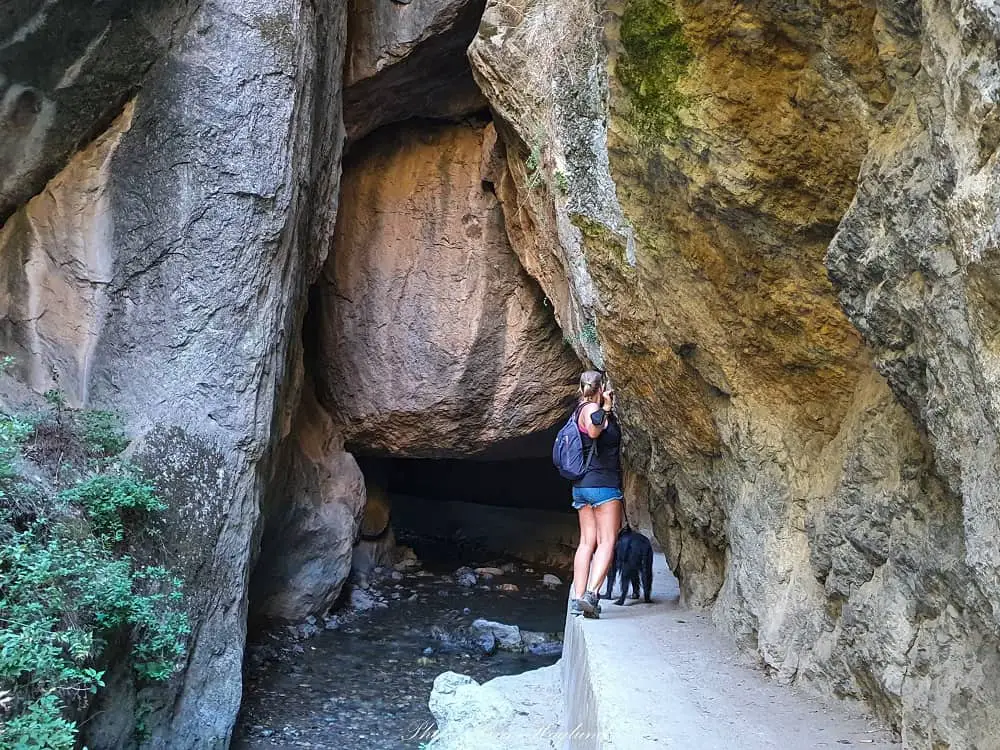
El Pinsapar, Cadiz
This might be one of the most unique hikes in Andalucia. The Pinsapar, Spanish Fir, is unique to southern Spain and Northern Morocco and can’t be found in such density in any other place in Spain as on this trail.
The path goes through a protected area of Sierra de Grazalema Natural Park, thus you need a permit to do the hike, and over the fire hazard months, it’s mandatory to go on a guided hike, but it’s well worth it!
The views along the trail are amazing on top of the uniqueness of the Spanish Fir forest you’ll be walking through.
You can read my complete guide on hiking El Pinsapar and how to get a permit here .
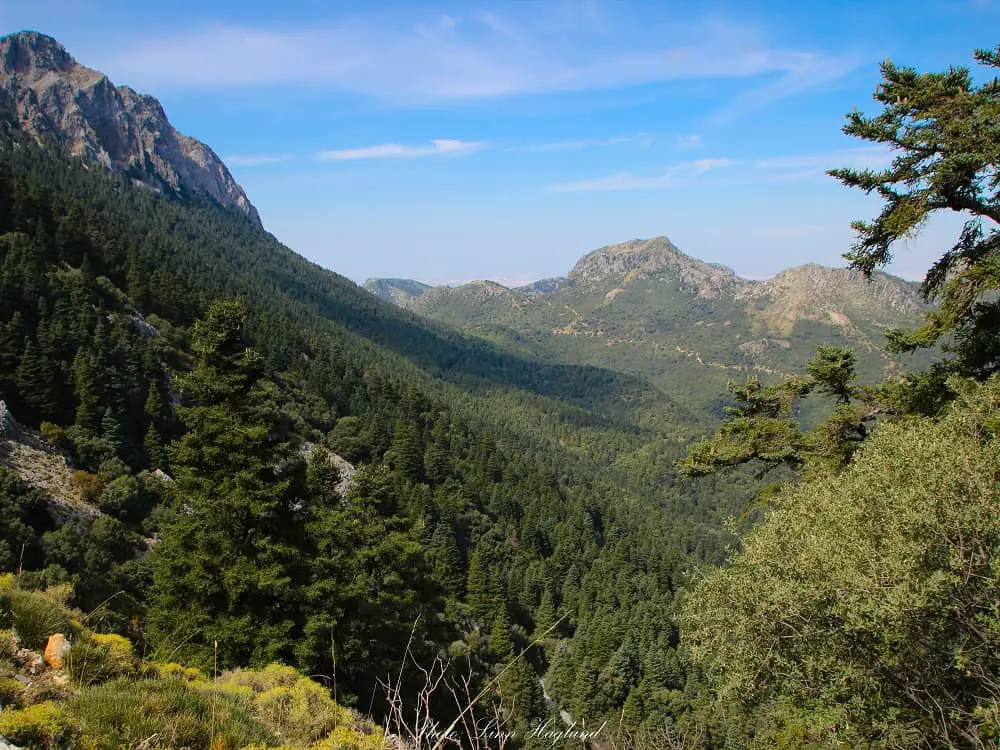
Pico Terril, Seville
Pico Terril (1129m) is not only the highest peak in Seville Province, but it’s situated right on the border to Cadiz and Malaga so you get a wonderful 360 view of three provinces from the top.
For being the highest peak in the province, it’s an easy hike without extreme elevation so it’s possible to walk for beginners and children that are used to hiking too.
It can be a little clumsy to find the actual trailhead, but I’ve described it all in my hiking guide so that you can comfortably hike this Andalucia bucket list hike.
Read my complete hiking guide to Pico Terril here .
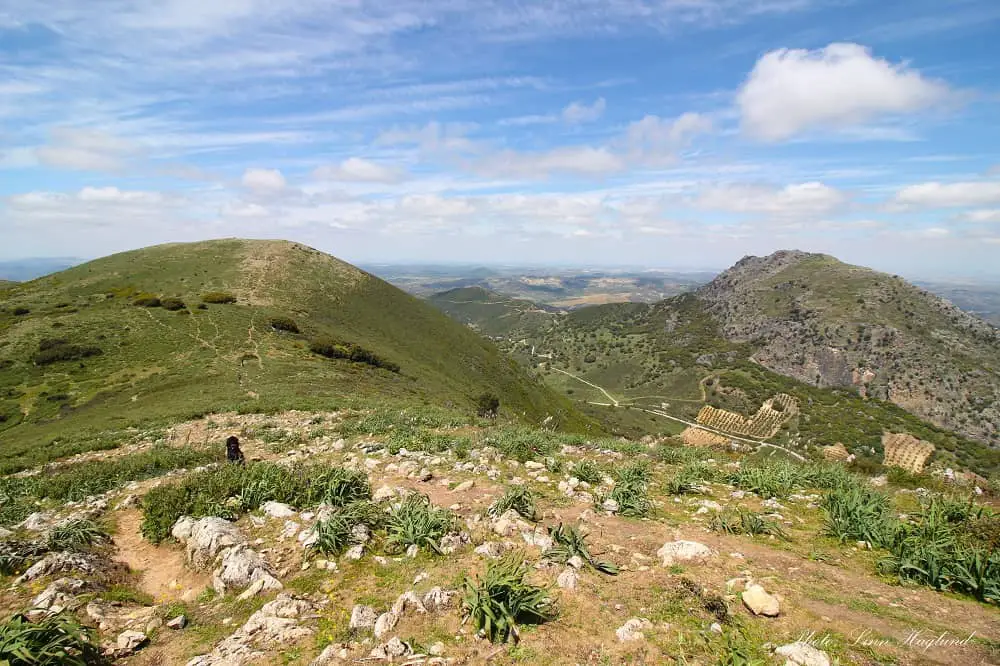
Torrecilla, Malaga
Torrecilla (1919m) is by definition the best peak to climb in Malaga province, so there is no way this list of hikes in Andalucia is complete without mentioning this iconic hike.
It’s a long day hike that starts through a pine forest with a cluster of Spanish Fir trees, crossing kilometers of open landscape before you finally climb the actual peak.
The views are astounding – you can expect 360 views from the top of never-ending mountains on one side and the Mediterranean and across to Africa on the other.
You can read my complete hiking guide to Torrecilla here .
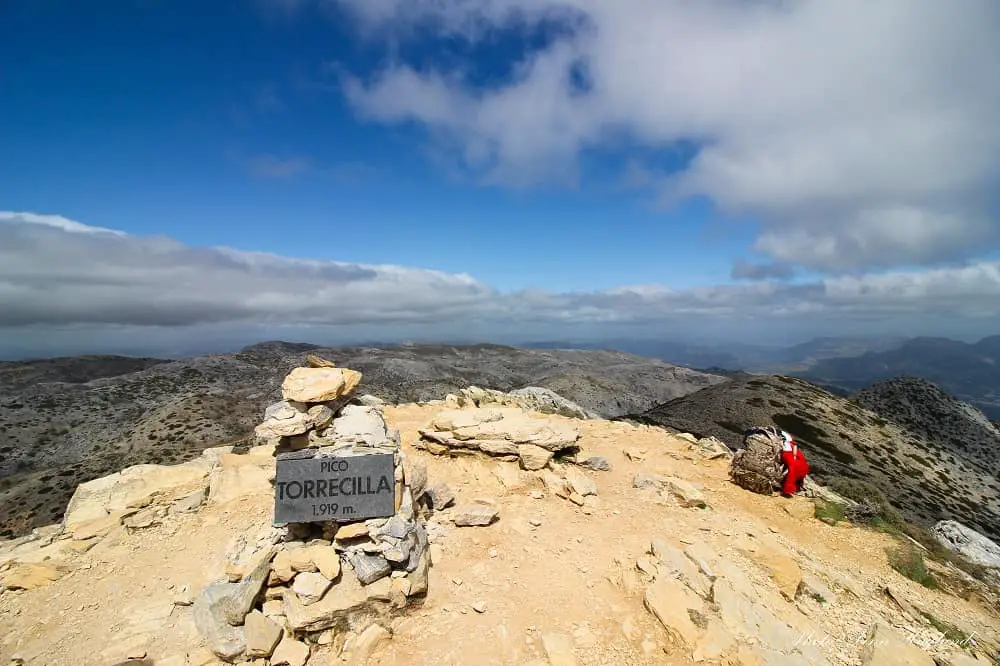
Bonales, Huelva
Bonales peak in Huelva is the lowest of the 8 provinces’ top peaks with only 1055 masl. Yet it’s a beautiful walk from through farmland and oak forests with astounding views.
There are no steep inclines, but the route is 16 kilometers return and not well marked. At the same time, it’s a route that is less frequented so I wouldn’t recommend it if you’re not used to hiking as it can be confusing to follow at times.
If you go in spring, you’ll be rewarded with a myriad of wildflowers that brighten up the landscape, but it’s a great hike from autumn to spring.
See my complete hiking guide here .
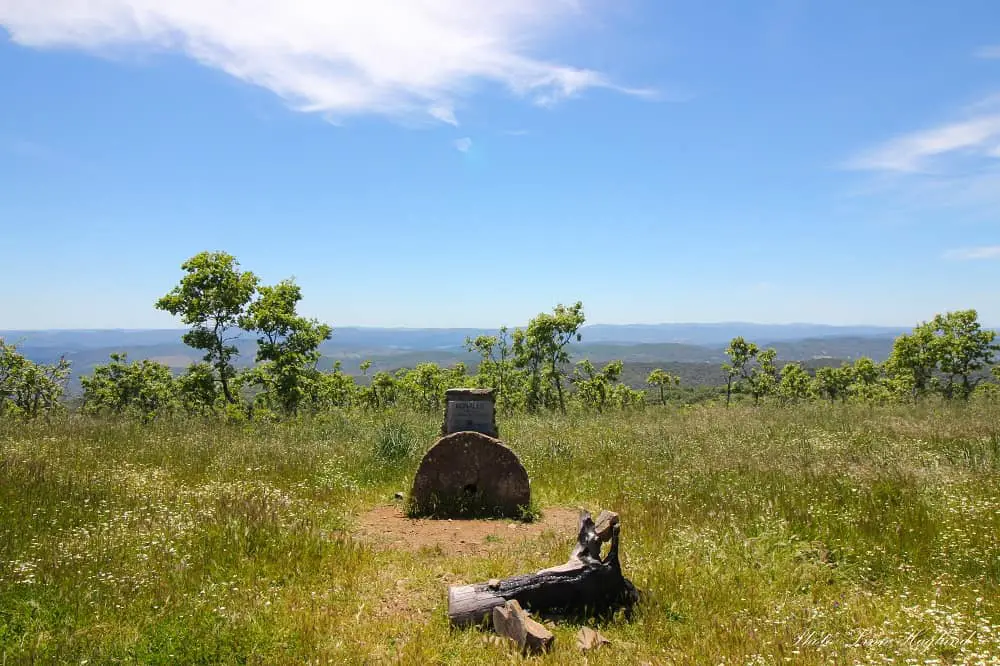
La Maroma, Malaga
Malaga’s highest peak, La Maroma (1417m), might just be one of the best hikes in Spain with incredible views along the hike. There are a few different routes to La Maroma. You can hike El Robledal from Alhama de Granada, which is the easiest route, a couple of routes that go from Sedella, and finally the longest route from Canillas de Aceituno.
No matter which route you choose you’re doomed to have a magnificent hiking adventure. The peak itself is widely rounded and feels flat, which makes it a great place for a picnic. If you’re lucky, the local residents, the mountain goats, will accompany you!
Read my complete guide to La Maroma here .
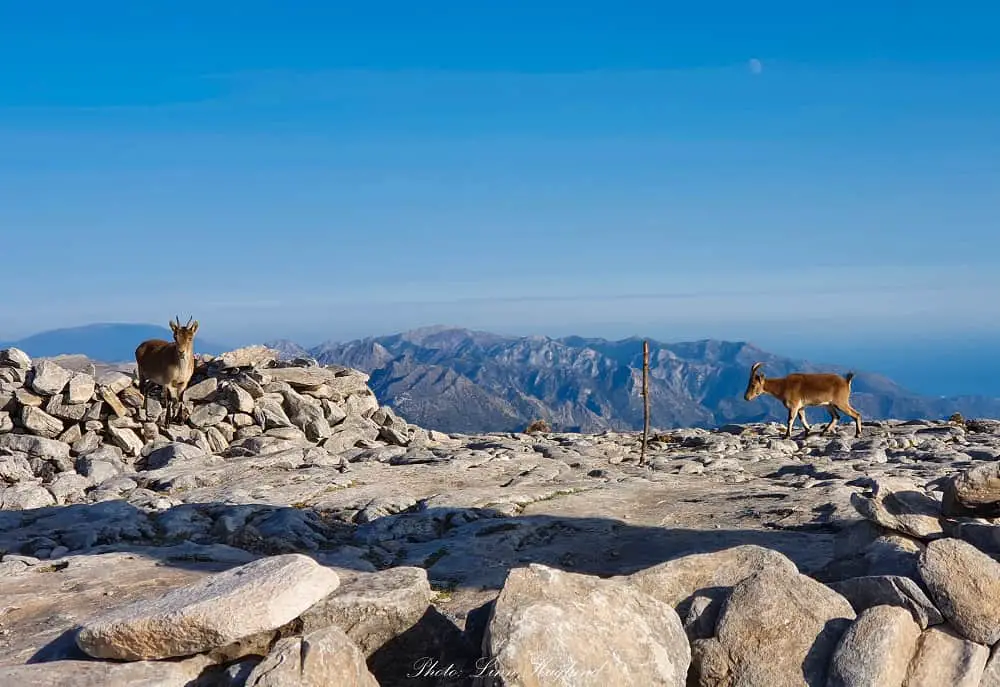
El Saltillo, Malaga
El Saltillo trail, going from Canillas de Aceituno, is one of the most spectacular hikes in Andalucia, featuring the third-longest hanging bridge in the country. The bridge was built in 2020 and connects the hike with Sedella.
Most of the walk follows the water pipes along a narrow trail on the side of the mountain with a tempting, whitewashed La Maroma towering in front of you. The whole hike, crossing the hanging bridge, ascending a steep but beautiful part continuing to a viewpoint where it’s tempting to reach out to touch La Maroma.
From here you have to turn around where you came from to return. The whole hike takes 4-5 hours and is part of La Gran Senda de Malaga.
Read my complete guide to hiking El Saltillo here .

Rio Bailón, Cordoba
One of the most beautiful hikes in Andalucia is the circular trail to Rio Bailón from Zuheros village in the heart of Andalucia.
It is a medium-difficulty hike taking you to the most epic views of the village before it continues through the Bailón River Canyon in the UNESCO-listed Serranias Subbeticas.
Continuing past caves and through mossy fairytale forests, it finally crosses a large meadow before it enters the forest to two dreamy waterfalls (note that they dry up if there isn’t enough rain.)
The loop back, crosses rocky terrain that is hard to navigate without following the track on an app like Wikiloc, but rewards you with mesmerizing mountain views, and eventually, as you get to the last bit of easy-to-follow trail taking you back to civilization, you have the entire valley at your feet.
The hike takes 5-6 hours with breaks for food and snacks and is an incredible introduction to hiking in Cordoba !
Read my complete hiking guide to Rio Bailón from Zuheros including how to get a permit here .
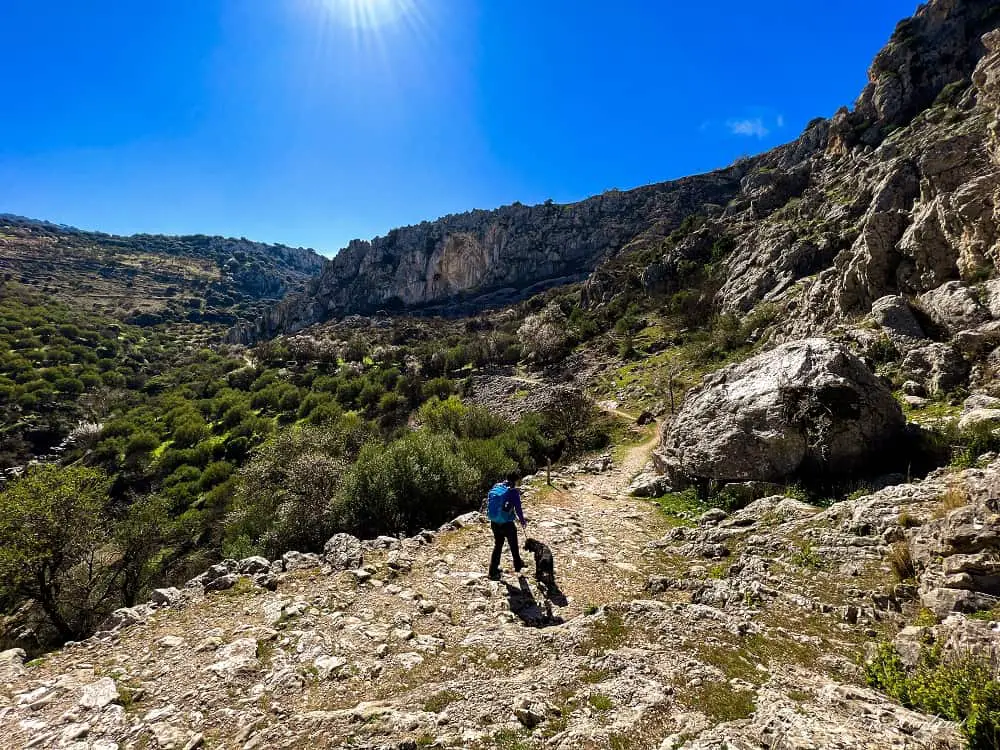
La Concha, Malaga
La Concha, the powerful ridge overlooking Marbella in Malaga, makes for some of the best coastal views hiking Andalucia has to offer.
Starting off through olive groves and up a dense pine forest, you’ll get up to breathtaking coastal views in less than an hour. The rest of the hike is mostly following the ridge alongside the views.
Towards the end of the hike, you’ll meet a couple of steep sections where there are ropes to hold onto. Other than that, the hike is set on safe ground. The whole hike takes 7-8 hours, depending on your fitness level.
Many hikers choose to take a short detour to the peak of Cruz de Juanar along the way too for more coastal views.
Read my complete hiking guide to La Concha here .
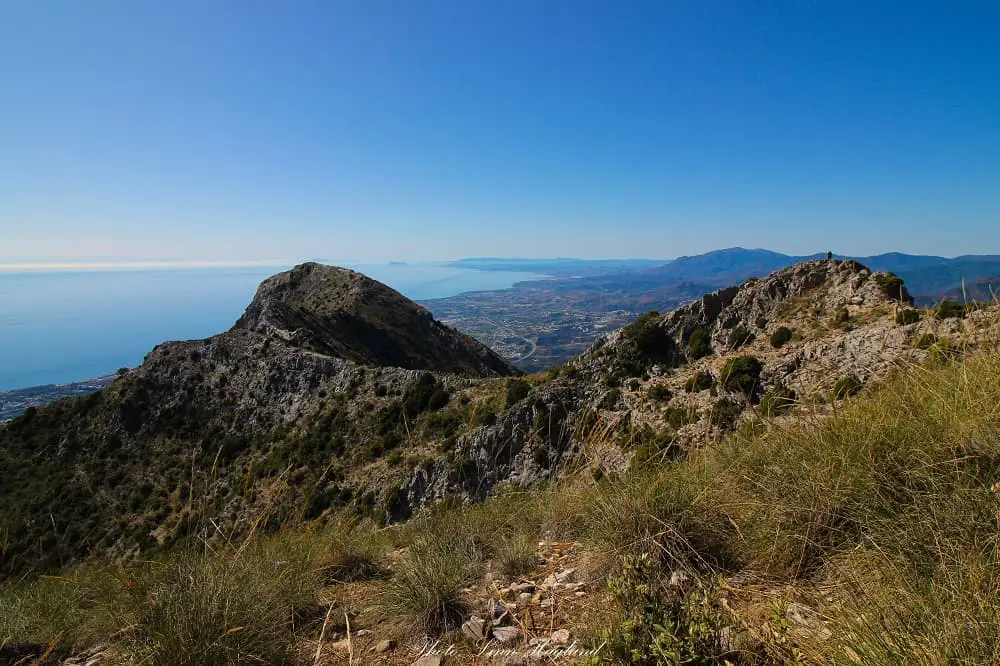
Pico Gilillo, Jaen
The highest peak in Sierra de Cazorla (1847m) is without a doubt one of the greatest hikes in Andalucia! Set in the Sierra de Cazorla, Segura y Las Villas Natural Park, this is a good 7-9 hours hike that requires a basic level of fitness as it’s a fair bit of climbing.
The hike starts in Cazorla and shares trailhead with Rio Cerezuelo and you can add the first part of the river hike to your walk to make it more scenic.
Hiking through pine forests before you get to bare, rocky mountains opening up to amazing views of valleys and farmland, there is a lot of variety. The small, light scramble to the actual peak adds to the adventure.
Read my complete guide to hiking Pico Gilillo here .
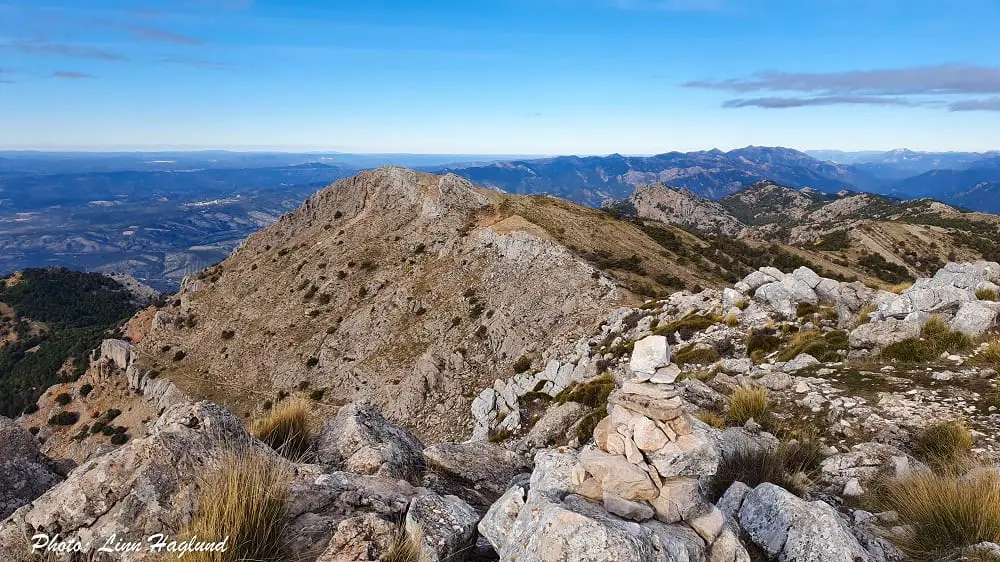
Best hikes in southern Spain for all seasons
El chullo, almeria.
Yet another top peak that’s easy to hike. El Chullo (2613m) is Almeria’s highest peak, situated in Sierra Nevada’s National Park, the easy 4-hour return hike starts at Puerto de la Ragua.
The ascent is moderate and even throughout the hike with mesmerizing views of the 3000-meters peaks along the side, so everywhere you stop for a break is perfect. The top boasts astounding 360 views of the Almeria coast, Granada’s Sierra Nevada peaks, and even Jaen’s highest peaks.
This is definitely a top peak for beginners and even children used to walk in the mountain can take on this without problems. While it does get snow in the winter months, it’s still possible to walk as the path is plain and there are no dangerous drops that can be a hazard.
Read my complete hiking guide to El Chullo here .

Rio Molinos, Almeria
Hidden outside the highest villages in Almeria, Bayárcal, in Sierra Nevada, you find this stunning river hike with old mills, waterfalls, and mesmerizing views. It’s a local gem that not many tourists know about, but it’s well marked from the village.
Rio Molinos hike is the perfect family hike all year round, but especially beautiful in late spring when the snow has melted from the higher Sierra Nevada and fills up the river while the wildflowers bloom. Definitely a favorite hike in Andalucia.
Read my complete hiking guide to Rio Molinos here .
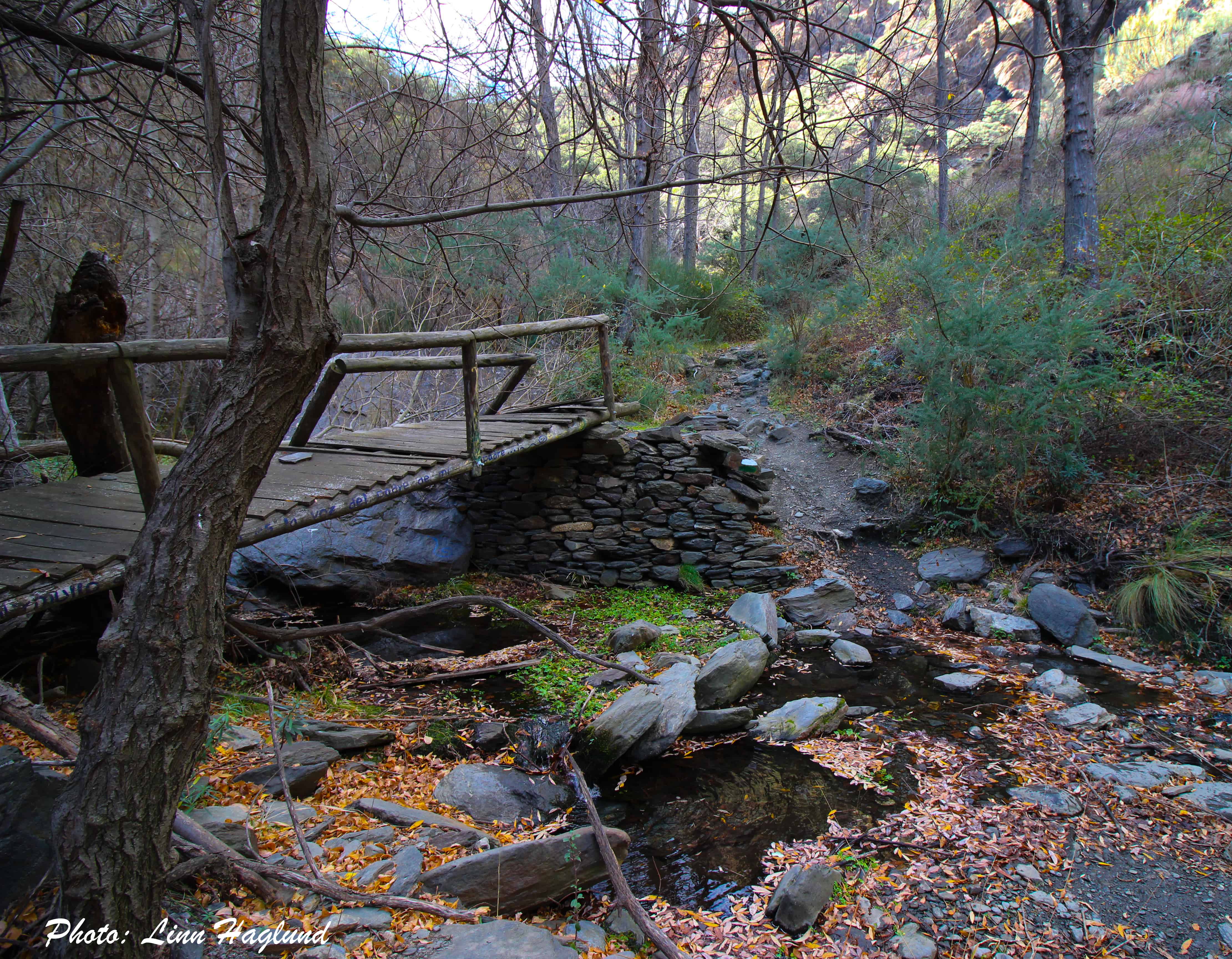
El Caminito del Rey, Malaga
El Caminito del Rey is probably Spain’s most famous hike and once one of the most dangerous in the world. No wonder it’s one of the best hikes in Malaga with the path pinned 100 meters up on the gorge wall.
The Desfiladero de Los Gaitanes Gorge is absolutely mesmerizing and as long as you don’t suffer from vertigo, this is a must-do-hike!
It’s now renovated, though the old trail is under the new one so you can still see the bad shape it was in. You need to buy an entrance ticket in advance for a given time and you’ll get a mandatory helmet to walk the 2-hour route. There are also buses taking you back the opposite way as it’s a one-way only path.
You can read my complete hiking guide including how to get tickets here .

Rio Borosa, Jaen
Rio Borosa is one of the most spectacular Andalucia hiking trails that you can enjoy all year round. Though spring and summer are the best times as it’s a river with multiple waterfalls and water holes.
This is a nice hike for the whole family and the first part of the trail follows the river mainly on track and boardwalk. After the boardwalk finishes, you’ll soon start an ascent and encounter several mesmerizing waterfalls before walking up the mountain where you’ll have to go through a couple of tunnels in the mountain wall.
At the end, you’ll get to the reservoir Embalse de Aguas Negras where you’ll turn around and walk the same way back. The whole hike will take you at least 8 hours. Yet, I think it’s hard to argue this is one of the best day hikes in Spain!
You can read my complete hiking guide for Rio Borosa here .
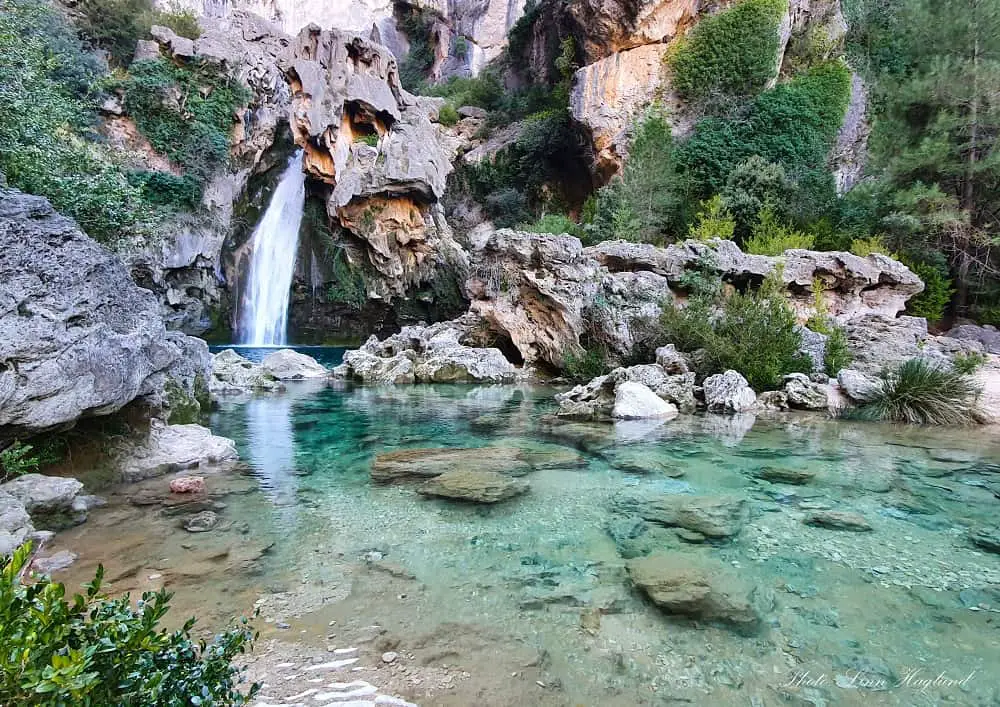
Rio Cerezuelo, Jaen
Rio Cerezuelo is a wonderful river and waterfall hike starting in the quaint whitewashed village, Cazorla, the gateway to Sierras de Cazorla, Segura y Las Villas Natural Park. It’s a great 2-3 hour hike for the whole family all year round, though spring might be the most beautiful, and summer is great for cooling down.
The hike starts by ascending the river, passing a few waterfalls, before it leaves the river and gets to Malena waterfall. From there it loops back to stunning views of the village.
The hike can be combined with a walk up to the Castillo de Las Cinco Esquinas castle ruins overlooking Cazorla from a hilltop.
Rio Cerezuelo is an amazing walk, Andalucia at its best for such a short loop if you ask me!
Read my complete hiking guide to Rio Cerezuelo here .
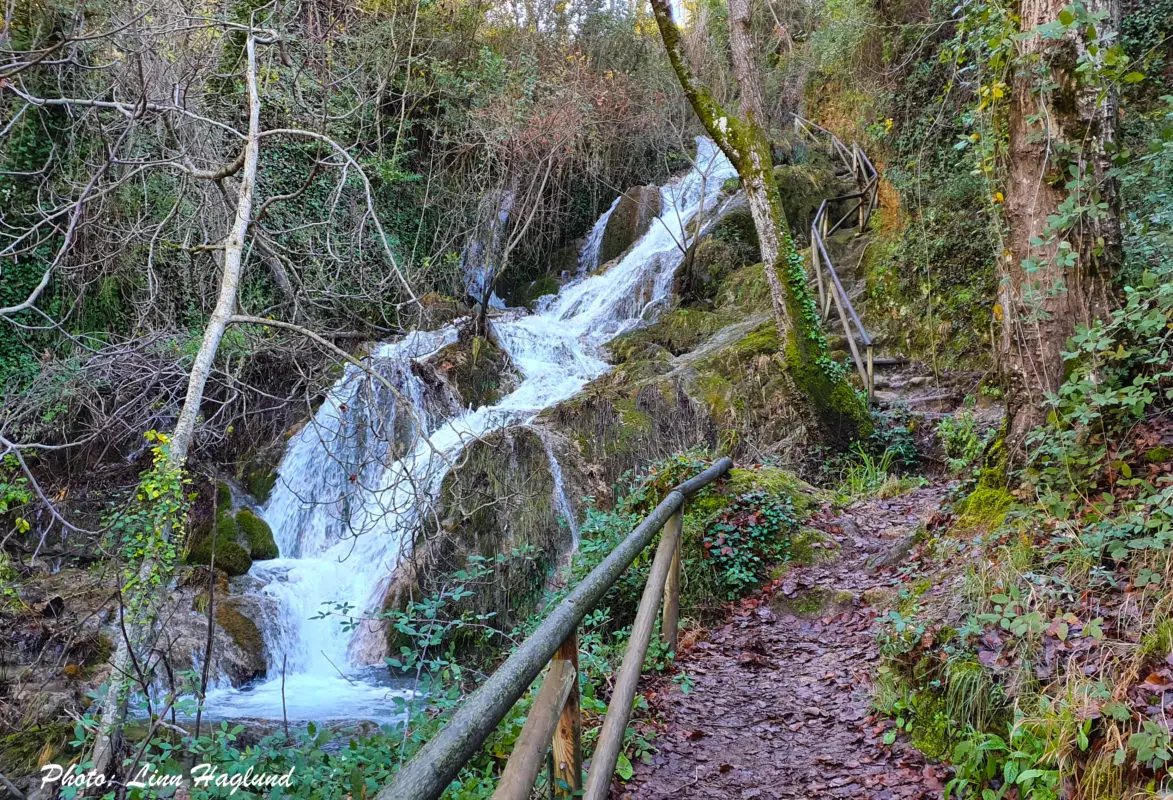
Sendero Repilado to Los Romeros, Huelva
The river hike from the village of Repilado to Los Romeros in Sierra de Aracena and Picos de Aroche Natural Park is without a doubt one of the most beautiful, easy hikes in Andalucia worthy of your bucket list.
This 3-hour return hike follows the river and has hardly any elevation. The trail is well marked and there are so many beautiful small waterfalls and waterholes to stop at along the way. A perfect walk to disconnect from a busy life without much effort.
Arriving in Los Romeros, you can check out the washing place and have a cold drink in the village before turning around.
Read my complete hiking guide for this hike here .

Reflections on walking in Andalucia
There is no doubt a walking holiday in Andalucia will be filled with adventures no matter what time of the year you travel. Andalucia has such varied vegetation that I’m sure it will blow your mind away! I still get mesmerized whenever I find a new area to go hiking as nature changes so much.
In my opinion, the best hiking in southern Spain is rounded up in this post, but as I stumble over new walks in Andalucia that deserve to be added to this post, be sure I will!
Finally, and once again, remember to make sure you leave no trace and happy hiking!
READ NEXT: Best hiking gear
Like it? Pin it for later!

10 thoughts on “ 21 Best hikes in Andalucia: Southern Spain bucket list hikes ”
I’m happy to see Río Chillar here. My 60-year-old mum and I hiked it a couple of years ago and both loved it! And of course, Caminito del Rey is a spectacular must. Makes me want to explore all the other ones on this list!
I agree, there are so many incredible hikes around here. Unfortunately, Rio Chillar has been closed since the pandemic hit, so I’m waiting anxiously for it to open up again as it’s one of my absolute favorite river treks.
This is a good list, some new ones here I will need to try, particularly around Jaen.
I cannot get a good answer on why Rio Chillar has been closed since the pandemic began. There are certainly many other popular trails and swimming areas that are open to the public.
The Los Cohorros hike near Monachil (Granada) is really fun.
Thanks, Richard! I’m glad you found some new trails to check out. I recently received good news: Rio Chillar is open again! I’ll update the post straight away:)
Hi, thanks for this amazing list! Got some really good insight and inspiration here. Would you happen to know of any 3,4 days hikes that you would recommend and maybe where I can obtain a bit more info of these? Thanks a lot
Hey! Thank you so much. Unfortunately, the general information about hiking in Andalucia is pretty bad, which is why I started this blog. I haven’t had the chance to do many multi-day hikes yet which is why I haven’t written up much about multi-day hikes. However, there is a route around Malaga, Gran Senda de Malaga, which includes a lot of great stages. I think you’ll find some information by searching for it. Another one that I was planning on doing last year but had to abort due to injury, is a 21-stage route around Cazorla. You can shorten that to as many days as you like. I got a book with all the information on the route at Cazorla tourist information. You might want to try to contact them and see if they can help you. That hike should be amazing in spring or autumn. I hope this helps, if not much but at least to nudge you in the right direction. If you want to keep in touch and share your experience, feel free to join my private Facebook Group, https://www.facebook.com/groups/andaluciahiking . Wishing you happy hiking!!!
I was researching a possible itinerary for Southern Spain for next Autumn and was wondering “is the hiking there any good”? This article tells me it definitely is 😀 really excited for it now, thanks!
I’m glad you came to that conclusion because the hiking in Andalucia is awesome! 🙂 I hope you enjoy your trip!
Would like to do the Rio Verde (istan) river walk. You mention that in some parts you may need to swim. For those less strong swimmers can I ask what the usual max depth of the water will be around September? Many thanks
Hi Kevin, Unfortunately, I don’t know how deep the water is. I guess it also depends on how much rain we’ve had (eg. this winter very little so far). It should be possible to walk past the water holes, but I found it hard to find the trails in the thick vegetation, and in some places I wasn’t able to get up from the water and onto the trail. Maybe easier if you are more people and can help each other up. I was alone so wasn’t gonna try to challenge the vegetation (especially not with my dog on tow). If you go with less strong swimmers make sure you bring a dry bag or something else that floats so they can hang onto that to rest if they get tired.
Leave a Reply Cancel reply
Your email address will not be published. Required fields are marked *
Save my name, email, and website in this browser for the next time I comment.
This site uses Akismet to reduce spam. Learn how your comment data is processed .

Hiking in Spain: Ten Stunning Trails You Can’t Miss
- August 25, 2021
- Beatrix Potter
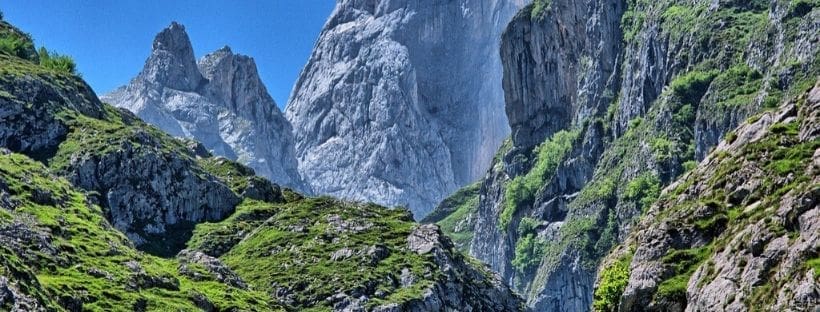
While popularly known for big red wines and tasty tapas, hiking in Spain is a must if you love the outdoors; Spain’s unique landscapes make it a hiker’s paradise. From glimmering Mediterranean beaches to the dramatic Pyrenees mountains, there are hundreds of trails waiting to be explored.
This list of top-rated hikes cover the highlights of Spain’s nature trails that can’t be missed!
Camino de Santiago
Known as the Way of St. James, this is a historic pilgrimage route that treks all the way to the Cathedral of Santiago de Compostela in Galicia.
The most popular route is the Camino Francés, which spans over 780 kilometers (close to 500 miles!) from St. Jean-Pied-du-Port in France to Santiago. Don’t worry if 780 kilometers seems daunting – there are hundreds of segments and sections that can be hiked in a day!
Pro tip! The Camino can be very crowded in the height of summer, so visiting in late spring or early fall can give you clearer trails while still enjoying prime weather.
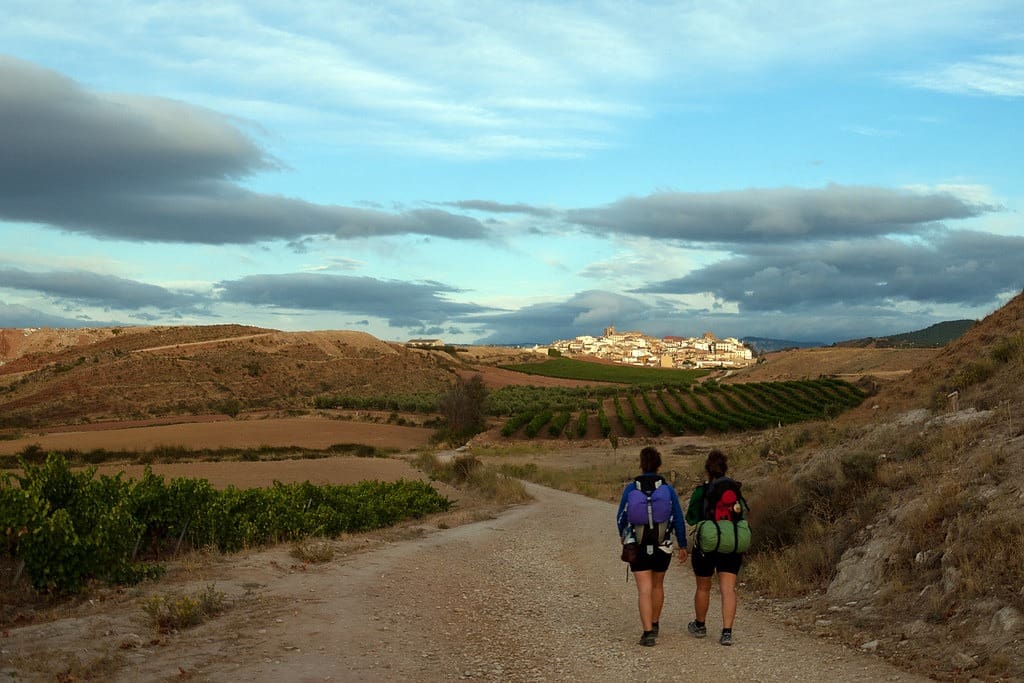
Caminito del Rey
Translating to the Little King’s Path, this walkway is arguably the crown jewel of hiking in Spain. Located in the province of Málaga , the caminito winds along the walls of a narrow gorge, El Chorro.
After undergoing extreme renovation in 2015, this once perilous path now includes handrails, bridges, and stairs for safe passage. This is a moderate hike, taking approximately four hours to enjoy the surroundings and complete the 7.7 kilometer trek.
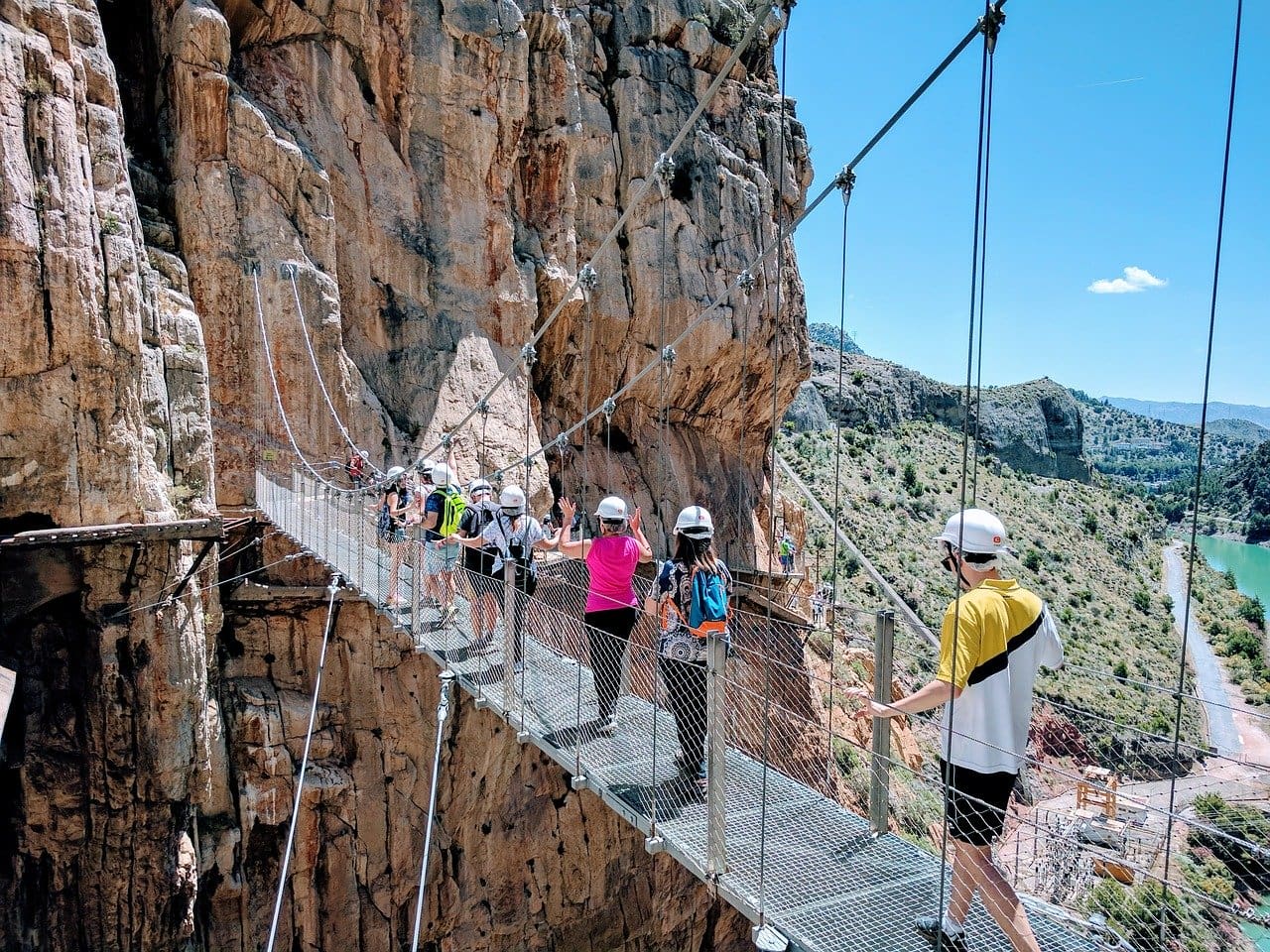
The Guidester Difference: There’s so much to see in do in this area, and it’s easy to miss out! If you are interested in ruins, your personal travel guide by Guidester would make sure you knew about the Ruins of Acinipo nearby.
This ancient town was founded by retired soldiers from the Roman legions more than 2,000 years ago, and much of it is still standing today.
Las Cañadas del Teide National Park
Nestled on Mount Teide, the national park is located on the highest mountain of Spain on the island of Tenerife. Due to being a volcano (the highest in the Atlantic Ocean Islands!), Teide National Park is a colorful landscape of rocks, craters, and lavaflows.
Multiple trails and paths wind around the base of the crater, but ambitious hikers can trek with a guide to the very top of the mountain.

Camino de Ronda (GR92)
This is a lesser known camino, but with the ease of access and beautiful natural features, this hike has plenty to offer.
Spanning hundreds of kilometers, you can either walk between coastal towns or take on a 10 day trek to cover the entire path.
Pro tip! The Camino de Ronda winds through many coastal towns along the Costa Brava, making it easy to access. Between sections, enjoy a stay in a seaside hotel and relax on the beach.
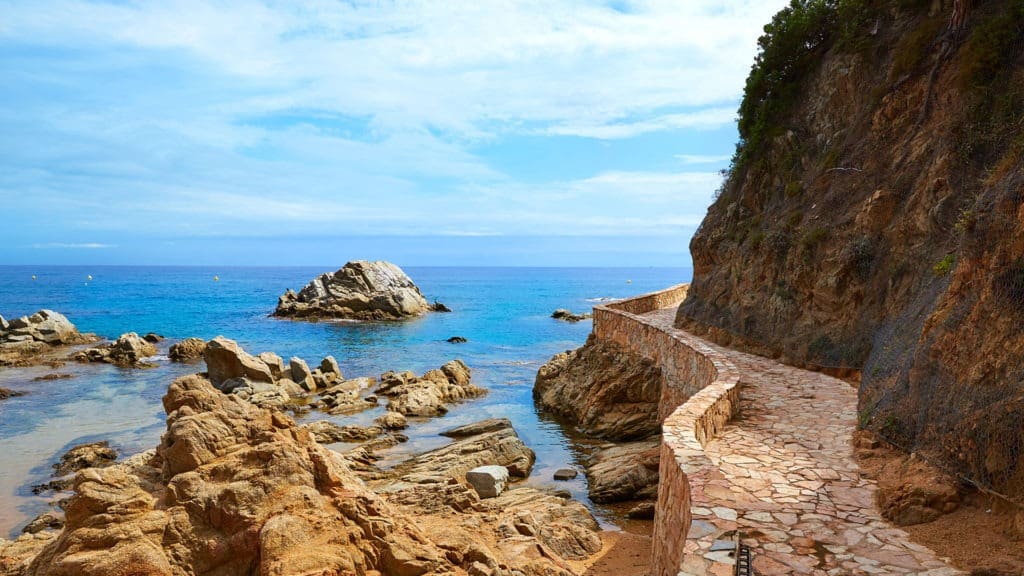
The Mulhacén, Sierra Nevada
Hiking in Spain can also be challenging if you wish. At 3,482 meters, The Mulhacén is the tallest peak in Western Europe outside the Alps.
This mountain can be climbed year round, with winter ascents available on skis or snowshoes with a guide. Unlike many of the caminos on this list, the entire hike can be completed in a day.
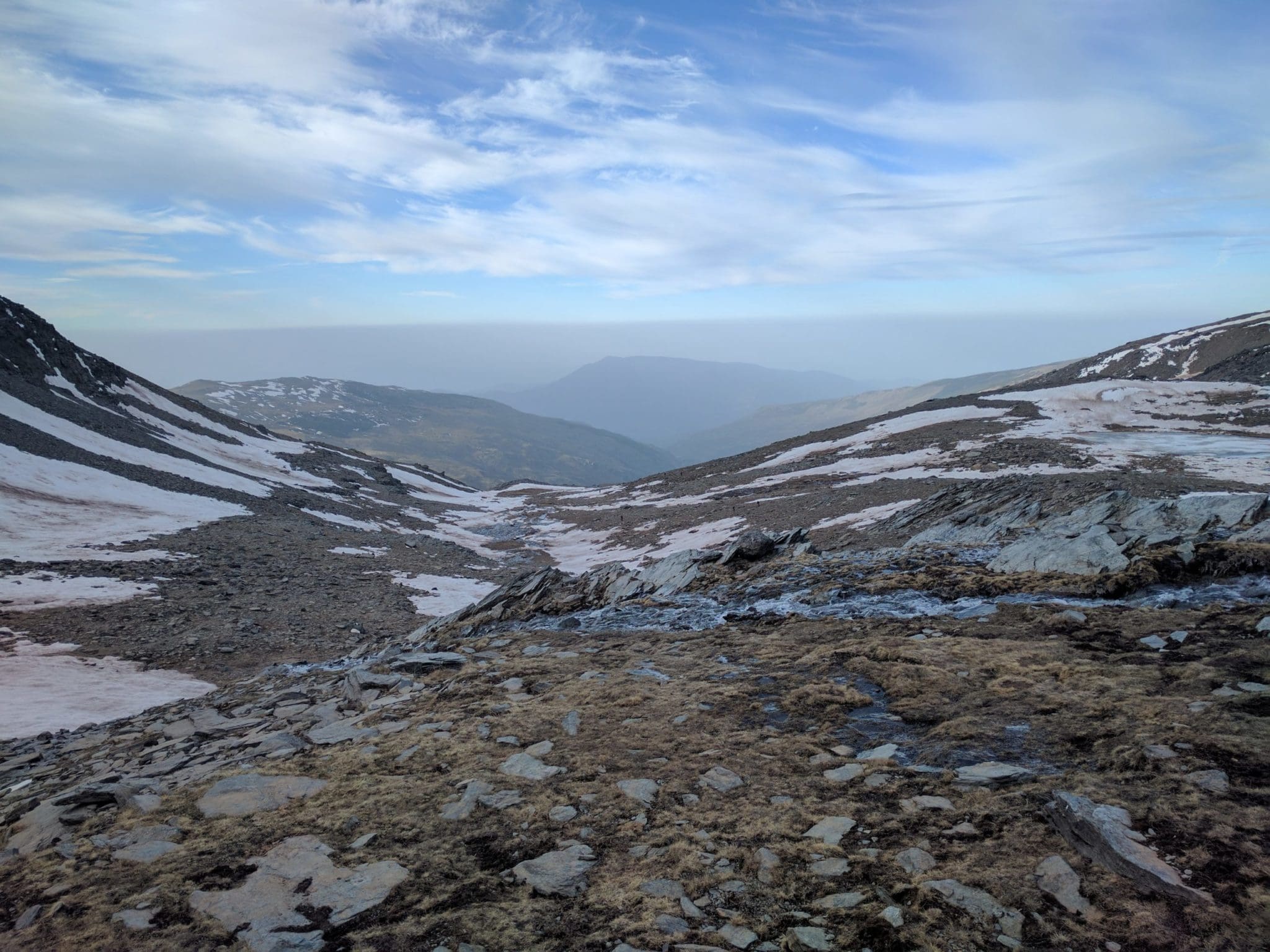
Picos de Europa
As the first national park in Spain, this is a historic hiking spot. With multiple trails of varying difficulty, this is a great park for families and groups of varying ability.
One great trail within the park is Bajo los Picos, located above Mogrovejo village. After an uphill start through a forest, the trees open up and revealing towering mountains and panoramic views.

Planning a Trip to Europe?
We can help create your perfect itinerary!
- Worried you'll miss the hidden gems?
- How long should you stay in each place?
- Should you rent a car, train it, or both?
Sant Joan Funicular (upper station) to Montserrat (via Sant Jeroni and Flat of Els Ocells)
Montserrat features many hikes and walks of historic value, but none compare to the natural beauty on the hike from Sant Joan Funicular.
This hike takes you to the highest point of Montserrat Mountain, with stellar views of both the mountains and the historic monastery.
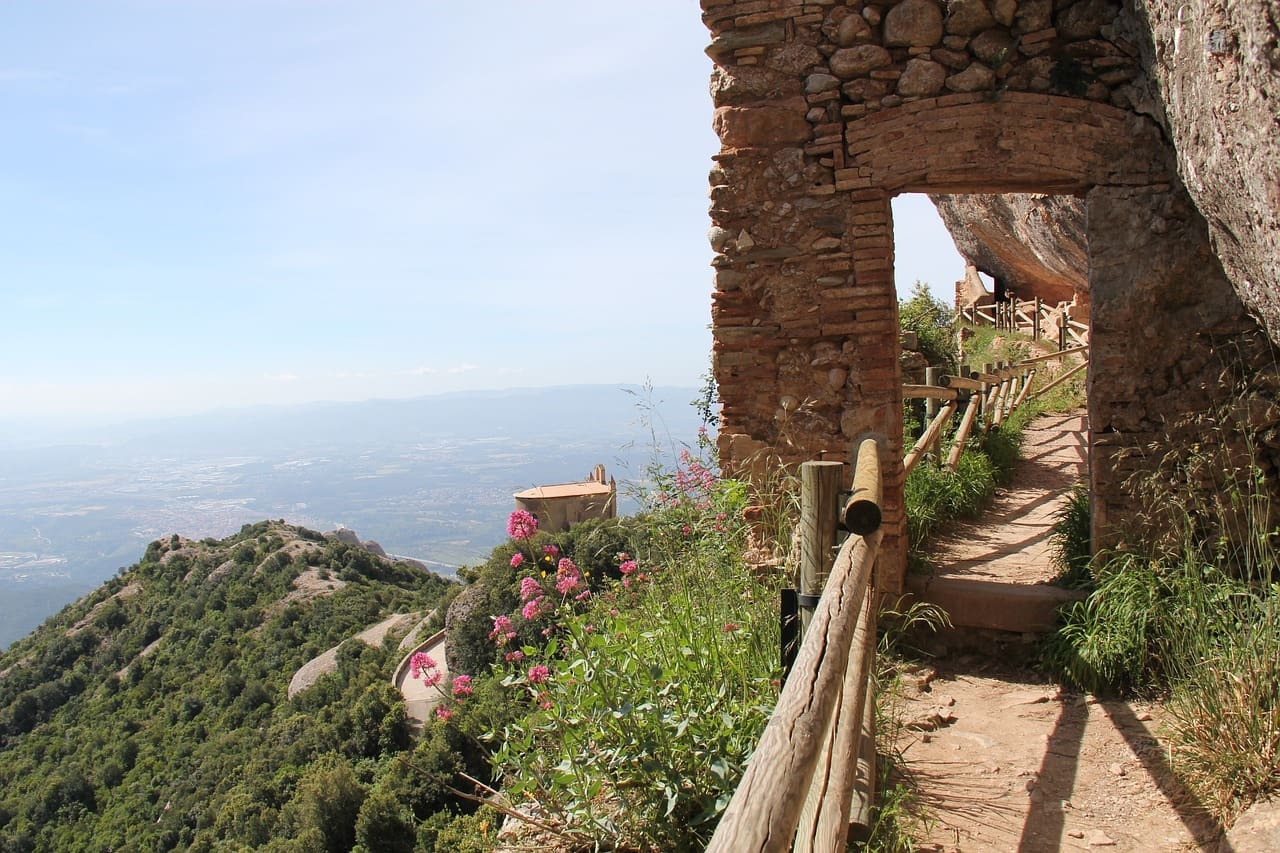
Pico Sobarcal Trail
Throughout the journey, the peaks of the French Pyrenees can be seen rising up in the distance. On this hike you’ll also see the spectacular Anguja Sur de Ansabere, a rocky peak that towers above the trail.
This is a moderate climb and will take 6 to 7 hours to complete.
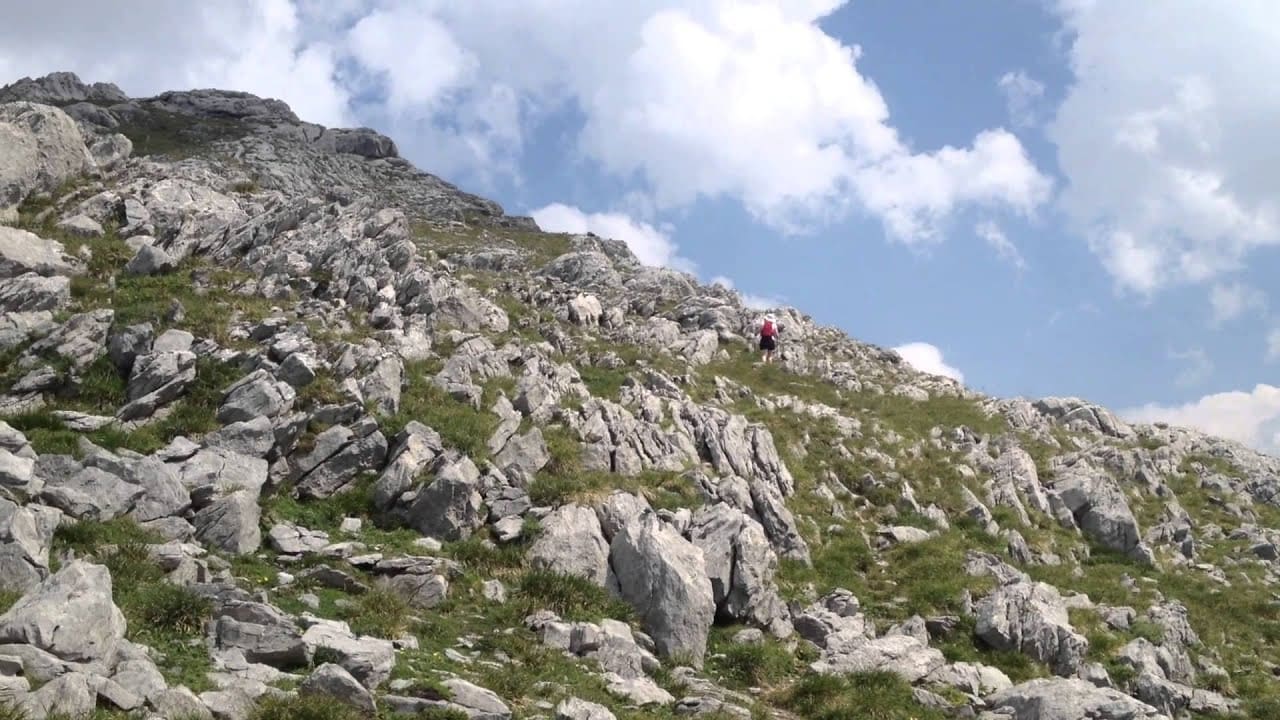
Peñalara is the main peak of Sierra de Madrid and an easy day hike if you are staying in the city. The Parque Natural de Peñalara is popular year round, from snowshoeing in the winter to mild hikes in the summer.
The trails are easy to moderate hikes, taking between 3 to 4 hours to complete.
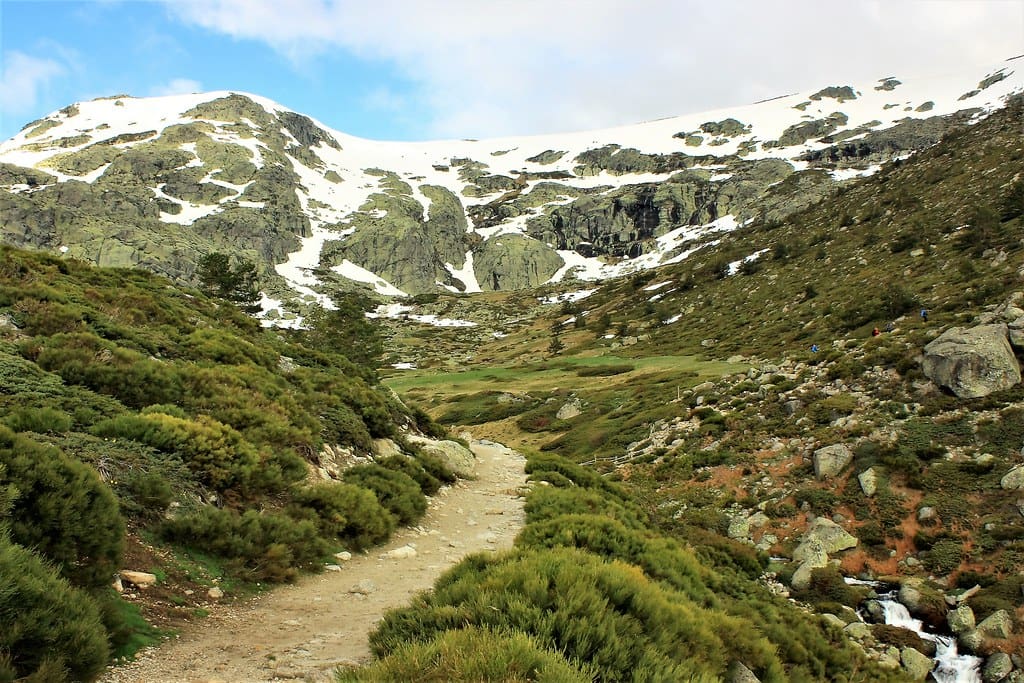
Vías Verdes
Vías Verdes , translating to green ways, are a set of approximately 77 trails running over 7,000 kilometers from north to south throughout all of Spain.
You can explore Vias Verdes by either hiking or cycling along old railway lines, where you will find historic railway stations that are now converted into hotels, restaurants, museums, and information offices.
With so much to see and do in every corner of Spain, you will spend dozens of hours on research and still not guarantee you won’t miss out – so why not let travel professionals living and traveling in Spain build you a personal mobile travel guide . You will save tons of time while ensuring you get the most from your trip to Spain!
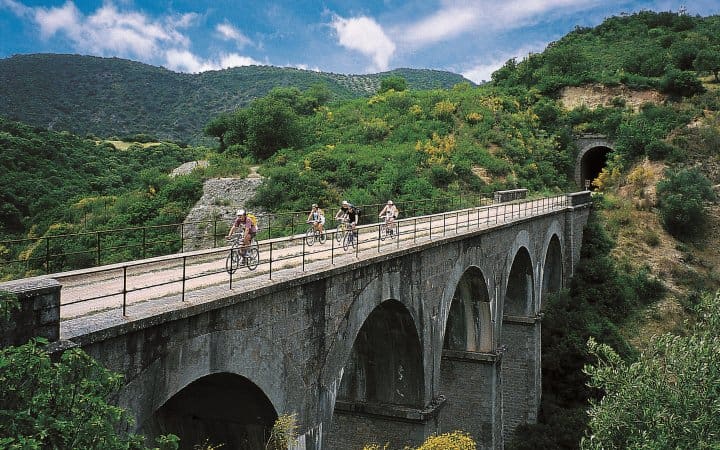
Besides the scenery, one of the best parts of hiking in Spain is that you can celebrate your adventure with delicious tapas and a glass of tempranillo!
Beatrix Potter is a travel writer for Write My Essay and Academized websites. She writes extensively about traveling and regularly blogs at Boomessays.com portal.
The Ultimate Pre-Travel Checklist
Download ‘ 10 Crucial Things To Do Before Traveling Abroad’ to avoid mistakes and ensure a smooth trip; adapters and electronics, packing tips, foreign currency, phone plans, and more!

Each trip is a unique experience. Guidester personalizes your adventure, guiding you to those breathtaking sites, authentic local eateries, and hidden gems!
Recent Articles
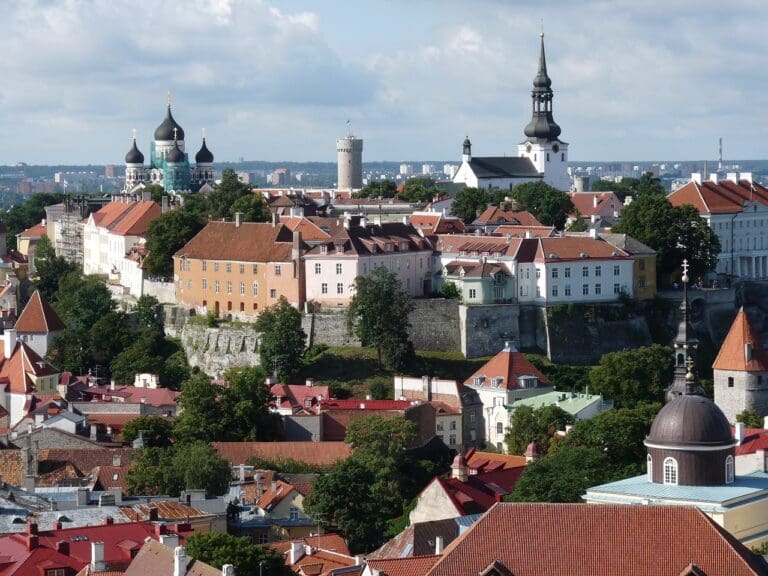
Journey Through the Baltic Capitals: Exploring Tallinn, Riga, and Vilnius

Must See Attractions in Belgrade, Serbia

Discover the Best Places to Visit in Romania
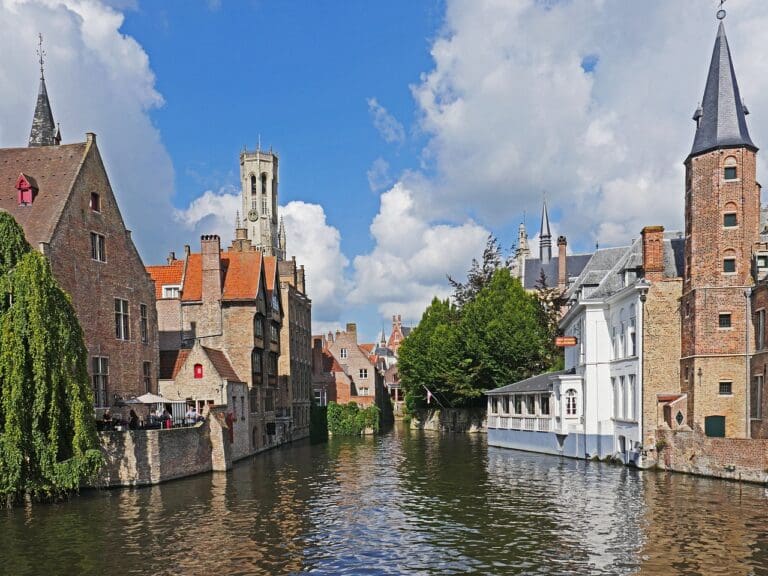
Exploring Bruges: A Journey Through Time and Beauty

European Delights: 10 Must-Try European Dishes
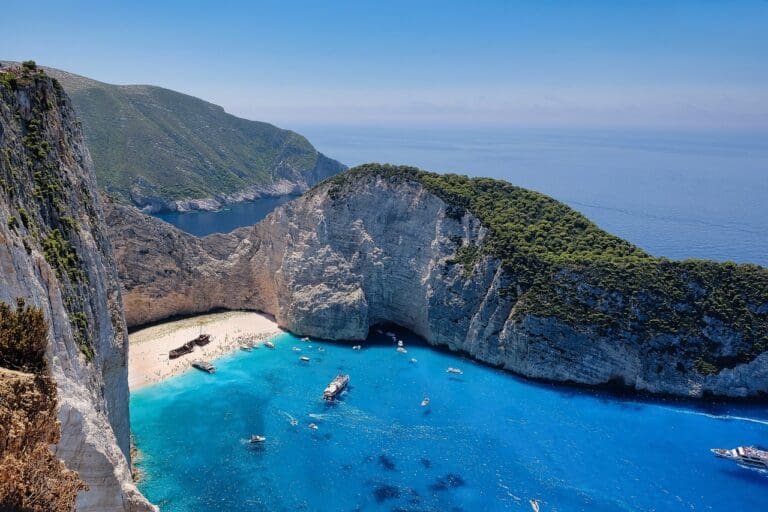
Best Wild Swimming Beaches in Europe

Travel tips and unforgettable adventures with Travelin Jack
Popular Posts
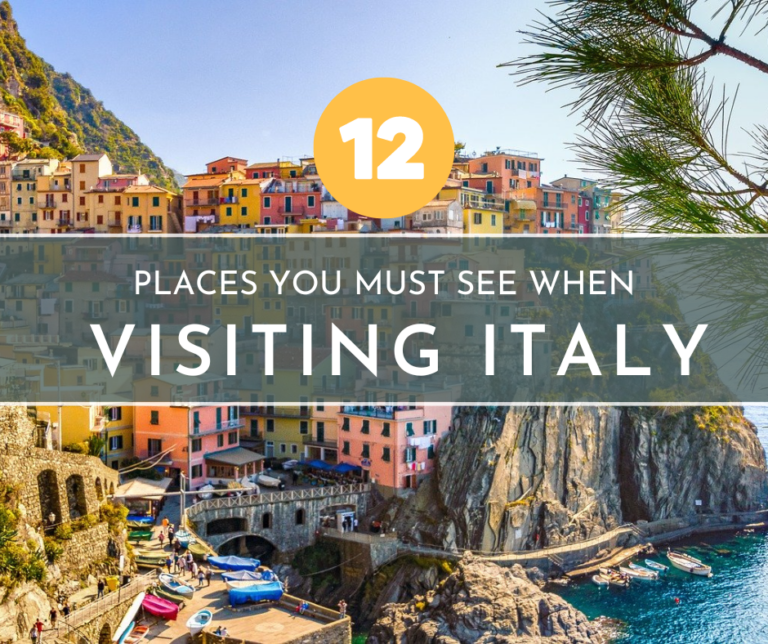
There are many places you must see when visiting Italy, but your personal interests, timeframe, and budget will dictate how

While it is normally easy to acquire or renew a passport, the State Department says there’s about to be a
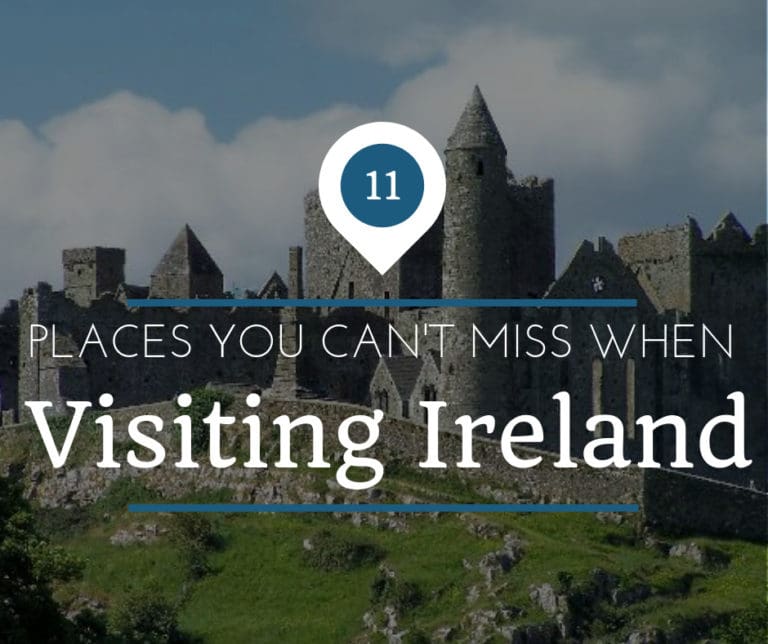
With beauty around every corner, deciding on places to visit in Ireland can prove difficult. In my opinion, it’s all
Recent Posts
Leave a comment cancel reply.
Your email address will not be published. Required fields are marked *
- Register | Login
Last chance availability on popular tours
Hiking Tours in Spain
- Hike alongside the rugged Costa Brava coastline over sandy beaches and turquoise waters
- Follow ancient paths through the iconic villages of Andalucia
- Explore medieval mountain towns in the heart of the Catalan Pyrenees
- Take the pilgrimage across the north of Spain on the Camino de Santiago
- Enjoy pintxos, paella, and delicious wines by the sea overlooking panoramic views
- Visit vibrant Seville’s tapas bars and famous royal palace: the Alcázar
Hike in the stunning southern European country of Spain and discover its diverse natural environment and deep cultural roots. Spain welcomes the traveler to connect with its heritage through its gothic cathedrals, Moorish castles, impressive Andalucian villages and romantic art. Don’t forget to taste the mouthwatering tapas and fine wines, all made with local ingredients and served by welcoming restaurants!
Our comprehensive collection of self-guided adventures in Spain allows you to hike wherever you please. Take the famous pilgrimage on the Camino de Santiago or follow the coastal trails of Costa Brava and Catalonia . For a unique experience, try our tours on the Canary or Balearic Islands , or treat yourself to sumptuous Spanish Paradors and hotels on our In Style itineraries .
With many regions experiencing a year-round sunny climate, Spain is perfect for a hiking vacation whenever you would like! Our specialist team is here to help connect you with your perfect adventure. Just get in touch – Spain is ready and waiting for you!

Featured Tours - Spain

Walking the Catalan Coast in Style

Catalan Coast and Mountains in Style

Camino in Style

Walking in Catalonia

Collioure to Cadaques

Full Camino - St Jean Pied de Port to Santiago

Camino Final Stage - Sarria to Santiago - 8 Days

Best of the Camino
Discover spain.
We fell in love with Spain after completing the Camino de Santiago in 2008, and ever since, we have developed diverse hiking tours all over the country. We are proud to say our Spanish team, local partners, and baggage handlers are world-class and should you have the slightest issue, they will go out of their way to help you out.
Macs offers self-guided hiking tours, so travel on your terms , choose your own departure date and travel companions. We provide luggage transfers every day, route info packs, and an app with easy-to-use maps that can be used on or offline. Sustainable travel is important to us, and traveling with us supports local small businesses.
Get in touch with our specialists to ask questions and be connected with your perfect adventure!

Spanish food is absolutely delicious! Here are a few of our favorite dishes:
Jamón Iberico: Rich cured pork found in the south-western Aracena region of Spain.
Esqueixada: A tasty salad of shredded cod, tomatoes, and olives popular in Catalonia and Costa Brava
Pulpo a Feira: Boiled octopus seasoned with sweet and salty paprika - a Galician specialty on the Camino Frances
Tapas: Gambas al ajillo (fresh shrimp with garlic and cayenne pepper) and Patatas Bravas (fried potatoes in a spicy tomato sauce)

Besides the iconic Camino de Santiago, Spain has a plethora of other hiking areas:
Costa Brava and Catalonia – With Barcelona at its heart, this region of Spain combines superb hiking trails and delicious food options. The rocky coast winds down the Mediterranean revealing tranquil hidden coves, whitewashed villages, and outstanding seafood. Journey into the mountains for more rural trails, stunning views, rustic food, and friendly welcomes. Cava and Priorat were created here, so make sure to enjoy a glass or two at the end of the day if you please!
Andalucia – Consider Andalucia to escape the cold during the winter. The location of the southern coastal town makes it too hot to hike in the summer, but in the other months is a hiking paradise. Enjoy trails winding through whitewashed hilltop villages, and along dramatic, untouched coastlines. Stop in Granada and Seville to experience two of Spain’s great cities deep rooted in culture.
Basque Country – Located in the far north, expect a gastronomic feast. San Sebastian is worth visiting on its own, but the Camino del Norte links it with Bilbao and creates a food focused spiritual journey. Pass through many fishing villages, amazing scenery and friendly people in this wonderful area of Spain.
Canary Islands - Although far from Spain, the Spanish culture does not fade in these isolated islands off the coast of Africa. Each island has its own charm: from the botanic wonderland of La Gomera to the stark volcanic beauty of Tenerife. Hike in November to April for comfortable temperatures on the enchanting trails.
Balearic Islands – Discover a completely different side of Ibiza through the secret hiking trails of the White Isle. In Mallorca, stay in hidden retreats and hike on beautiful coasts, or challenge yourself through the otherworldly mountains on the famous GR221 Tramontana trail.

Every year, thousands embark on various routes to hike to Santiago de Compostela. A deep spiritual sense accompanies this journey, whether you seek it or not. Meeting fellow pilgrims, listening to their stories, and sharing your experience alongside them makes a Camino tour a transformative event.
The north coast of Spain is one less visited by holidaymakers, which makes it the perfect place to explore Spain without the crowds. What makes it even more perfect is the stunning scenery, outstandingly friendly locals and, of course, the food. The Camino del Norte is the quieter and arguably more beautiful cousin of the Camino de Santiago and this video gives you a broad overview of the first stage.

The Biggest Choice
Around since 2003, 21,000+ customer reviews, positive impact, follow us on social media.
- twitter-x-logo@2x

Blessed with beautiful mountains, stunning coasts and islands, great food and wines, Spain has some of the world's best self-guided hiking tours. Long-distance pilgrim walking trails (i.e. Camino de Santiago or Way of St. James), going as far as the UK, The Netherlands and even Poland, also exist.

Camino de Santiago (Portuguese): classic €1195

Camino de Santiago (Portuguese): coastal €1220

Camino de Santiago to Pamplona (French Way) €540

Camino de Santiago to Santiago (French Way) €695

Catalan coast & mountains €925

Catalan Pyrenees explorer €990

Costa Brava: coves, villages and beaches €935

Mallorca, the Trans-Tramuntana trek €860

The Picos de Europa trek (Asturias) €865

Vermillion Coast Trek (Collioure – Cadaquès) €925
Camino de Santiago: the ancient pilgrimage route of Spain
Recently updated on March 20th, 2024 at 07:07 pm
Spain’s famous pilgrimage trail, El Camino de Santiago, has become one of the world’s most popular walking holidays and spiritual journeys. Pilgrims travel from all over Europe, taking unique routes that all end at the cathedral in Santiago de Compostela, Galicia’s capital city. Originally, it was to go see the legendary remains of the Apostle Saint James, but today people walk the Camino for all sorts of reasons. In fact, over 300,000 people lace up their boots every year to take on the pilgrimage! If you’re dreaming of trying the walk yourself, here is everything you need to know from which routes to take to how to get your Compostela certificate. Buen Camino!
What is the Camino de Santiago?
The Camino de Santiago, or the Way of St. James, is an ancient pilgrimage trail originating in medieval times. Made up of a vast network of roads and paths, pilgrims travel to arrive at the cathedral of Santiago de Compostela.
Legend has it that the remains of the Apostle Saint James the Great were buried here. He is the patron saint of Spain and the city is named after Saint James – Santiago de Compostela means St James of the Field of Stars.
The pilgrimage began in the 9th century and since then, it has grown massively in popularity. Around 350,000 Compostela pilgrim certificates were issued in 2019 alone (compared to just over seven in 1976). Today, people from over 190 different countries make the journey along this UNESCO-listed trail every year!
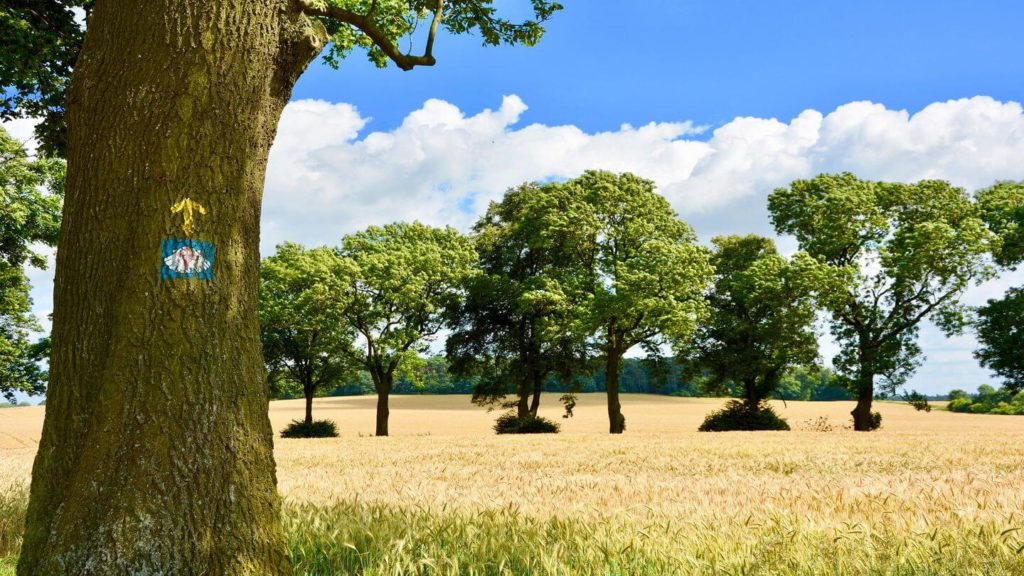
Pilgrims, known locally known as ‘peregrinos’, take up the journey on foot, bicycle or even horseback. Some walk alone, others with a partner, or in groups. However one decides to take on the Camino, there’s always a great sense of community. You always see pilgrims passing each other with a welcome of ‘Buen Camino!’ to wish each other well on their journey.
The Camino has encouraged invaluable cultural exchanges for centuries, and today, the Camino is more than a pilgrimage. It’s a trip of a lifetime that attracts thousands of people all over the world.
Discover the Camino on Northern Spain
Why walk the Camino de Santiago?
Although it has traditionally been a religious pilgrimage, people of all ages and backgrounds now walk the Camino for many different reasons. Some take on the Camino to experience the culture and history of the trails, while others take it on as a fitness challenge. Others walk the Camino for the camaraderie and community.
It’s often a journey of great self-development and a kind of meditation for many. The journey allows them to unplug from their daily life and spend time clearing their heads. It’s also a great chance to reconnect with nature as you become immersed in the stunning landscapes of rural Spain Galicia and Castilla y León.
Whether your motivation for taking on the Camino is religious or not, the journey is always spiritual. It’s all about pushing your limits, enjoying simple pleasures and making friends. It’s a true journey of self-discovery.
How does the Camino work?
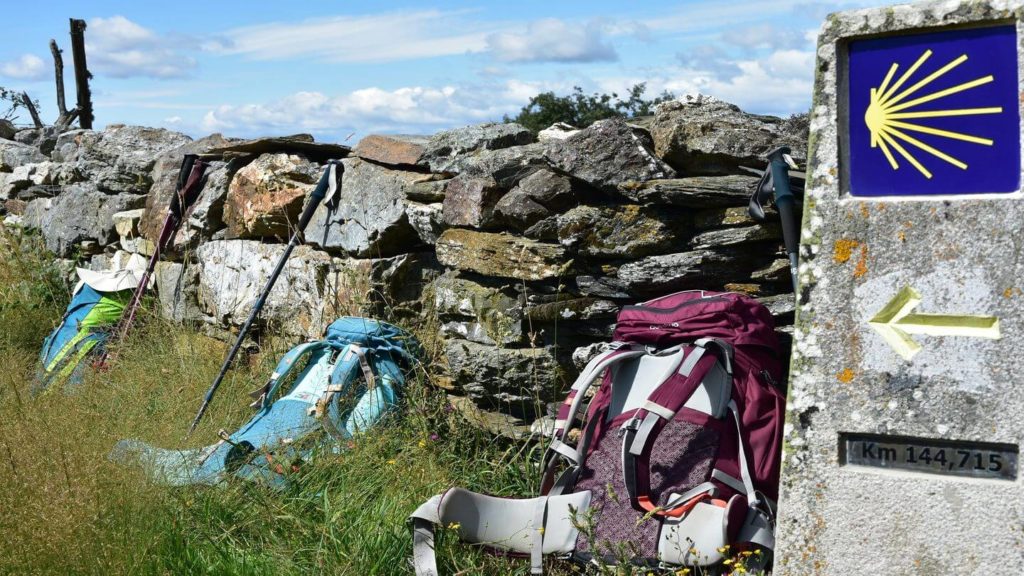
There are dozens of routes you could take, all weaving together like streams and meanders that find their way to one final lake. There’s an easy way to tell if you’re on a pilgrimage route: they’re all waymarked with the iconic scallop shell symbol.
The Camino is not just one path. It’s a whole network of routes. When the pilgrimage began in the Middle Ages, the aim was to arrive to the sacred city of Santiago de Compostela. There was no official starting point, but because it was safer for people to walk together, pilgrims created common roads and paths. Since pilgrims came from all over Europe, including France, Portugal, England and beyond, routes were established so people could travel from their home countries. Travelers choose their route based on many factors including weather, landscapes, popularity and amenities. Some routes are up to 1,000km long, while others are half that length.
For more useful info check out our Spain Destination Guide
You may also like: 12 useful Spanish phrases to learn before your trip
The Compostela
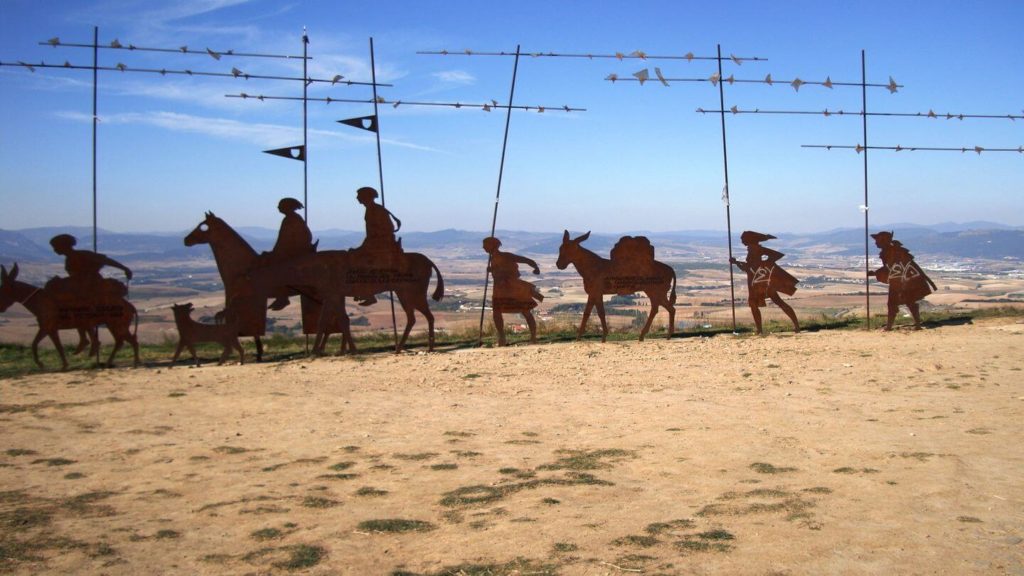
When choosing a route, try to aim to walk at least 100km (or 200km if you’re traveling by bicycle). Doing so will earn you the Compostela , a Latin certificate declaring the completion of your pilgrimage.
Because of this, the last 100km of the French Way and the English Way are extremely popular. The last 100km takes around six days to walk for most people, while the whole French Way takes around 35 days to walk. Cycling is usually two or three times faster than walking, while some people wander the Camino for months at a time!
To receive your Compostela, you’ll need a ‘Pilgrim Passport’, also known as a ‘Credencial’, to collect stamps along the way to prove your journey. This certifies you as an official pilgrim, and harkens back to the Middle Ages, when pilgrims needed a document to allow access to places like the Royal Hospital of Santiago. Now, it is symbolic of your journey, where you get stamps from the ‘albergue’ (hostels) you’ll stay at, as well as churches, town halls, and many other places you’ll find on your way along the Camino.
We think you’ll also like: 12 of the most useful Spanish phrases to learn before your trip to Spain
The Camino de Santiago routes
These are the most popular routes that all lead to Santiago de Compostela.
Camino Francés (the French Way)
The French Way is by far the most popular route and for good reason. It’s a spectacular walk with varied scenery, plus loads of nice hotels and restaurants along the way. It’s also popular as it’s the route which Martin Sheen’s character Tom travels in the movie ‘The Way’.
The French Way is just over 790 km and officially starts in St Jean Pied-du-Port (where most routes from other parts of Europe converge). Although it begins in France, the route is mostly walked in Spain.
You’ll cross through some of the most stunning parts of the country, including rural mountain regions and beautiful cities like Leon, Burgos and Pamplona. It also passes through many important pilgrimage towns like Ponferrada, Logroño and Sarria.
We think you’ll also like: 12 Photos that Will Make You Want to Visit Spain This Year
Camino de Finisterre (the Finisterre Way)
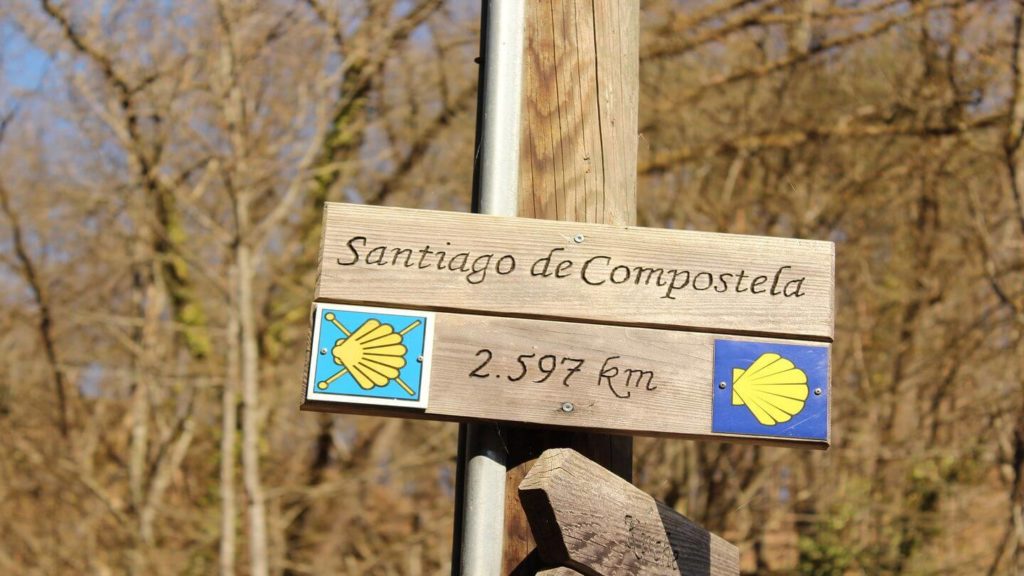
While Santiago de Compostela is the focal point of the Camino, many pilgrims continue on to Finisterre, one of the westernmost points in Europe on the Atlantic coast. The name Finisterre literally translates to “end of the world”, and this is the only Camino route that begins in Santiago de Compostela.
It travels nearly 100 km and you’ll still get your Compostela completion certificate for doing this route. You’ll pass through hillsides, pine groves and medieval villages, including Galician towns like Cee and Negreira.
When reaching the “end of the world” in Finisterre, it was customary for pilgrims to collect a shell as proof they had reached their destination. This is why the scallop shell is now the symbol of the Camino.
Camino del Norte (the Northern Way)
This route starts in Irún on the border with France and travels along the gorgeous northern coast of Spain through the Basque region and Asturias. Traversing 820km, the Northern Way passes through wonderful cities like San Sebastian, Bilbao, Oviedo and Santander.
You’ll cross through rolling green hills, inland meadows, quaint villages, beautiful beaches and old monasteries. There is also plenty of fantastic northern Spanish cuisine and Michelin-starred restaurants along this route, so it’s definitely one for the foodies.
Camino Portugués (the Portuguese Way)
Starting in Lisbon and passing through Porto and Pontevedra as it takes you north through Portugal, this has become the second most popular Camino route. It’s around 610km long and mostly flat without too many hills.
It takes you along stunning coastlines with sandy beaches, passes close to the Catholic pilgrimage site of Fatima, and crosses into Spain and the lovely old town of Tui. If you want to take on a less crowded route that still has lots of amenities, the Portuguese Way is a great option.
Camino Portugues Coastal (the Portuguese Coastal Way)
This route is a variant of the original Portuguese Way and has grown in popularity as it takes you close to the spectacular Atlantic Ocean. You’ll get to walk along the coastline for several days and you can wander along the boardwalks by the seaside and explore the estuaries of this remote region.
You’ll also pass through charming old towns like Baiona, the port town of Vigo, and Pontevedra, the ancient capital of Galicia. The last leg then takes you inland through woodlands and small villages to Santiago de Compostela. This route is also even flatter than the original Portuguese Way, so if you enjoy walking with sea views and through the forest, this is the path to take.
Camino Inglés (the English Way)
This path is around 110km, while the route from the La Coruña is only 75km. The Ferrol route follows the shoreline through Galicia, serving up stunning beaches and sea views, before heading inland into rolling farmland with old chapels and leafy paths. The route is well marked and many of the milestones have interactive QR codes with information on towns along the way.
Camino Primitivo (the Original Route)
The Original Way is thought to be the first pilgrimage route to Santiago de Compostela. And while it’s quite a challenging walk, it is one of the most beautiful and rewarding. The route starts in Oviedo and travels southwest to Santiago de Compostela for around 328km. You’ll see fewer people and fewer amenities and there are plenty of steep hills, however you’ll get to see the beautiful valleys, mountains and viewpoints from Asturias to Galicia.
The route passes through farmlands, coastline, woodlands and small villages. It also stops in Lugo which is still surrounded by ancient Roman walls and towers. The last section meets the French Way in Melide and follows that route for 50km until Santiago de Compostela.
Via de la Plata
If you’re interested in Roman history, this is the path for you. Spanning 1,000km, this is the longest Camino route through Spain, and most of the route follows the old Roman road north starting from Seville. You’ll pass through great cities like Merida, Salamanca, Cáceres, Ourense and Zamora, and since it’s less crowded than other routes, it’s also quite peaceful.
The terrain is mostly flat and you’ll pass through beautiful regions with lush forests, lakes and plenty of Roman ruins. You’ll then ascend through oak woodlands and farmland, before passing by hot springs in Ourense where you can soothe your weary legs. Although the terrain is easier than the French Way, the Via de la Plata route has stages of longer walking days with less frequent amenities.
Via Podiensis
View this post on Instagram A post shared by Auvergne-Rhône-Alpes Tourisme (@auvergnerhonealpes.tourisme) on Apr 28, 2020 at 9:45am PDT
Also known as Le Puy Camino, the Via Podiensis route starts in the south of France. It’s one of the most beautiful Camino routes, travelling through the Auvergne region of France with stunning churches and historic monuments. You’ll pass through several UNESCO sites including the cathedral at Le Puy-en-Velay and the bridge at Conques, along with peaceful countryside dotted with woodlands, dairy cattle and quaint villages.
You’ll also pass through the Armagnac vineyards and the pine trees of the Gascony region as you move toward the Pyrenees mountain range. There are plenty of steep ascents and hilly sections, but it is truly beautiful. The route arrives in Saint Jean Pied-de-Port, where the French Way begins and takes you on to Santiago de Compostela.
We think you’ll also like: A Pilgrim’s Progress: The religious sites of Northern Spain
What happens when you arrive in Santiago de Compostela?
Many pilgrims head straight to the Pilgrim’s Office to receive their final stamp. Those who travelled 100 km or more (or 200 km or more for those travelling by bicycle), will receive their Compostela certificate.
Many pilgrims then attend the Pilgrim’s Mass at the Cathedral. These run at 12pm and 7:30pm, and you should arrive at least half an hour early to get a seat. For the finale, they hoist the Botafumeiro (a huge thurible weighing 50 kilograms) high into the air. It swings across the mass, releasing incense over the crowd.
How fit do you need to be to walk the Camino?
The Camino is not to be underestimated. Although you don’t need a high degree of physical fitness, you will be walking a minimum of 100 km (if you want to ‘officially complete’ the Camino). You’ll also carry a large backpack, so you do need to be prepared. Make sure you get in some training in the weeks and months before you leave and be ready to walk some long stretches and strenuous climbs.
It’s a great idea to bring walking sticks as these take 20 percent of your weight off your knees. When you’re climbing, that can be the difference between having a wonderful time and wanting to throw your backpack off the next bridge! Remember, you can go as fast or slow as you like, and you can add in rest days whenever you need it. Walk the Camino your way.
Best time to walk the Camino
While July and August are the most popular months, they’re also the hottest with sweltering summer temperatures. If you prefer fewer crowds and milder weather, the best time to walk the Camino is May to June and September. You can make the journey any time of year, however autumn can be very wet and cold, while winter brings snow and ice.
Where to stay along the Camino
There are many accommodation options along all the Camino routes. Albergues and refugios are hostel-like accommodations run exclusively for pilgrims. They range from privados (a privately-run albergue and the most luxurious and expensive option) to municipal (a local council-run albergue that are often the cheapest and most basic option).
There’s also parroquias, a church-run albergue with some offering mass or a blessing. Most albergues operate on a ‘first come, first served’ basis. Preference is given first to walkers, then horse-riders, then cyclists.
Where to eat along the Camino

You can all find lots of wonderful local delicacies on the Camino, ranging from creamy croquettes to Galician-style octopus. Galicia is particularly known for its mouthwatering pintxos and it’s all best washed down with local wine. You can also look out for the menus del días (menus of the day). These are cheaper and offer delicious set starters, mains and desserts.
Want the perfect tour to unlock Europe’s holiest pilgrimage sites, like Fátima and Santiago de Compostela? Take our Days of Devotion tour for 12 days of sacred traveling, all with a fun group of like-minded peregrinos.
Have you ever walked the Camino de Santiago? Are you dreaming of taking on this famous pilgrimage trail? Let us know in the comments below!
Want to hear more from us?
Sign up to receive inspiring travel articles, offers & news
" * " indicates required fields
Privacy Overview
Sign up for our emails.

Showbizz Daily (English)
The 20 most spectacular hiking trails in Europe
Posted: February 28, 2024 | Last updated: February 28, 2024
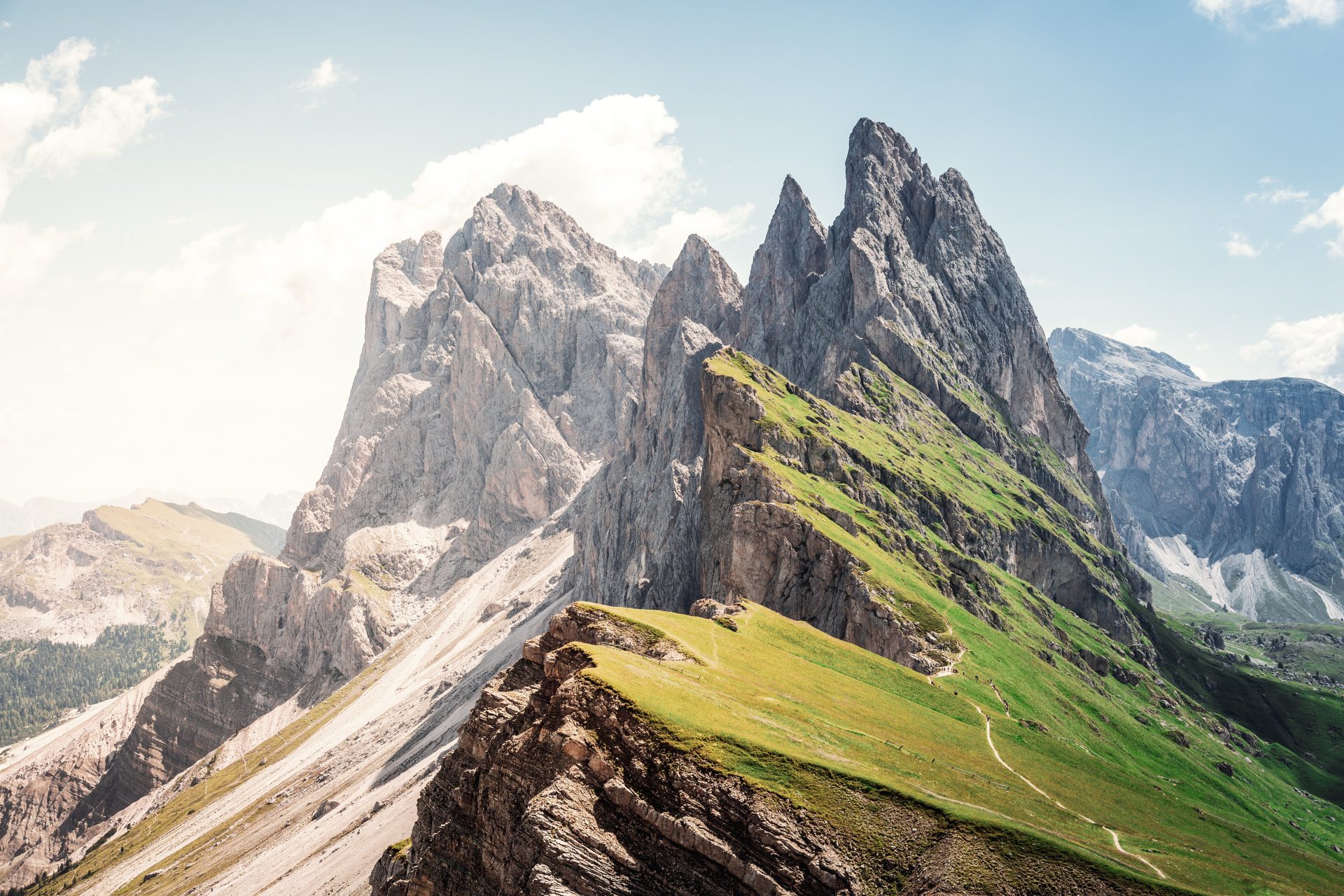
Feel free out there
Whether you are a great sportsman or not, going on a hike for a few hours or several days is always an enriching experience. It allows you to disconnect from your daily life, by being closer to nature. Some trails offer breathtaking landscapes.

Hiking in Europe
Do you want a really special hiking experience? Discover the 20 most beautiful hiking trails to explore in Europe. There's a selection aimed at beginners as well as one for the most adept trekkers.
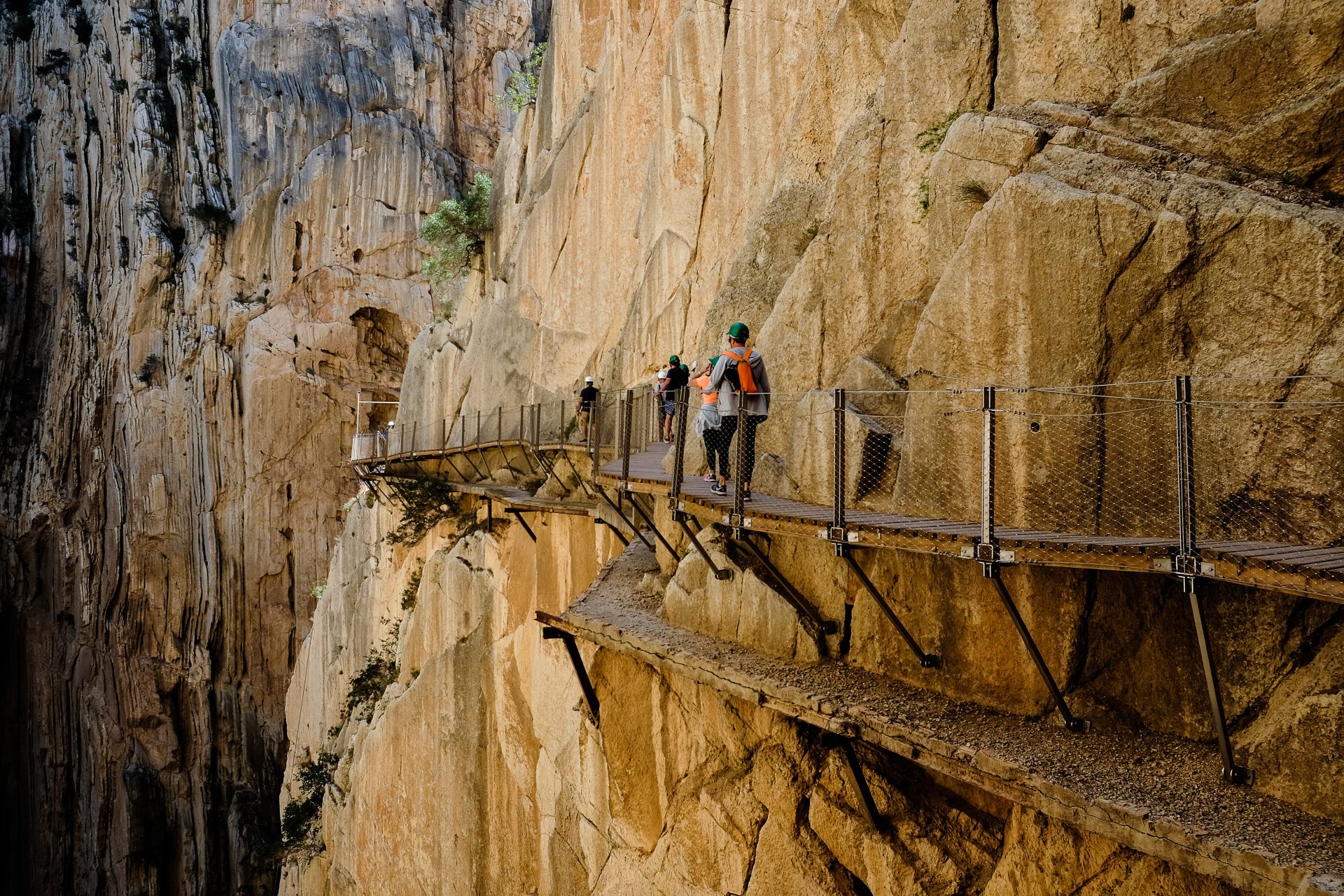
Caminito del Rey - Spain
Known for being one of the toughest hikes in Europe, the Caminito del Rey ('King's Little Path') has been rehabilitated with safety rails, making it less dangerous than before. This Andalusian path is located in the natural park of Los Ardales (Malaga) and offers magnificent viewpoints. If you have vertigo, however, this hike is not recommended for you, as it includes a suspension bridge at the top of the gorge, at a dizzying height, and a section with a glass floor.
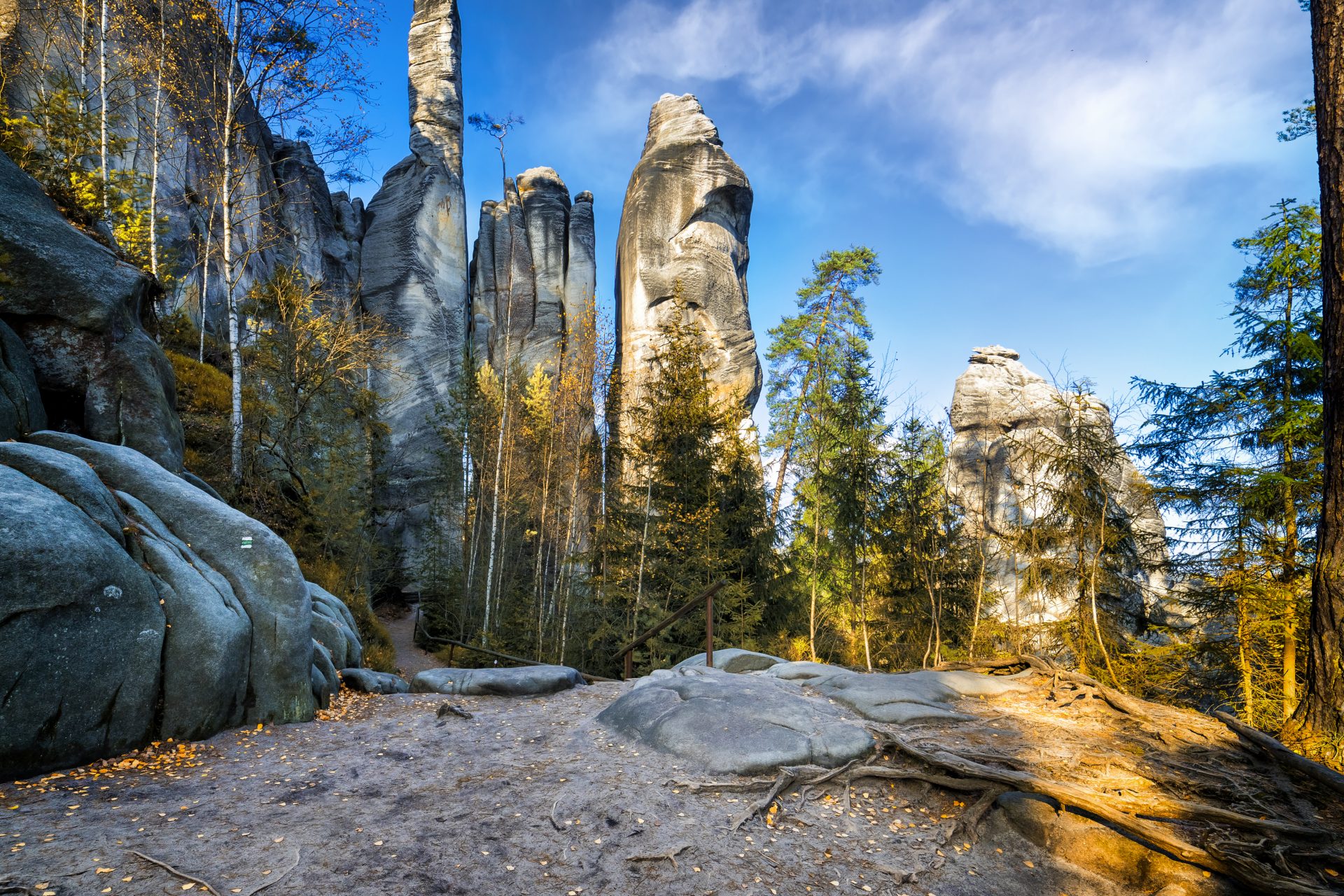
Rocks of Adrspach-Teplice - Czech Republic
True works of art of nature, these rocks are sandstone formations that have very particular shapes and are worth seeing if you travel to the Czech Republic. The hiking trail that crosses them extends over a distance of 6 kilometers and is considered easy. It will leave you with your eyes wide open!
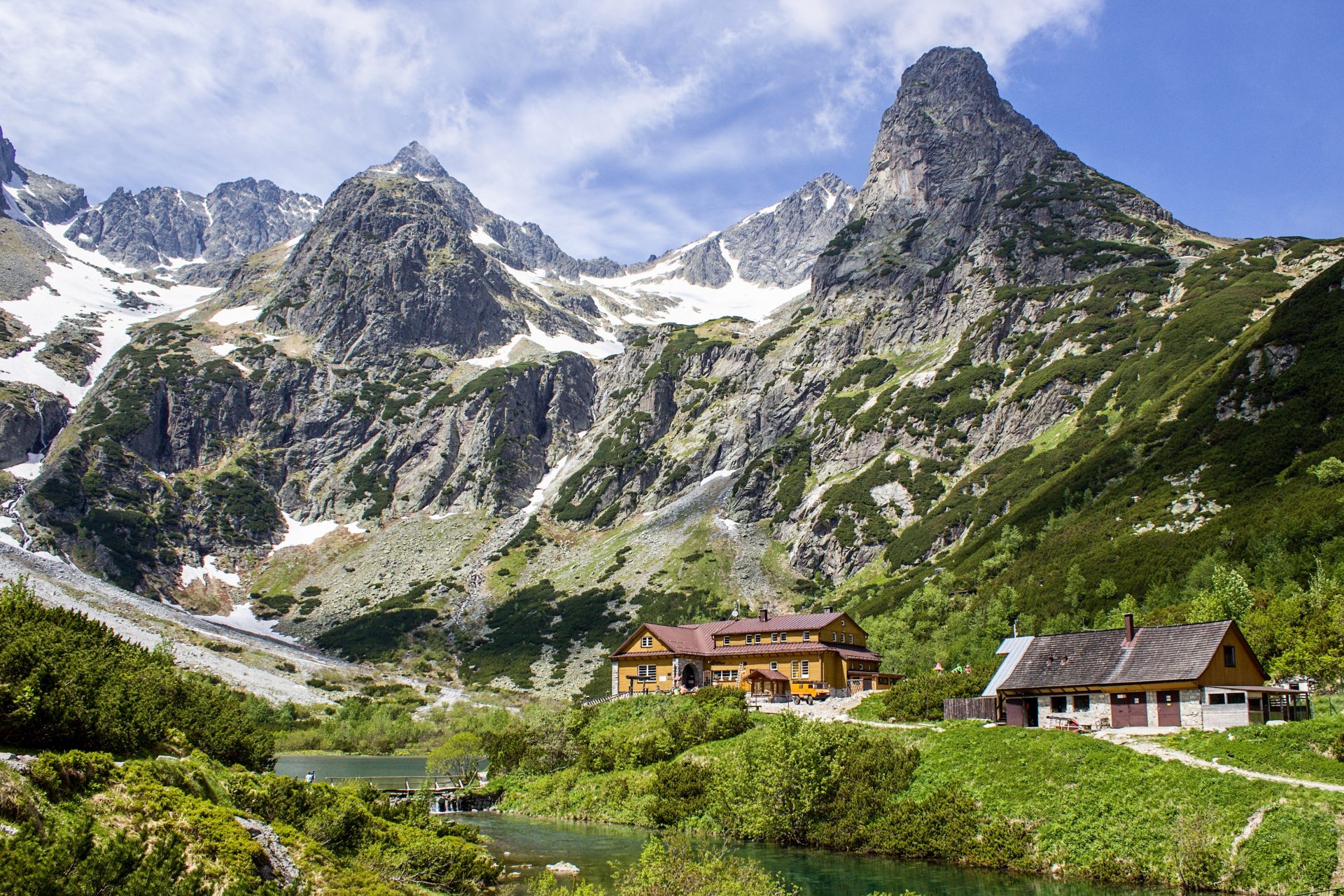
High Tatras – Slovakia
Straddling the borders of Slovakia and Poland, the High Tatras are a mountain range classified as a "biosphere reserve" by Unesco. Several hiking circuits can be taken through the High Tatras, but all promise you the discovery of spectacular landscapes, composed of waterfalls, forests, and lakes.
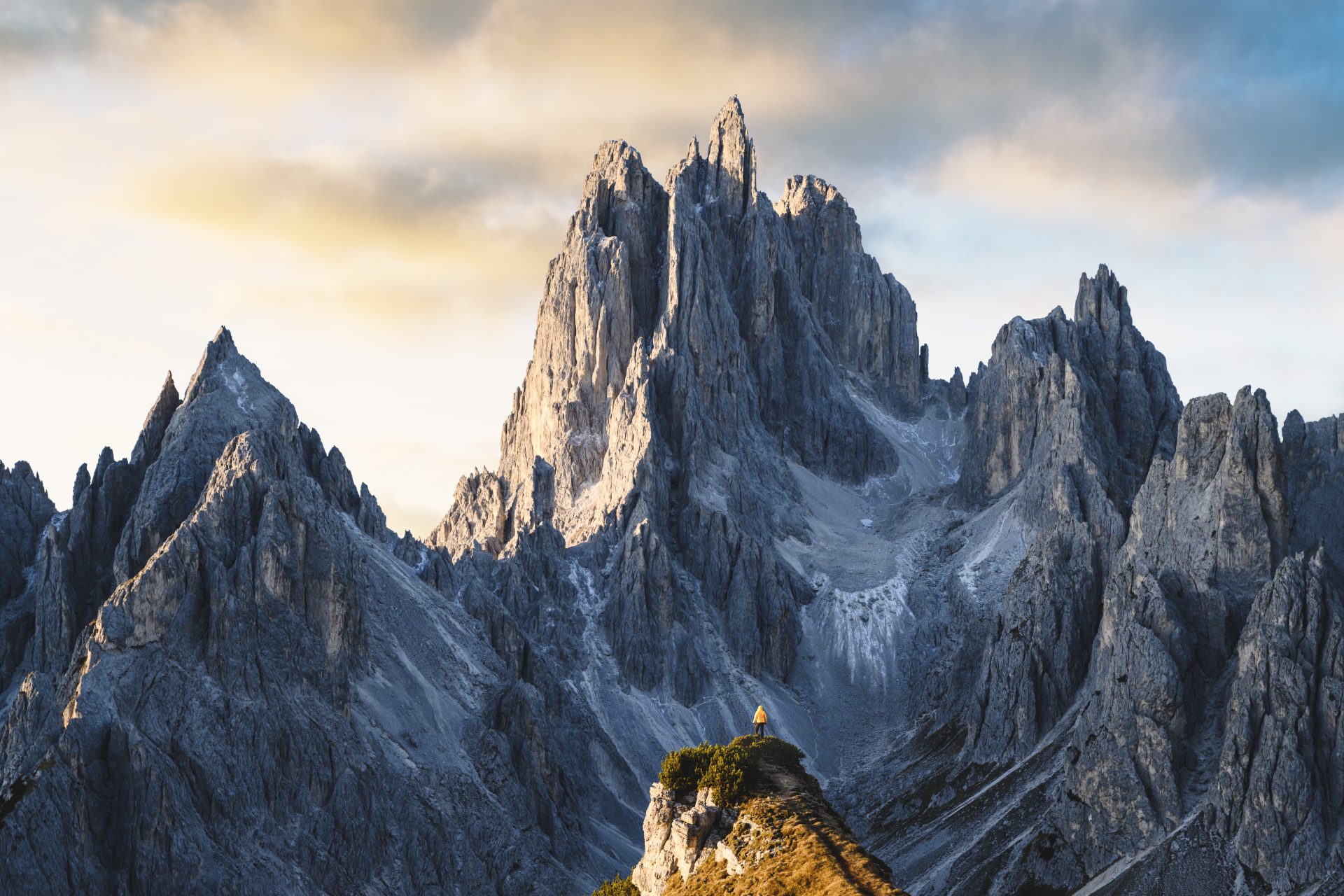
Dolomites - Italy
In northern Italy, the Dolomites are a set of 20 peaks culminating at an altitude of over 3,000 meters, famous for their verticality. There are several routes between its walls and peaks, to choose from depending on your level of hiking.
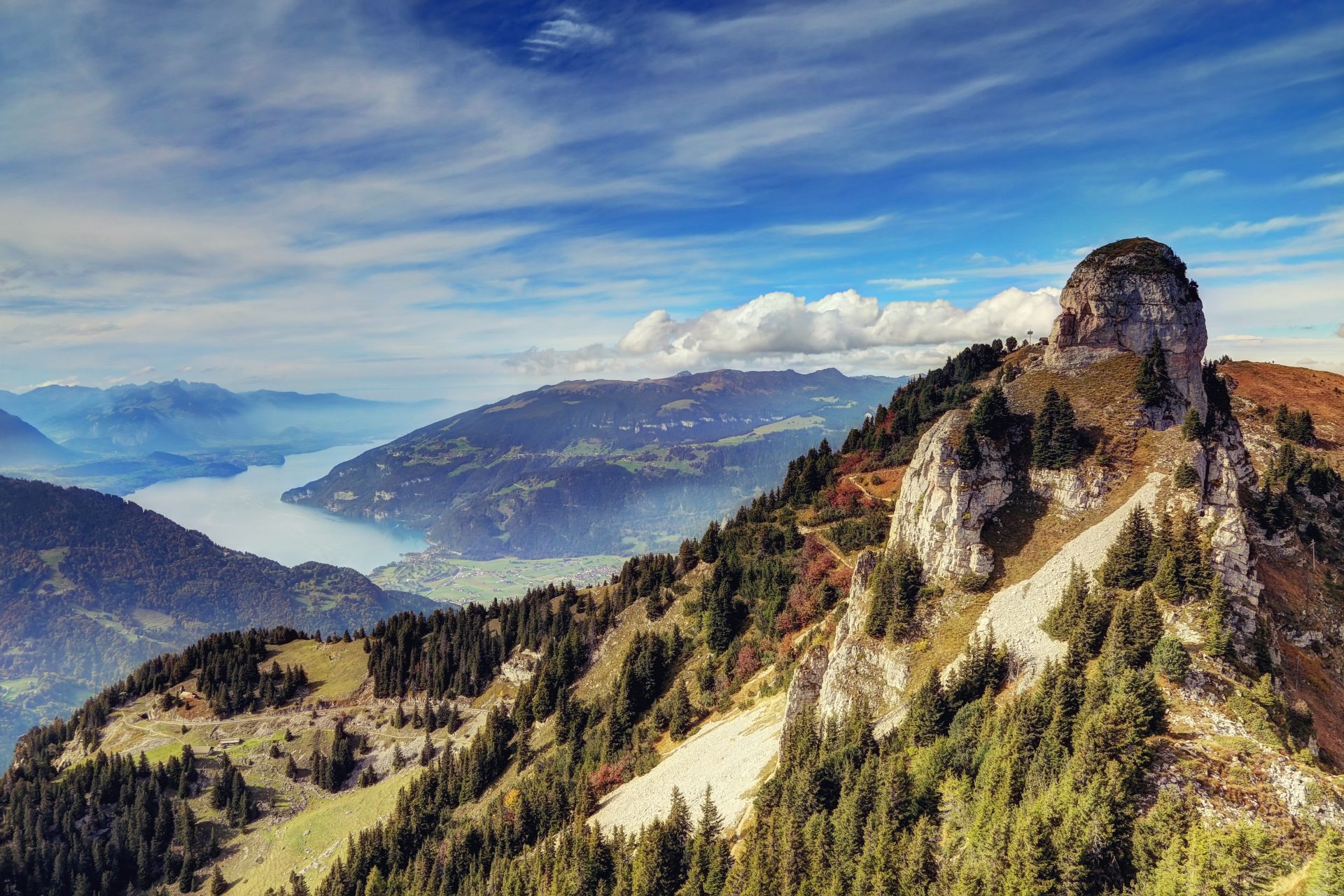
Schwarzhorn - Switzerland
This hike is for seasoned walkers. In the Bernese Alps, the Schwarzhorn is a mountain that culminates at more than 2,900 meters above sea level. The paths that lead to its summit are quite steep, you will need good shoes to venture there, and discover the breathtaking landscapes they hold.
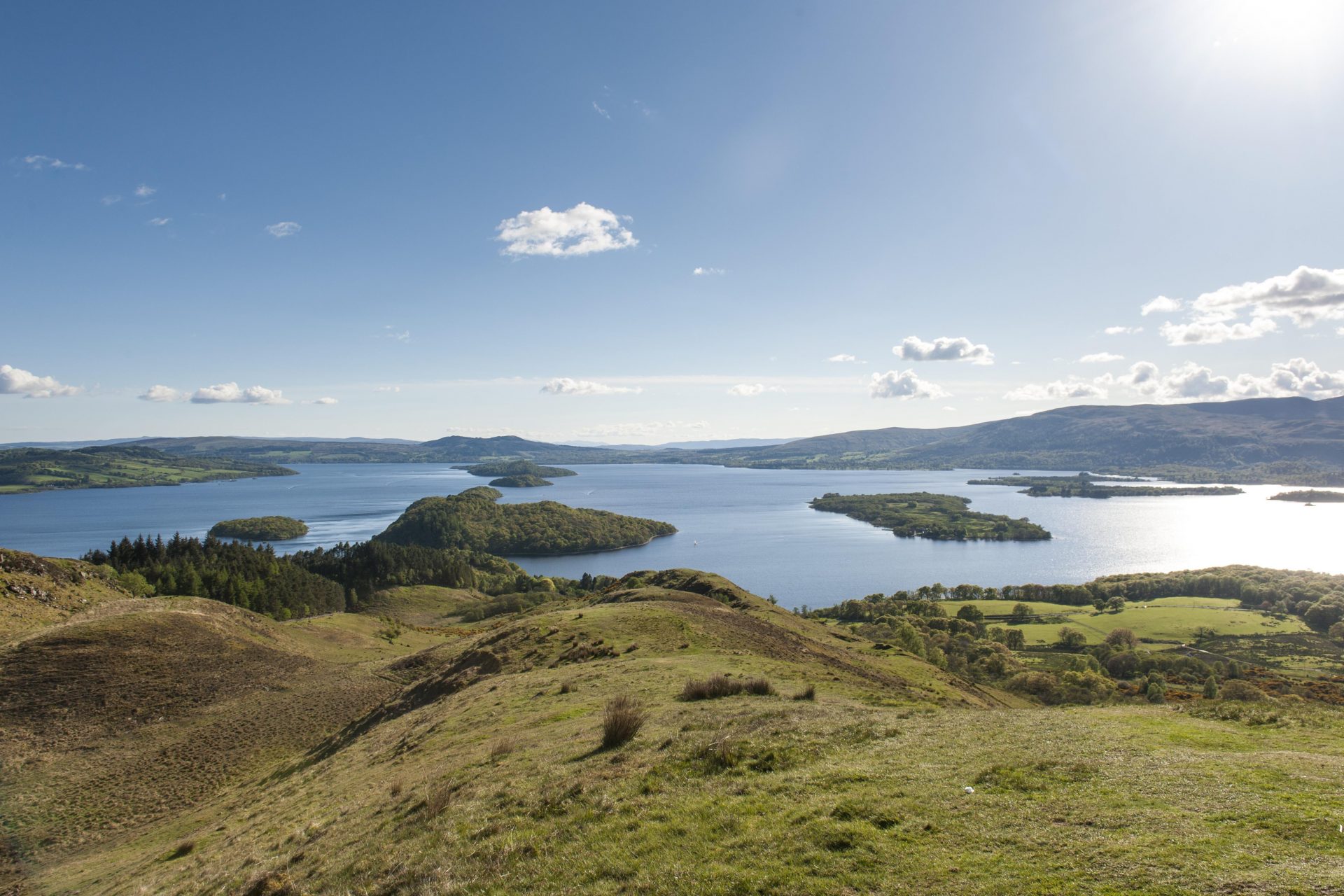
West Highland Way - Scotland
The West Highland Way is a Scottish road linking Milngavie, near Glasgow, to Fort William in the Highlands. With a distance of 154 km, this hike takes 6 to 8 days. The bravest will discover incredible landscapes, over rolling plains and wild panoramas.
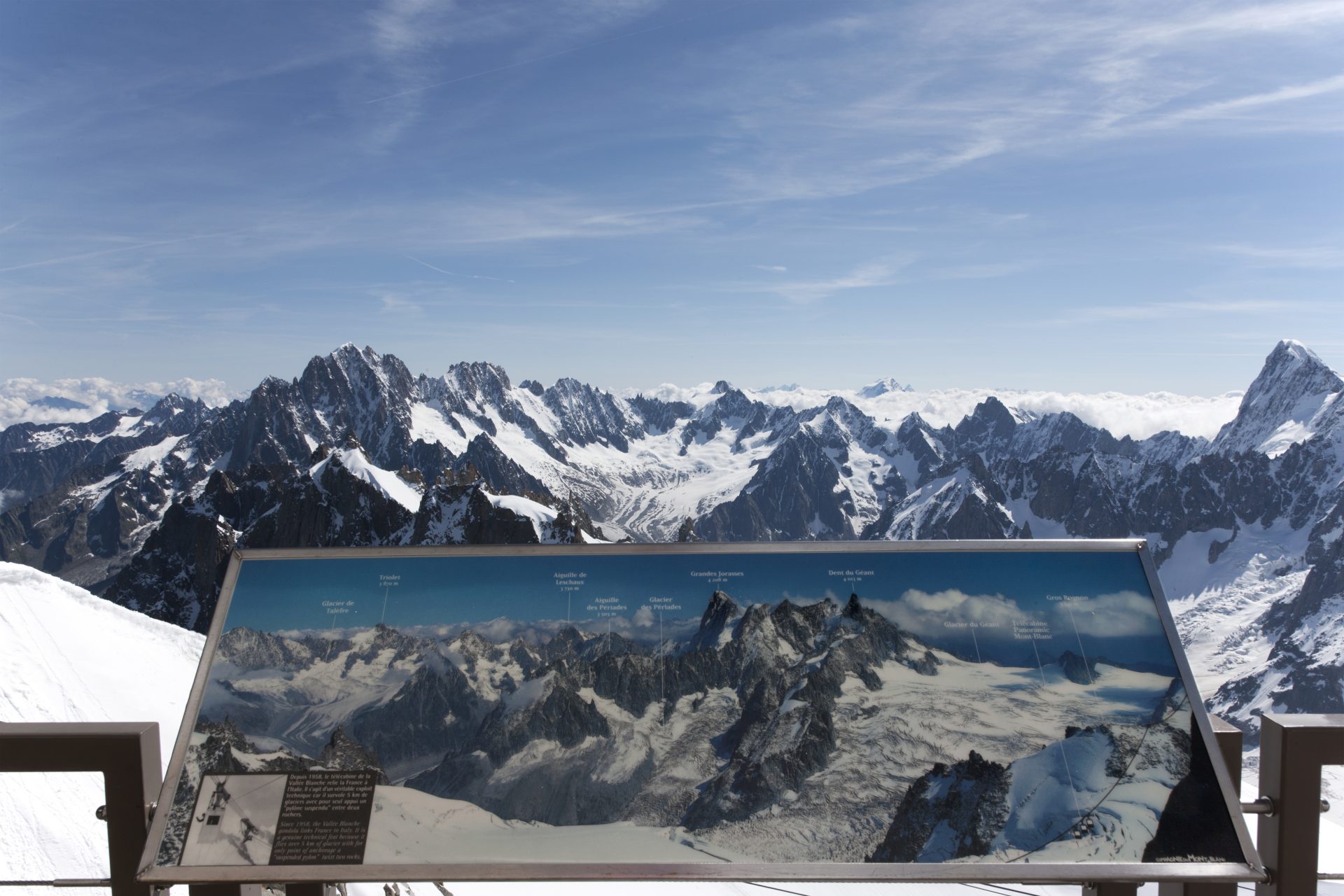
Mont Blanc Tour - France, Switzerland, Italy
Another long-distance hike: the Tour du Mont Blanc. A 155 km route through the Alps, passing through passes and the borders between France, Italy, and Switzerland. According to the hiking pros, the Tour du Mont Blanc is not the most technical trail but requires good physical preparation. Count between 7 and 10 days to complete the challenge.
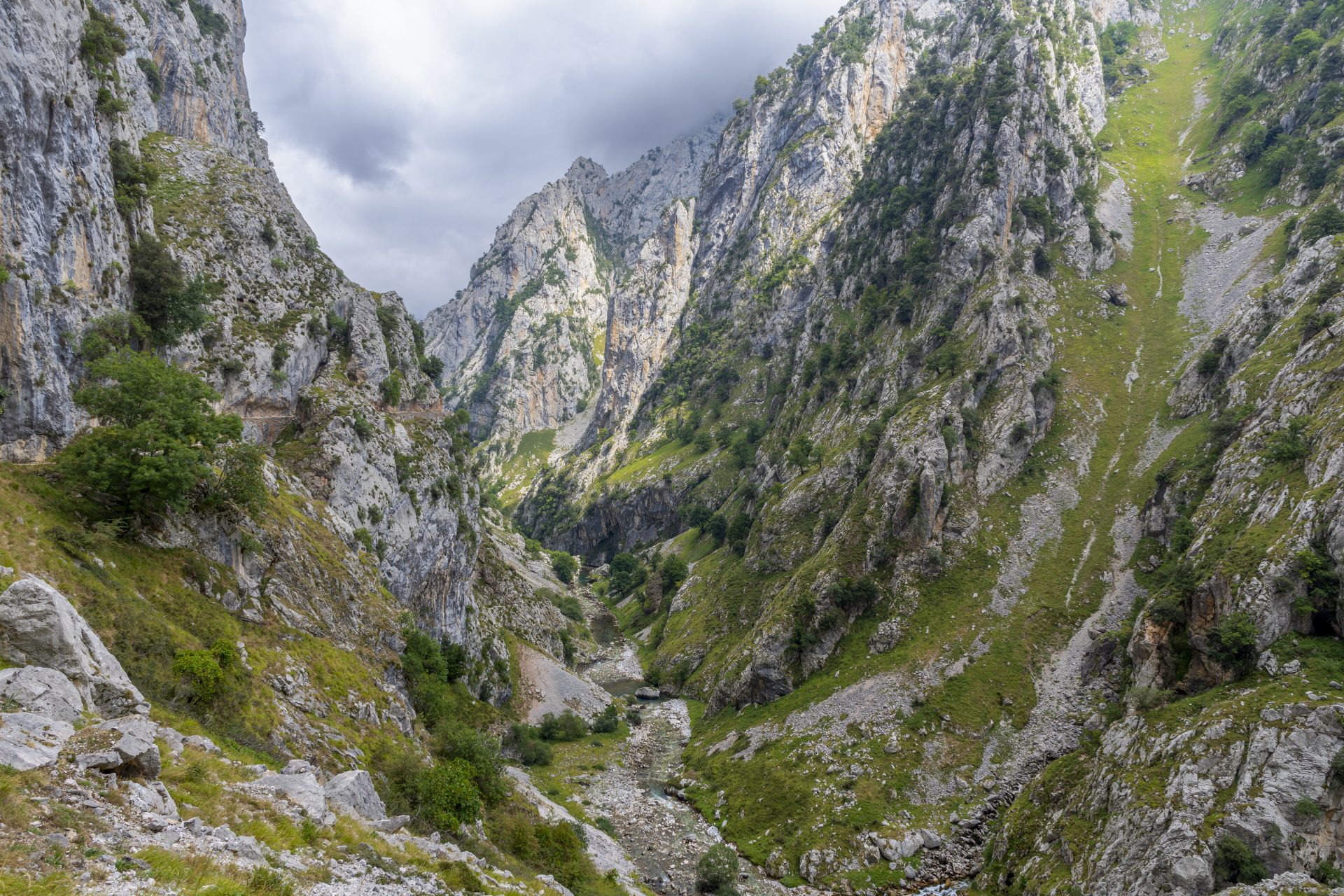
Cares Trail - Spain
In Asturias, in northern Spain, this hiking trail through the Picos de Europa reaches the villages of Poncebos and Posada de Valdeón. By car, the two villages are almost 100 km apart, but following the Cares river in the cliffs, you will only have to walk 12 km to go. The spectacular scenery is worth the return trip.
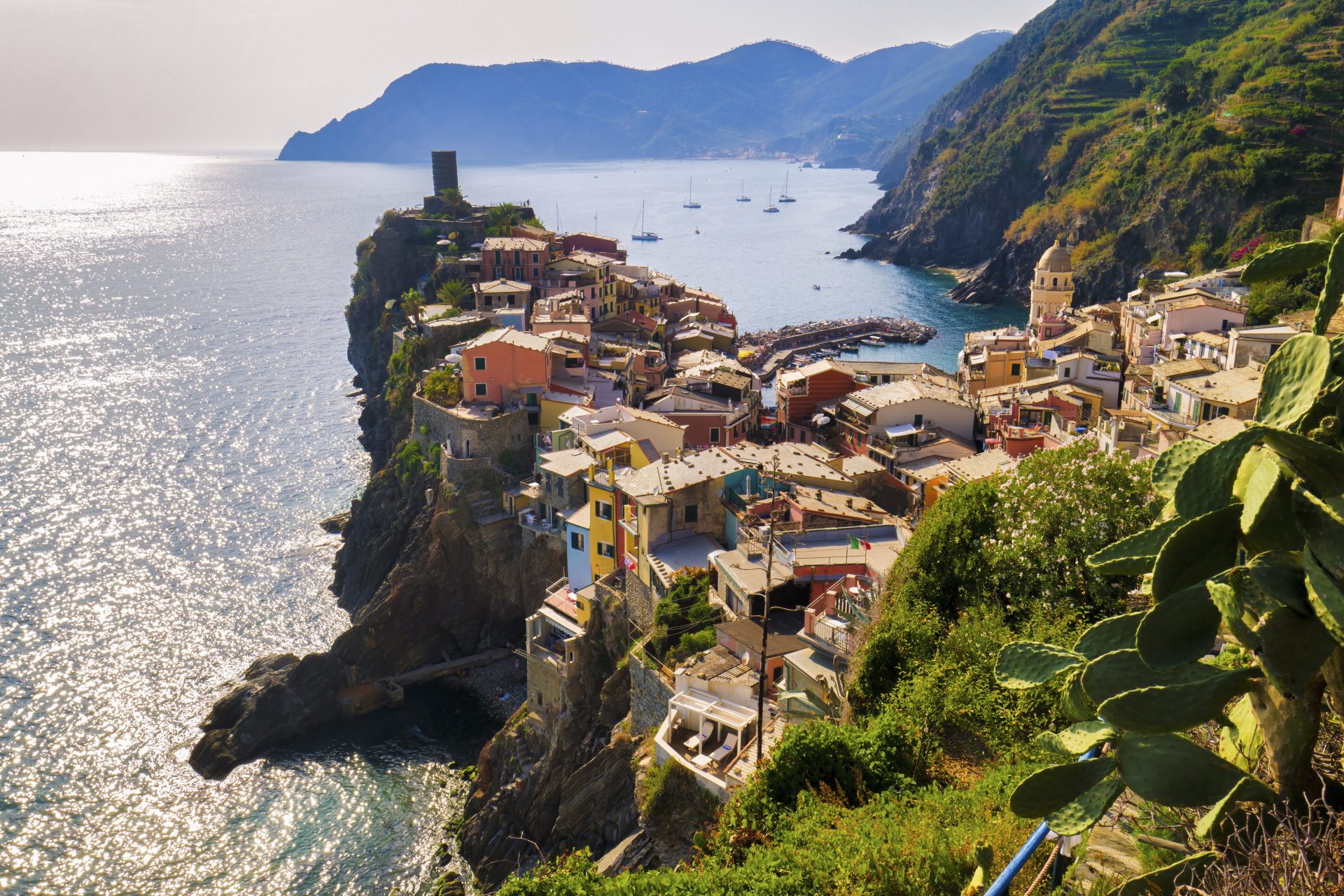
Cinque Terre - Italy
Often considered the most beautiful in Europe, this hike will take you through five magnificent little villages built in coves and cliffs on the Mediterranean coast of Italy. The Cinque Terre Natural Park is made up of several trails, each with different distances and difficulties. It's up to you to choose the paths you want to take.

Kungsleden - Sweden
A hiking trail in summer and a ski slope in winter, the Kungsleden is a great hiking route that crosses the Vindelfjällens nature reserve in northern Sweden. Also called the Royal Way, this hike crosses Swedish Lapland for 440 km, divided into several trails.
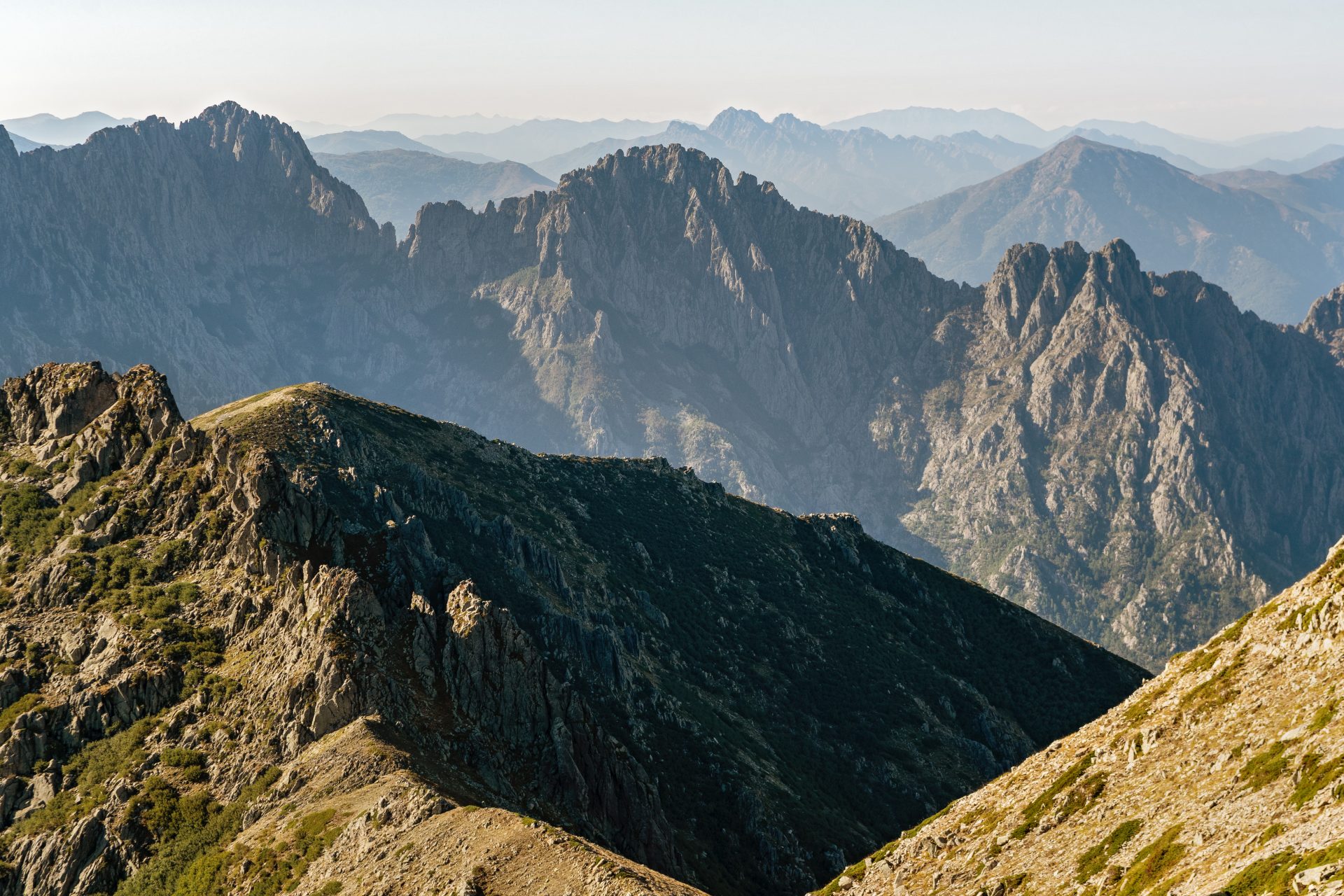
GR20 - Corsica, France
The GR20 (Grande Randonnée 20) is a difficult level hike that crosses Corsica from north to south, via its regional natural park. It is divided into two parts (north and south) and 16 stages over a total of 180 km in distance. This hike is reasonably done in 15 days, but some break records: a runner covered it in just 30 hours and 25 minutes in June 2021!
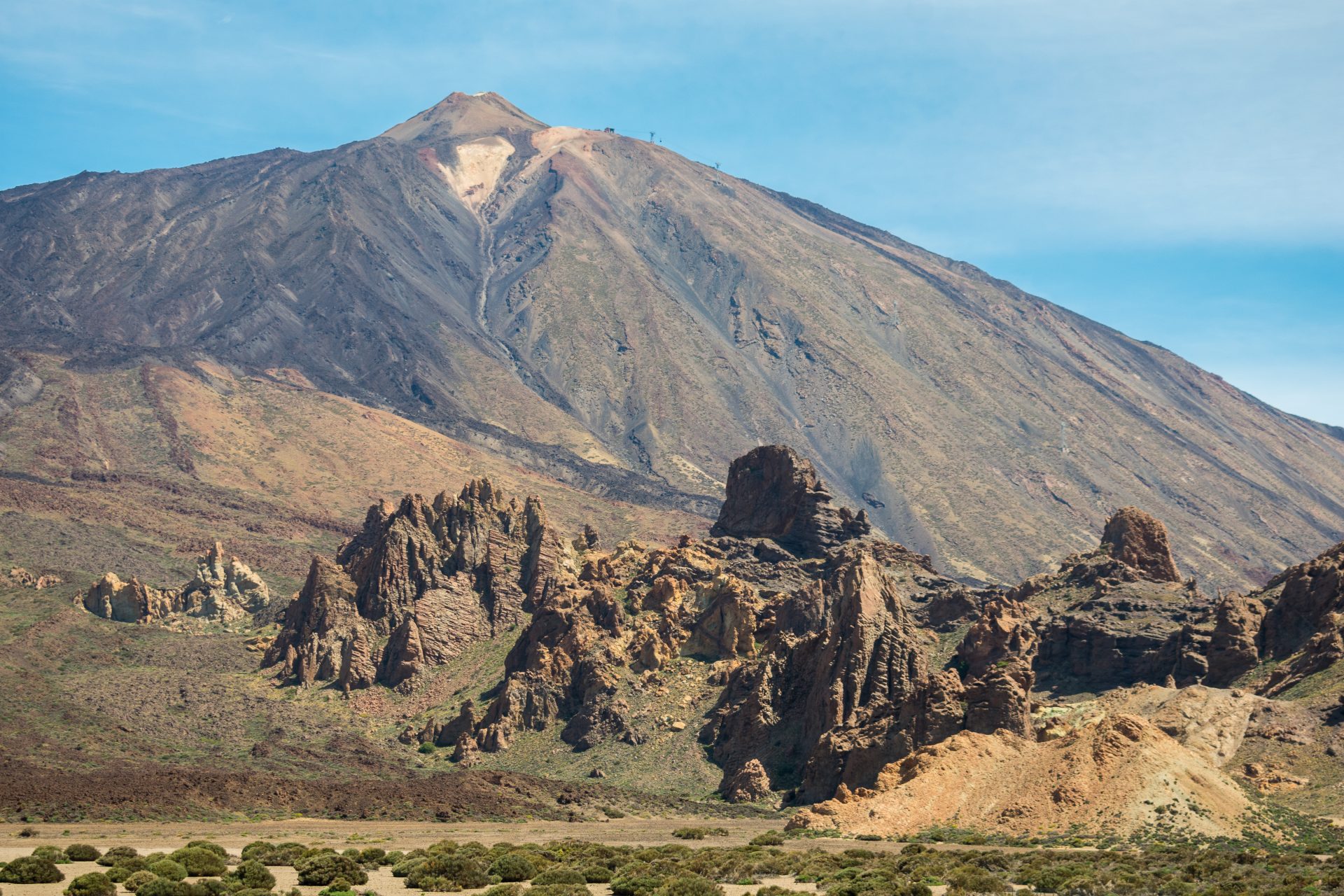
Teide National Park - Canary Islands, Spain
The Teide Volcano National Park is located on the island of Tenerife, in the Canary Islands. Its various hiking trails offer spectacular panoramas with abundant vegetation in certain parts, but also rocky landscapes straight out of a science fiction film.

The Way of St James / Santiago de Compostela - France, Spain
A historical pilgrimage, the road to Santiago de Compostela is a spiritual journey, but also a superb hike between France and Spain. This is divided into several routes, the historical and the modern. In Spain, the "Camino Francés" is the most popular path and the one most used by hikers. It begins in Saint-Jean-Pied-de-Port, crosses the Pyrenees, the North of Spain, and ends in Saint-Jacques-de-Compostelle.
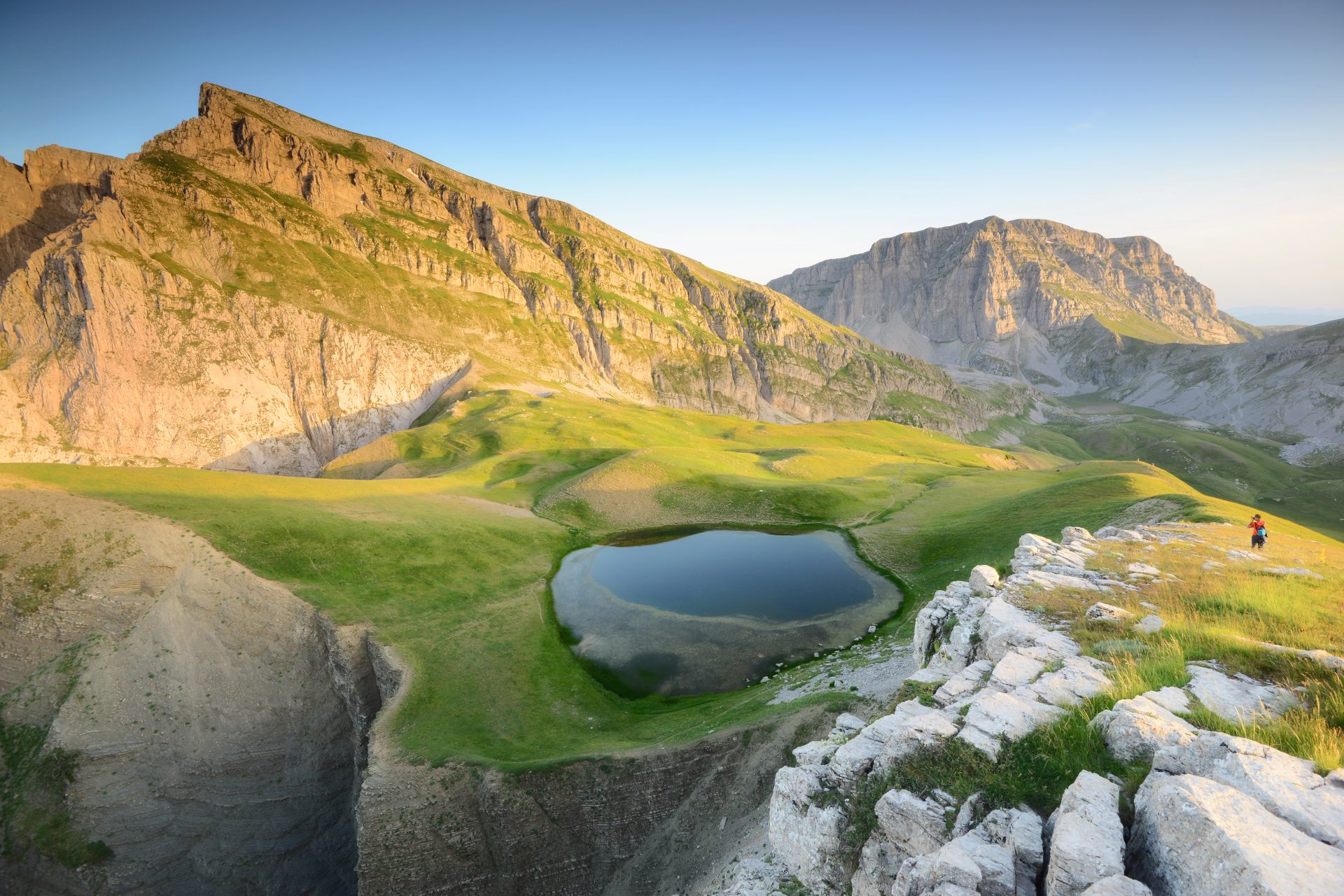
Zagori Loop - Greece
It is in the north of Greece, in the mountain range of Pindus where the loop of Zagori is located. Its route starts and ends in Tsepelovo, and offers you a hike in the heart of grandiose landscapes, between gorges and Greek mountains. With a distance of 62 km, the trek is done in about 5 days of walking.
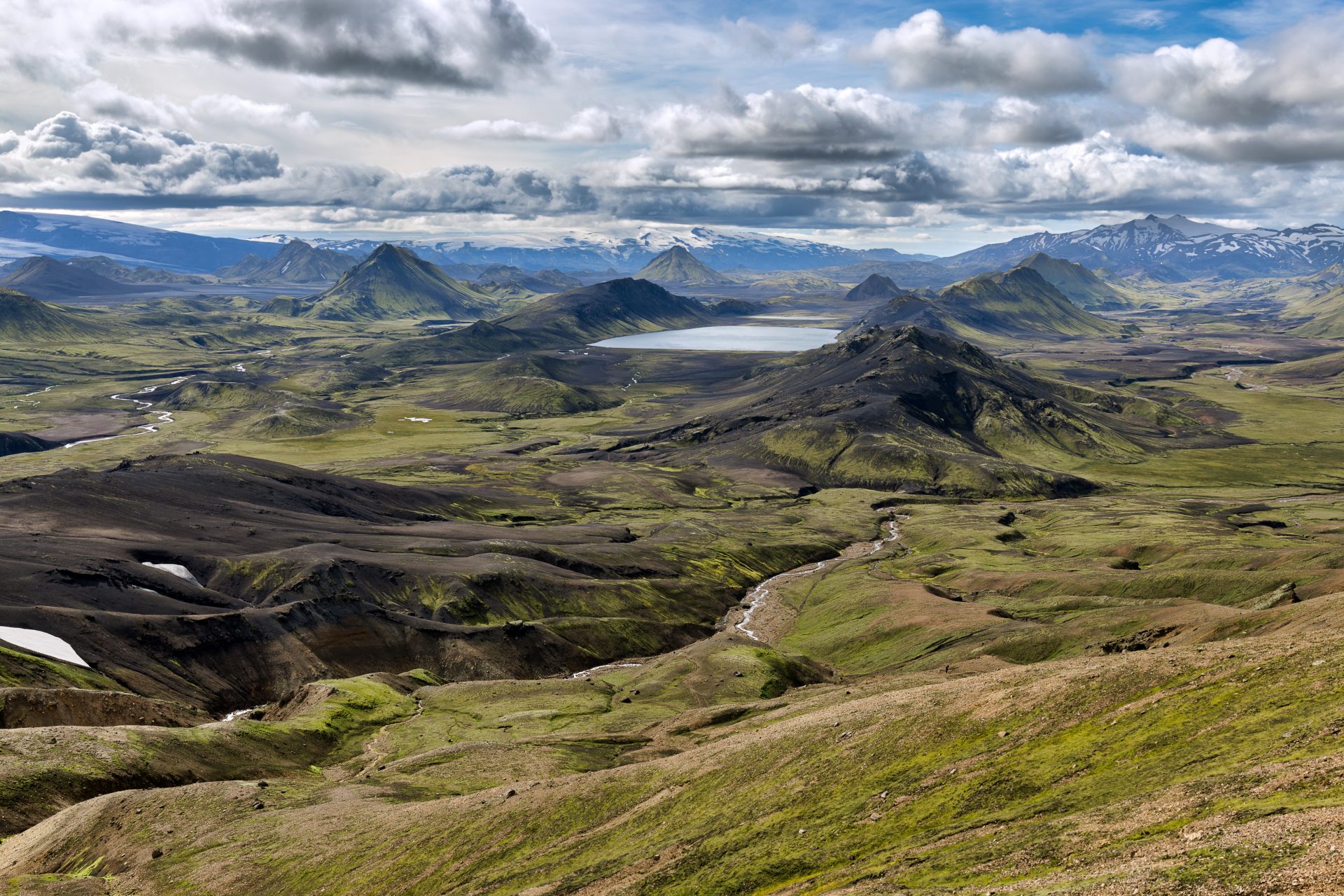
Laugavegur - Iceland
This is one of Iceland's must-do treks. In the midst of breathtaking wild, desert and volcanic landscapes, the Laugavegur gives hikers the impression of finding themselves on another planet. With a distance of 55 km, the trail starts in Landmannalaugar and ends in Thórsmörk. Due to the country's weather conditions, this hike can only be done between June and September.
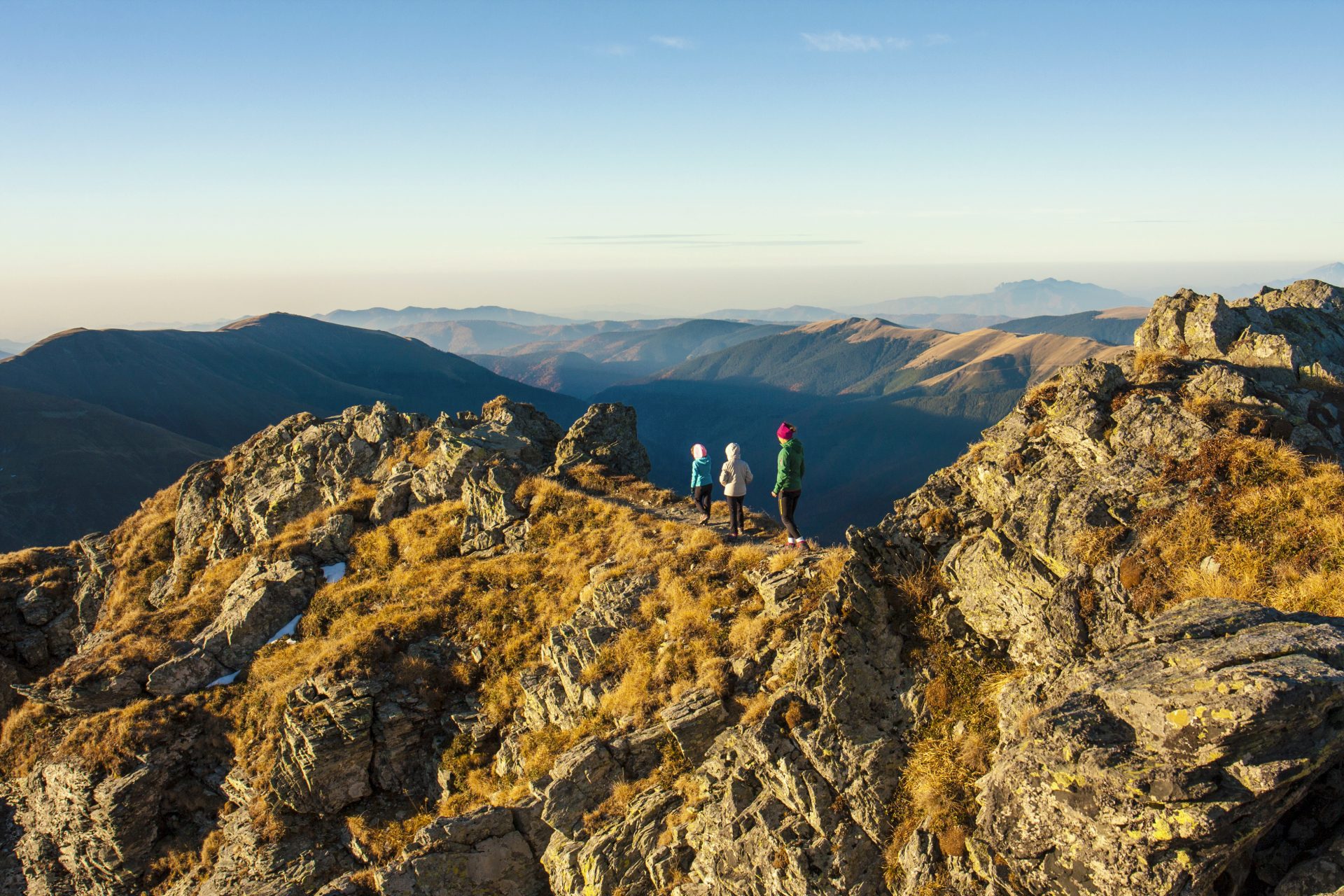
Carpathian Mountain - Romania
There are sumptuous hiking trails in the Piatra Craiului massif and the Bucegi Mountains, in the heart of the Carpathians. By taking them, you will cross the most beautiful natural parks in Romania. Your trip can be completed in about 7 days.
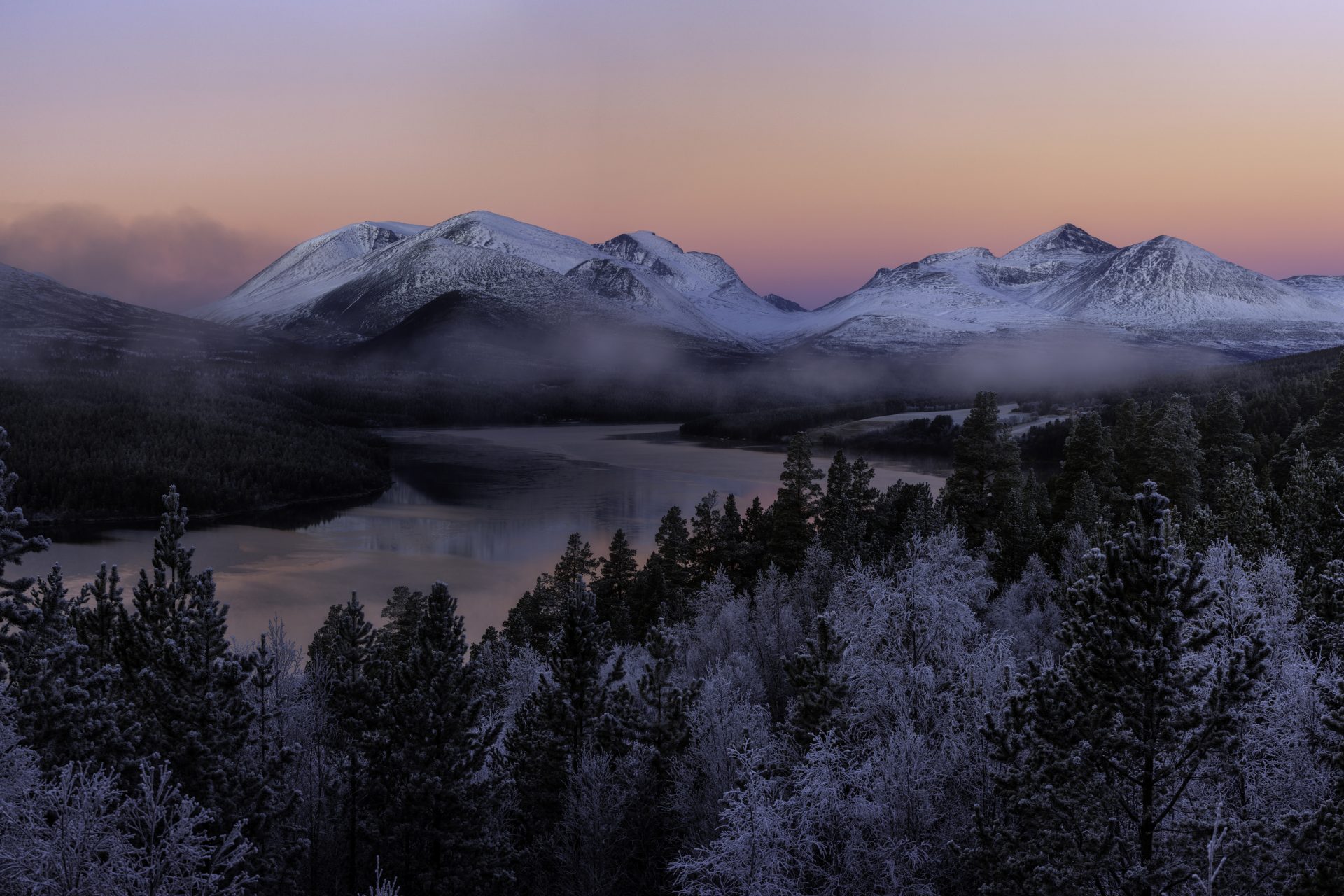
Rondane Nature Park - Norway
The crossing of the Rondane, in the east of Norway, will make you discover exceptional fauna and flora. Hikers can, for example, come across herds of reindeer, if they are lucky. There are several routes in the natural park of Rondane, through its plains and mountains. It's up to you to choose your path depending on the difficulty of the trails.
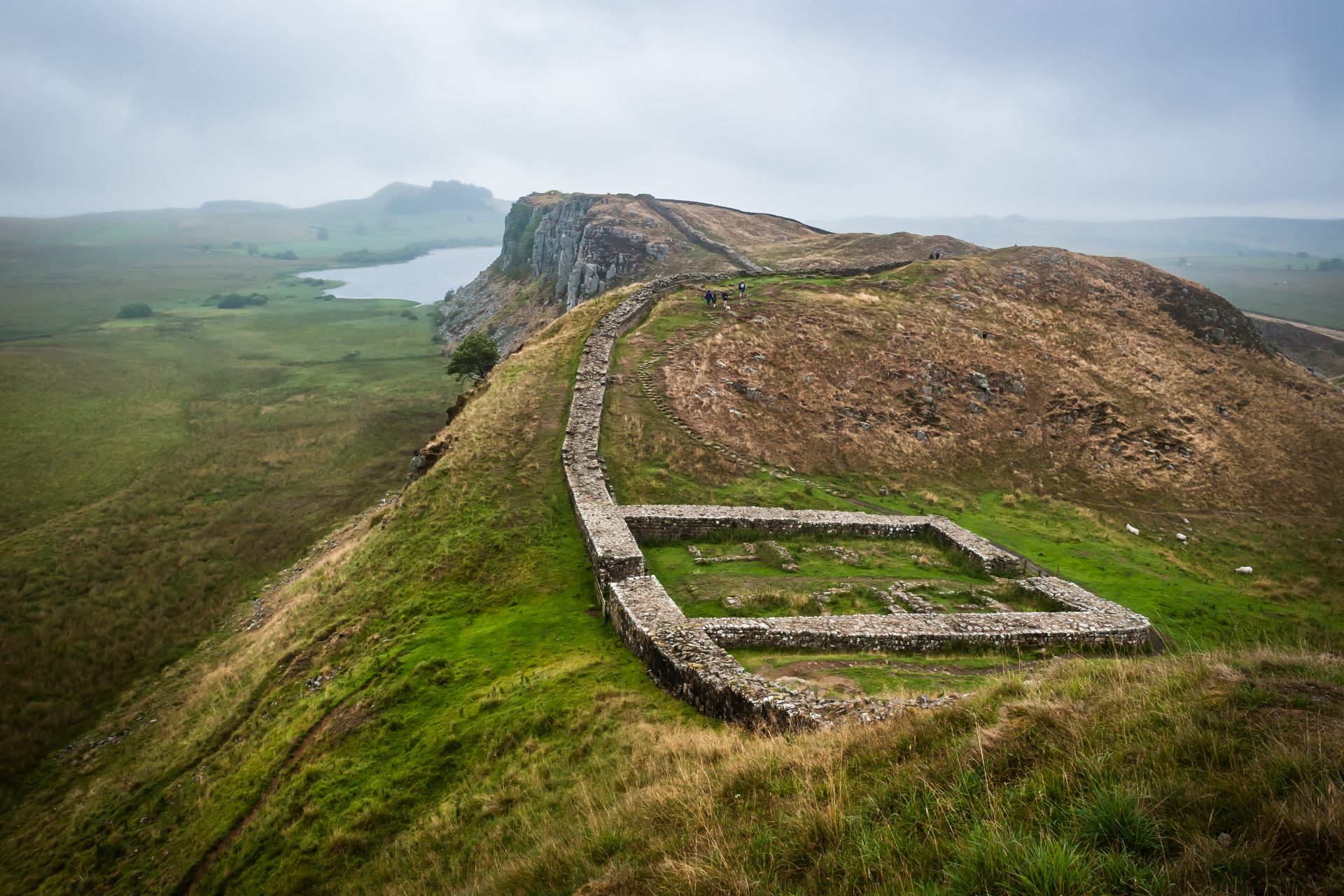
Hadrian's Wall Trail - England
This 135-kilometer trail follows Hadrian's Wall, a stone fortification built in Roman times, listed as a UNESCO World Heritage Site. The tour takes place in the middle of the British countryside and the historical remains of the United Kingdom. It is undoubtedly the easiest hike in the country, but also one of its richest, culturally.
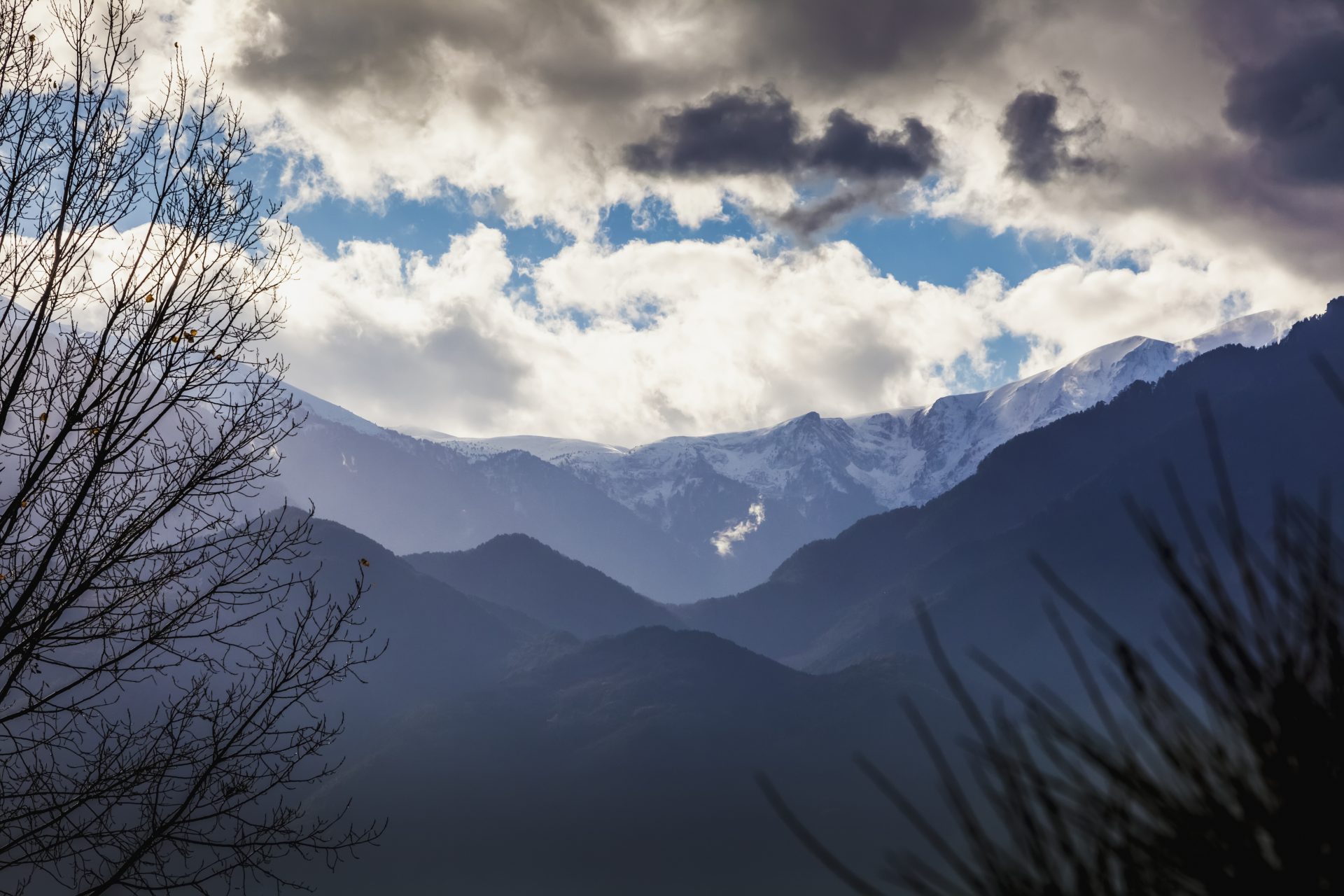
Mount Olympus - Greece
The ascent of Mount Olympus is a mythical hike, which is achieved in two to three days of walking. The highest and legendary point of Greece, it is also a national park endowed with incredible fauna and flora. Its summit is 2,917 m above sea level and can only be reached between May and October; the wind there is too strong in winter.

Triglav National Park - Slovenia
Treks to reach Mount Triglav (2,864 m above sea level) usually take three days. This ascent requires a very good physical level, and a helmet, and is strongly discouraged for people who suffer from vertigo. There are different routes in the natural park that will take you through meadows, lakes, and rocky landscapes.
More for You
Stephen Hawking once gave a simple answer as to whether there was a God
I’m 54 and have $2.6 million saved. My husband, 68, wants me to retire early, but he has very little retirement savings. What should I do?
Gavin Newsom Rebuked by California Newspaper: 'Should Be Ashamed'
Sleep experts say brushing your teeth right before bed is a common nighttime routine mistake — here's why
How A Simple Toilet Paper Roll Can Help Fix Your Garage Door That Won't Shut
19 American Foods that Are Not Allowed in Other Countries
'Unlikely' household product removes garden weeds 'better' than white vinegar
Trump sells off $10m jet to major megadonor as he owes millions in legal fees and judgements
The 5 worst things you can do with your inheritance, according to a financial planner
20 Hollywood Stars Who Disappeared from Sight
Wash Your Hands Immediately After Touching These 10 Things
Don’t crank down your thermostat when it’s hot out. Do this instead.
The Best And Worst Hot Dogs At The Grocery Store, Ranked By Nutritionists
Donald Trump's 'Self-Inflicted Wound' Could Cost Him Trial: Ex-Prosecutor
NBA Fans Outraged After Blatant Dirty Foul By Jaylen Brown
Lady Gaga rocks car part on red carpet to delight of fans: ‘Weird Gaga is back’
This Social Security Spousal Rule Is Officially Finished in 2024 — But These 3 Strategies Remain
The Little-Known Wax Paper Trick That Will Keep Your Microwave Sparkling Clean
“I cried unmercifully for like an hour” - Charles Barkley vowed to get back at Ms. Gomez for making him miss the graduation ceremony
The 14 Smells That Ants Absolutely Hate

IMAGES
VIDEO
COMMENTS
Covadonga Lakes Trail - Most Beautiful Hike in Spain. The Carros de Foc - The Best Multi-Day Trail in Spain. The King's Little Path - A Must-Visit Hike in Spain. Mount Tibidabo Walking Route - A Fun, Easy Hike in Spain. Las Peñas de Haya - The Toughest Hike in Spain. Teide Peak - Best Hike for Views in Spain.
El Caminito del Rey Best steep trail with archaeological highlights. 8km (1.9 miles), 2.5 hours, easy. Translated to "The King's Little Path" after King Alfonso XIII's visit in 1921, this top tourist attraction in the southern Spanish city of Málaga is not for the vertigo-challenged. The trek takes you on a long, wooden bridge affixed on the jagged steep walls of the Gaitanes Gorge.
Camino de Santiago. Distance - 780 kilometres. Start/ Finish - St. Jean-Pied-du-Port (France) to Santiago de Compostela. Time - 1 month. Difficulty - Easy to moderate. Camino de Santiago, also known as the Way of Saint James, is by far the longest trek you can do in Spain stretching over a massive 780 kilometres.
10. Cami de Rodes. Hiking in Spain Gear Recommendations. Getting Around Spain. 1. The Camino de Santiago. Distance: 500 miles | Difficulty: Intermediate. As the most famous trail in Spain and possibly the most well-known walking route in the world, the Camino de Santiago takes first place for best hikes in Spain.
Hiking & Trekking Tours & Trips in Spain. Escape to sunny Spain for tapas, flamenco dancing and a wealth of stunning walking and hiking routes. Wander the endless trails of the Camino de Santiago, a network of pilgrimage routes threading through the hilly northwestern region, and pay a visit to the jewel of the Costa del Sol, Malaga.
Get Ready to Explore The Best Hikes in Spain! 1. Camino de Santiago: The Way Of Saint James. 2. Montserrat: Sacred Mountain and Spiritual Hiking. 3. Ruta del Cares: Spectacular Gorge and Dramatic Cliffs. 4. Teide National Park: Volcanic Marvels and Moon-like Landscapes.
Ruta Laguna Grande de Peñalara. Location: 65 km (40 miles) from Madrid. Distance: 10.5 km (6.5 miles) Elevation gain: 625 m (2,050 ft) Difficulty: Moderate. Type: Out and back. This is a brilliant Spain hiking trail for a moderate hike that takes in epic views of the Sierra de Guadarrama National Park.
Specifically, the European E3 (from Turkey to Santiago de Compostela), E4 (from Cyprus to Ceuta), E7 (from Serbia to El Hierro Island), E9 (from Estonia to Tarifa) and the E12 (from Slovenia to Tarifa via the Mediterranean) all pass through Spain. The Pequeño Recorrido (PR) (short hiking routes) are between 10 and 50 kilometres long, and can ...
3. Caminito del Rey, Málaga, one of the most famous hikes in Spain. The Caminito del Rey is one of the best hiking trails in Spain due to its uniqueness, and hiking it is one of the top things to do in Spain. Located in the province of Málaga, this path is a pedestrian walkway built into the canyon's rock wall.
Las Cañadas. Located on the island of Tenerife in the Canary Islands, Las Cañadas del Teide National Park is another great hiking destination through volcanic landscapes. Home to Mount Teide, the highest mountain in Spain at 3,718m (12,198ft), the park is home to several walking trails and mountainous peaks.
Here is a list of the best hiking trails in Spain: Camino de Santiago. Picos de Europa. Pico Sobarcal, Pyrenees. Sierra Nevada. Caminito del Rey. 1. Camino de Santiago Trail. Camino de Santiago is arguably the most famous Spanish walking route, it is about 500 miles long.
3. Ruta del Cares. One of Spain's most well-known hiking trails, Ruta del Cares, commonly known as the Cares Gorge Trail, provides hikers with breathtaking views of the Picos de Europa mountain range. Steep cliffs rise up on each side of the route as it follows the Cares River through a stunning valley.
Ready to check out the best trails in Spain for hiking, mountain biking, climbing or other outdoor activities? AllTrails has 20,603 hiking trails, mountain biking routes, backpacking trips and more. Discover hand-curated trail maps, along with reviews and photos from nature lovers like you. No matter what you're looking for, you can find a diverse range of the best hiking trails in Spain to ...
1. Mulhacen, Sierra Nevada National Park. Mulhacen hike in Sierra Nevada National Park in southern Spain is one of the best places for hiking in Spain. With its 3479 meters of altitude, it's the second-highest peak in the country, the highest in mainland Spain and the entire Iberian Peninsula. Surprisingly, it's super accessible.
From $3,699 /person. Quick Look. Walking & Hiking. Couples, Friends & Solos. Provence to Costa Brava Walking & Hiking Tour. Village to Village from the South of France to Coastal Spain & Barcelona. 6 days. Levels 2-4. Casual & Casual Plus Hotels.
Hiking & Walking Journeys Across Spain. From the high mountain passes of the Pyrenees to medieval pilgrim trails along the famed Camino de Santiago, exploring the pueblos blancos of Andalusia to tasting the pintxos of the Basque Country—Spain sets the scene for perfect hikes, cultural adventures, and a superb array of regional wines and cuisine.
Backpacking Spain Travel Guide (2024) Backpacking Spain is no secret. It's well established on the travel trail around Europe. Adventures in Spain start with lazy days on the beach, afternoon tapas, evening espressos, and fiestas all through the night. Somehow, you get up the next day to seek out Mediaeval and Moorish architecture, narrow ...
Rio Verde, Istán, Malaga. Rio Verde in Sierra de Las Nieves in Malaga is one of the most beautiful summer hikes in Andalucia. Wading through the river, passing multiple waterholes where you have to swim to get past, makes this a wonderful adventure on a hot summer day.
Hiking in Spain can also be challenging if you wish. At 3,482 meters, The Mulhacén is the tallest peak in Western Europe outside the Alps. This mountain can be climbed year round, with winter ascents available on skis or snowshoes with a guide. Unlike many of the caminos on this list, the entire hike can be completed in a day.
Hike alongside the rugged Costa Brava coastline over sandy beaches and turquoise waters. Follow ancient paths through the iconic villages of Andalucia. Explore medieval mountain towns in the heart of the Catalan Pyrenees. Take the pilgrimage across the north of Spain on the Camino de Santiago. Enjoy pintxos, paella, and delicious wines by the ...
Spain. Blessed with beautiful mountains, stunning coasts and islands, great food and wines, Spain has some of the world's best self-guided hiking tours. Long-distance pilgrim walking trails (i.e. Camino de Santiago or Way of St. James), going as far as the UK, The Netherlands and even Poland, also exist. We've got more!
The Camino de Santiago, or the Way of St. James, is an ancient pilgrimage trail originating in medieval times. Made up of a vast network of roads and paths, pilgrims travel to arrive at the cathedral of Santiago de Compostela. Legend has it that the remains of the Apostle Saint James the Great were buried here.
Cares Trail - Spain. In Asturias, in northern Spain, this hiking trail through the Picos de Europa reaches the villages of Poncebos and Posada de Valdeón. By car, the two villages are almost 100 ...